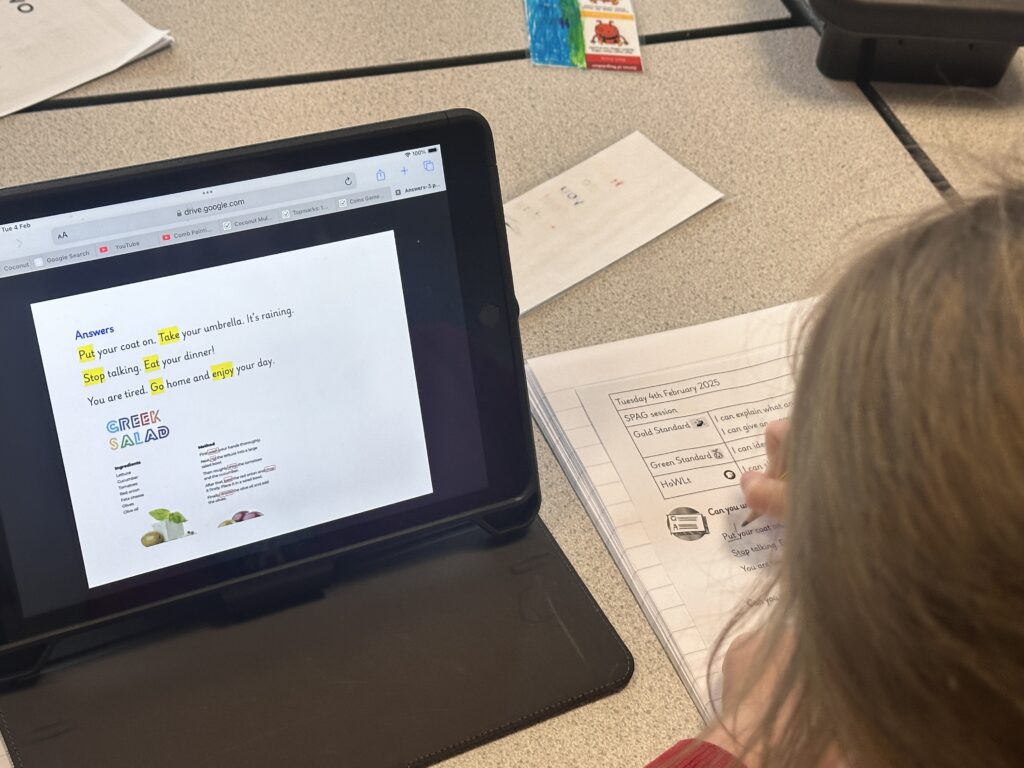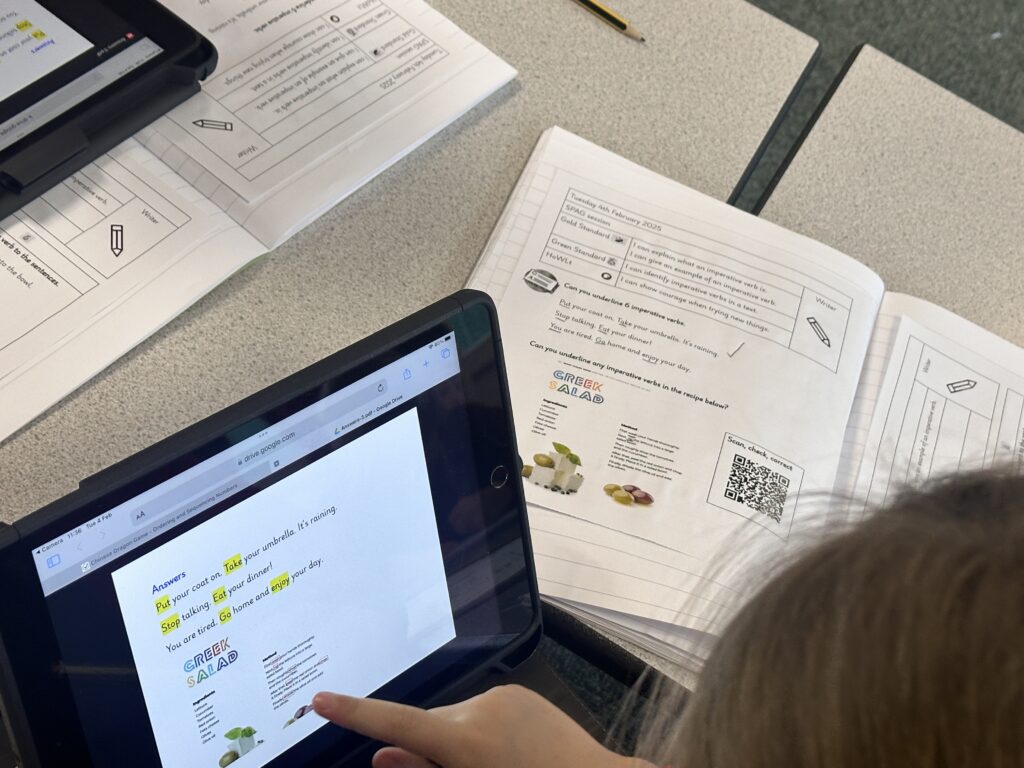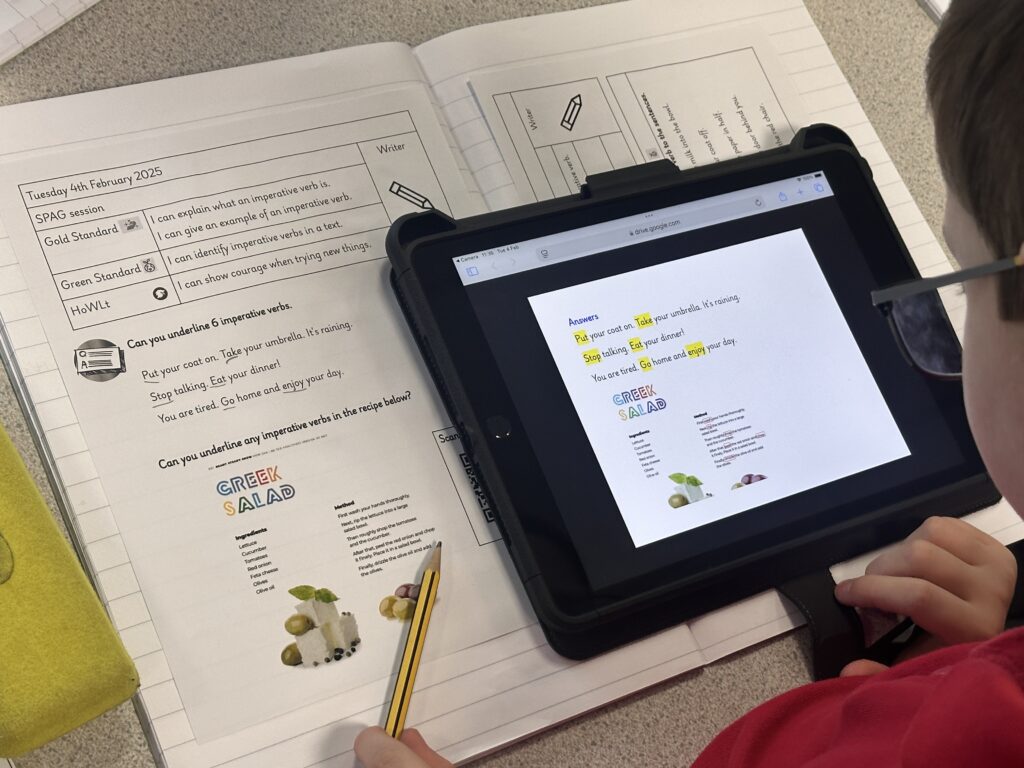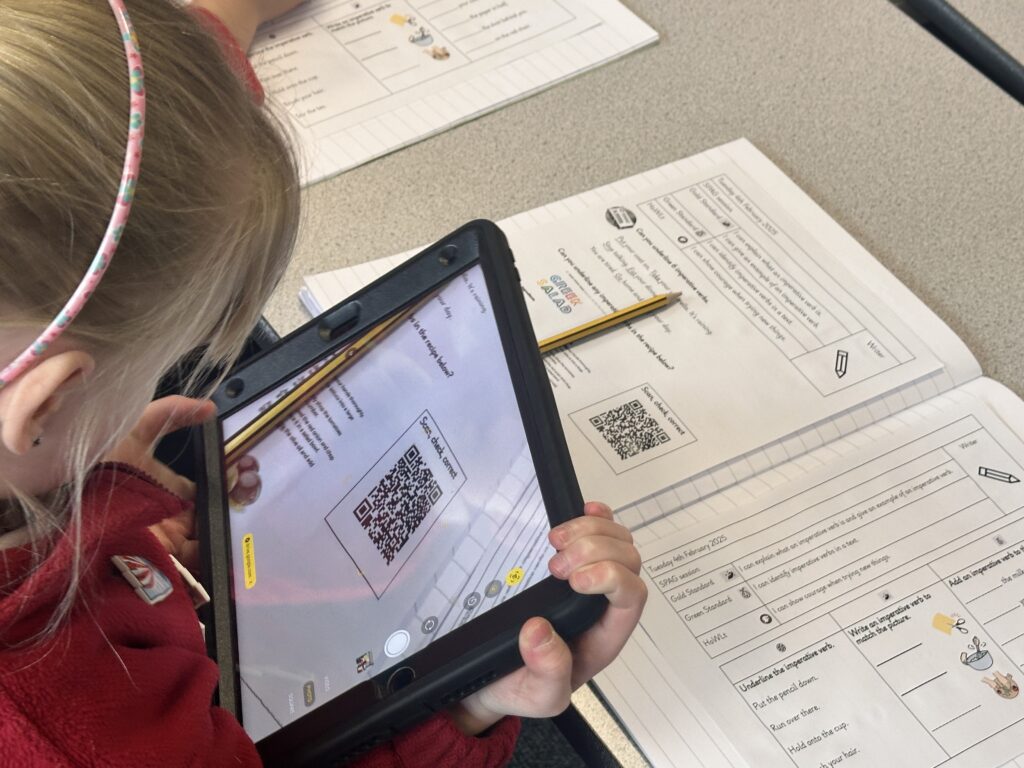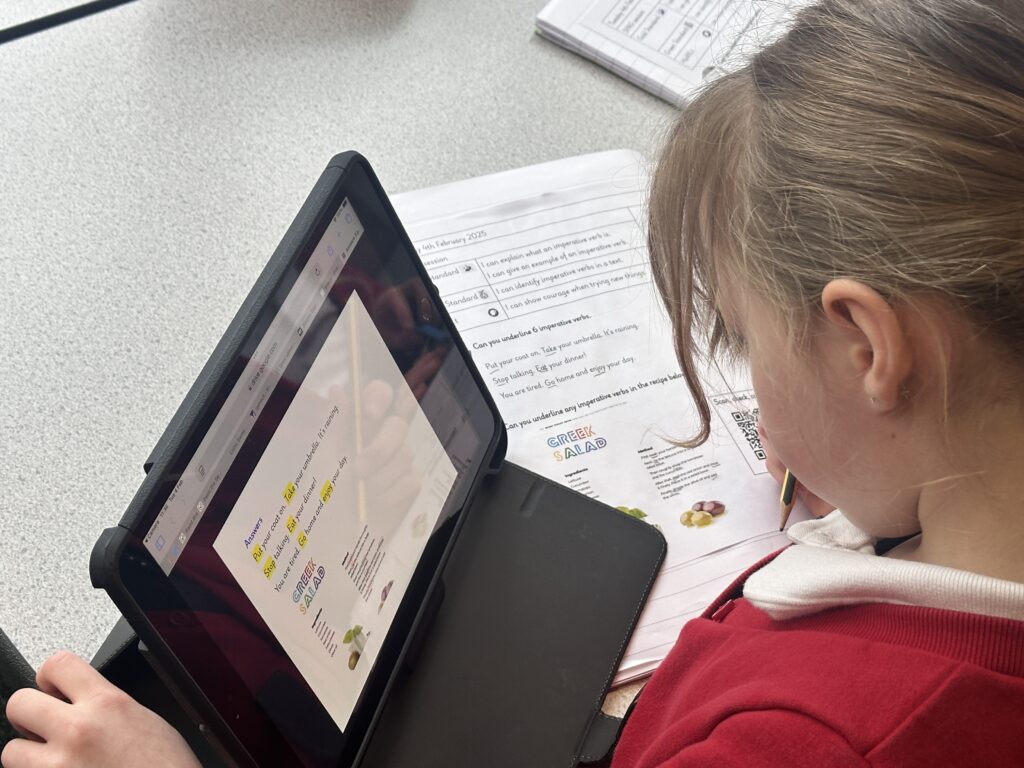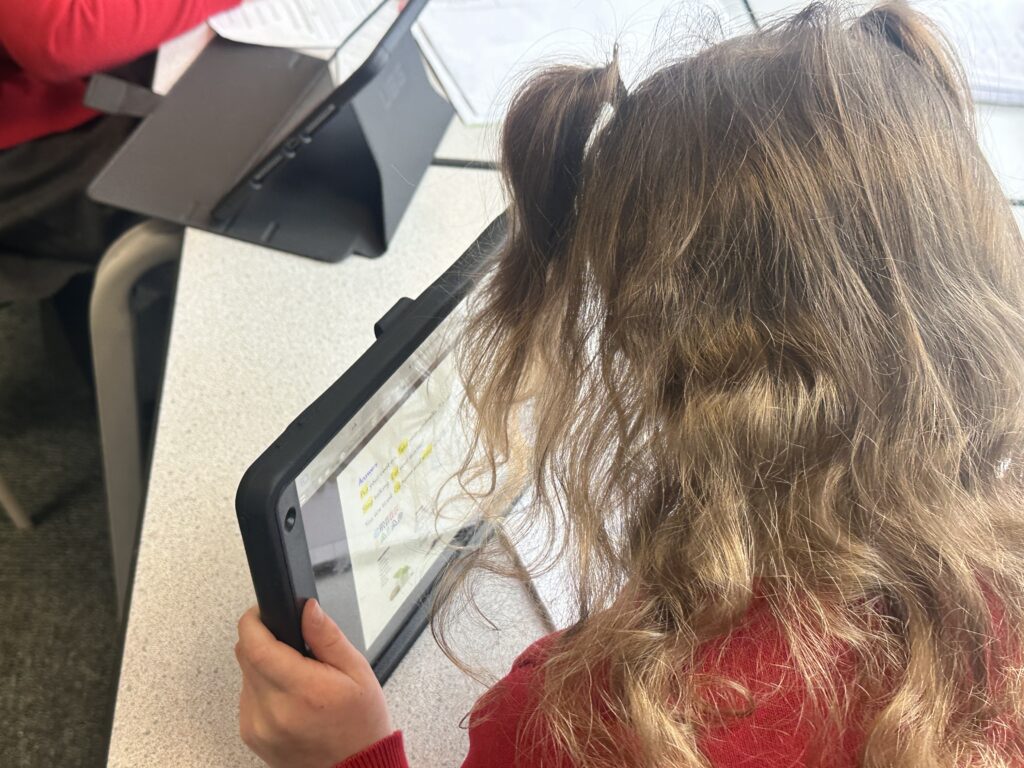Crew Staves have been busy experimenting with flowers and food colouring this week – they are looking pretty happy with their results!
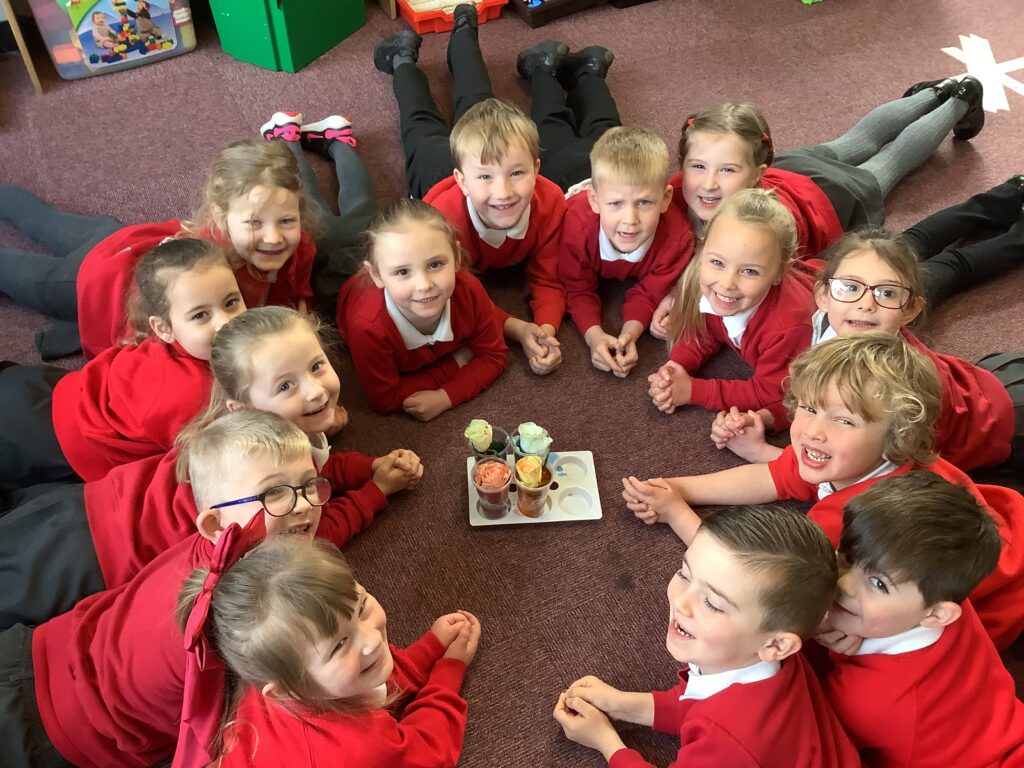
Crew Staves have been busy experimenting with flowers and food colouring this week – they are looking pretty happy with their results!

This week Nursery have been Scientists whilst investigating how humans grow and change, driven by our key text “When I Was a Baby” by Deborah Niland. We have been introduced to our new science characters, who will help us to navigate investigations. We have focused on “Predicting Pip”, helping the children to understand how to make predictions or reasonable guesses about what may happen before experimenting.
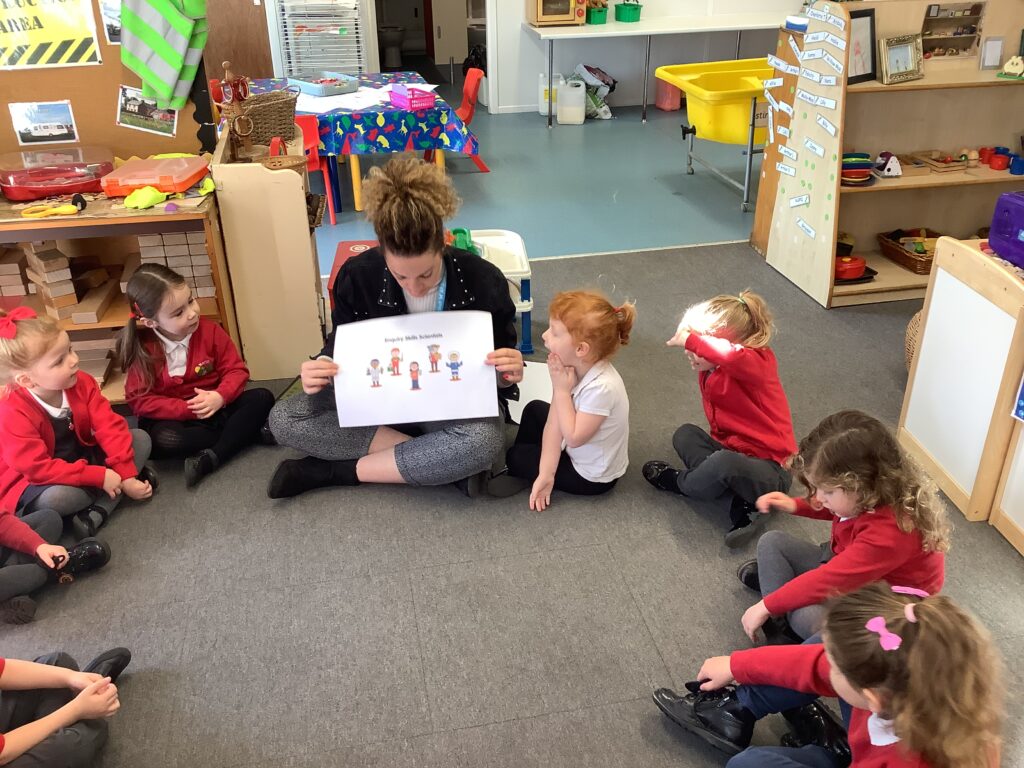
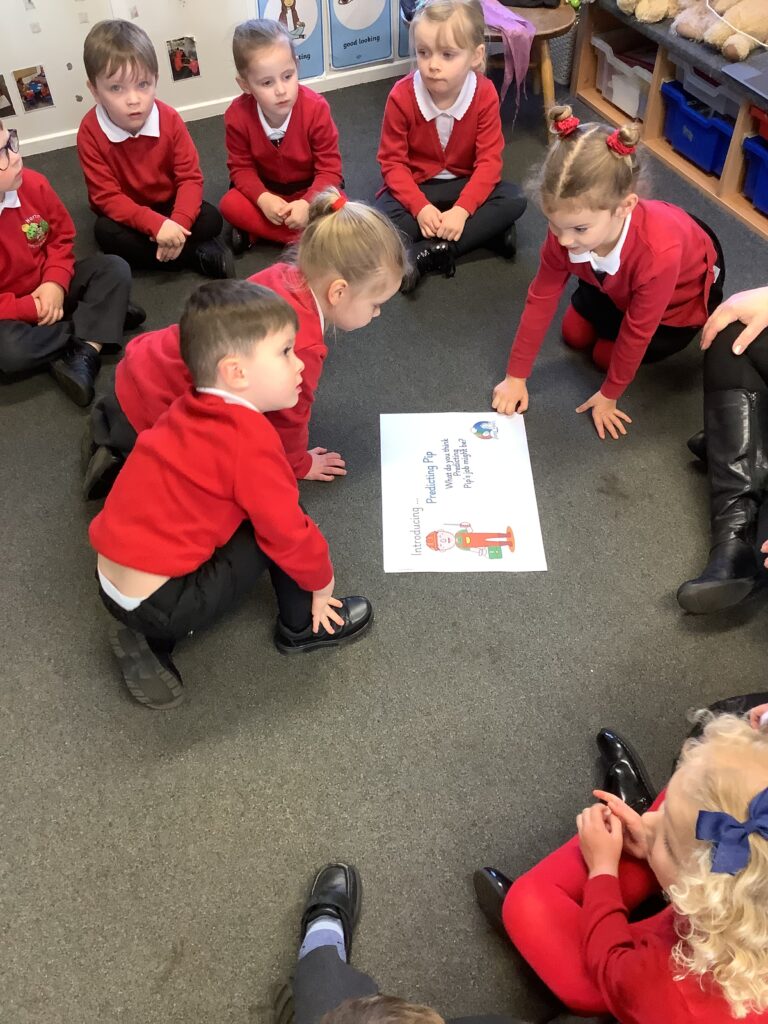
To activate our learning and hook the children into the week we played a game of “Guess the Baby?” Looking at photos of the children as babies and guessing which baby was each child. We then sorted activities or tasks that babies Can or Can’t do, explaining why – thinking about how undeveloped new babies are.
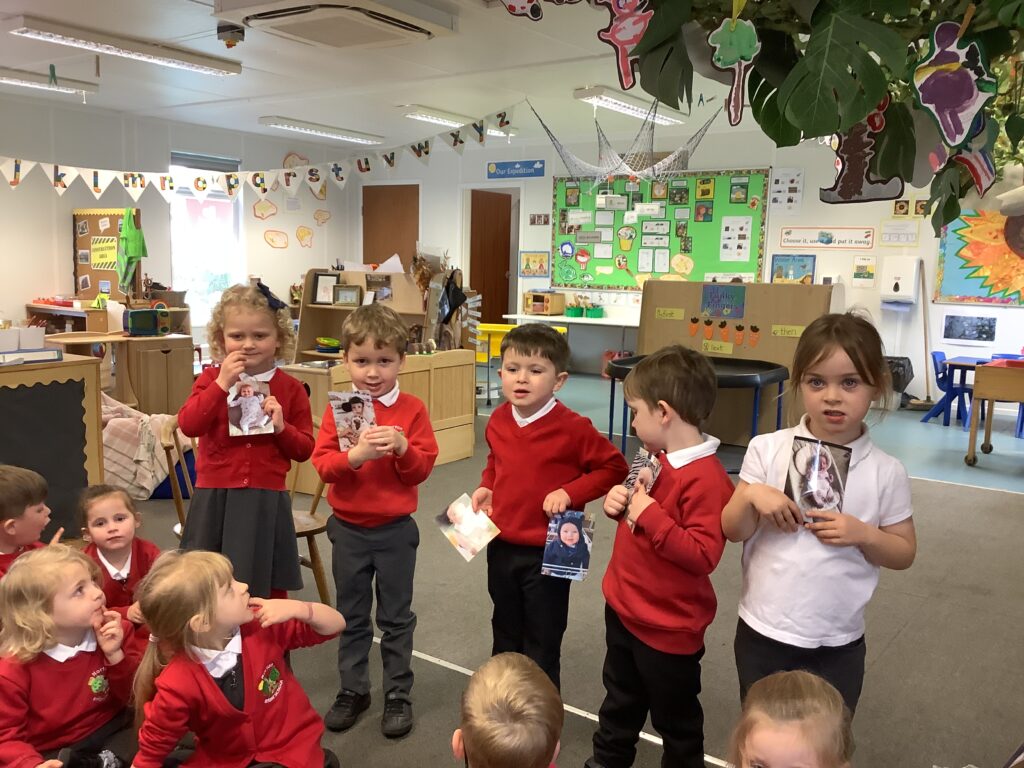
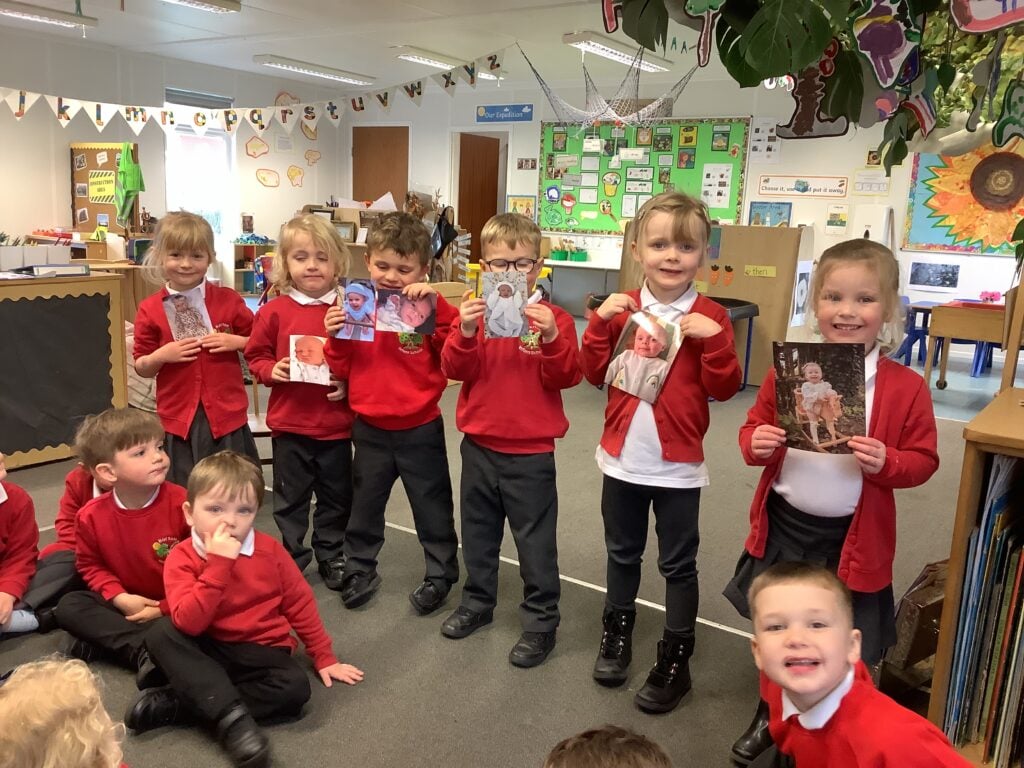
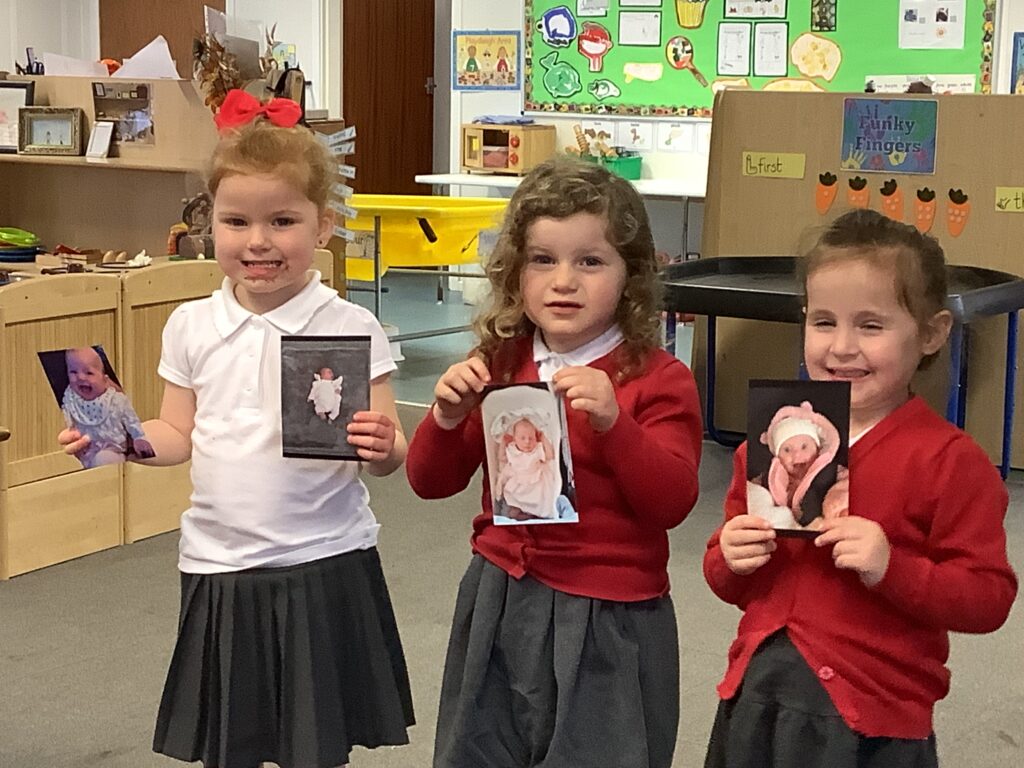
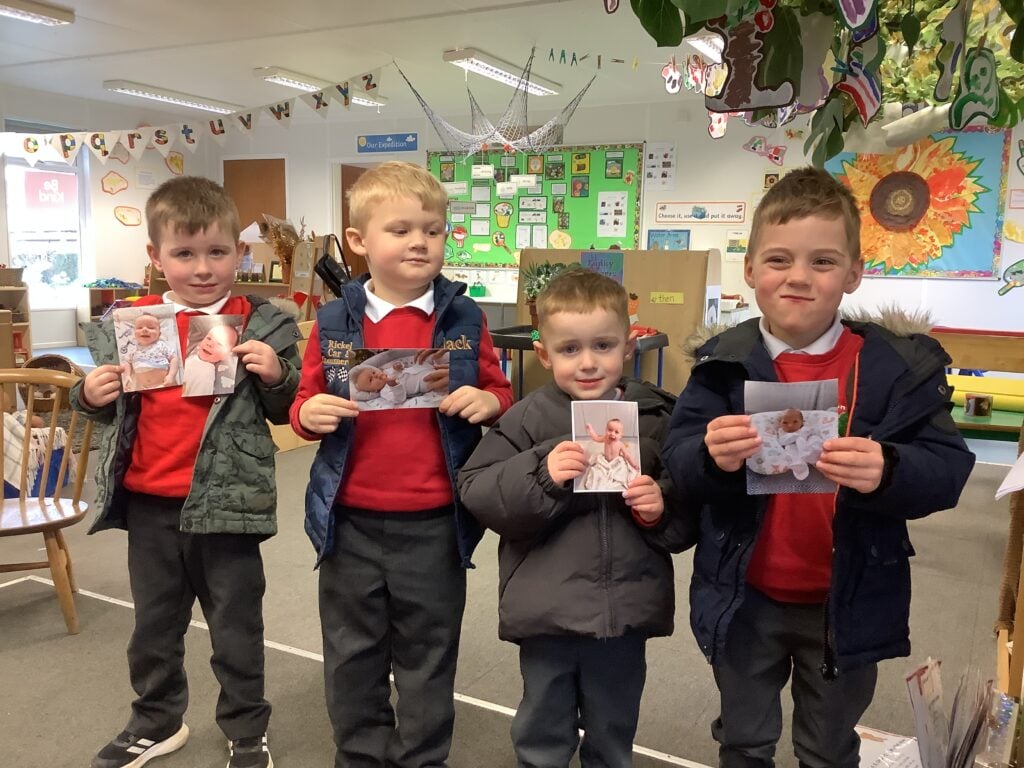
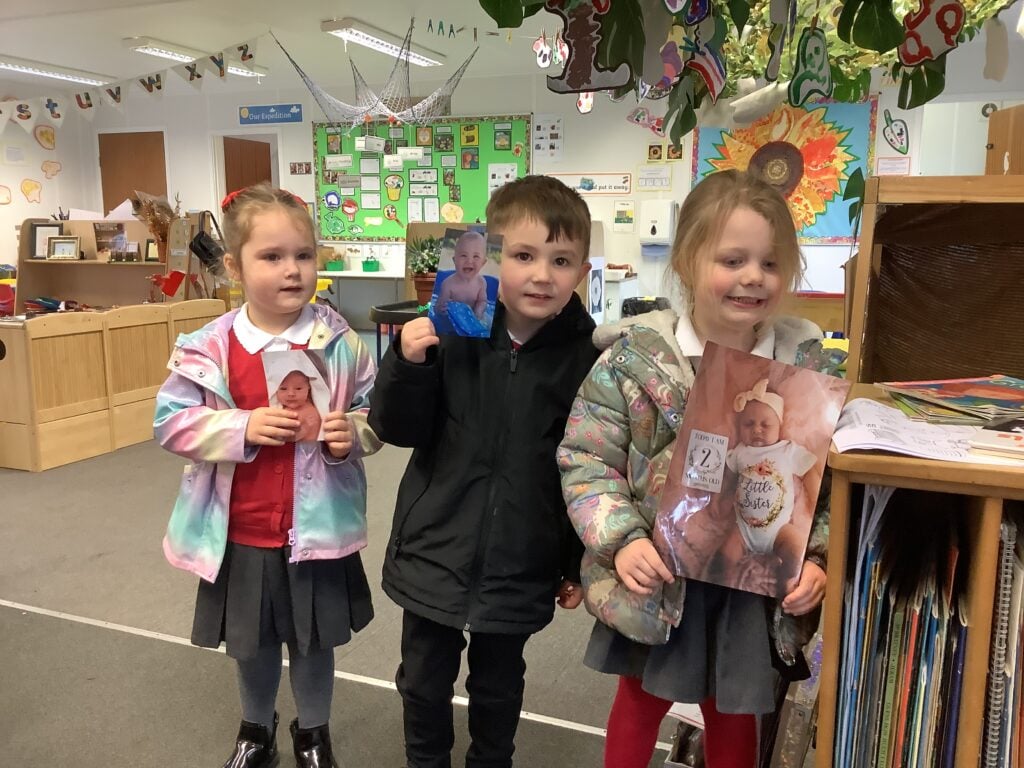
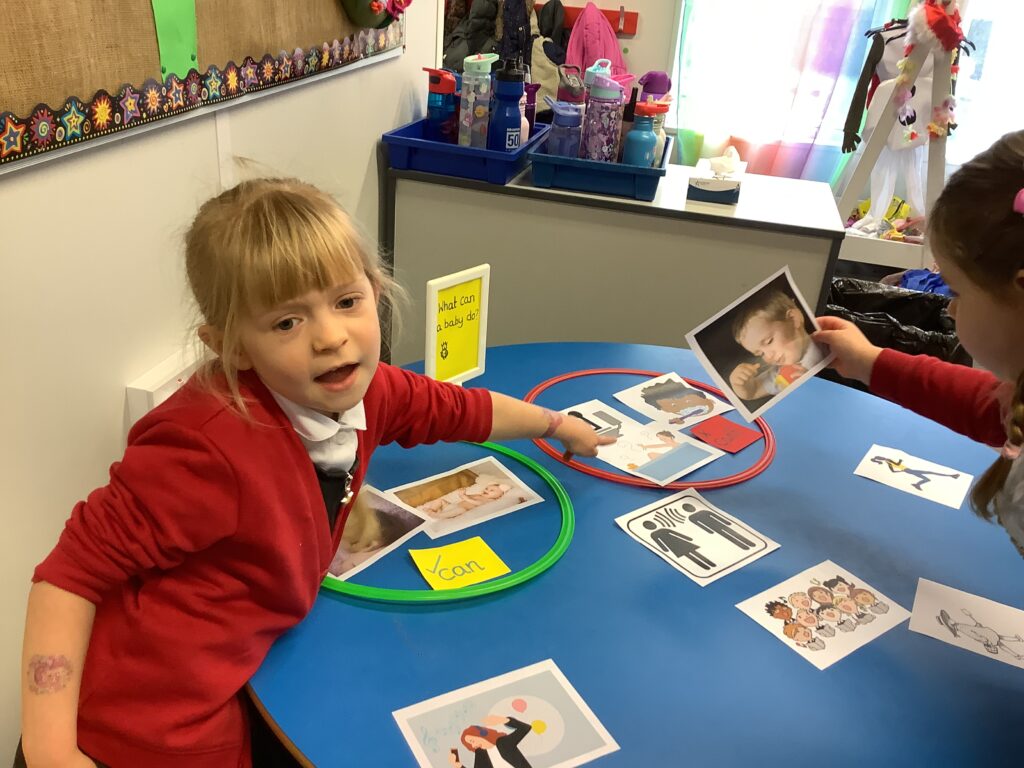
Our first practical experiment this week was “Growing Gummy Bears”. This linked to what humans need to grow. We investigated which of four different liquids; salt water, sugar water, white vinegar or plain water were the best conditions to grow the bear. The children made predictions of what they thought may happen to the bears as we dropped them into the ramekins.
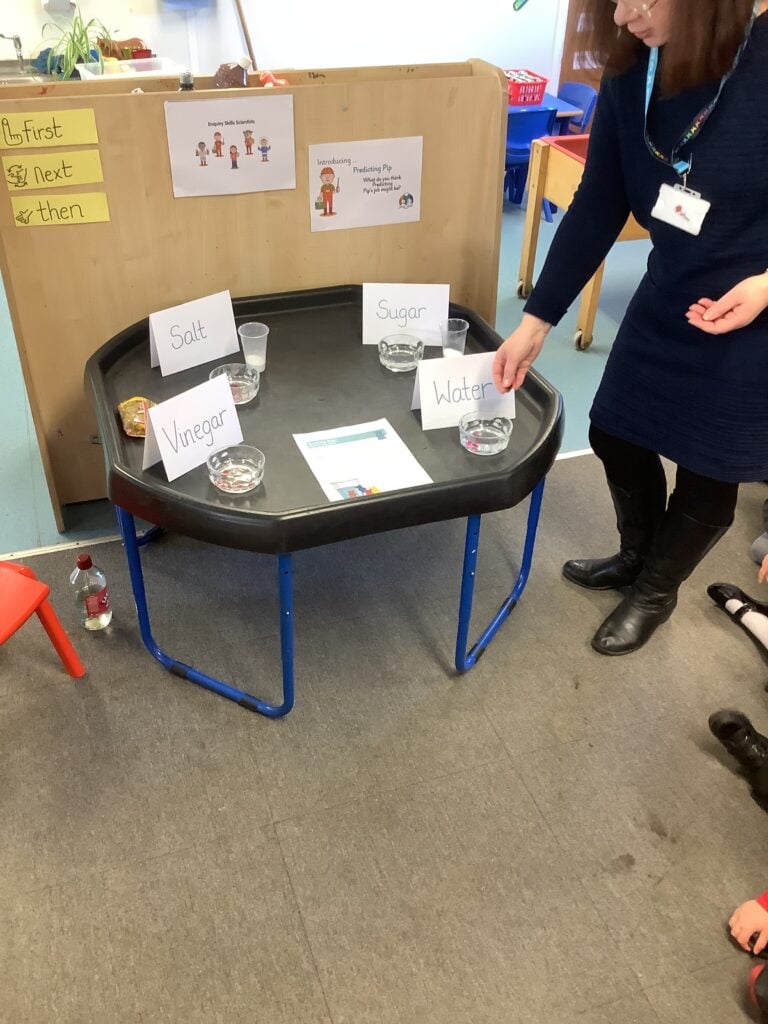
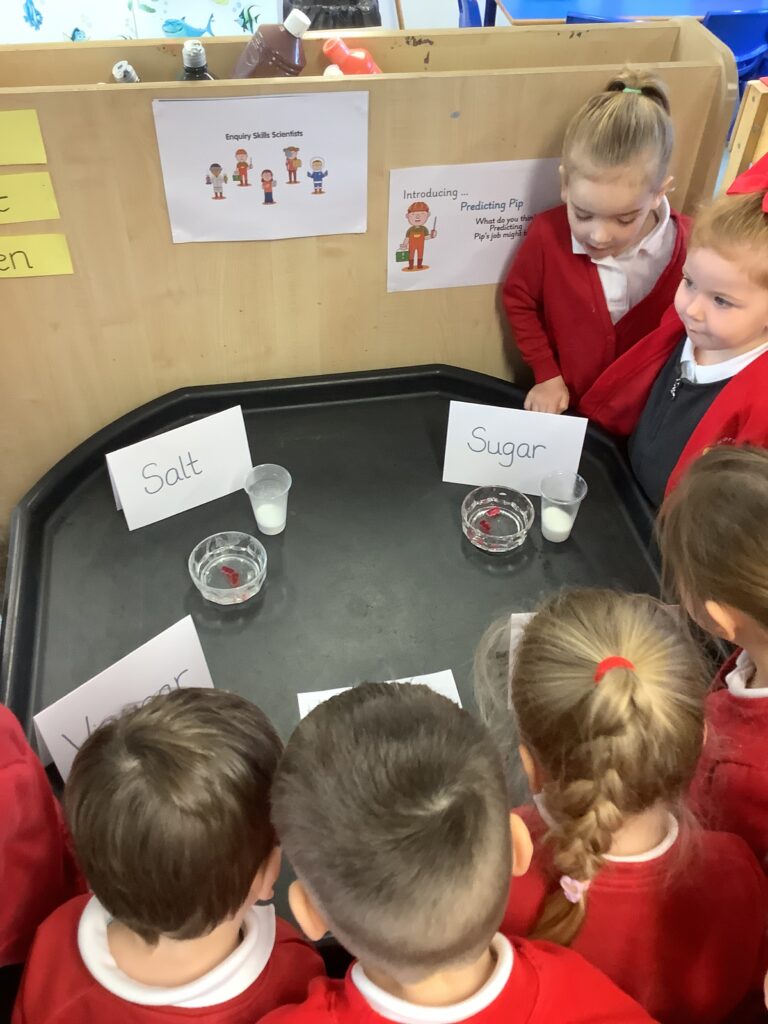
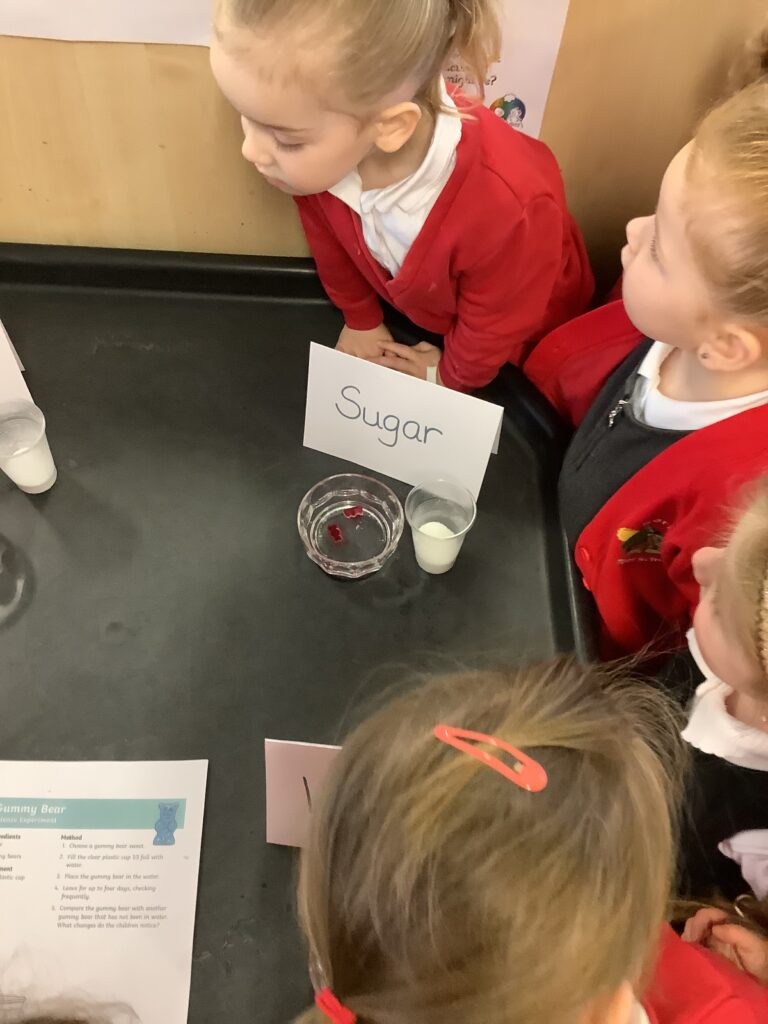

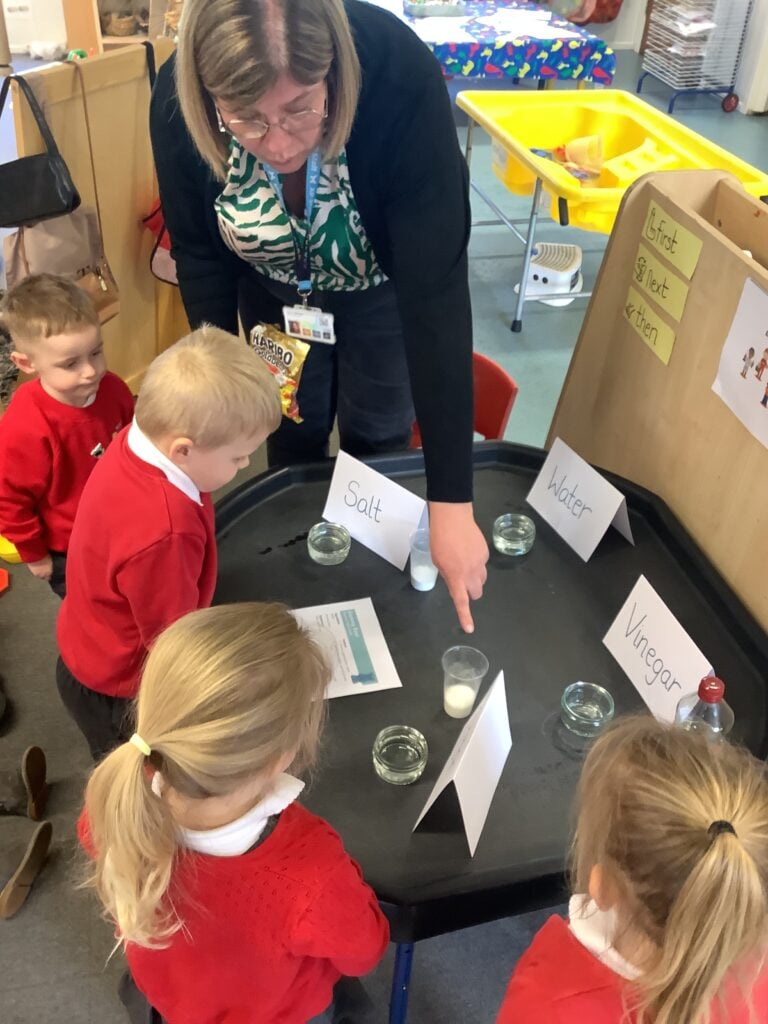
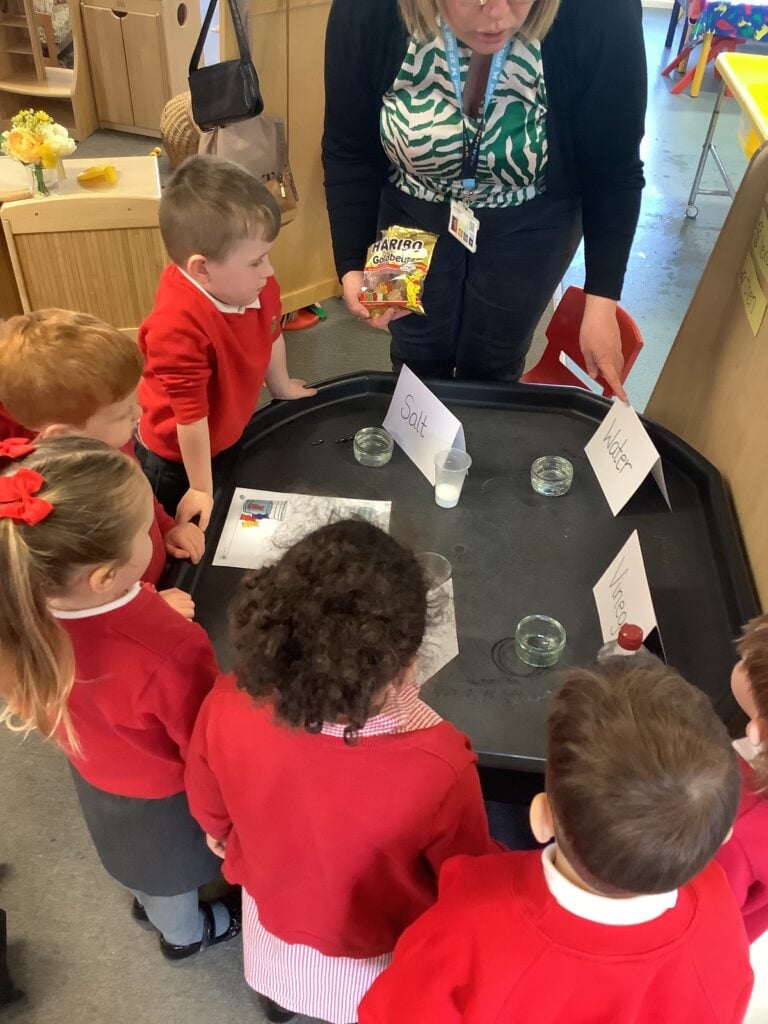
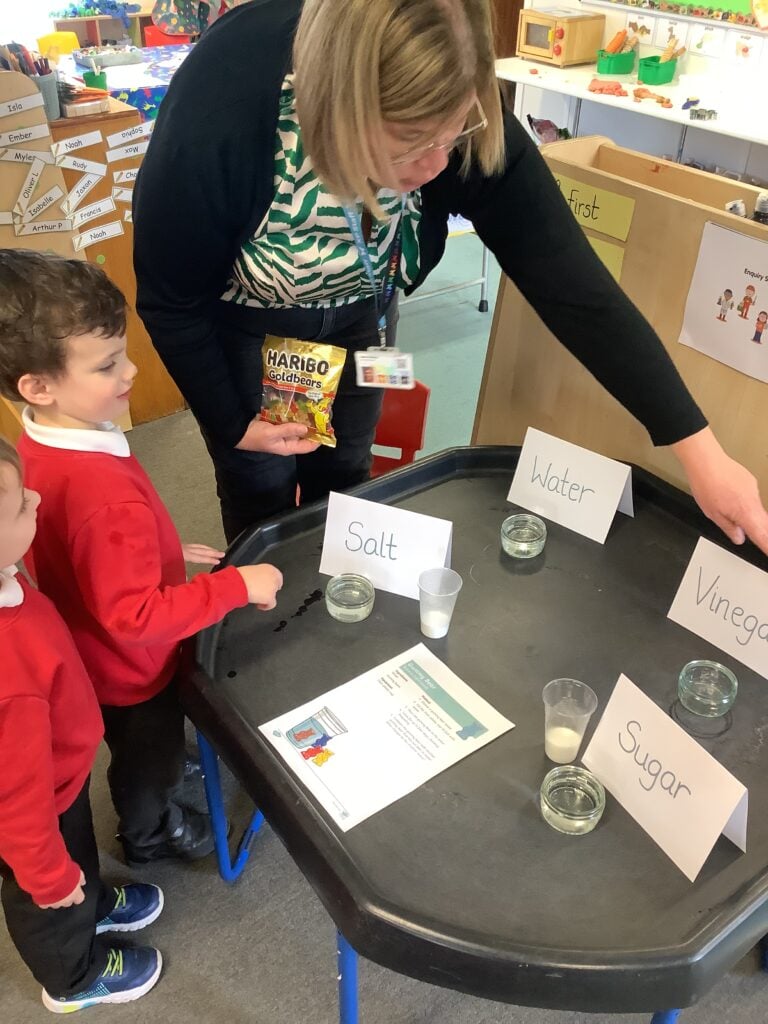
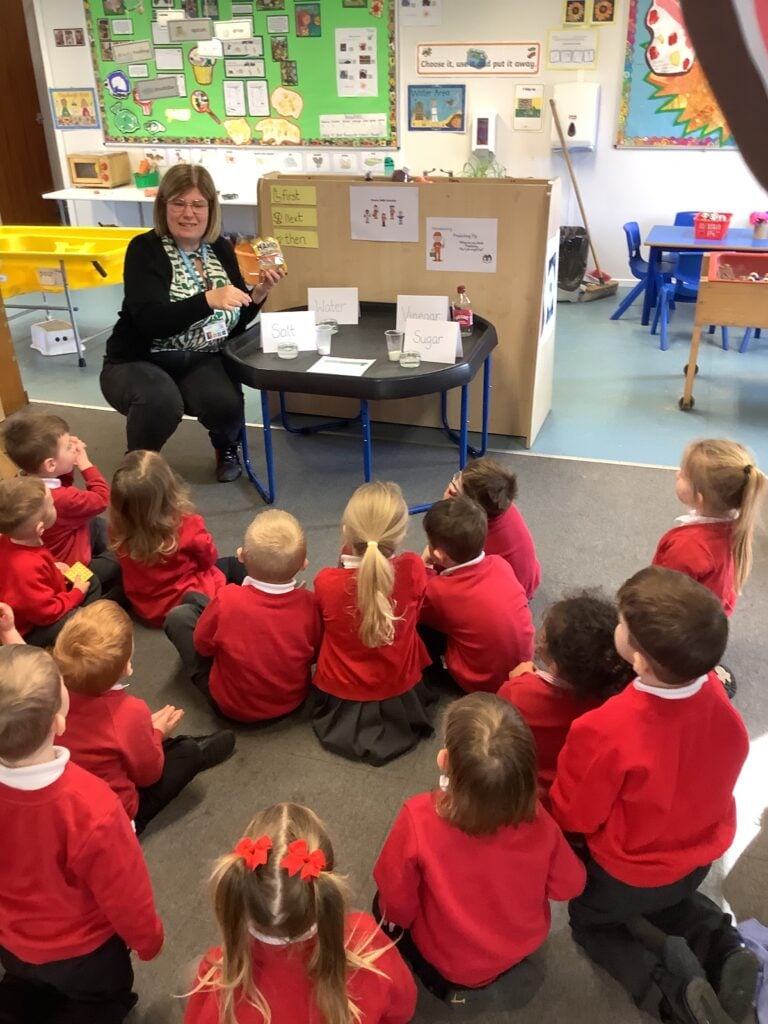
We then observed how the bears changed and grew in the different solutions over 24 hours. The results revealed that the bear in the salt water turned white from absorbing the salt particles and stayed very small, the bear in the vinegar began to melt and fall to pieces (one of the children explained this process as “dissolved”), the bear in the sugar water grew bigger but was very sticky and slimy because of all of the sugar in the water. Finally the bear in the regular water grew the most and was perfectly in one piece, showing that clean water was essential to growing.
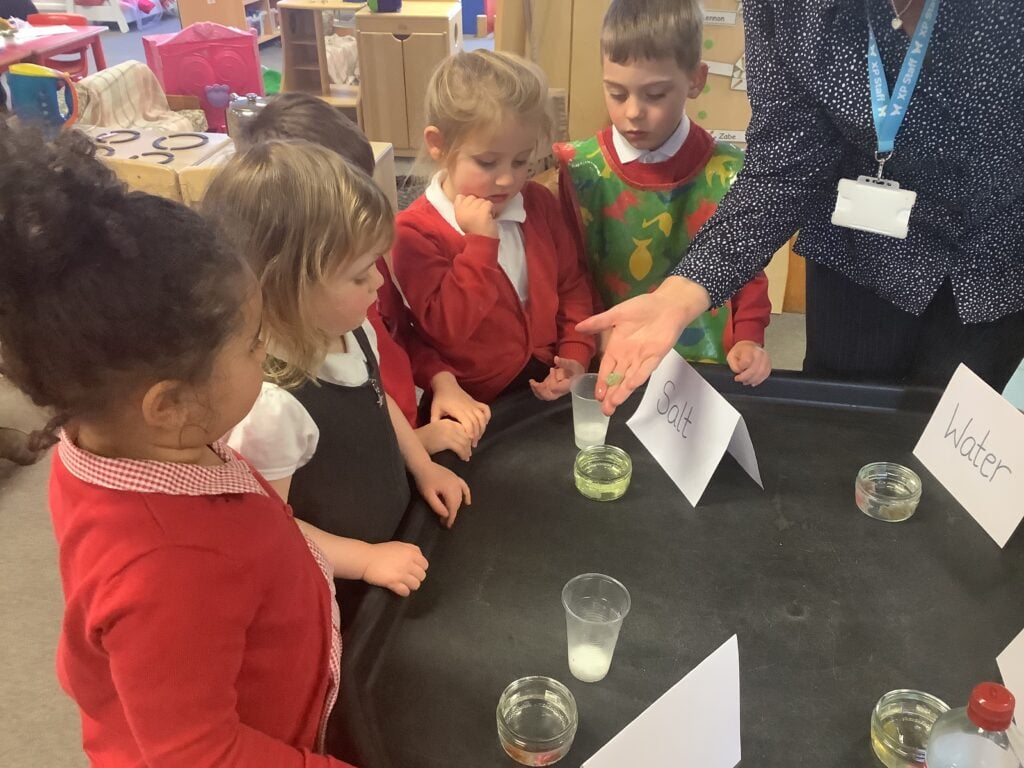
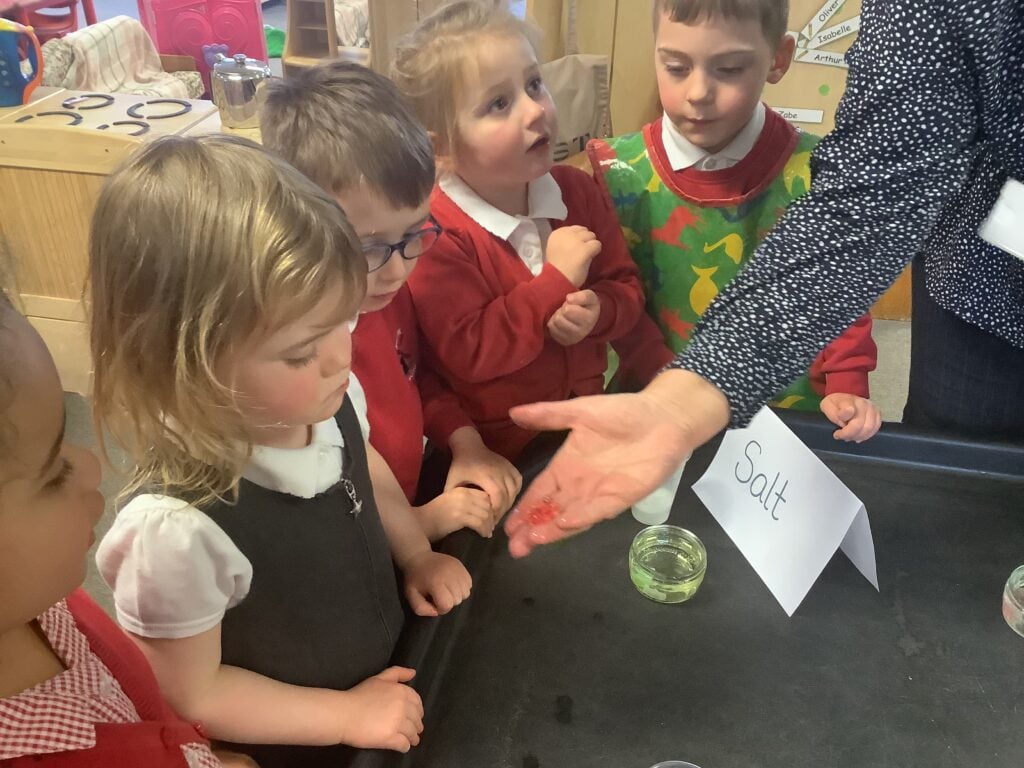
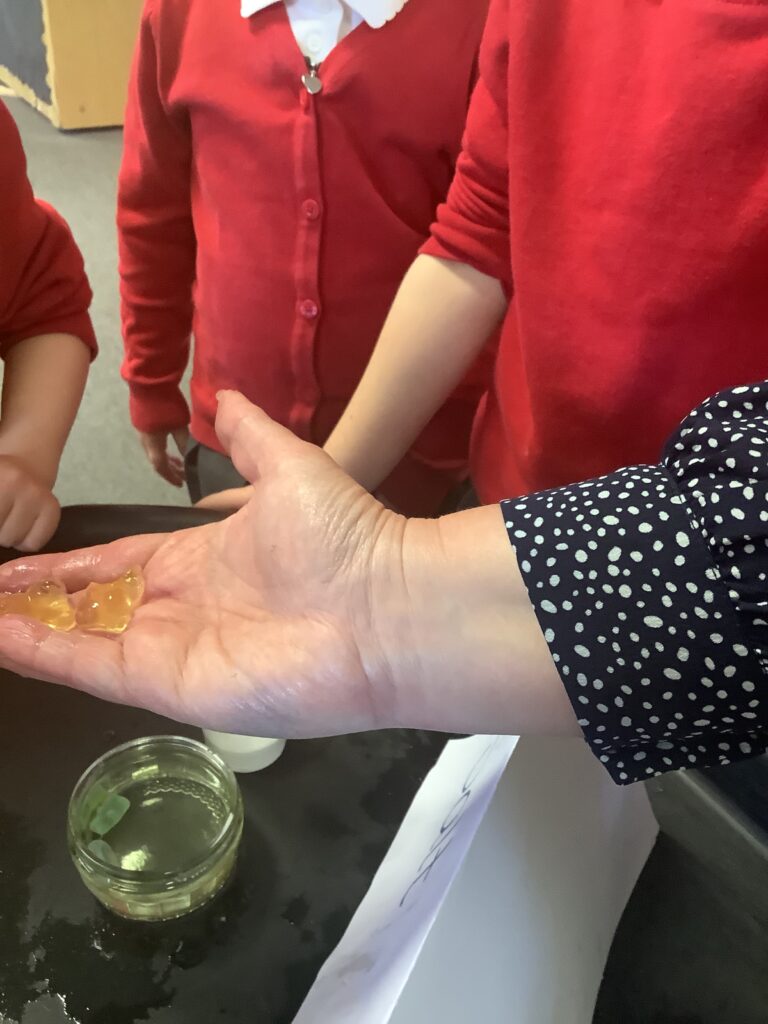
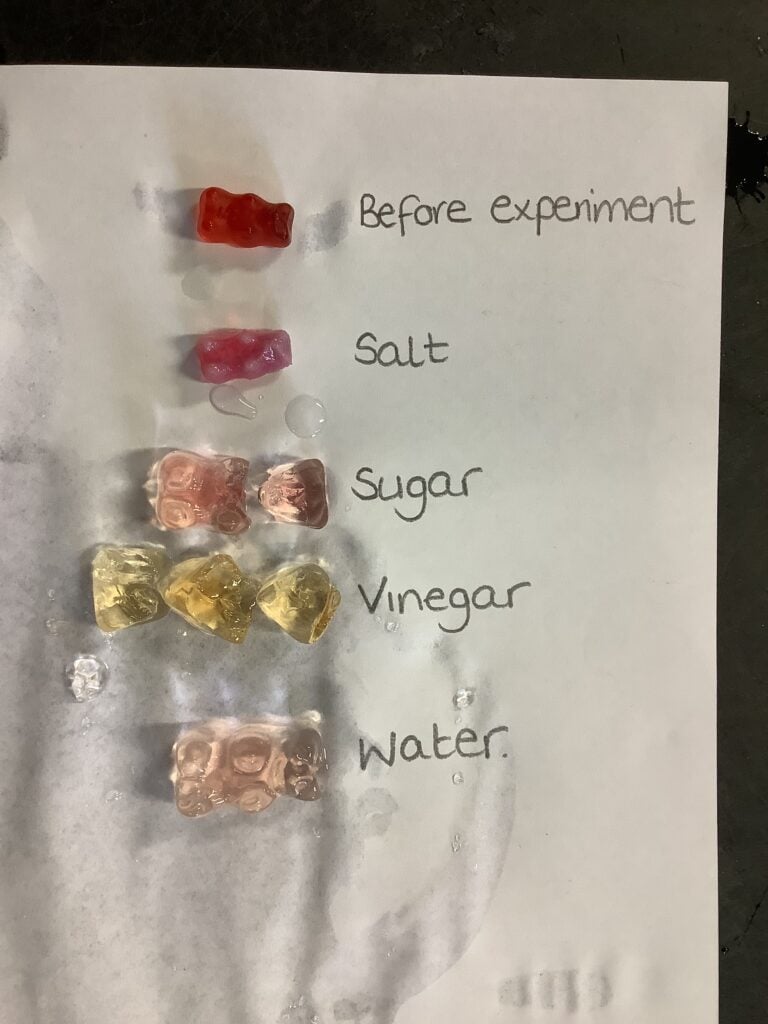
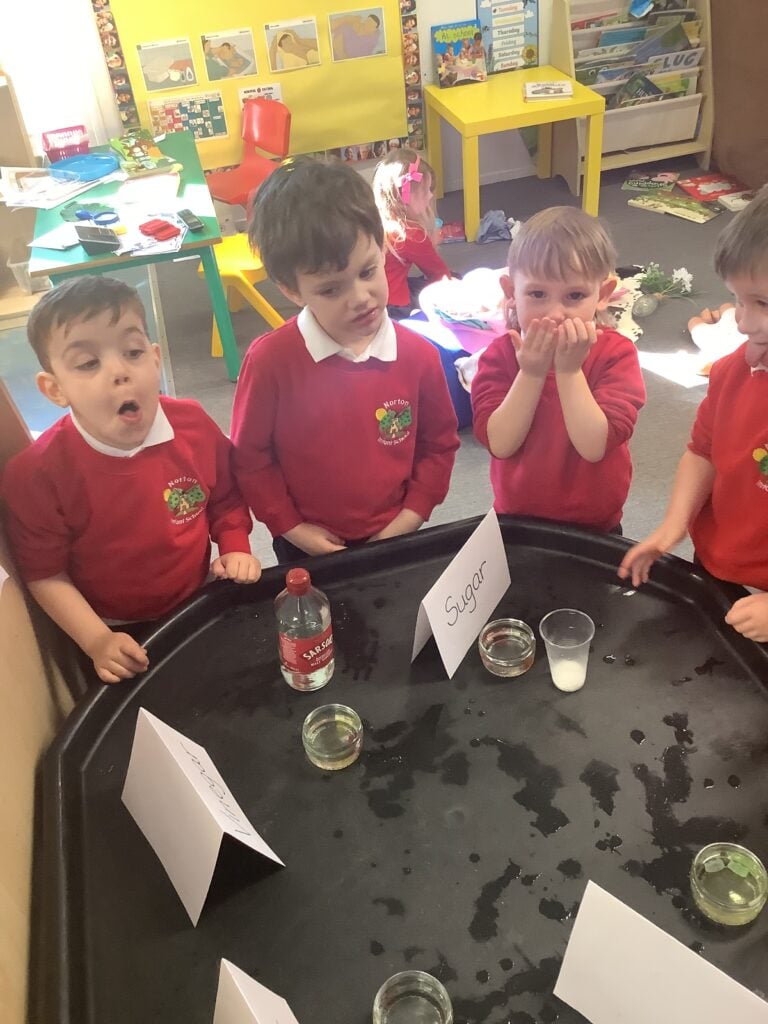
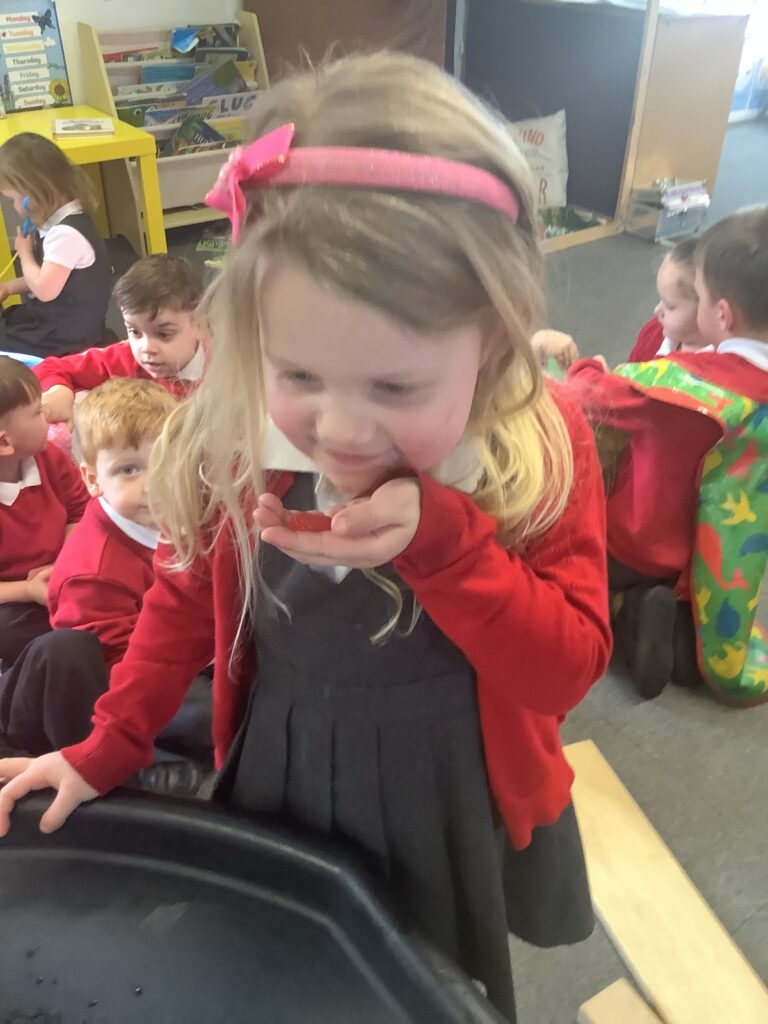
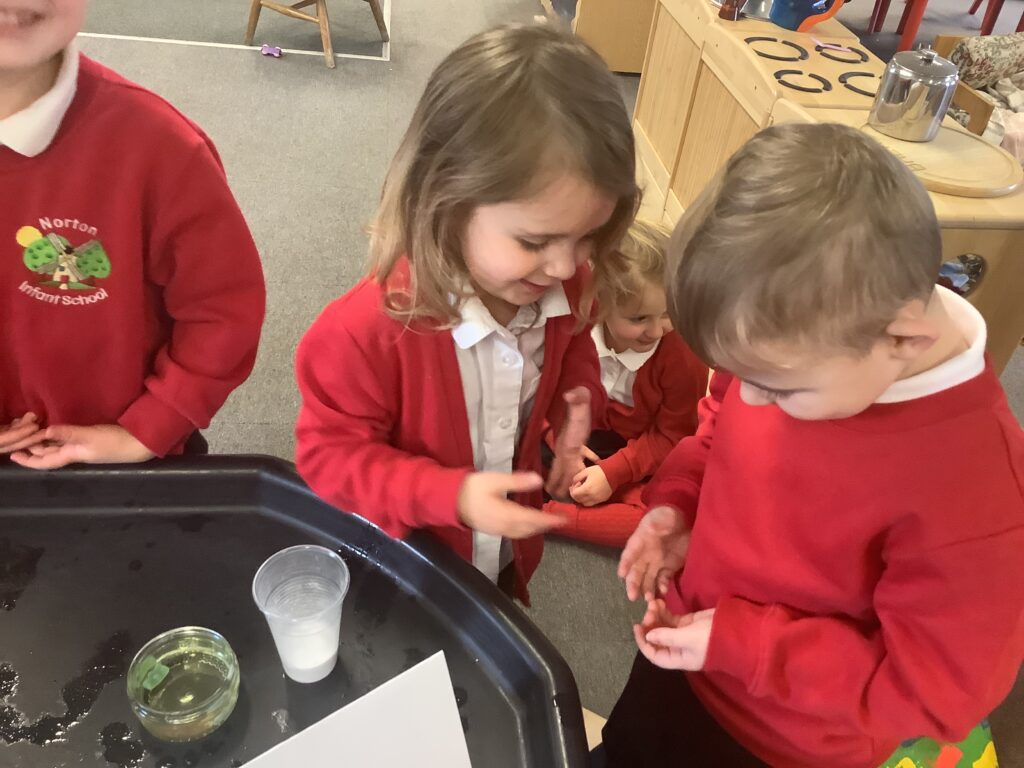
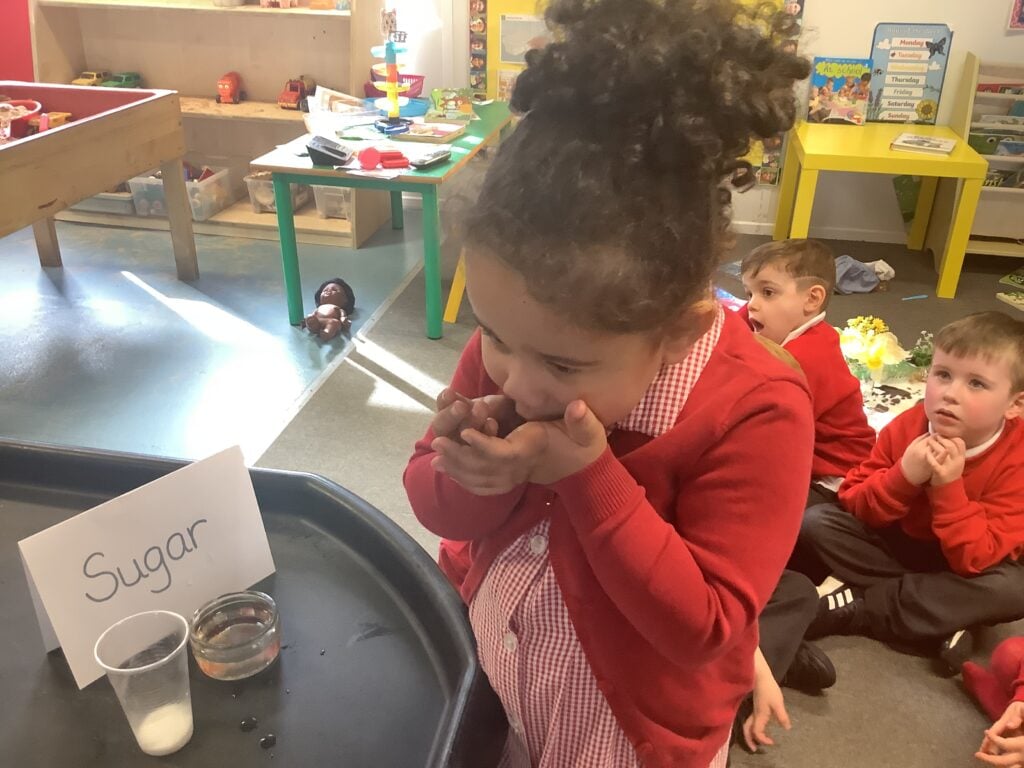
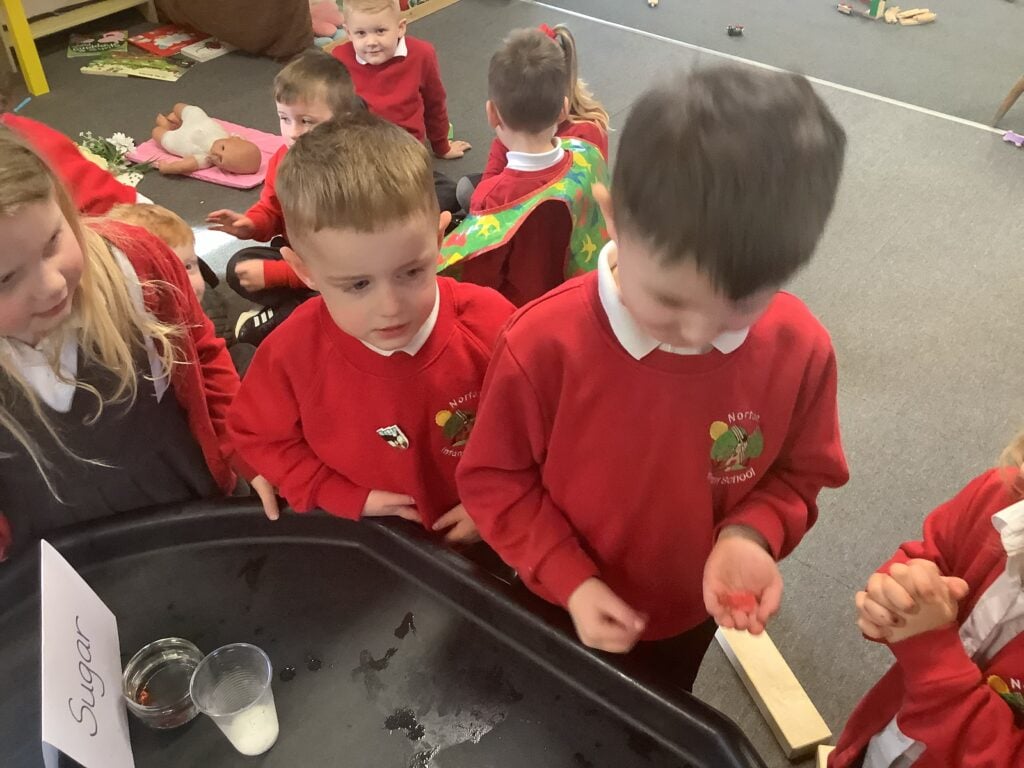
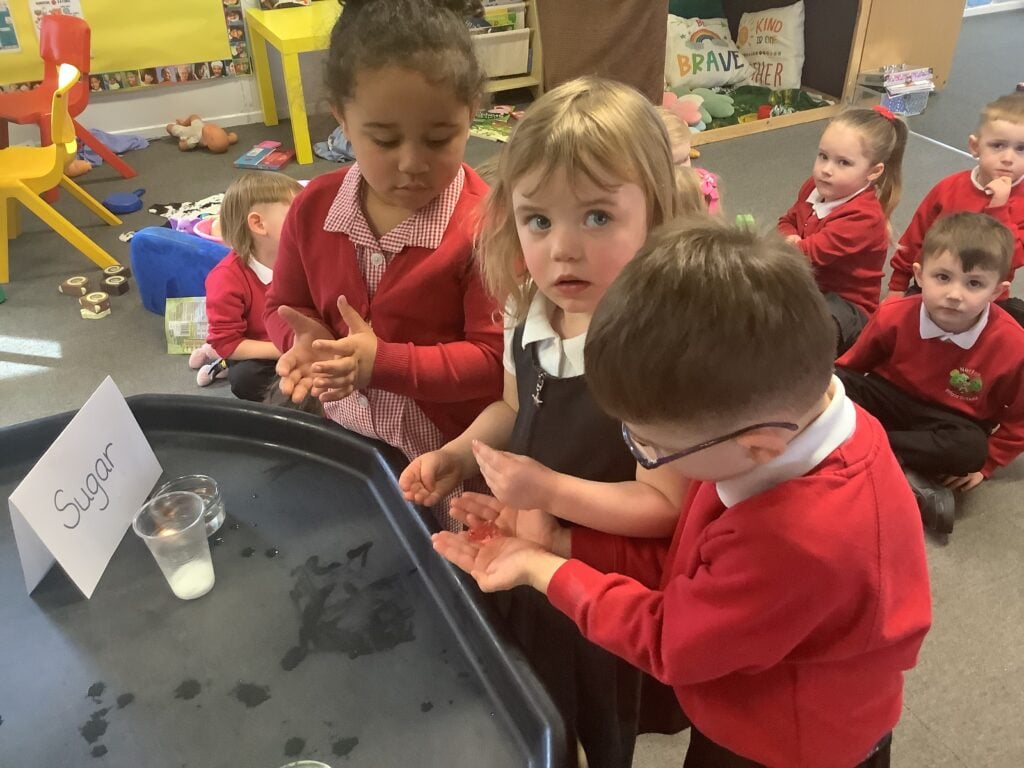
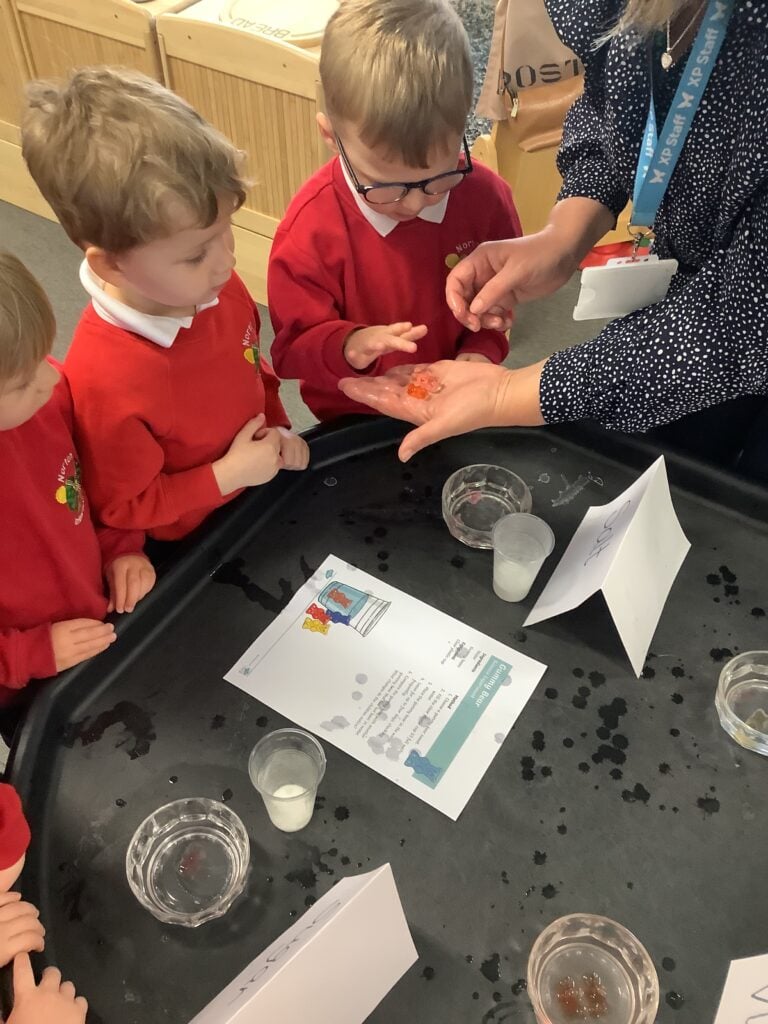
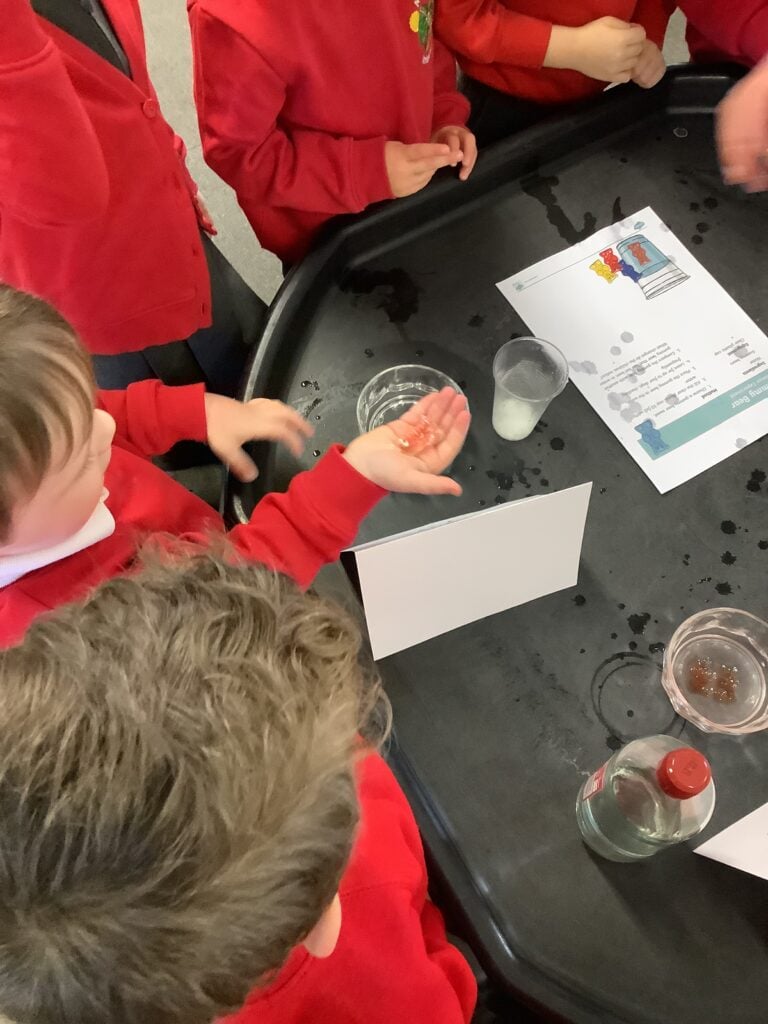
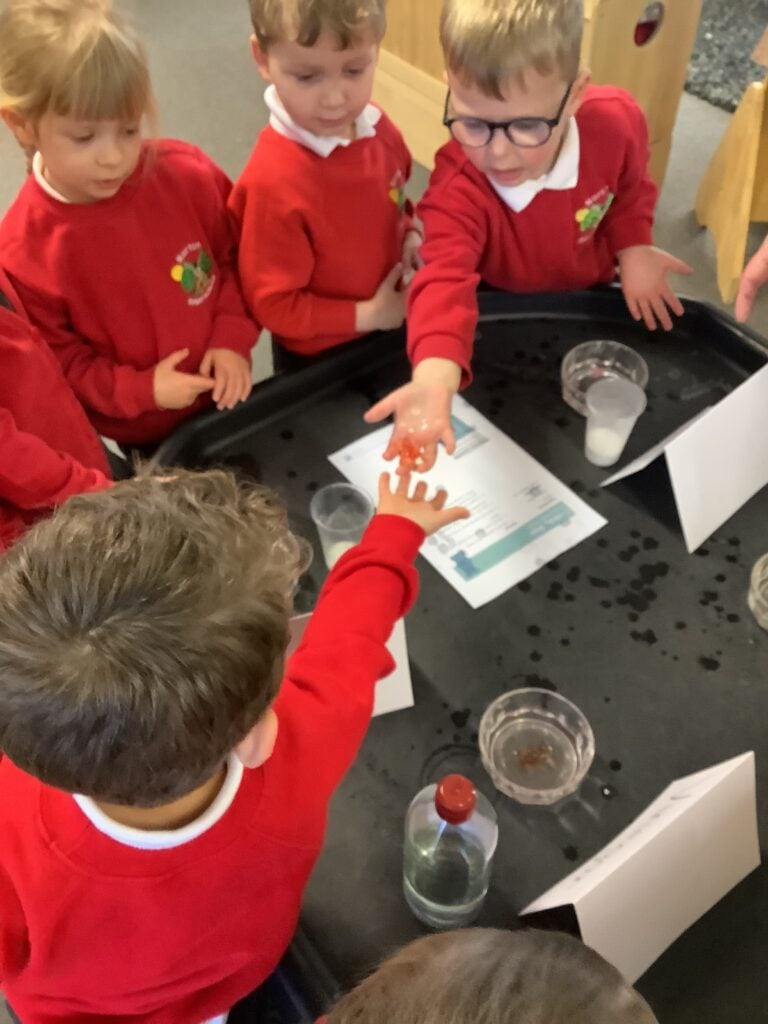
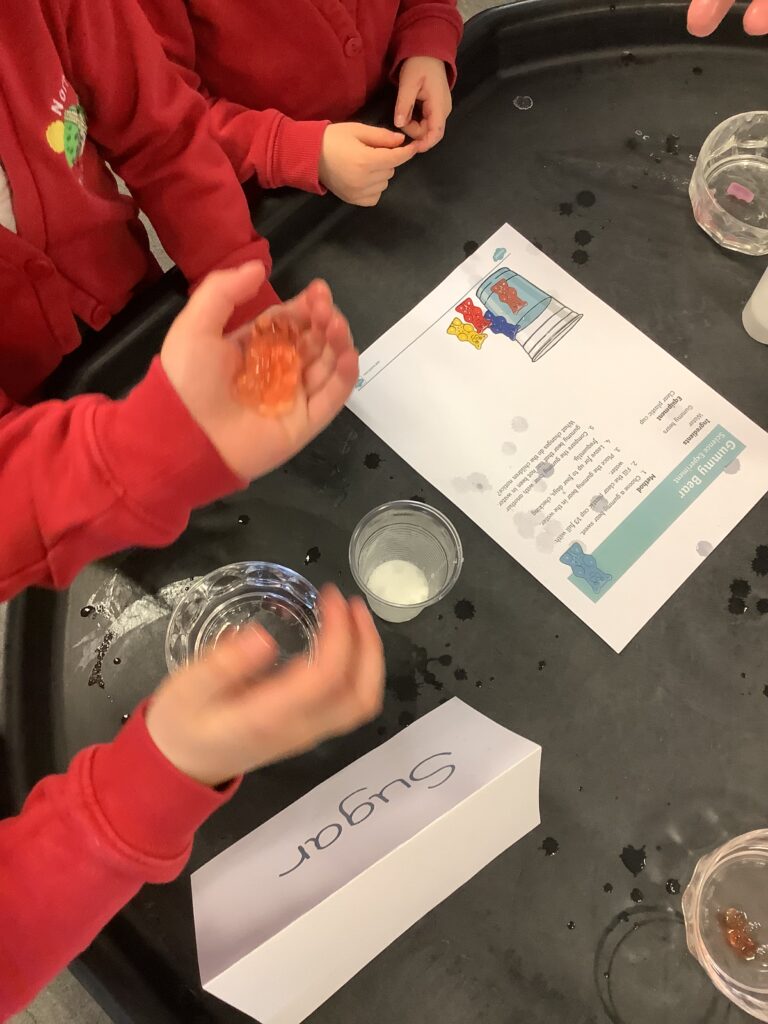
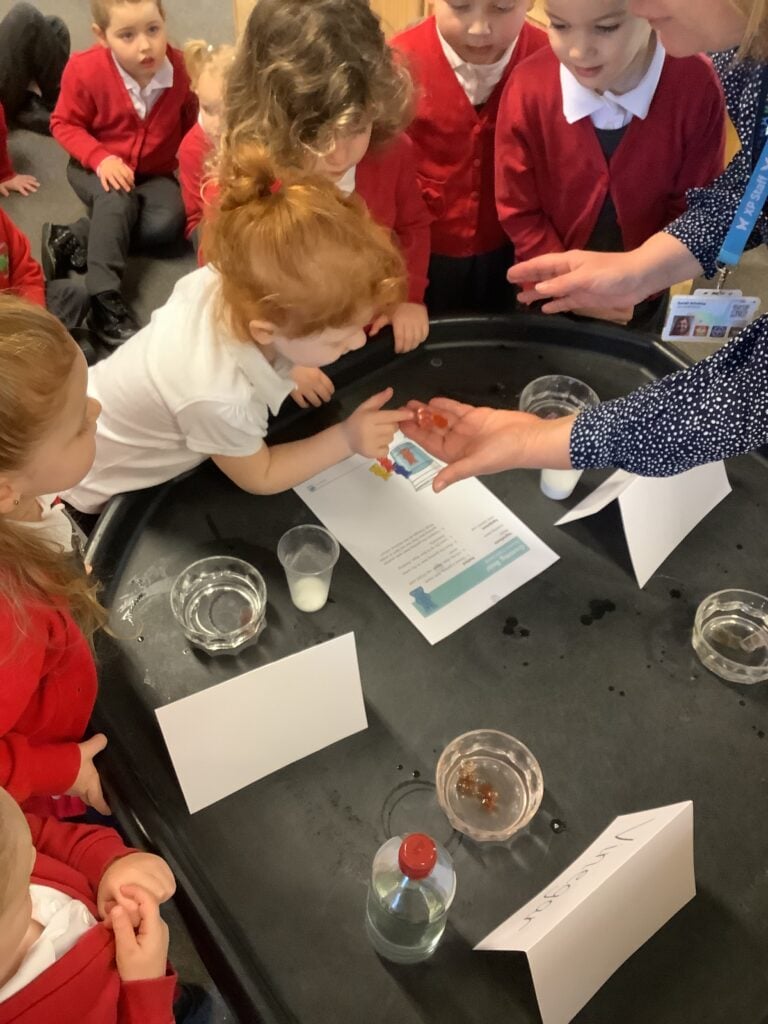
Our second experiment linked to what we need to help us grow. The children had previously looked at what we needed to grow during our Tranquil Tuesday Crew, using picture prompts to help scaffold their understanding.
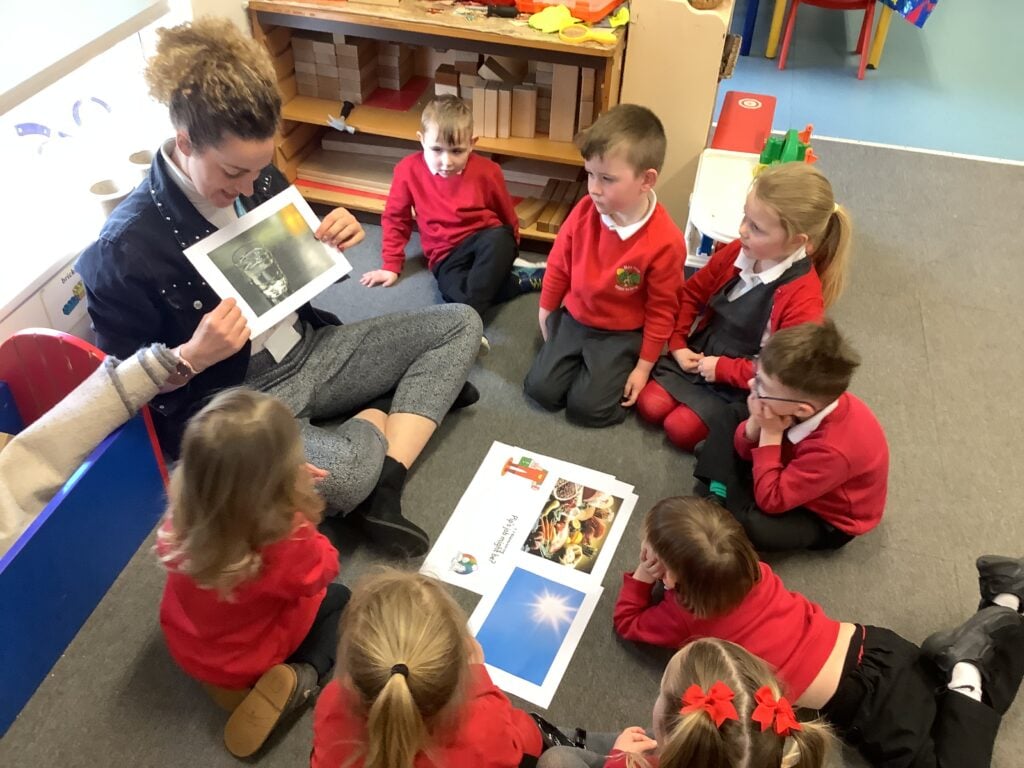
Then today Nursery observed how humans need oxygen to breathe, grow and survive. The children made predictions about the experiment from a diagram shown during our Wise Wednesday Crew. They thought about what would happen to the candle if a jar was placed over the top? Some of our answers included; “The glass will break”, “It will burn”, “It will go off fire”, “It will make a big light” and “It will run out of breath”.
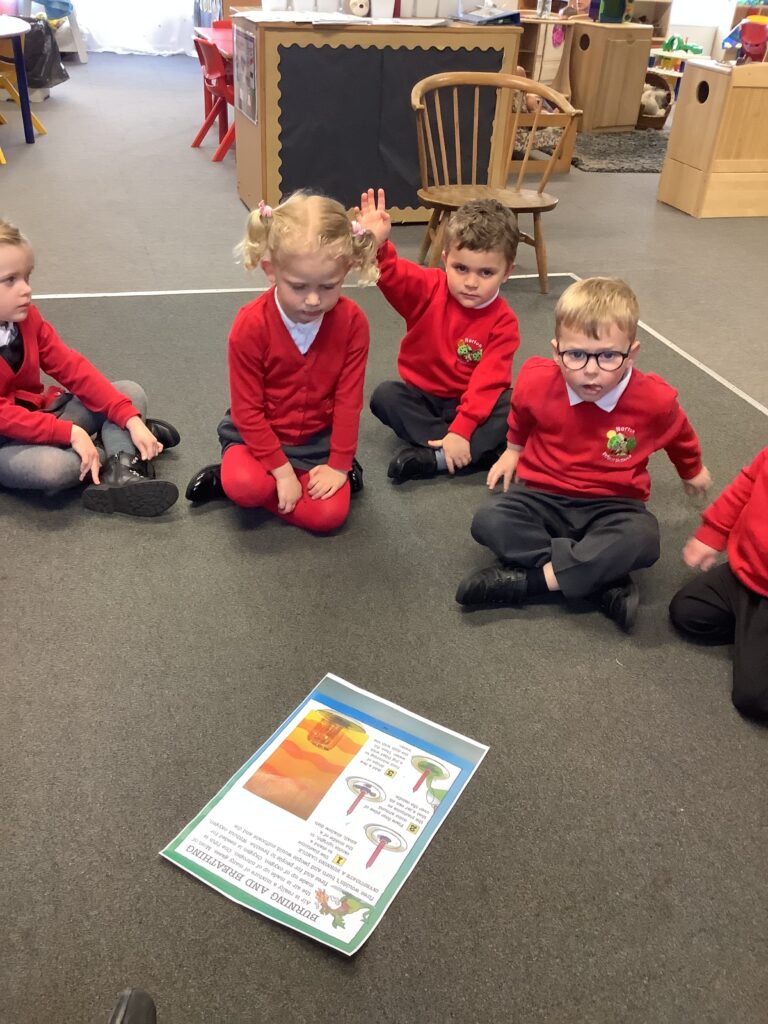
They then observed as I modelled the experiment, fixing a candle into play dough, placing three sets of coins around a bowl and filling the base of the bowl with coloured water. Then I lit the candle and placed a jar over the top of the flame, resting on the coins. The children observed as the oxygen was used up in the jar and the flame was suffocated, causing the water to rise up the glass – taking the place of the oxygen. They watched in awe as the flame went out and listened carefully to the sound of the vacuum made by the water. One of the children likened the experiment to “When to go to bed and pull the covers over your head, if you stay like that, you could suffocate because there’s no air.”
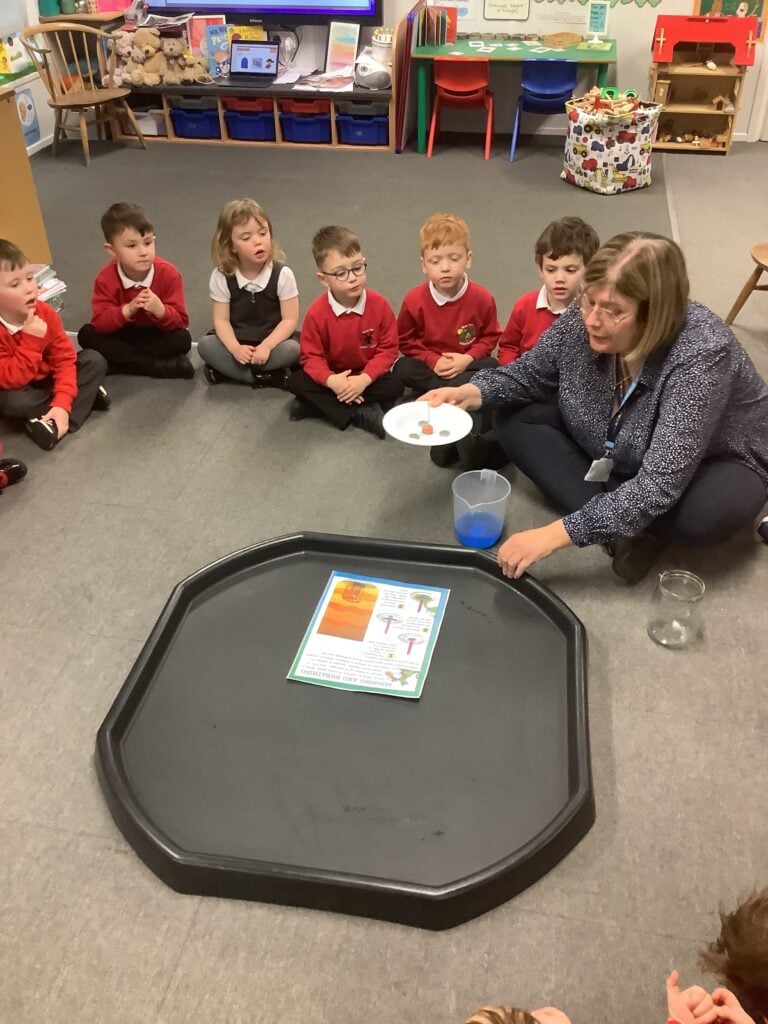
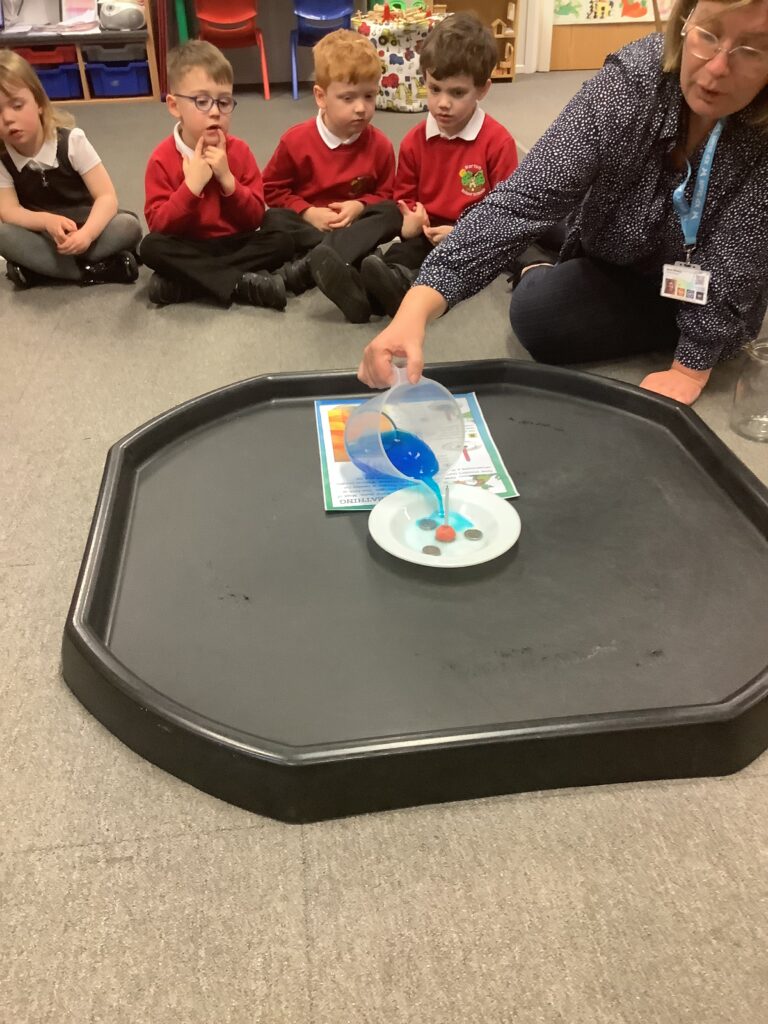
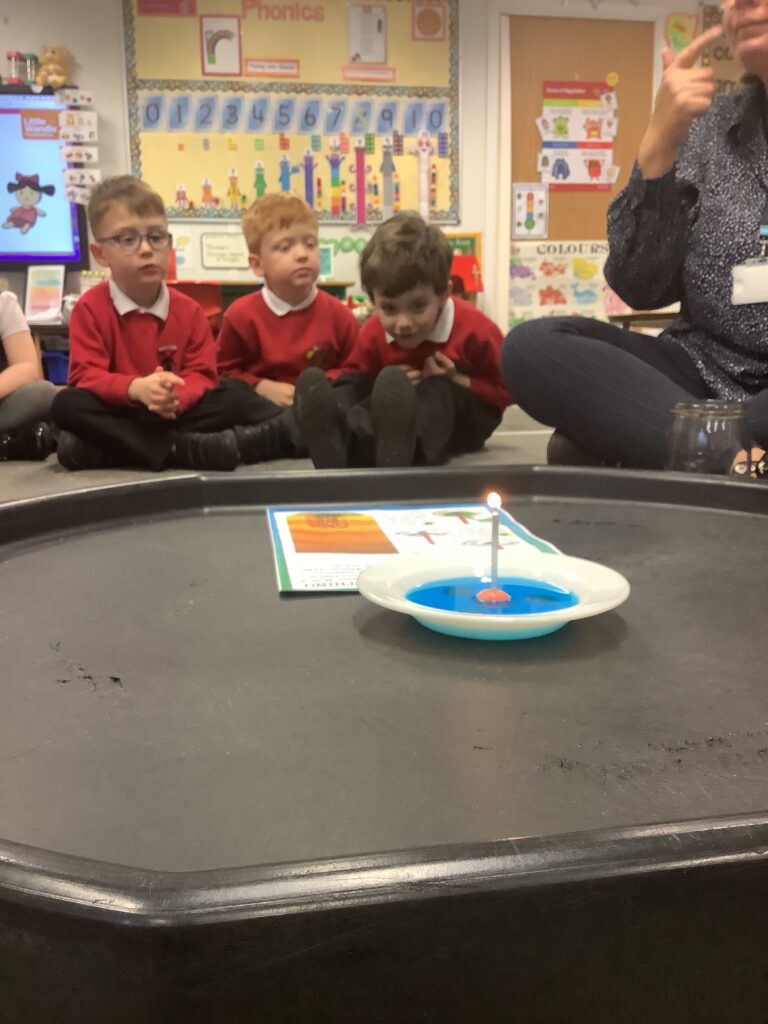
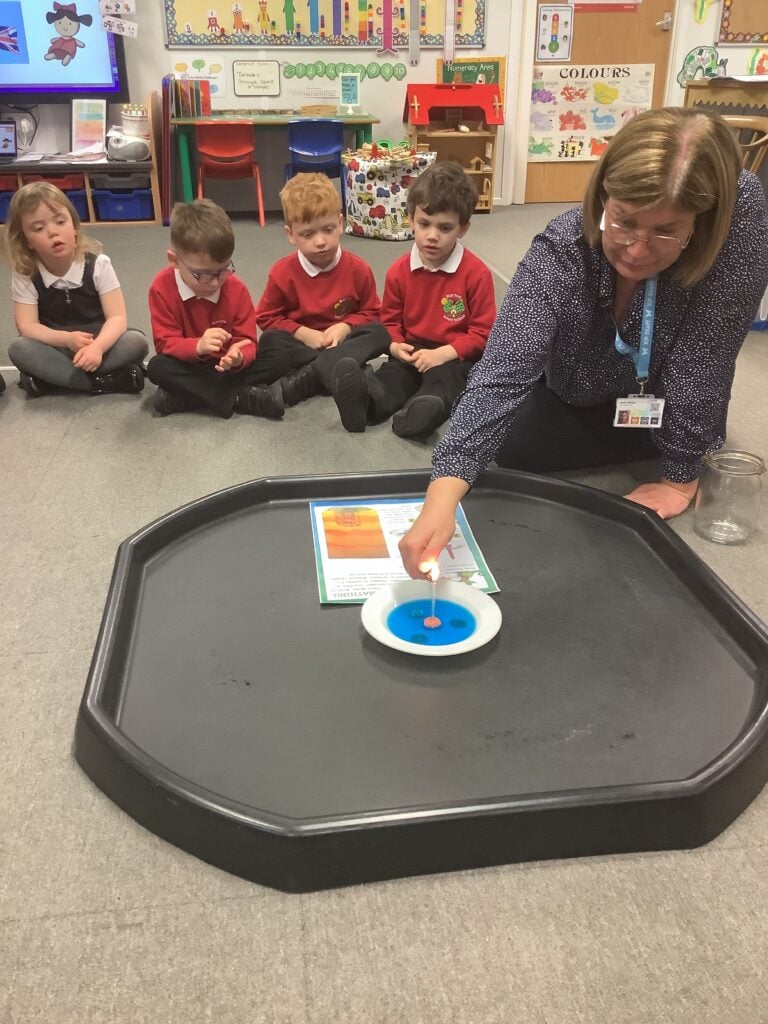
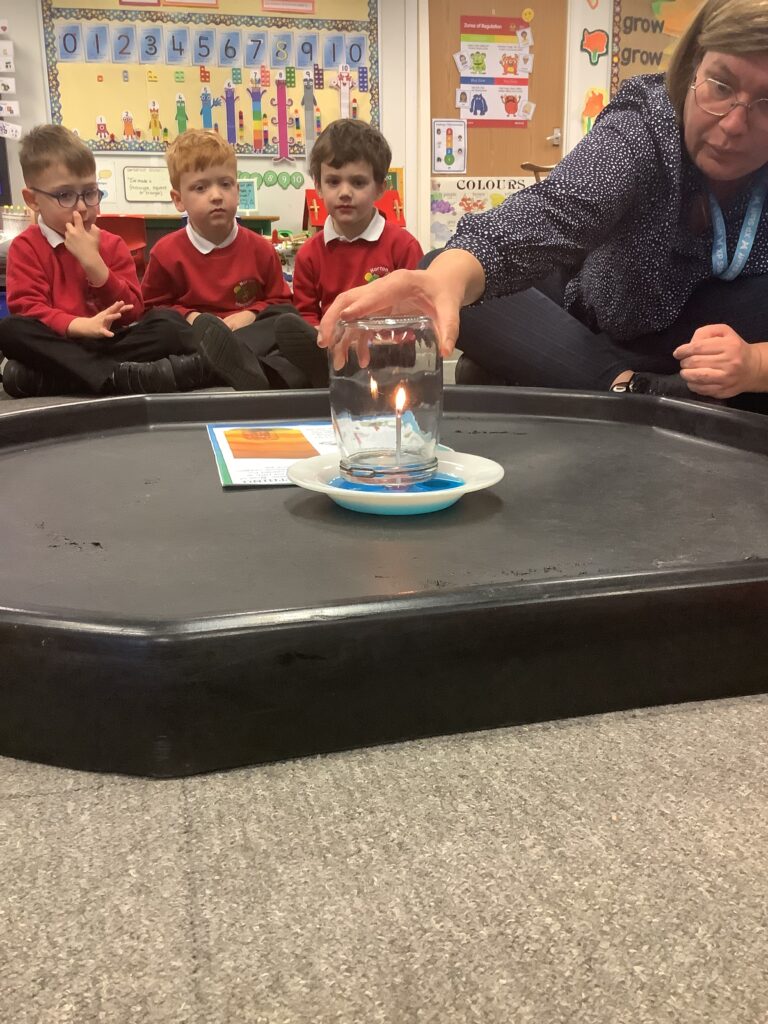
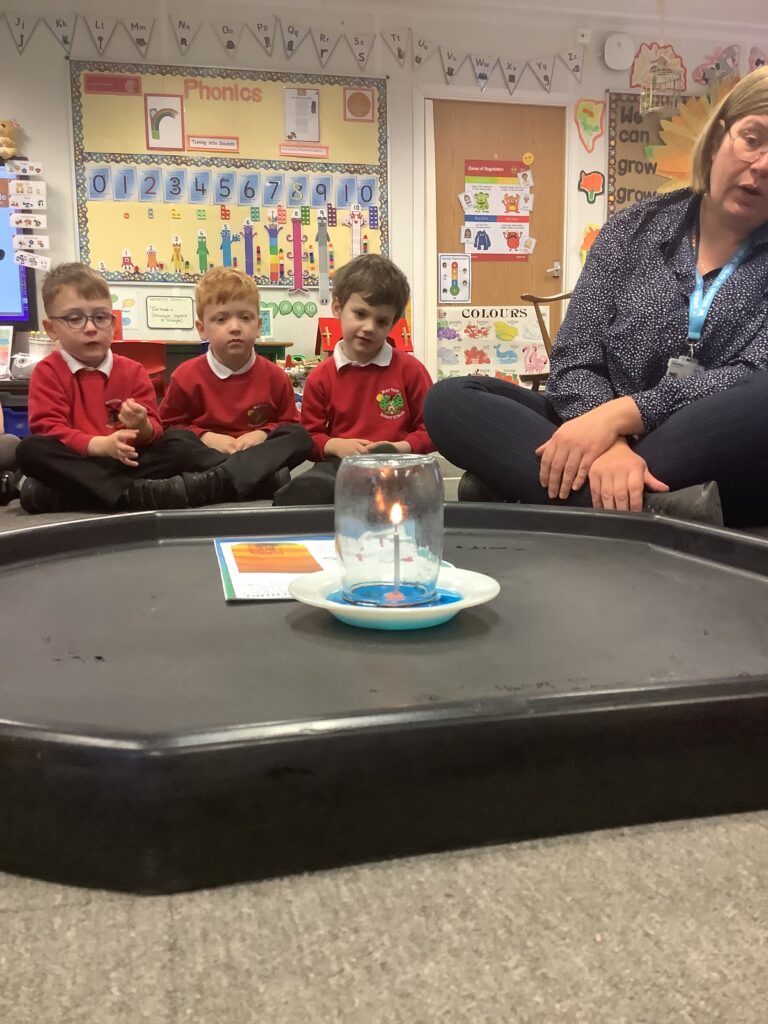
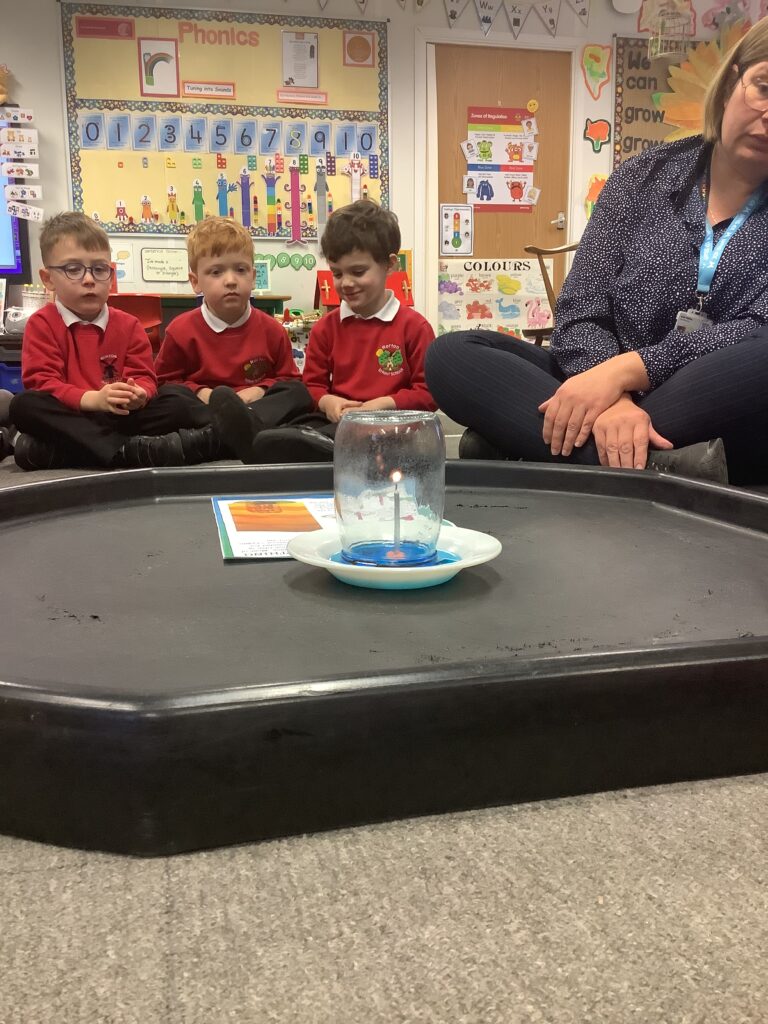
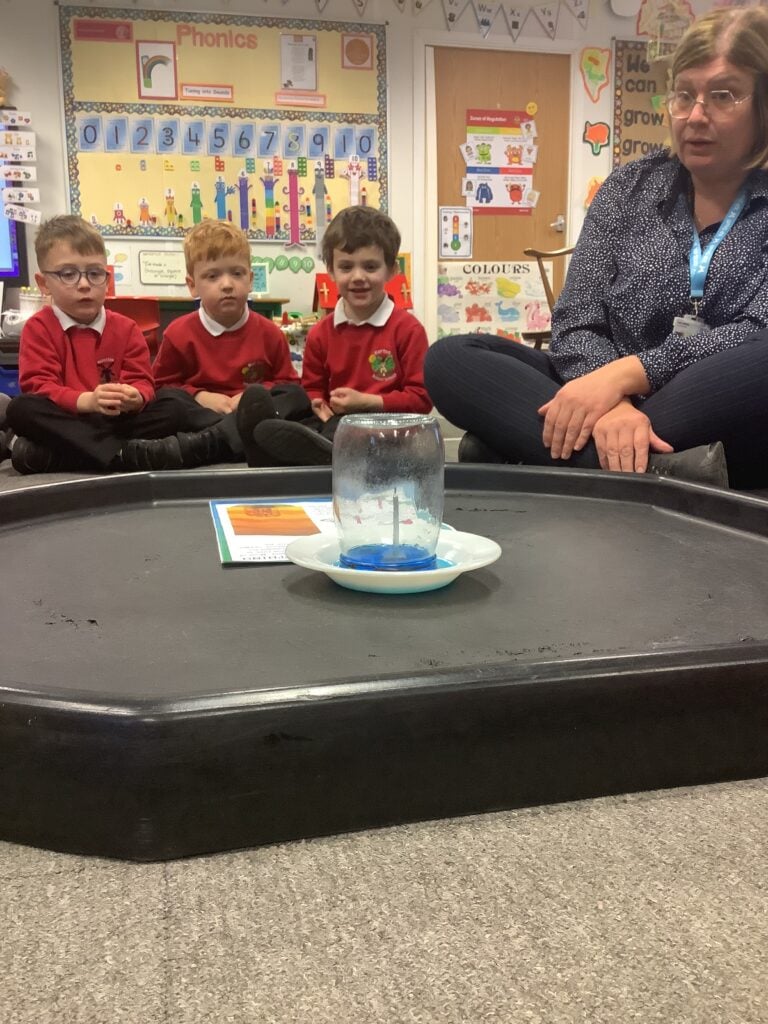
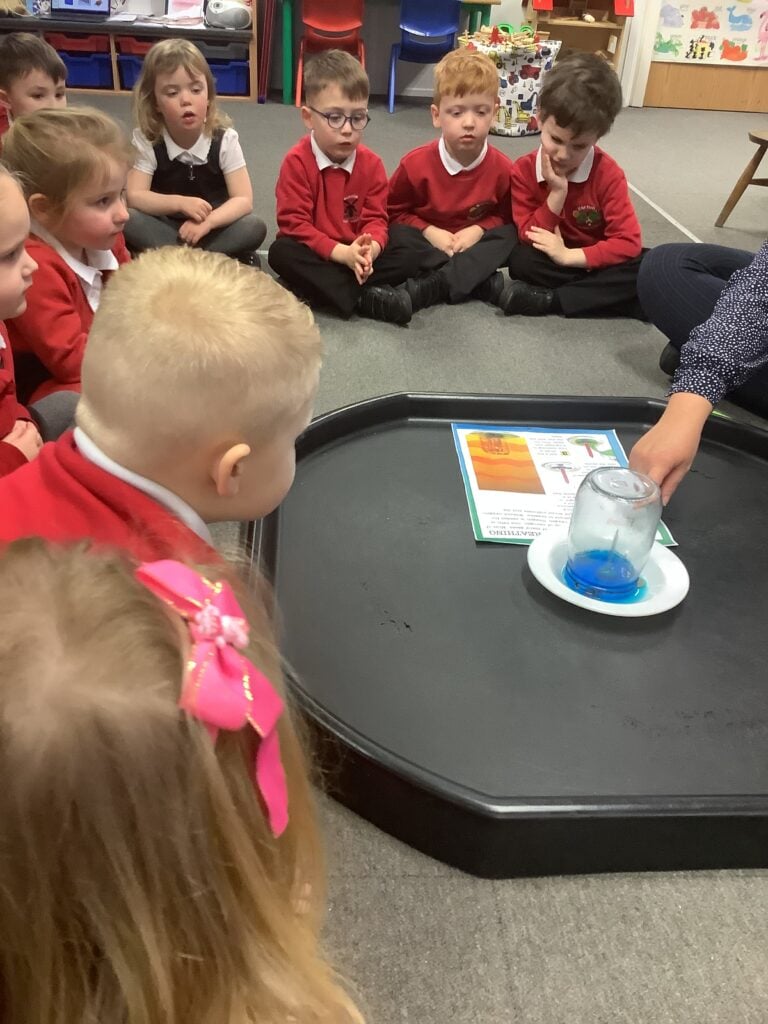
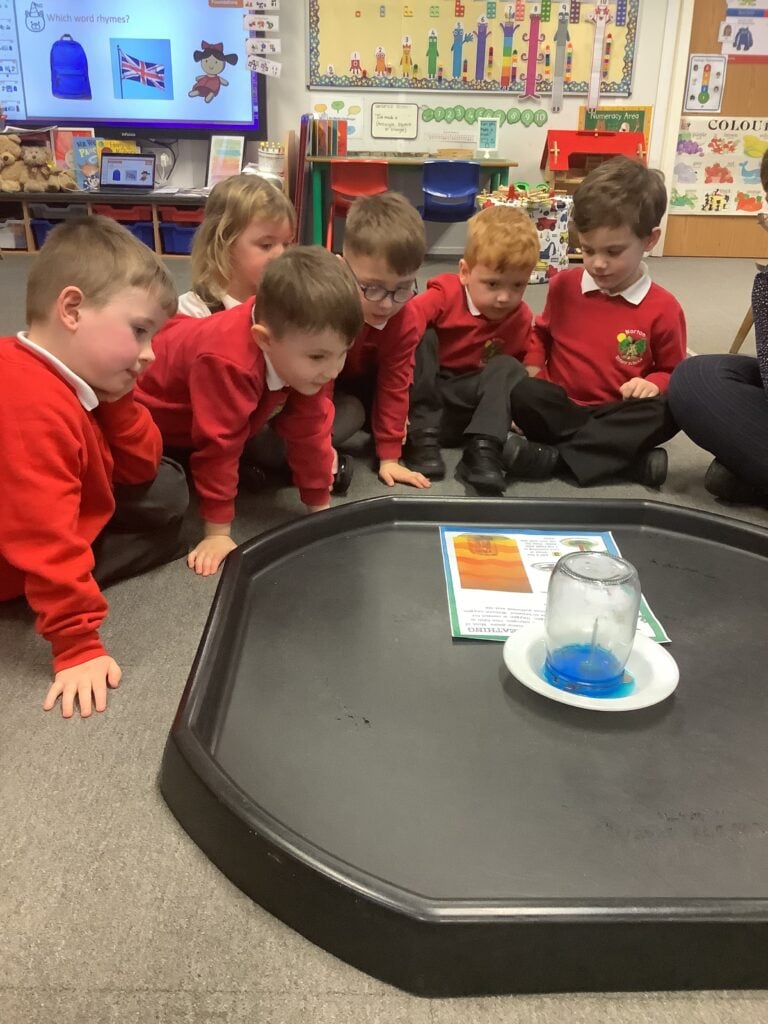
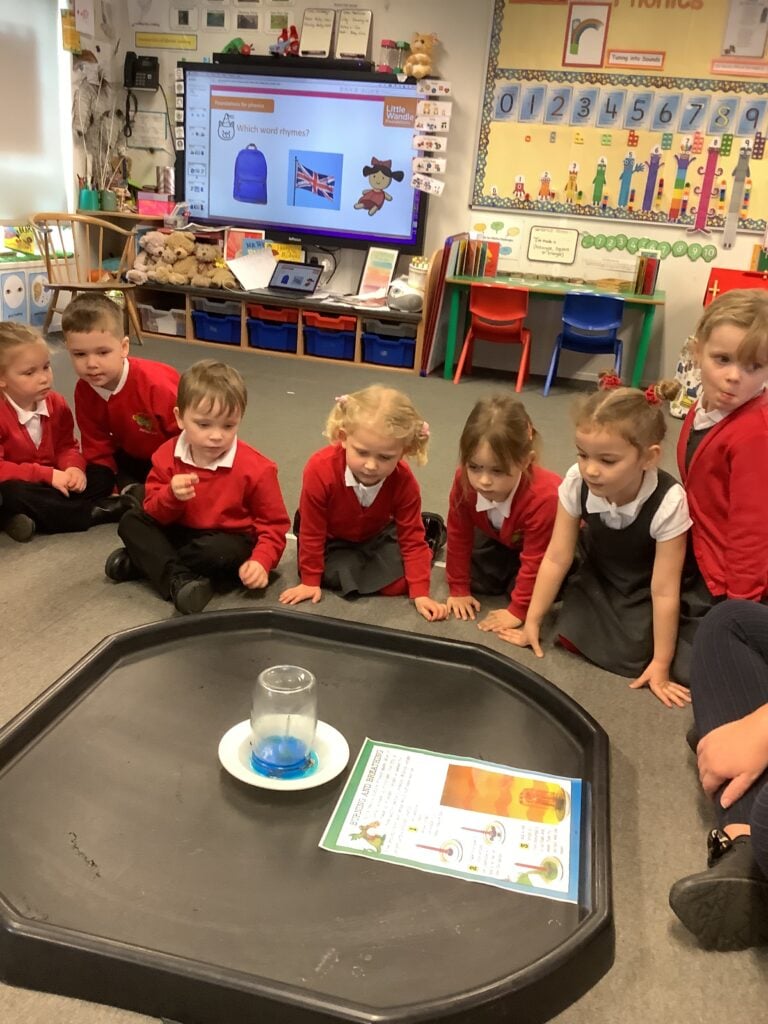
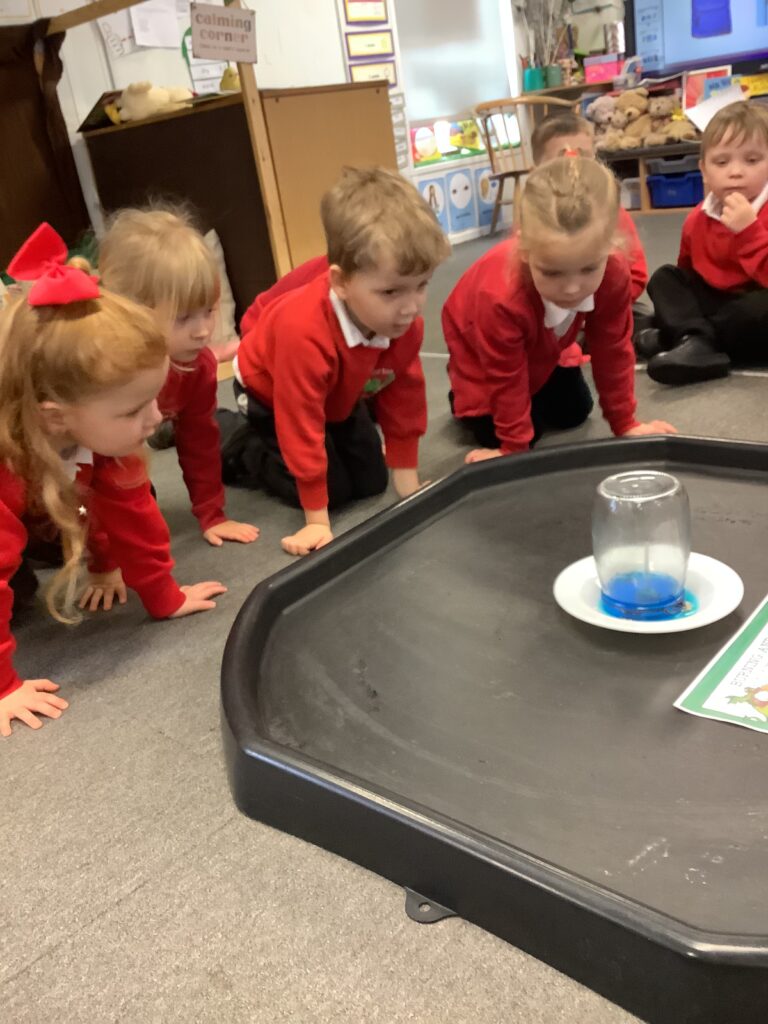
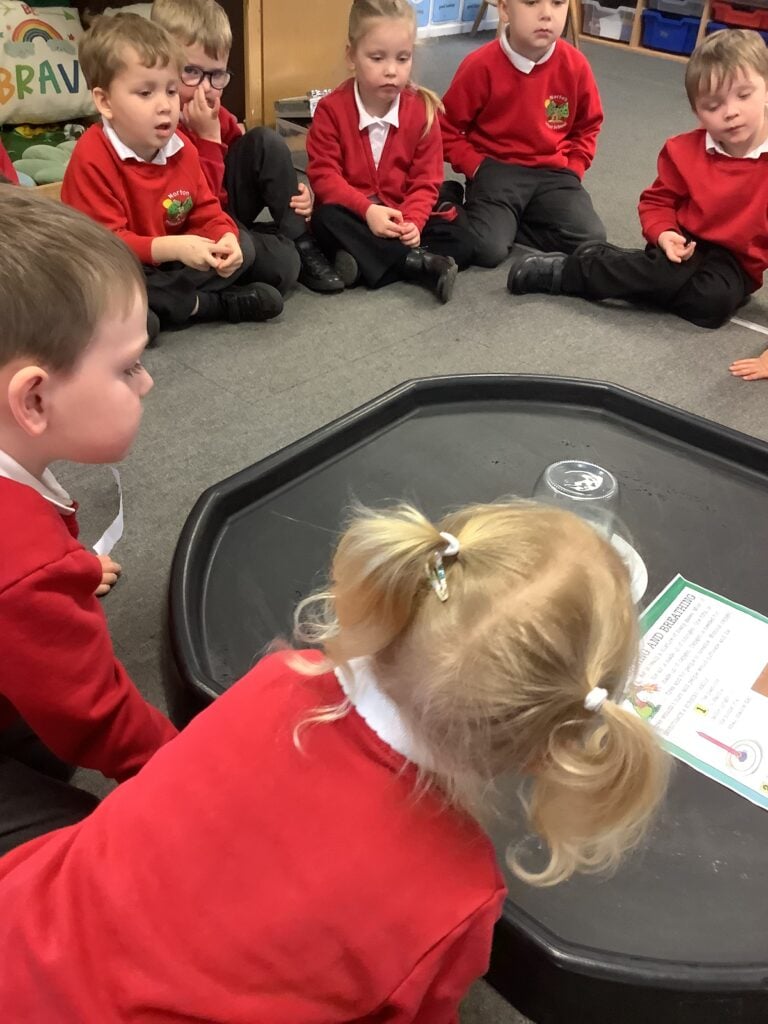
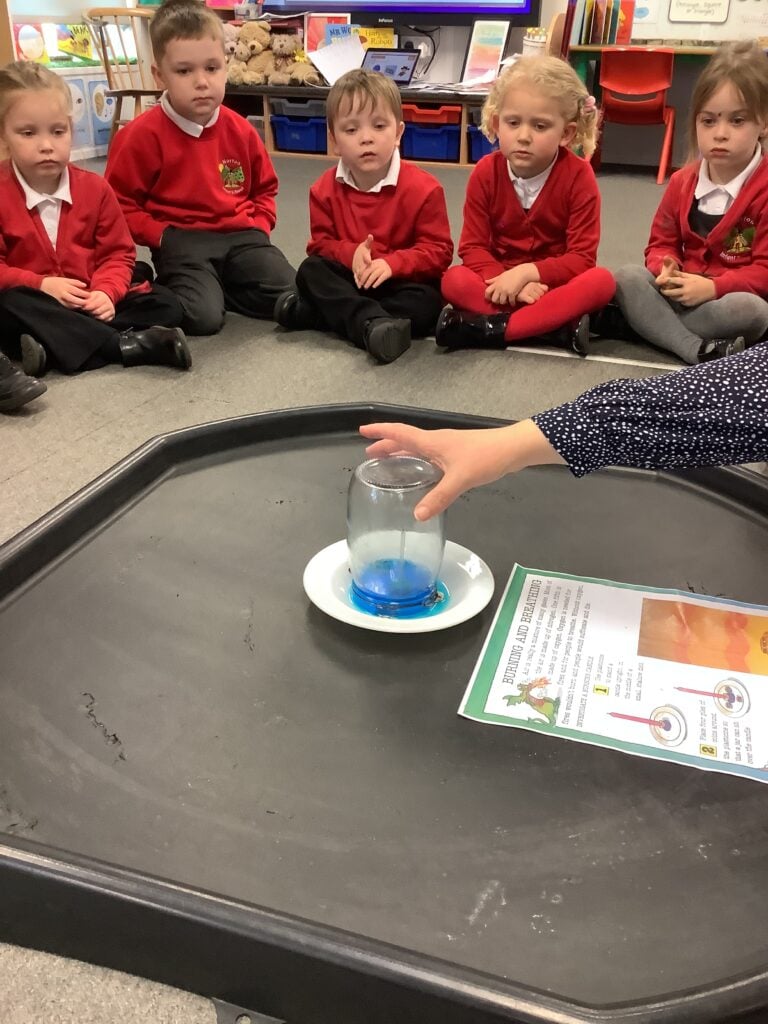
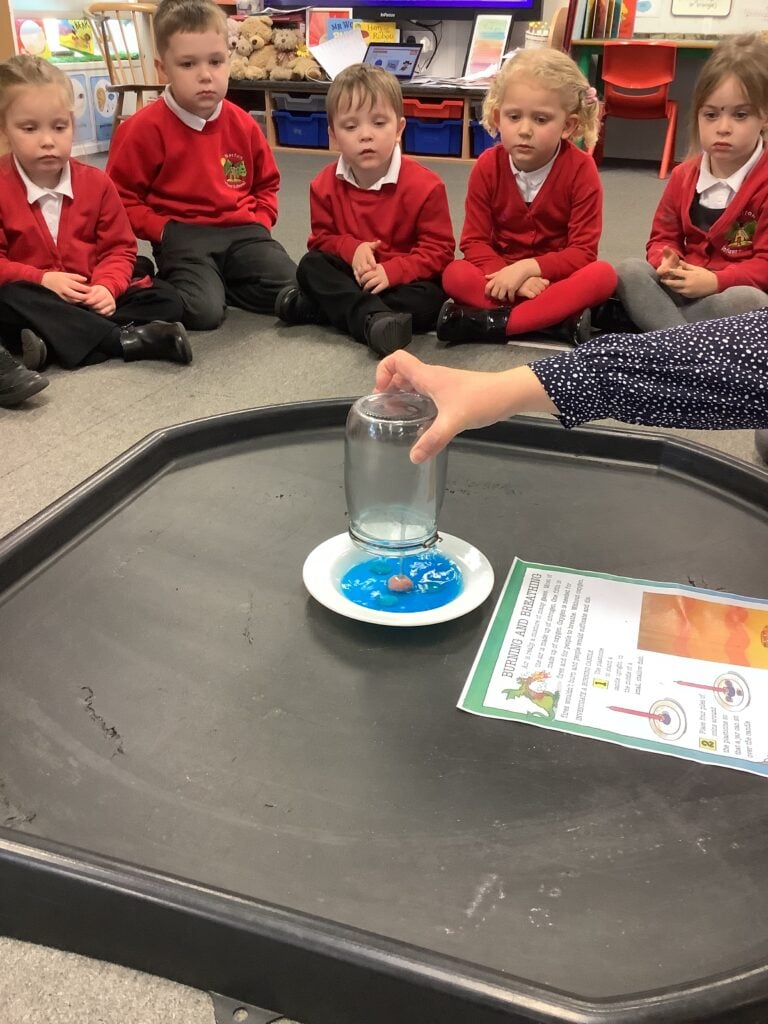
We have had lots of fun and excitement in Nursery this week experimenting and are looking forward to the rest of the week. Great learning Nursery!
This week Nursery have been Artists as they have continued to explore case study two of our expedition; “How do plants grow and change?” The stimulus has been the life cycle of a sunflower. We have been looking at artists who paint flowers, in particular Vincent Van Gogh’s famous sunflower paintings. However Nursery have compared these during a gallery walk to the works of Georgia O’Keefe (Green and White Lilly close up) , Claude Monet (Water lilies) and Maria Van Oosterwijck (Wilting flowers with black background). As the children began the week by looking at the colours used in paintings, for the purpose of light and dark and how this made them feel?
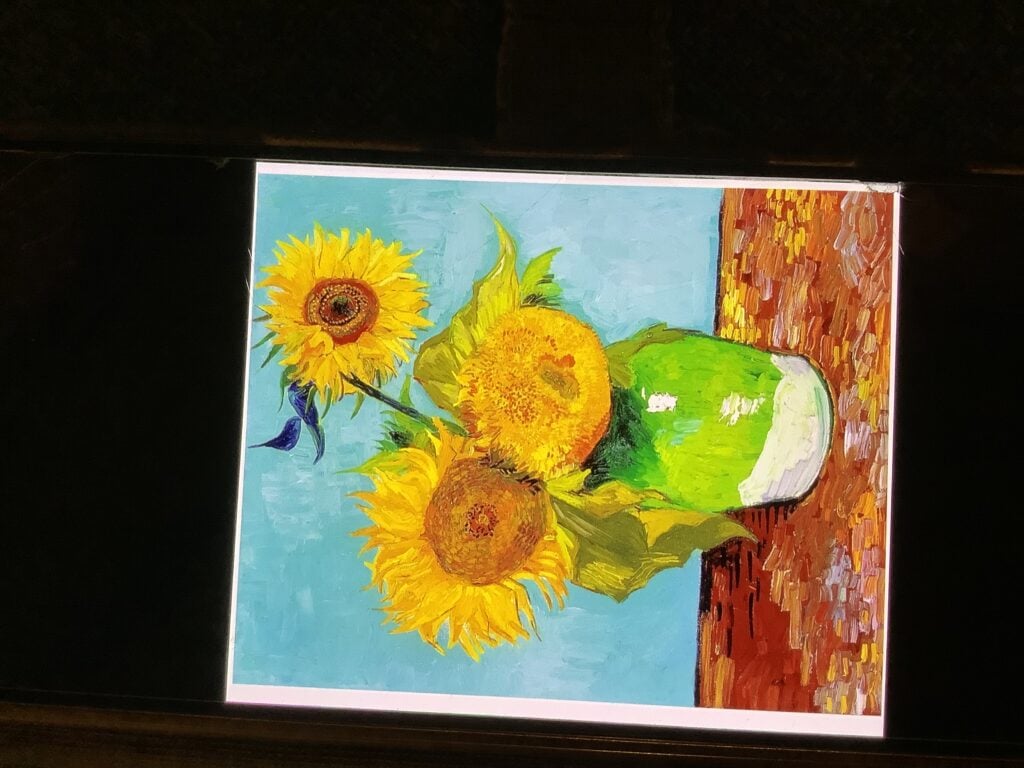
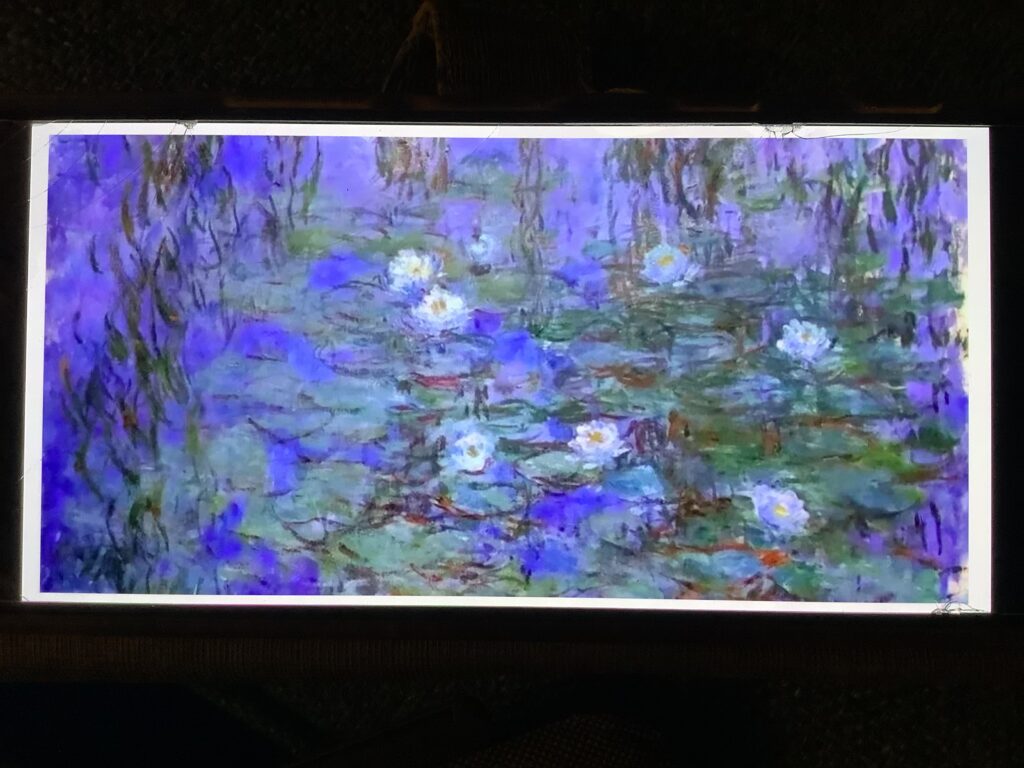
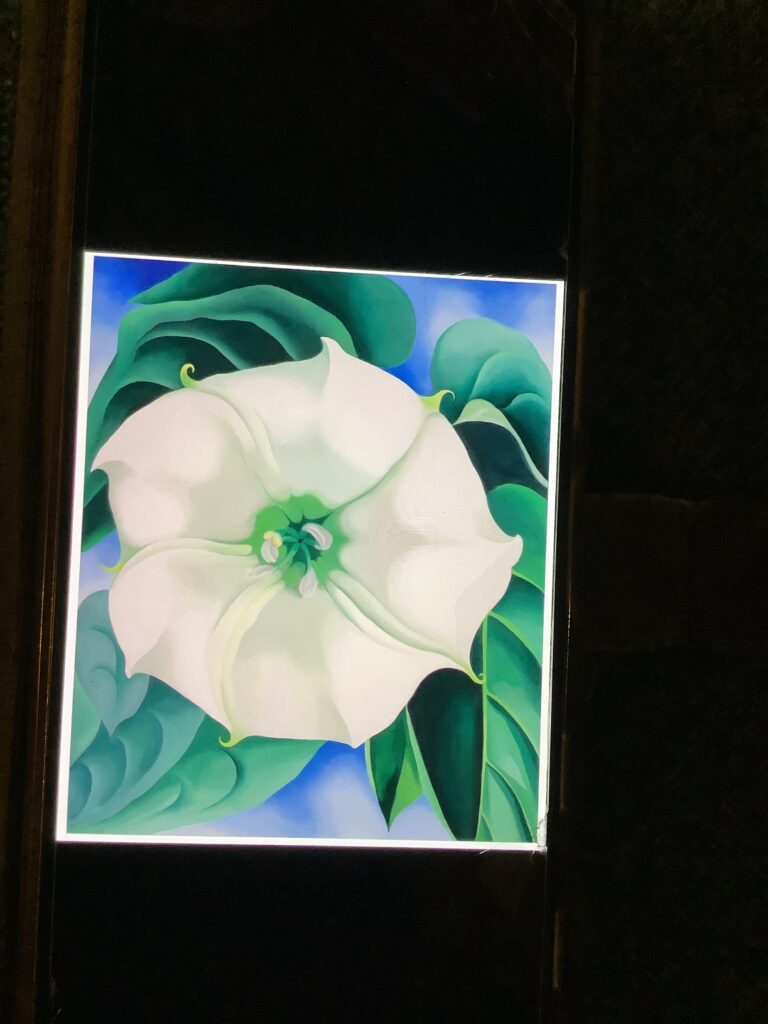
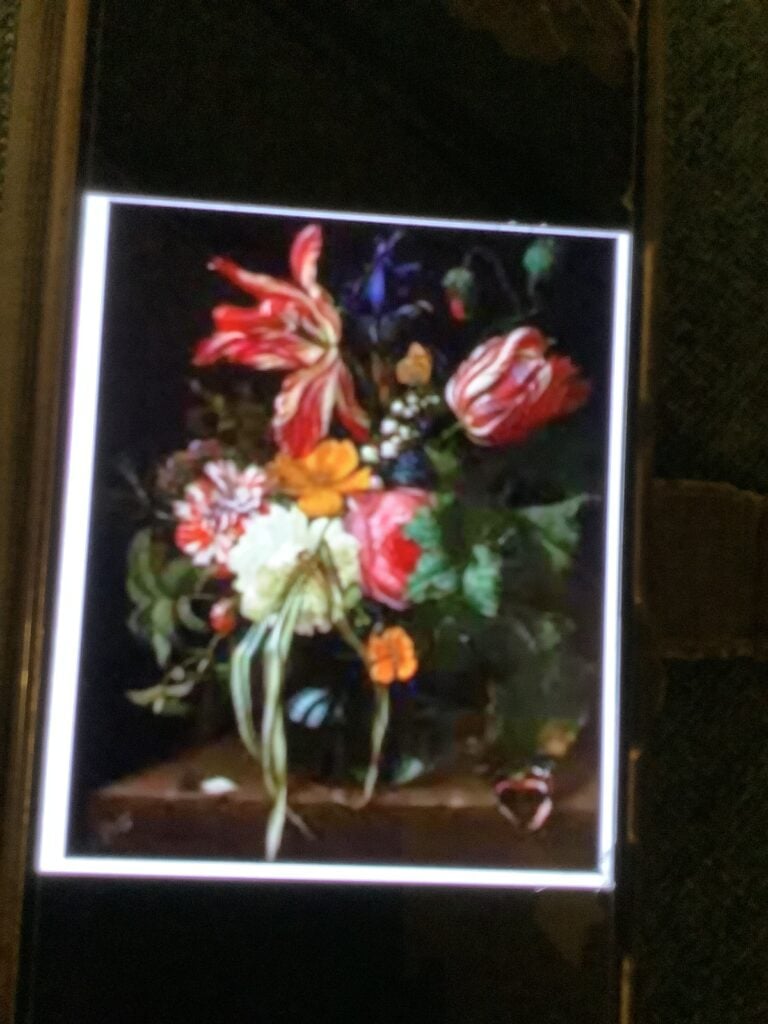
We practised painting using light and dark shades and talked about what kind of colours make us think of different feelings. The children likened the lighter colours to “sunshine”, “the sky” and happy events. Whilst they thought of darker colours as “dirt”, “shadows” or “night-time”. When they looked closely at the wilting flowers they realised that the flowers in the painting were dying and that the artist had captured them as they had started to “Wilt”, “droop” and “flop”. This made the children feel sad that the flowers had passed their best and they then associated the darker colours with sadness.
The children were challenged to think about; “If the artist was listening to music whilst they were painting – do you think it would make a difference to how they painted? Would it cheer them up or make them feel sad? Make them angry or excited? The only way to find out was to test the idea. Nursery closed their eyes and carefully listened to four specifically chosen music tracks to see if they could hear a difference in the tunes and move in a way that responded to the music? The tracks were; “Happy” by Pharrell Williams, “Proud Mary” (a slowed version) by Tina Turner, “Fire Starter” by Prodigy and “Axel F” by Crazy Frog.
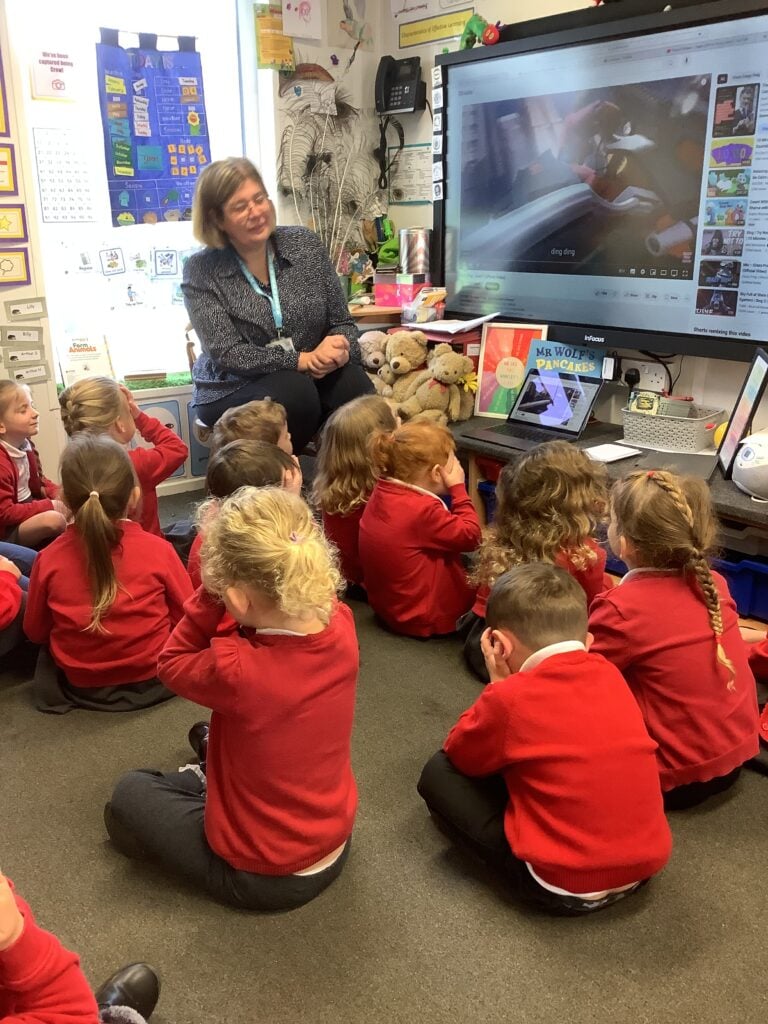
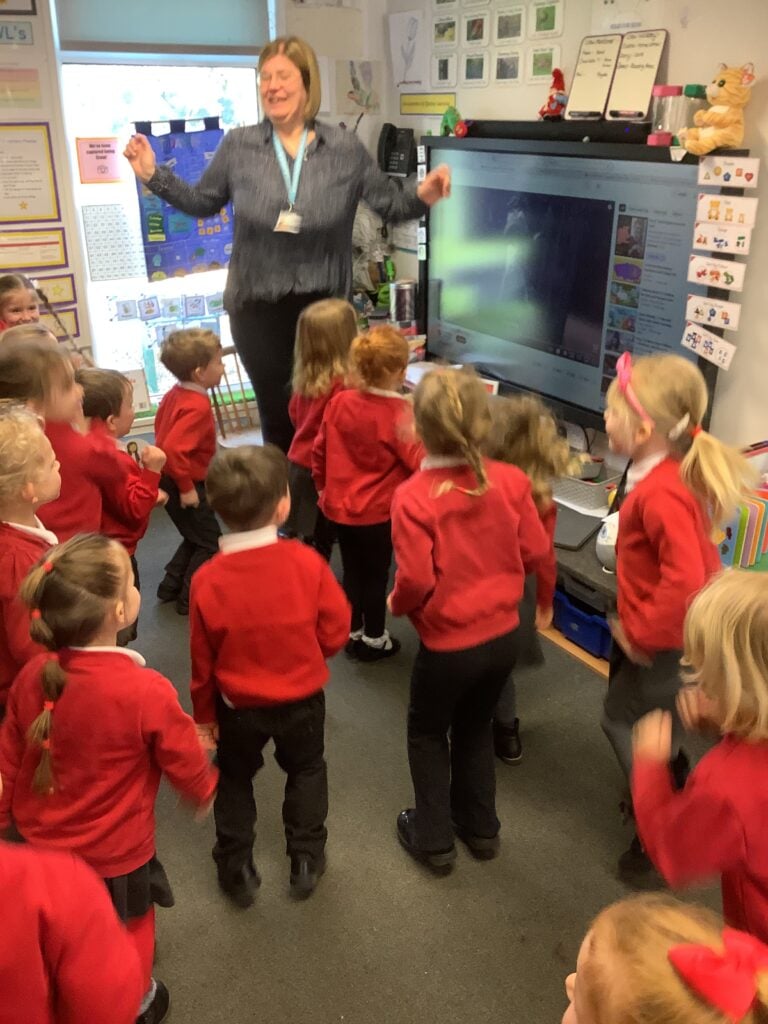
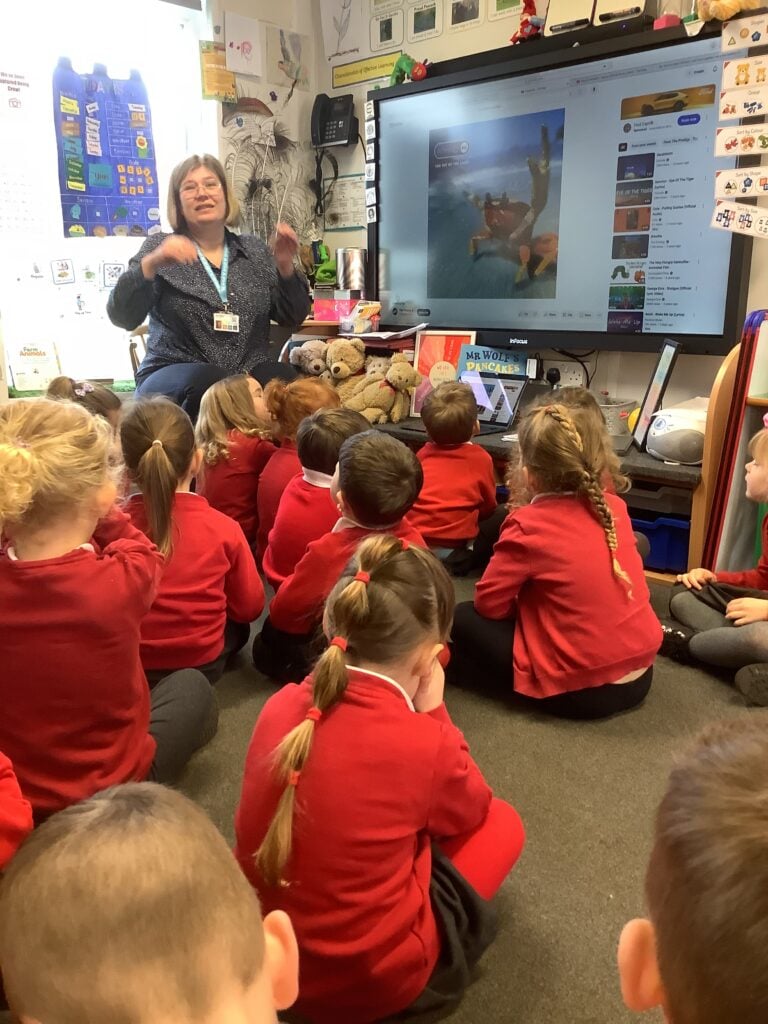
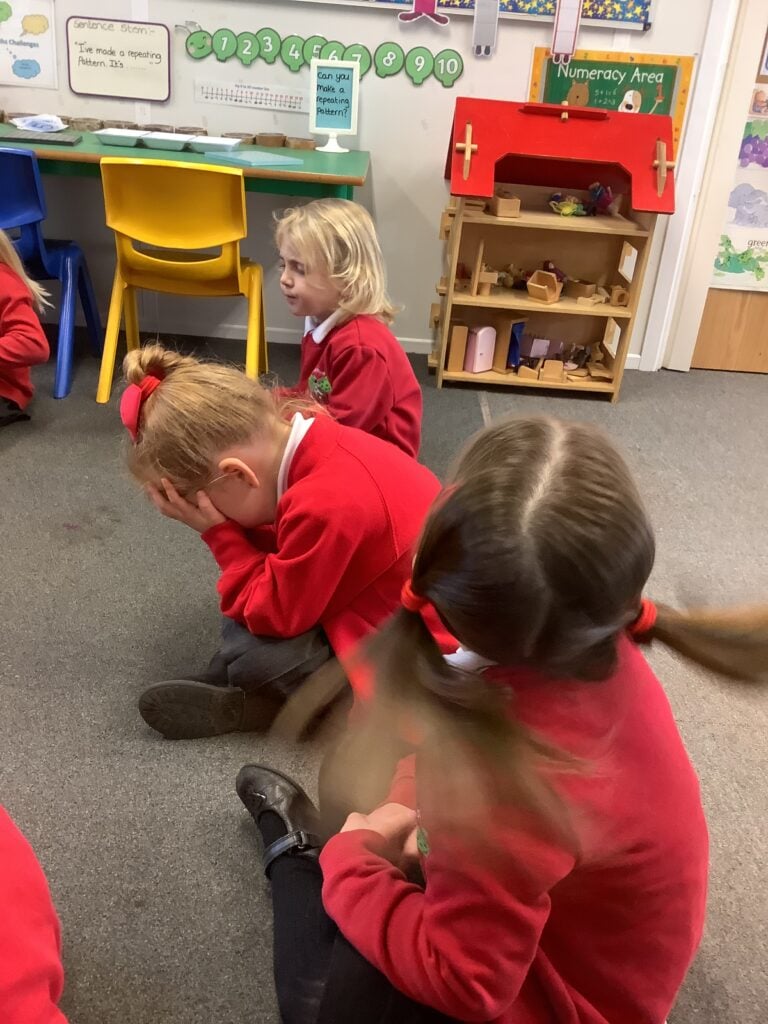
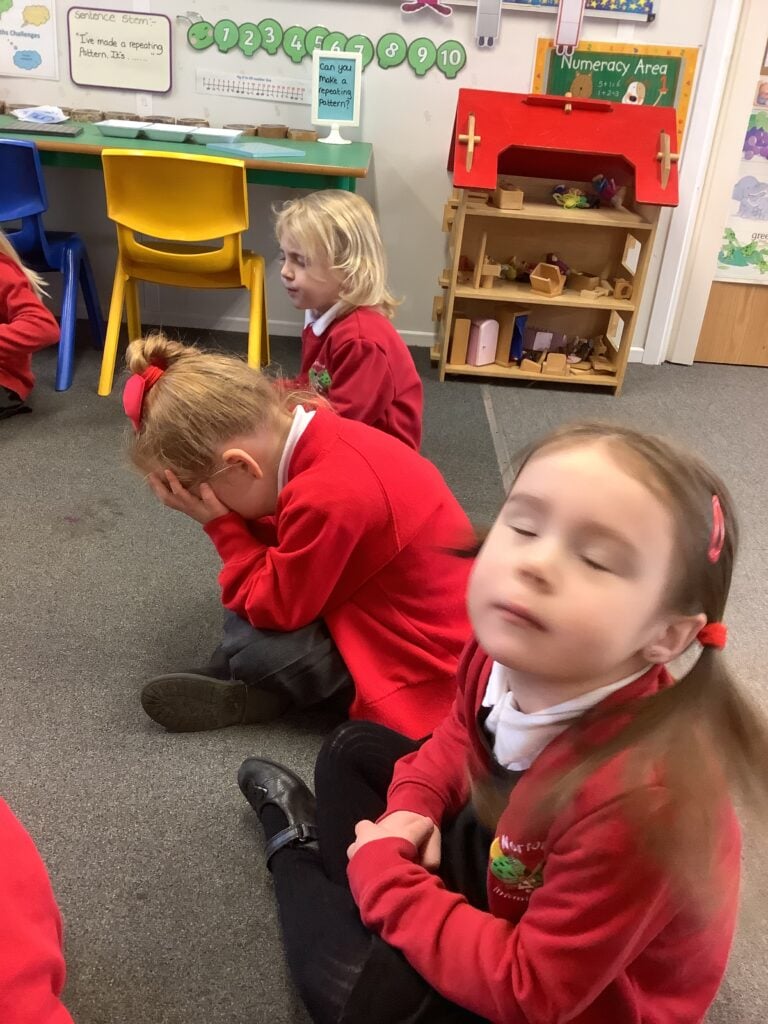
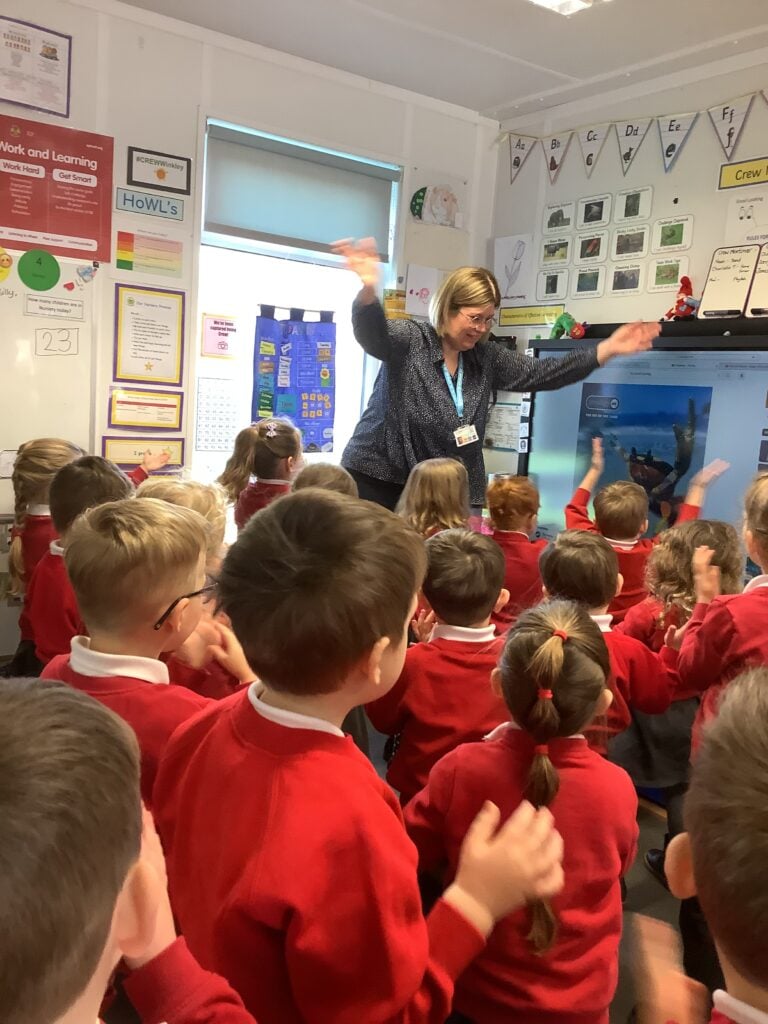
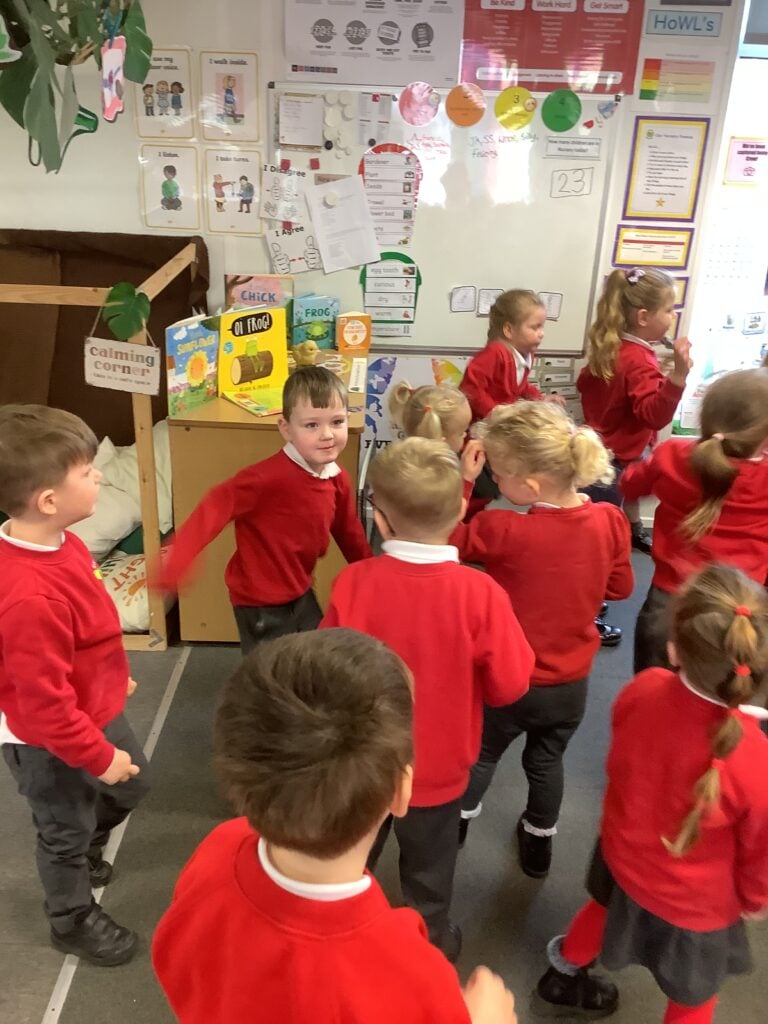
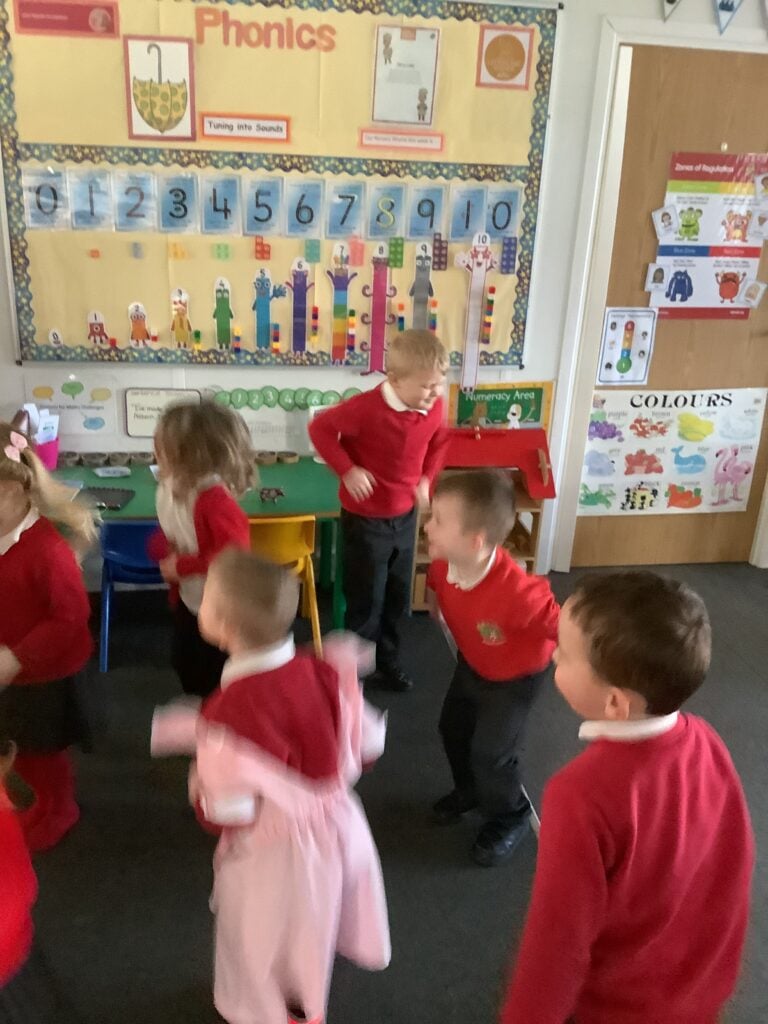
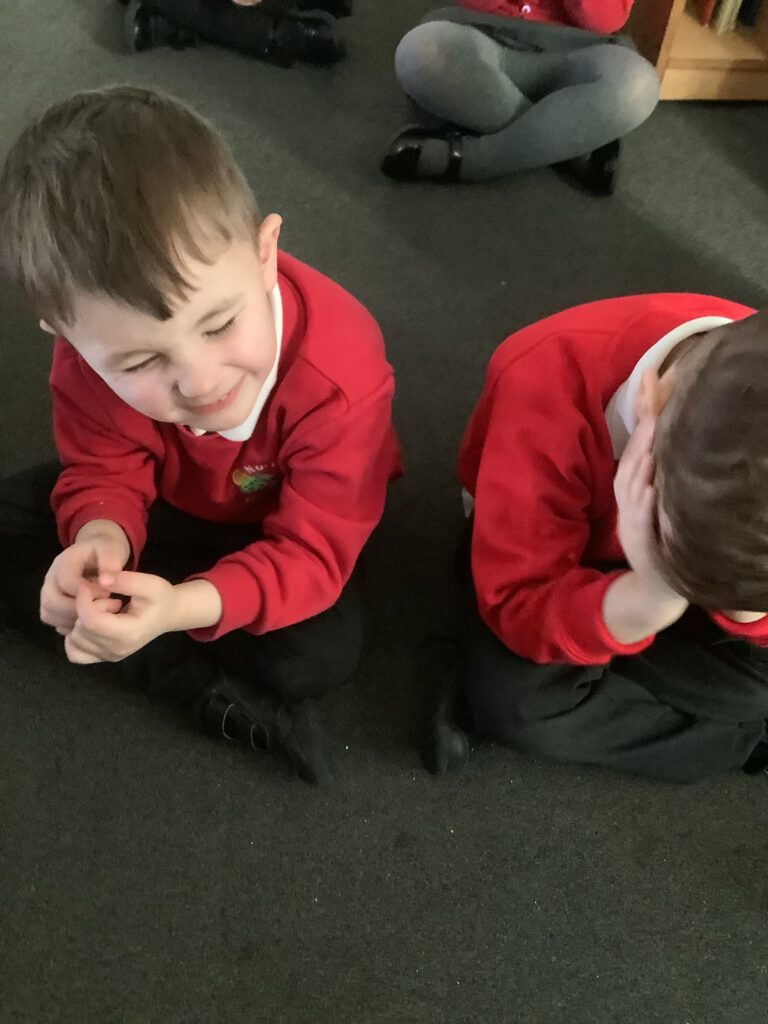
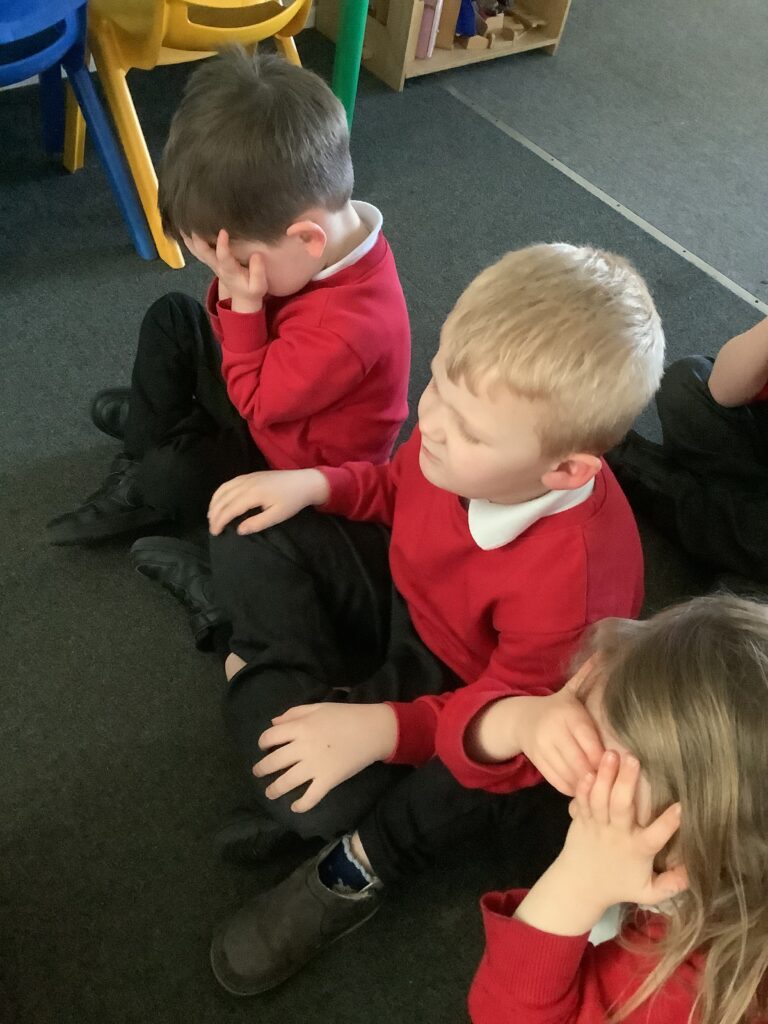
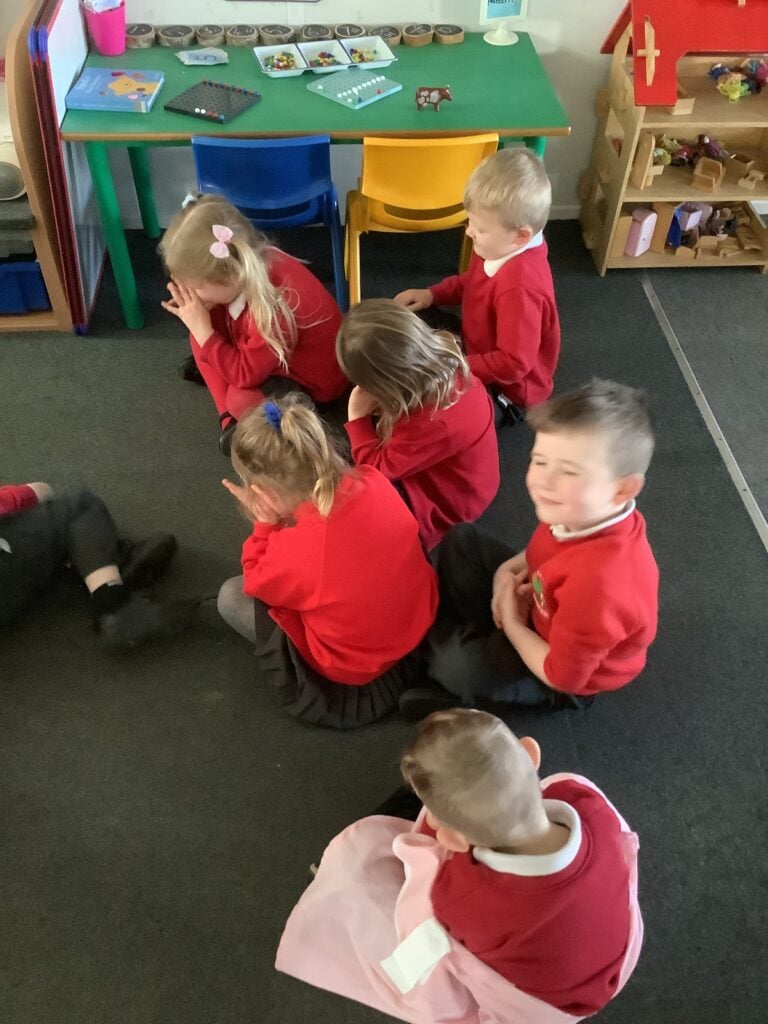
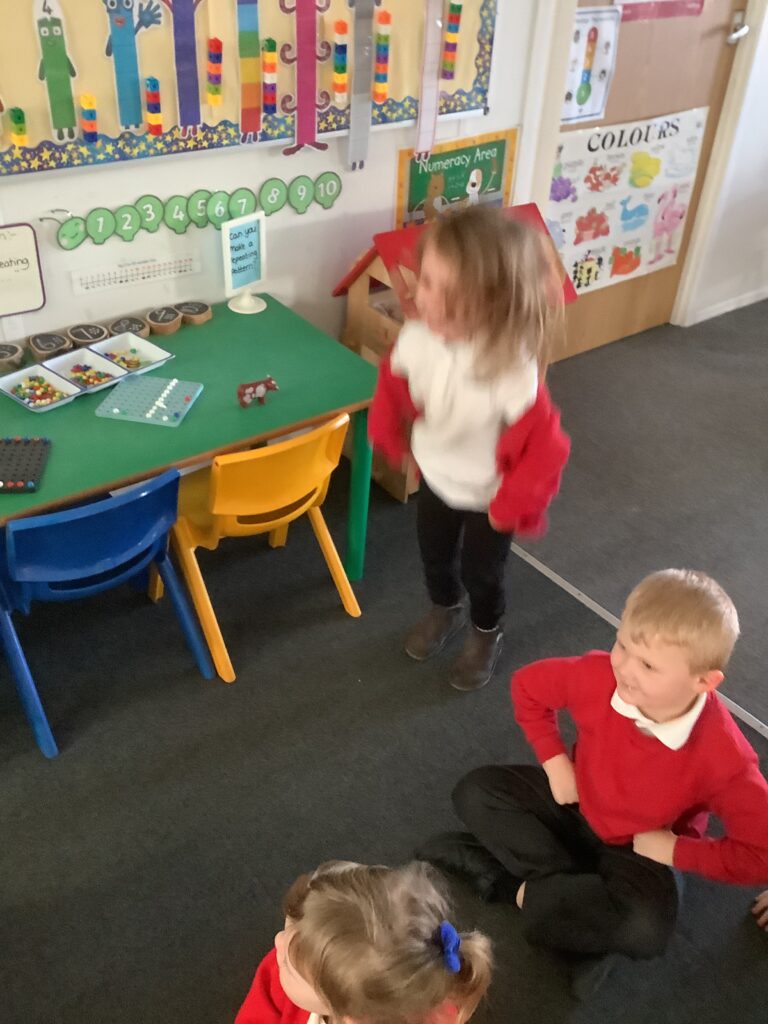
They then captured there response to the music in drawing…..
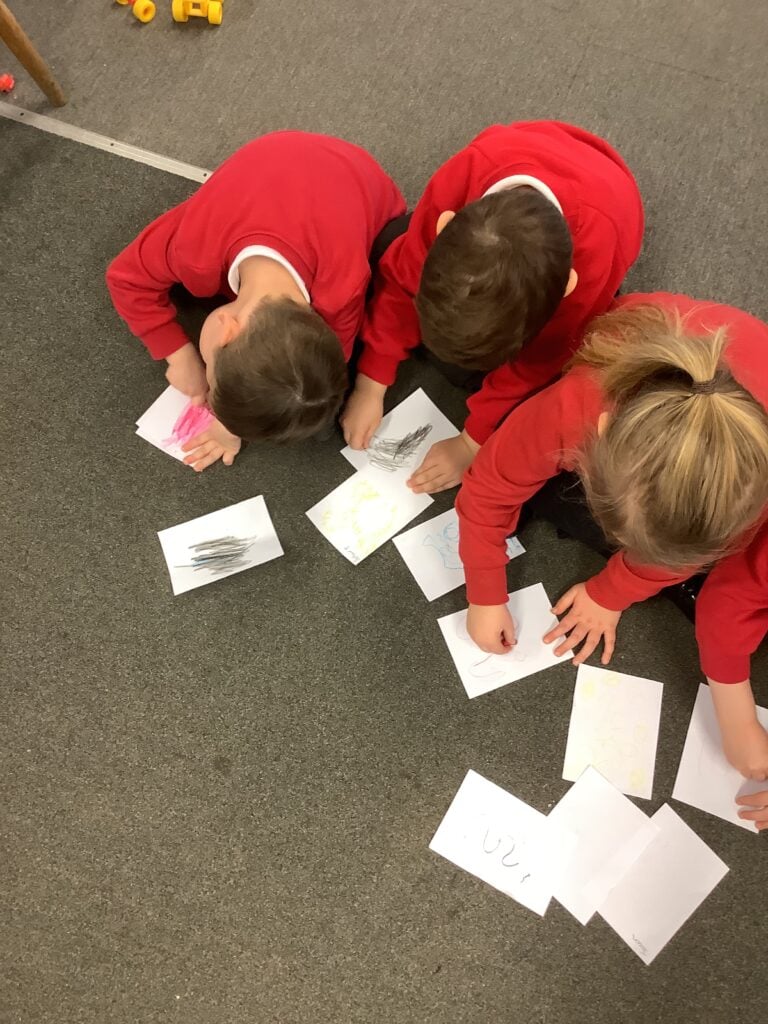
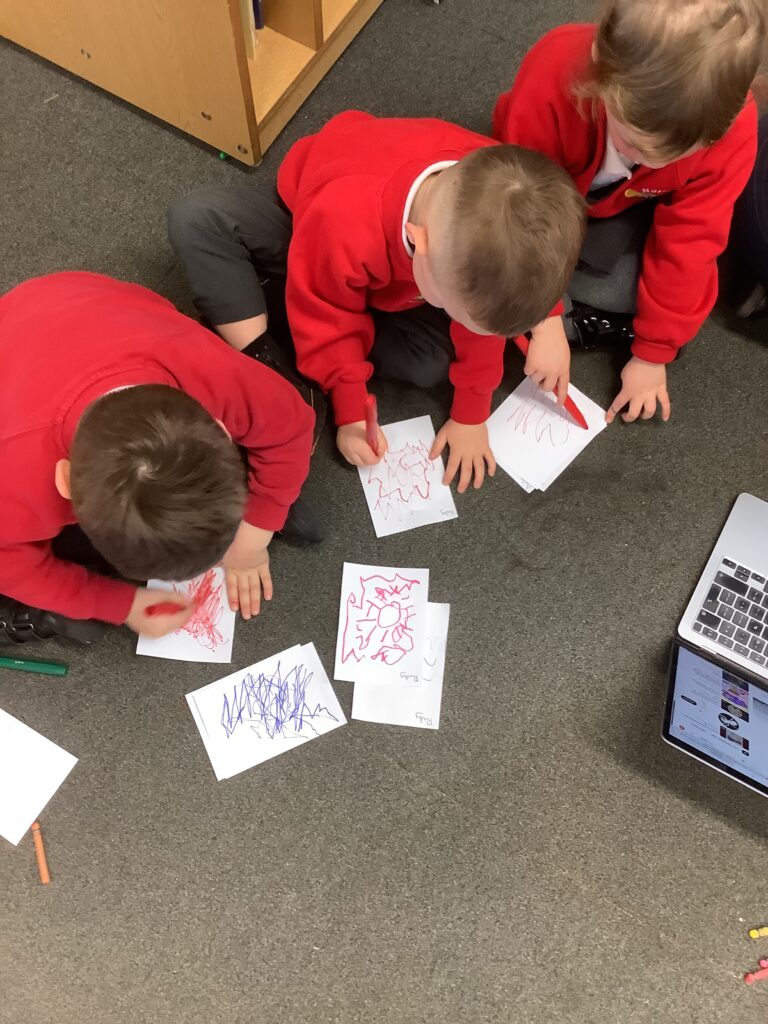
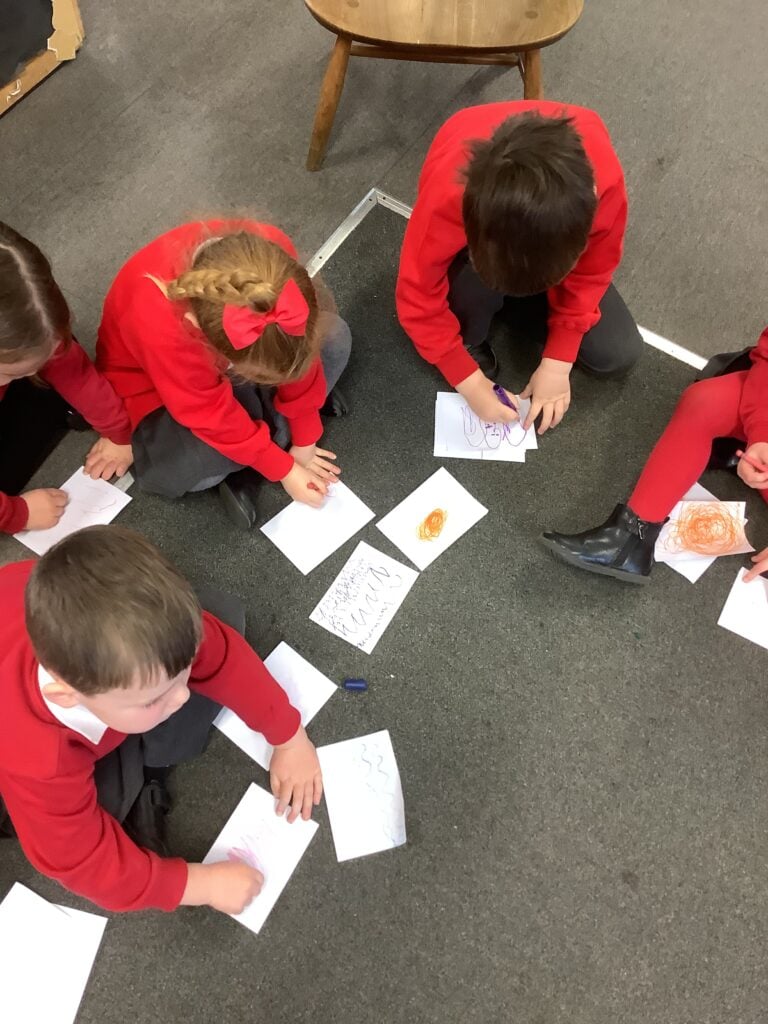
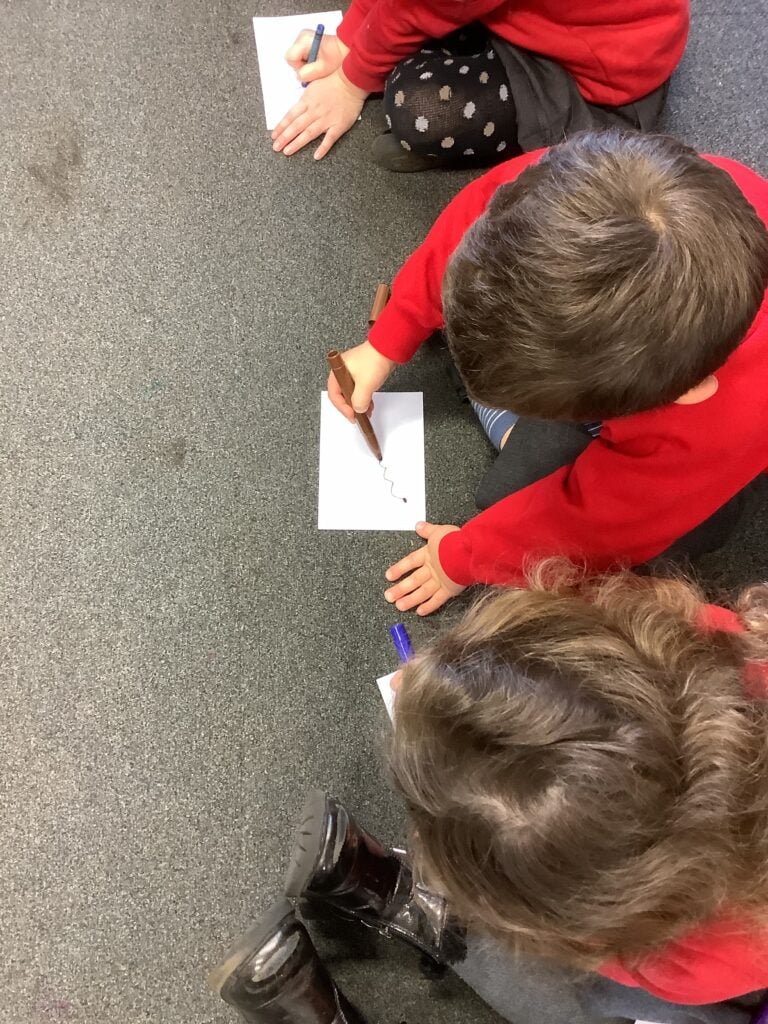
Finally Nursery have used all of their new knowledge and experience to paint their own Van Gogh Sunflowers from a choice of two designs, using either a palette of either angry or sad colours whilst listening to their choice of “Fire Starter” or “Proud Mary”. The efforts made by the children for these paintings and the results have been outstandingly beautiful and such a relevant and purposeful experience. They have had lots of fun and have been exposed and challenged into thinking further about their feelings and responses to music and art.
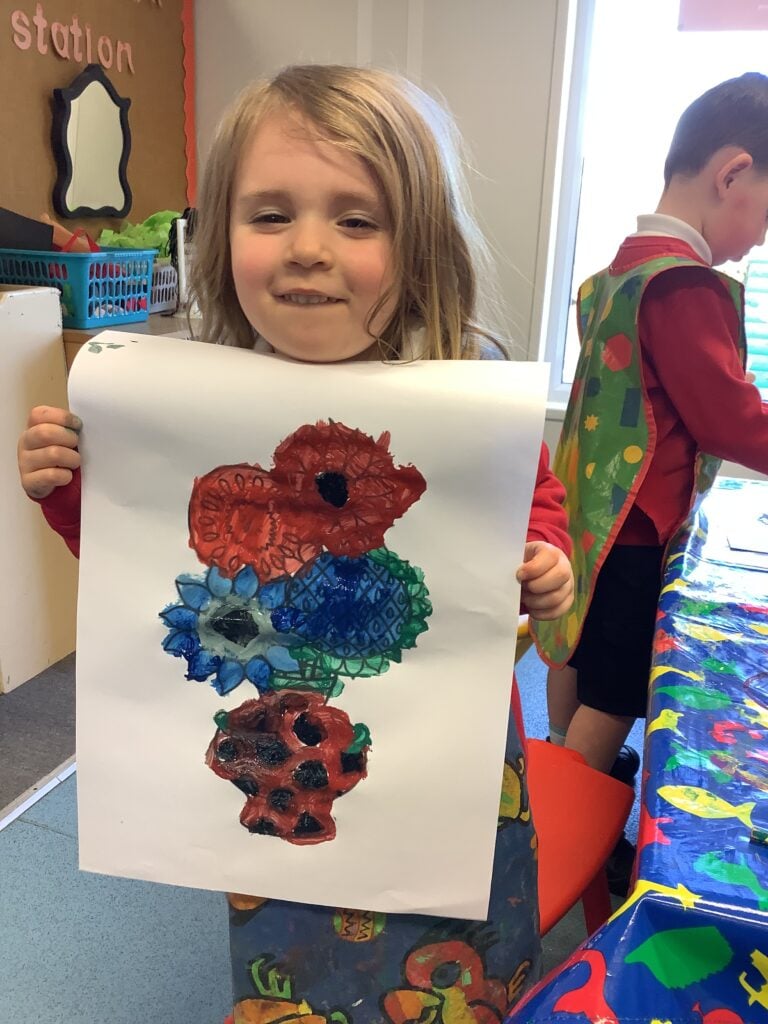
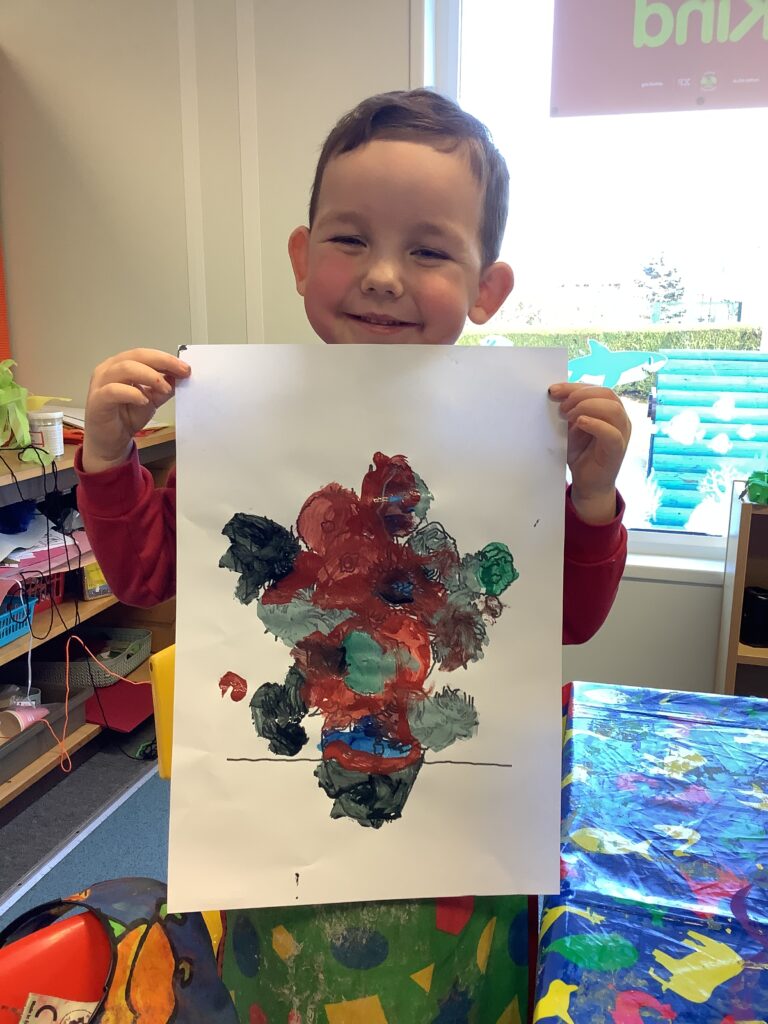
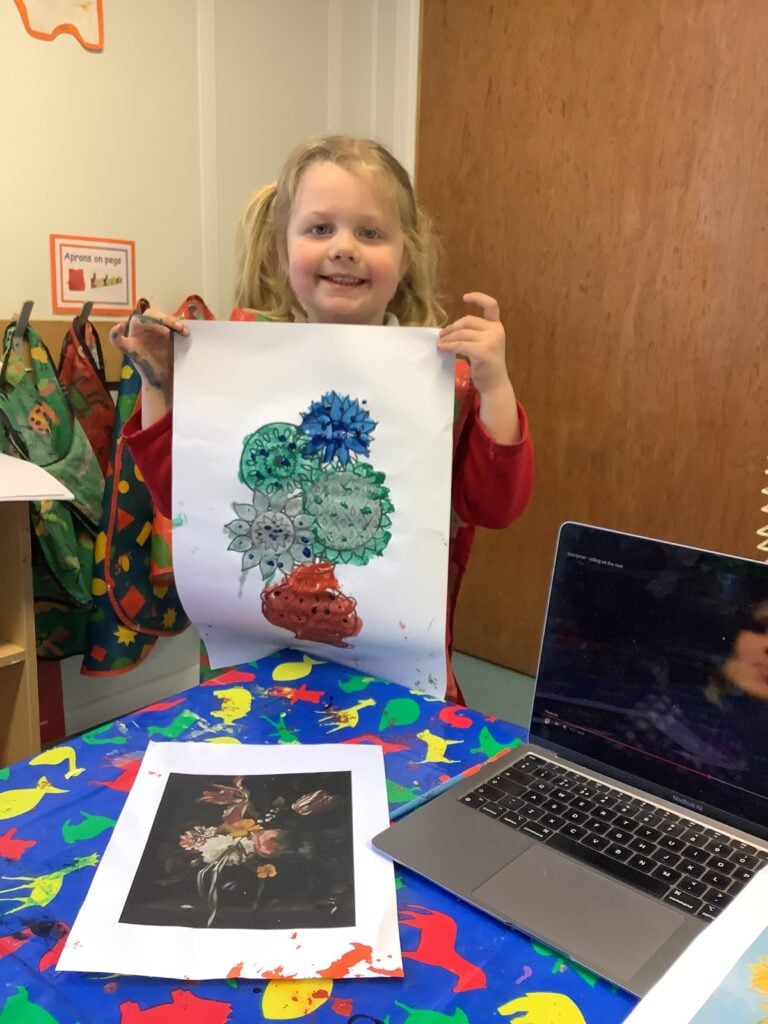
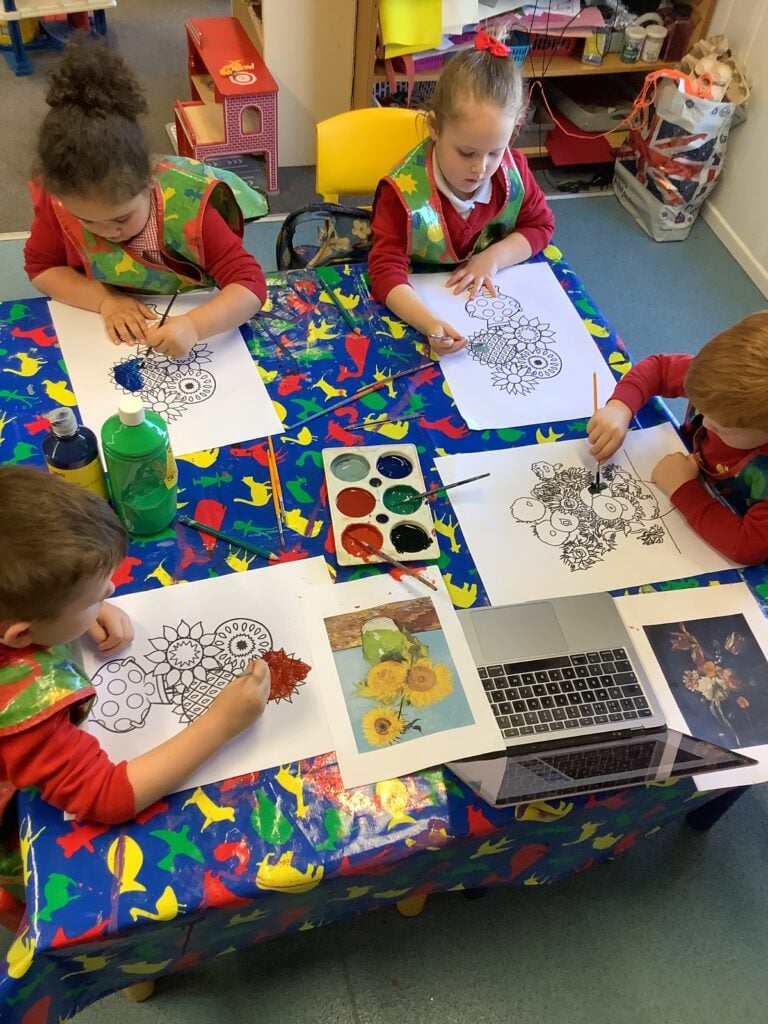
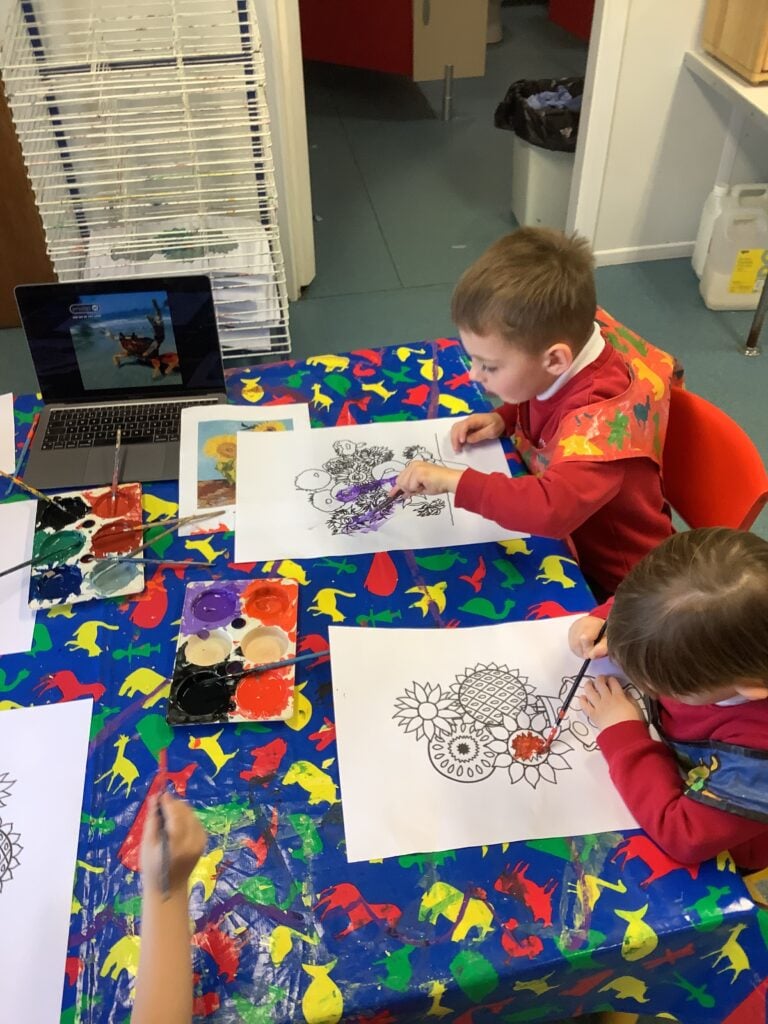
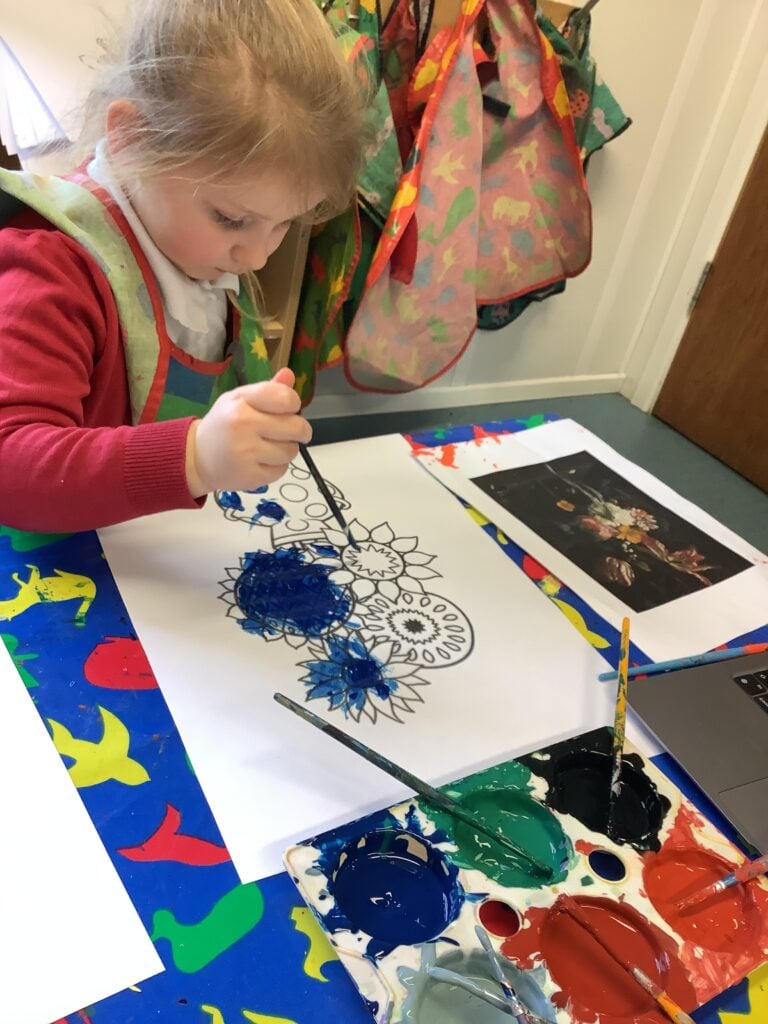
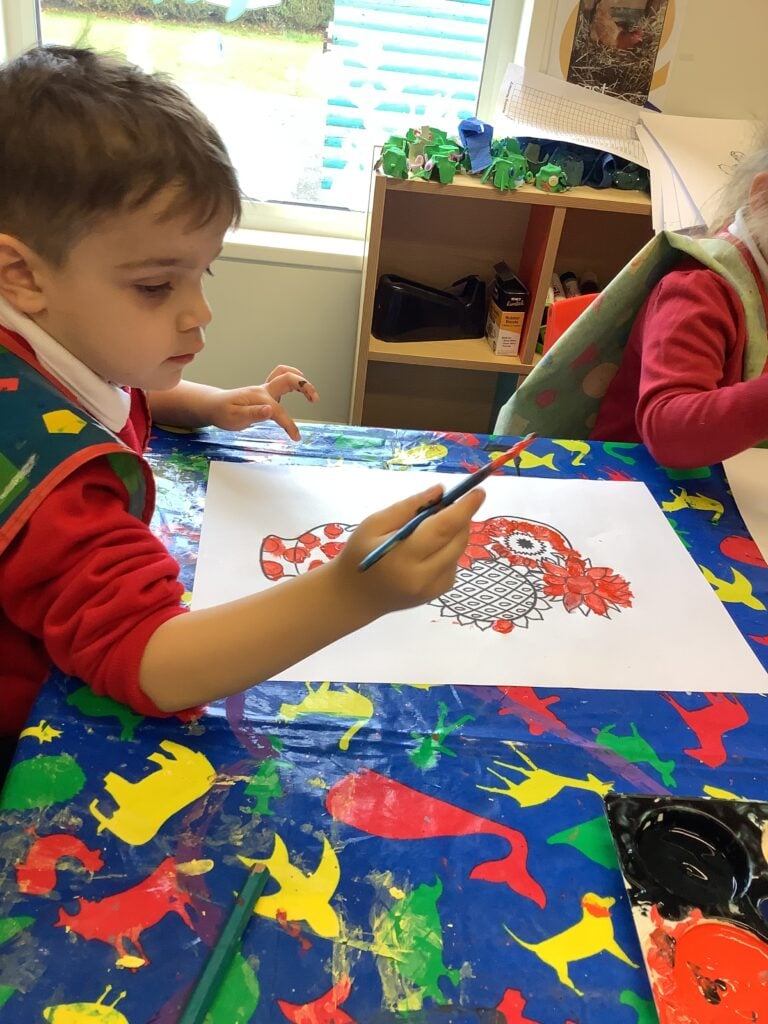
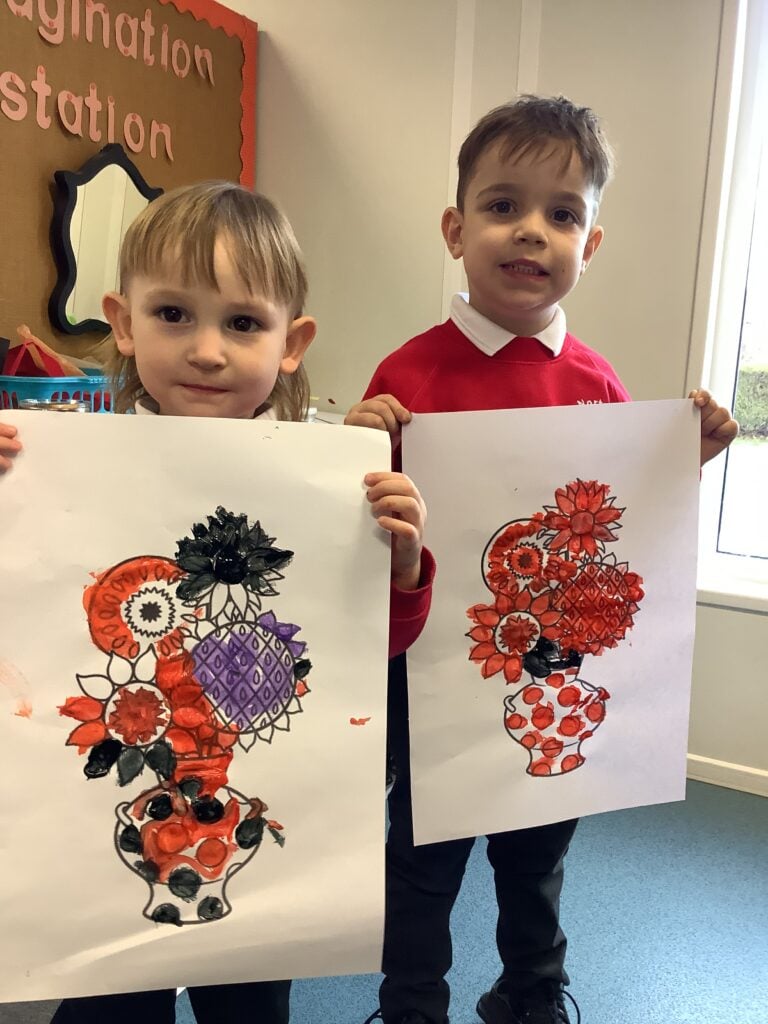
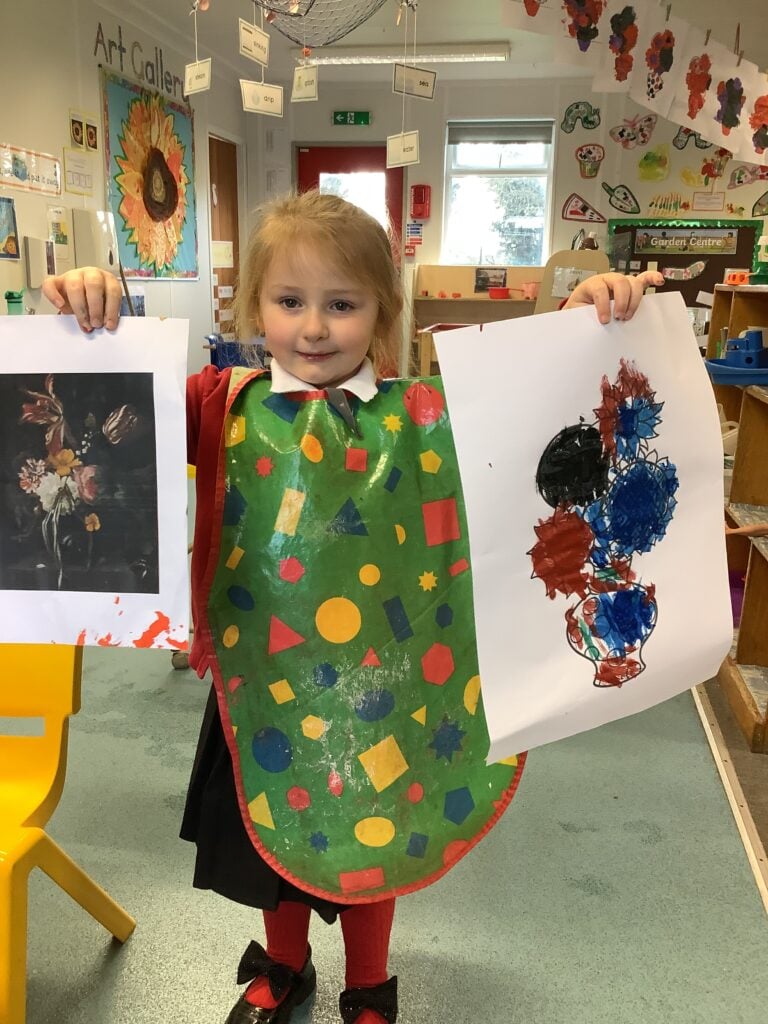
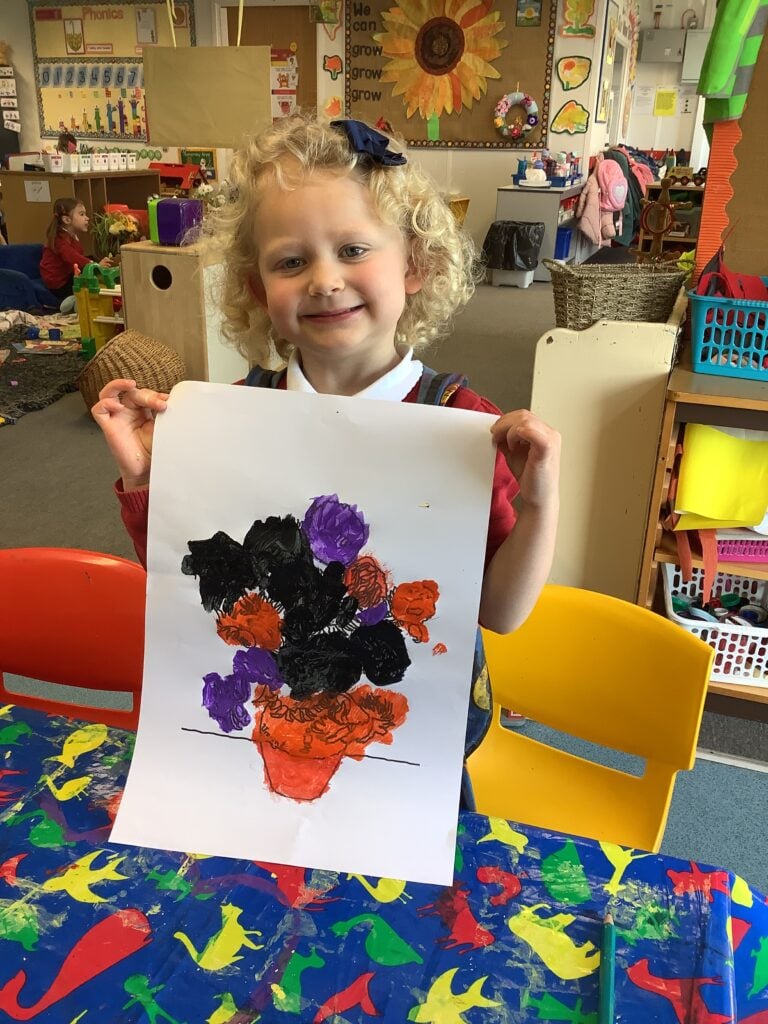
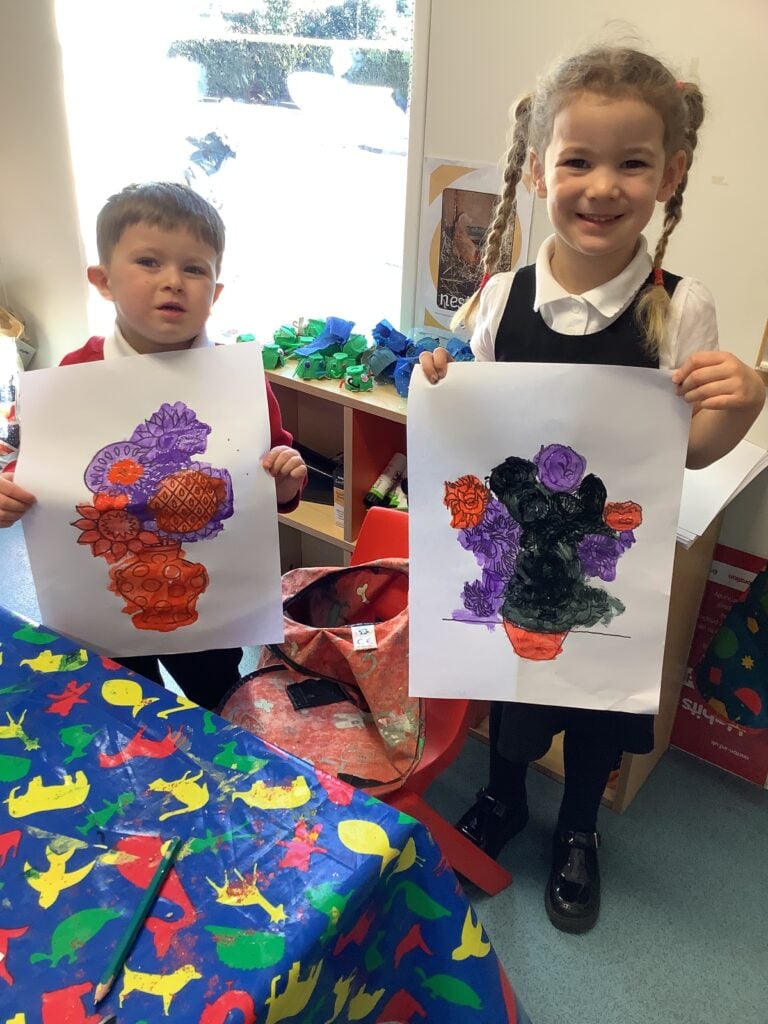
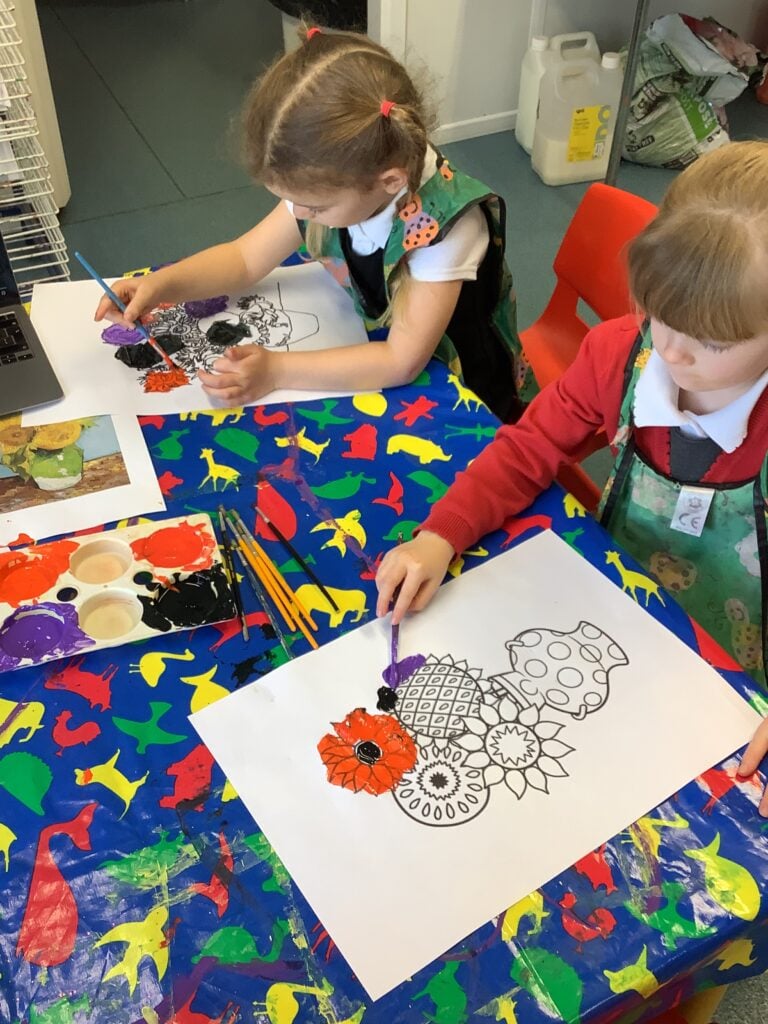
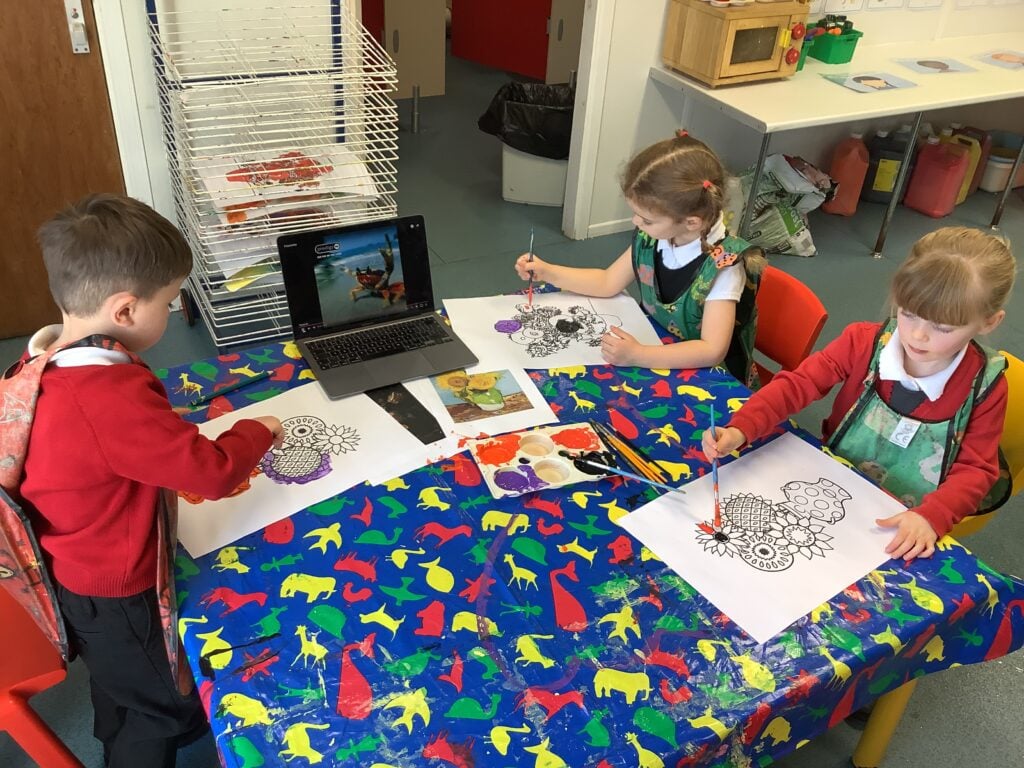

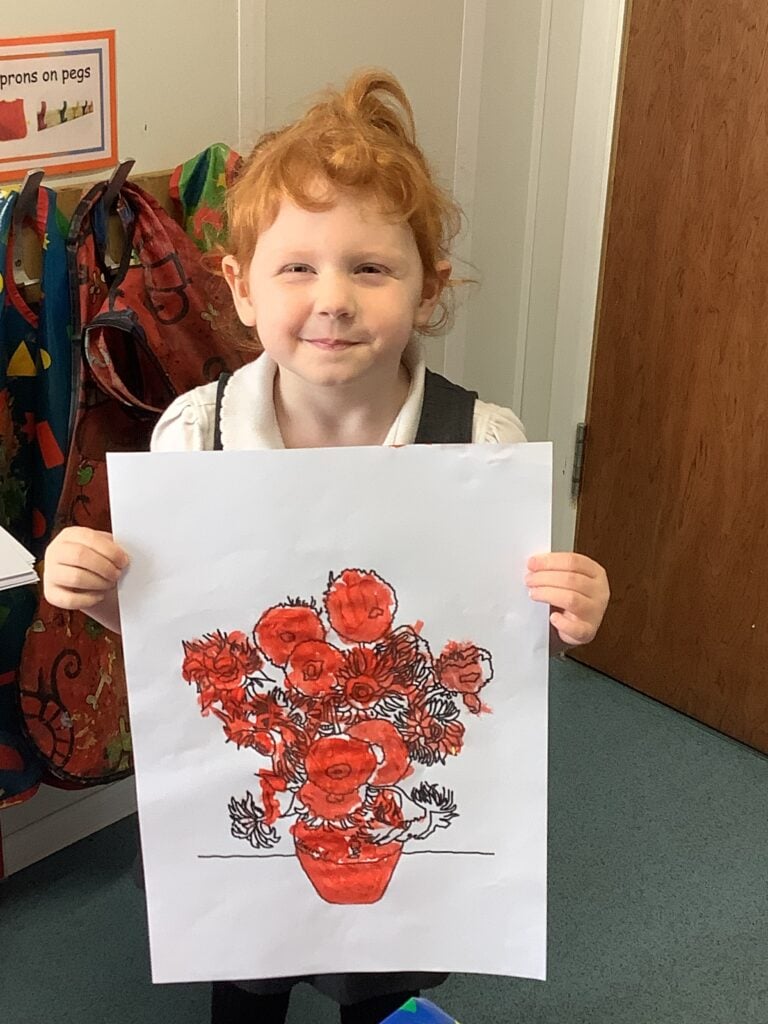
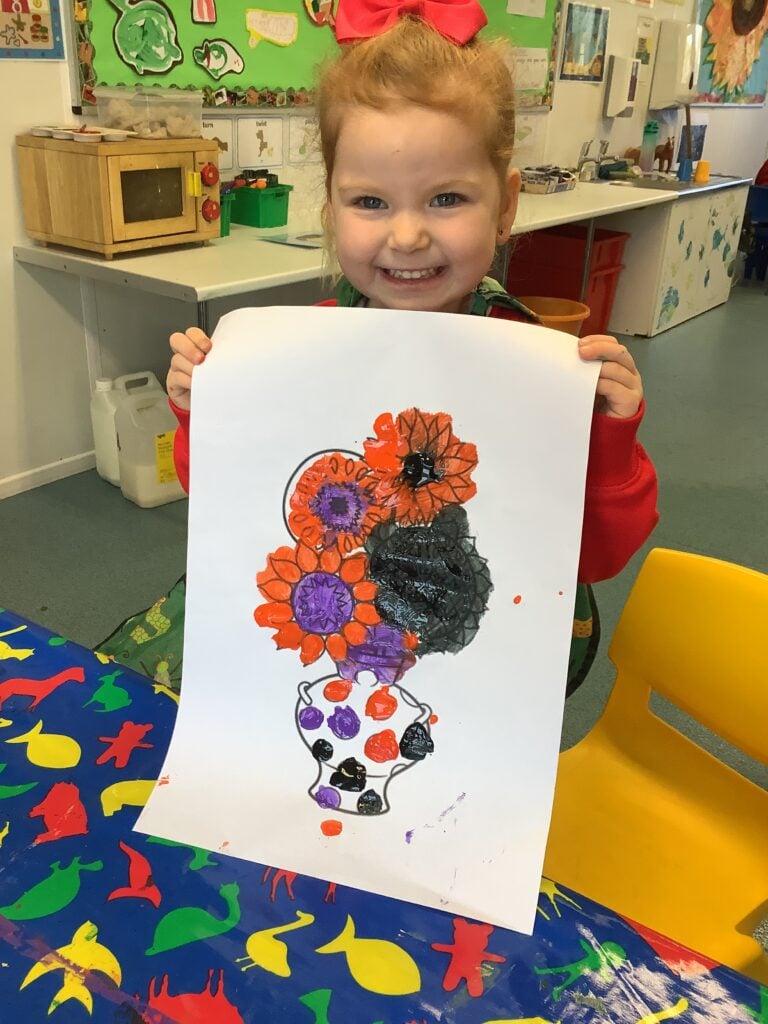
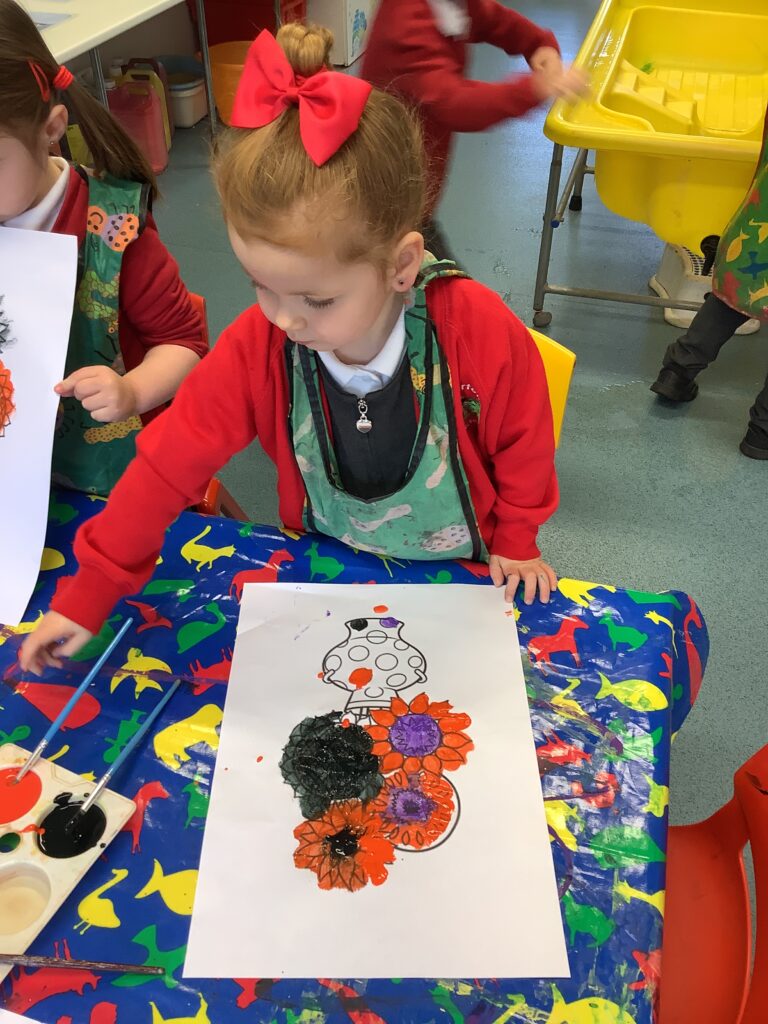
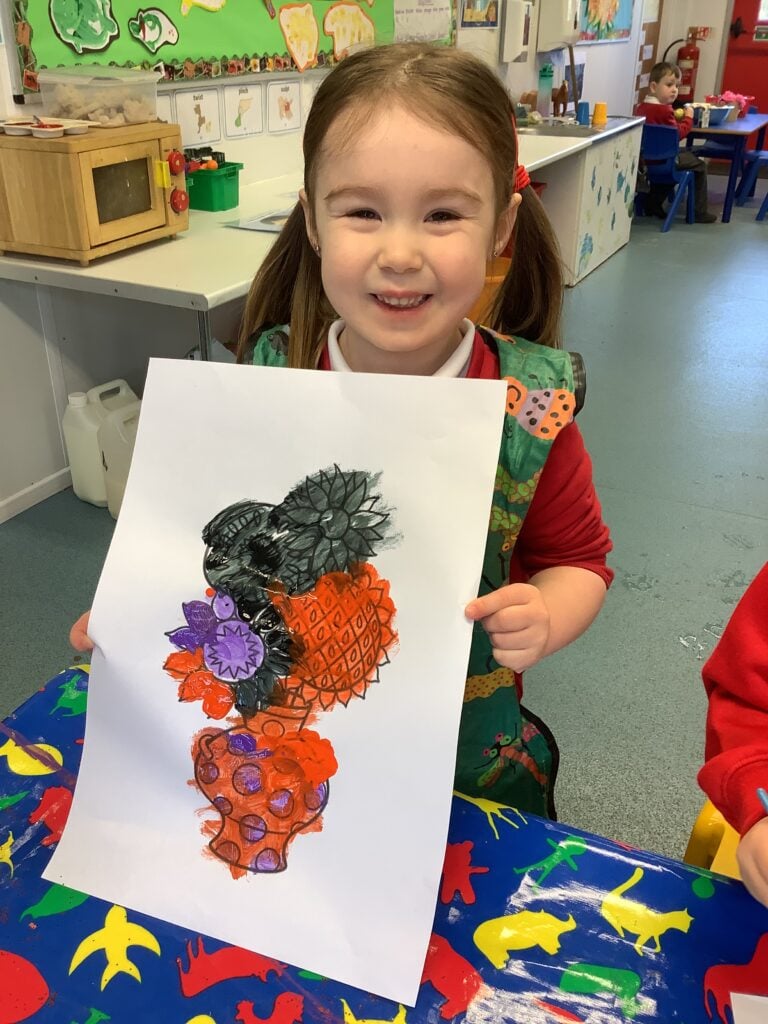
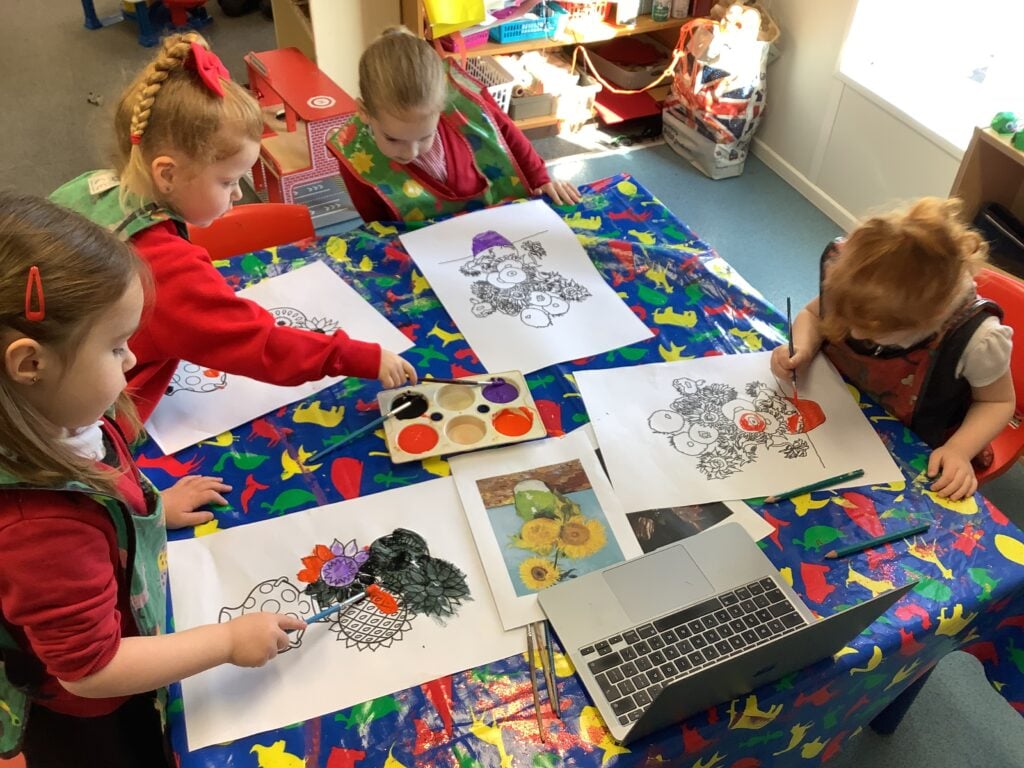
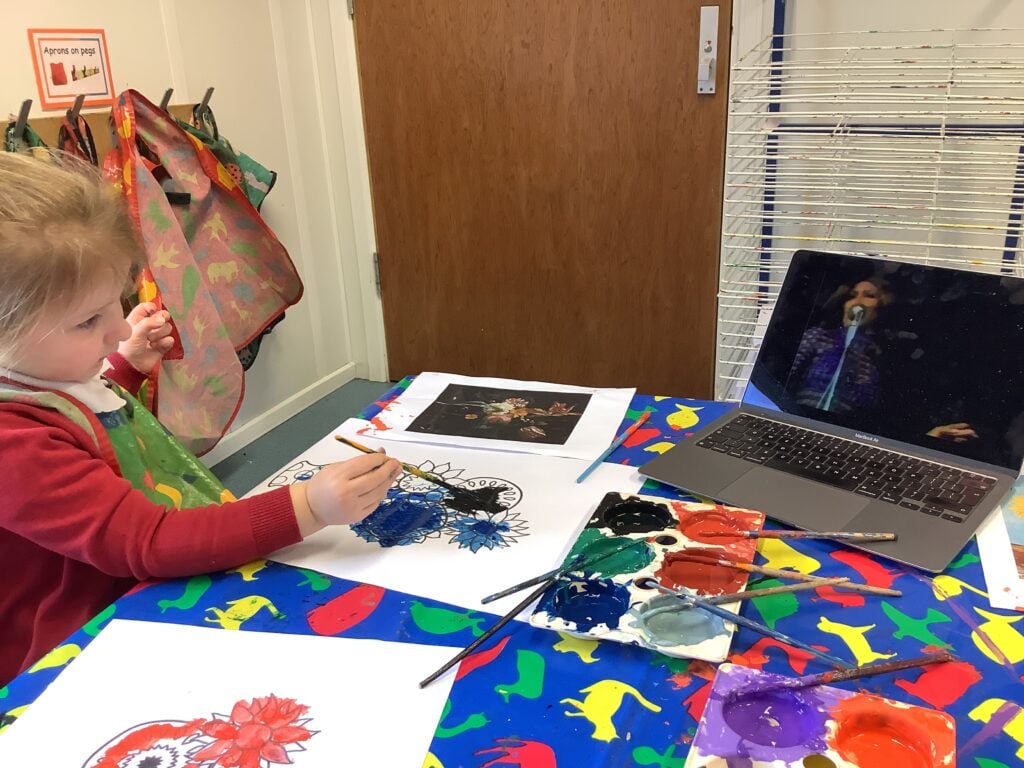
Over the past few weeks Nursery have been working hard as “Artists” to create a petal each or as a duo, in preparation to be used as part of their final product for this expedition. Through our stories “Little Sunflower” by Igloo Books and “Sam Plants a Sunflower” by Kate Petty the children gained inspiration for their artwork as they learnt how a sunflower grows and blooms. They have been investigating and exploring techniques using both paint and collage. The children have grappled with the effects that they could create using ready mixed paint and different brush strokes or manipulations of their paint brush. Some children chose either medium of paint or collage, whilst others chose to create with both. Here are some wonderful examples;
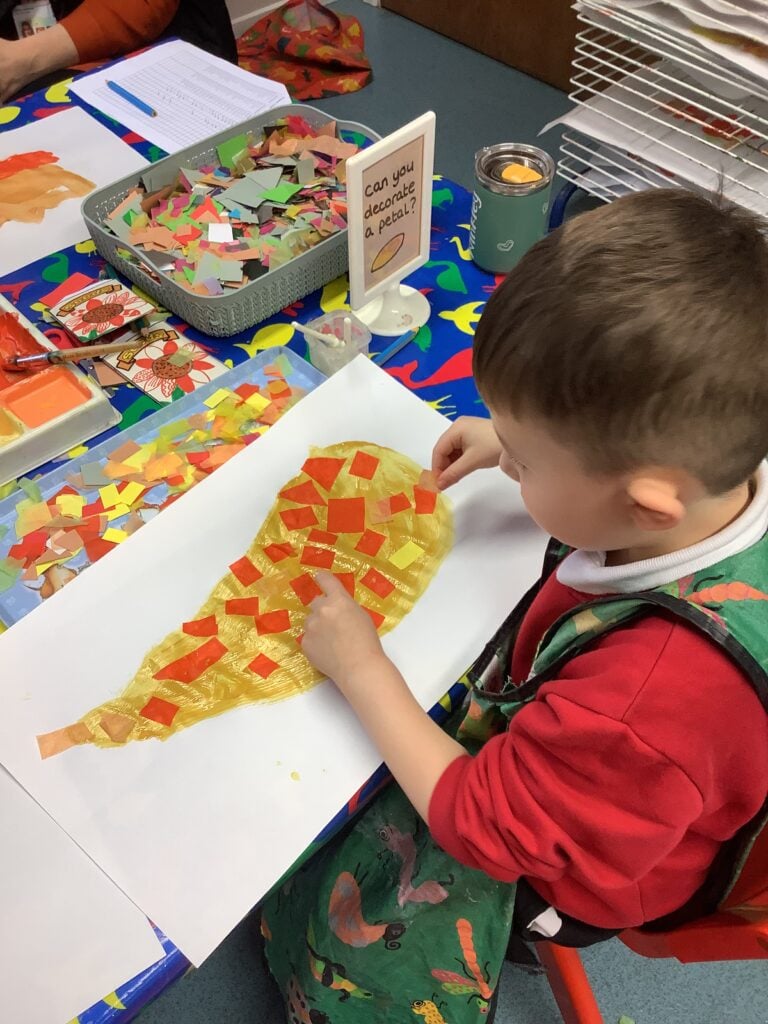
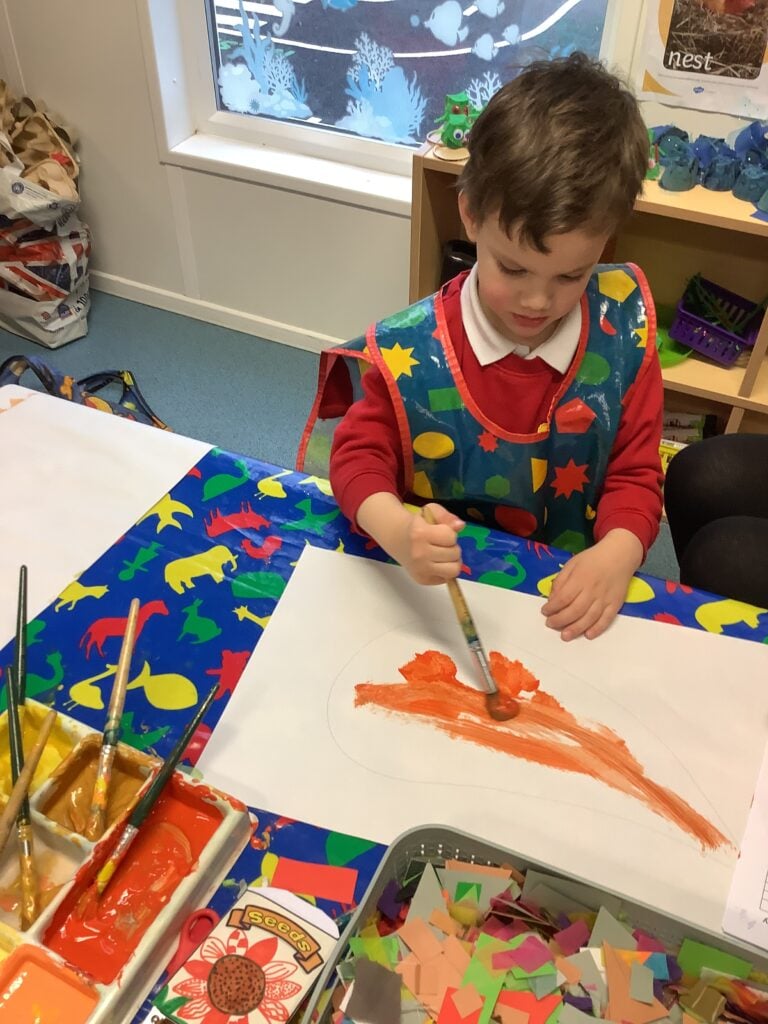
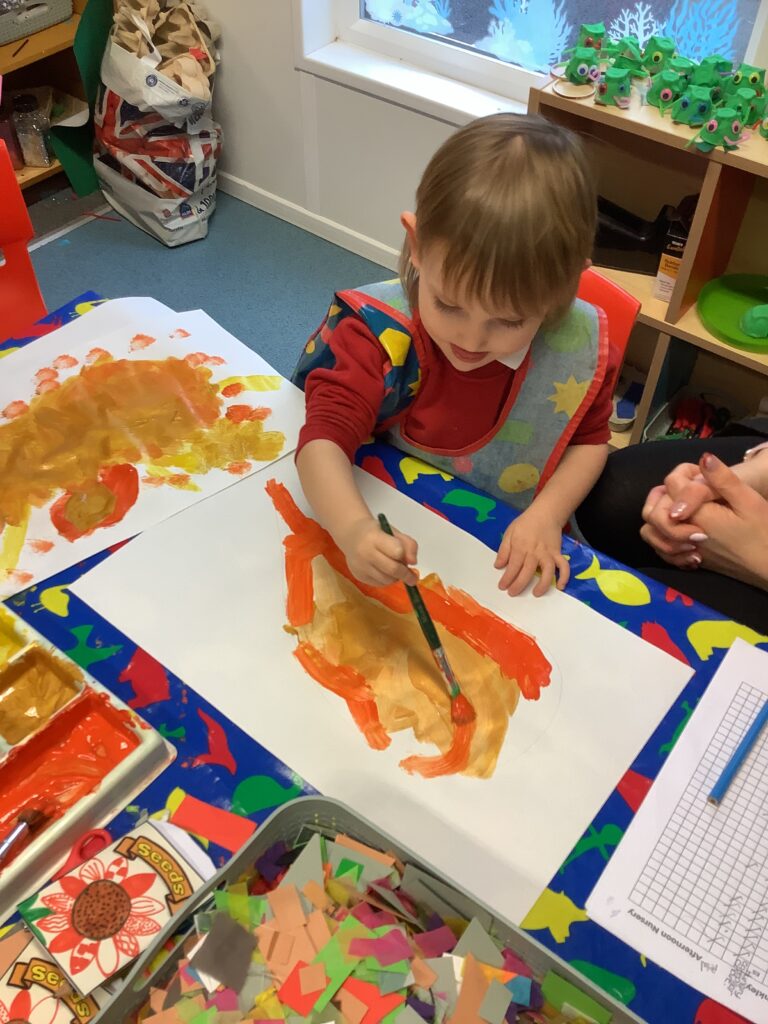
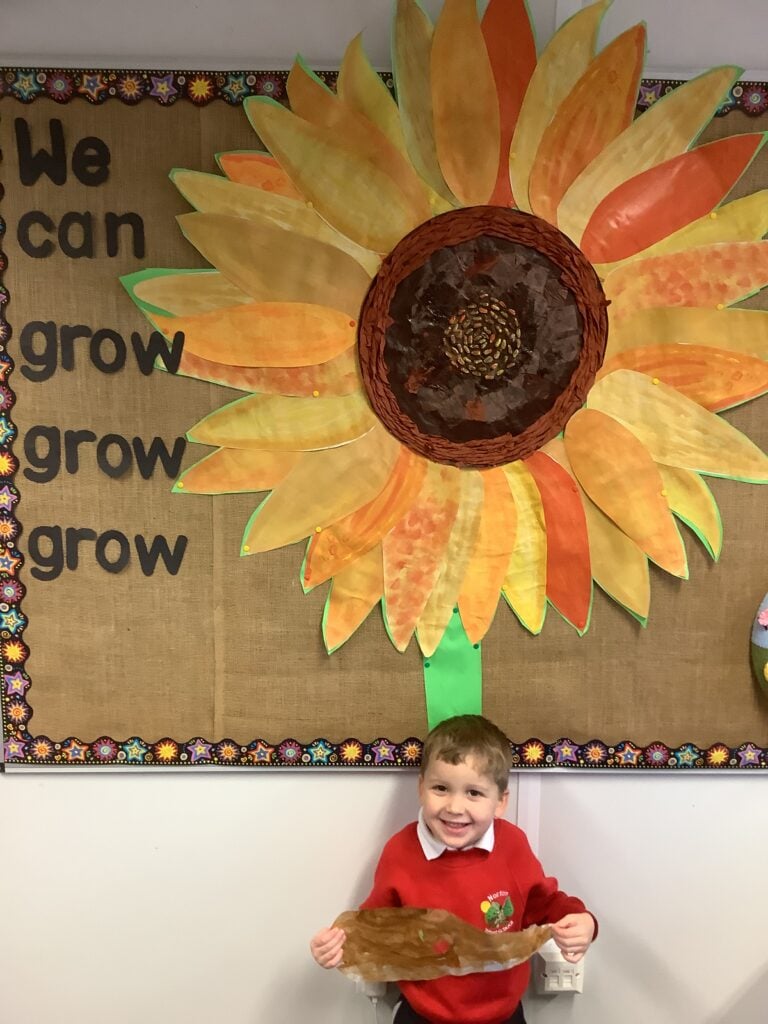
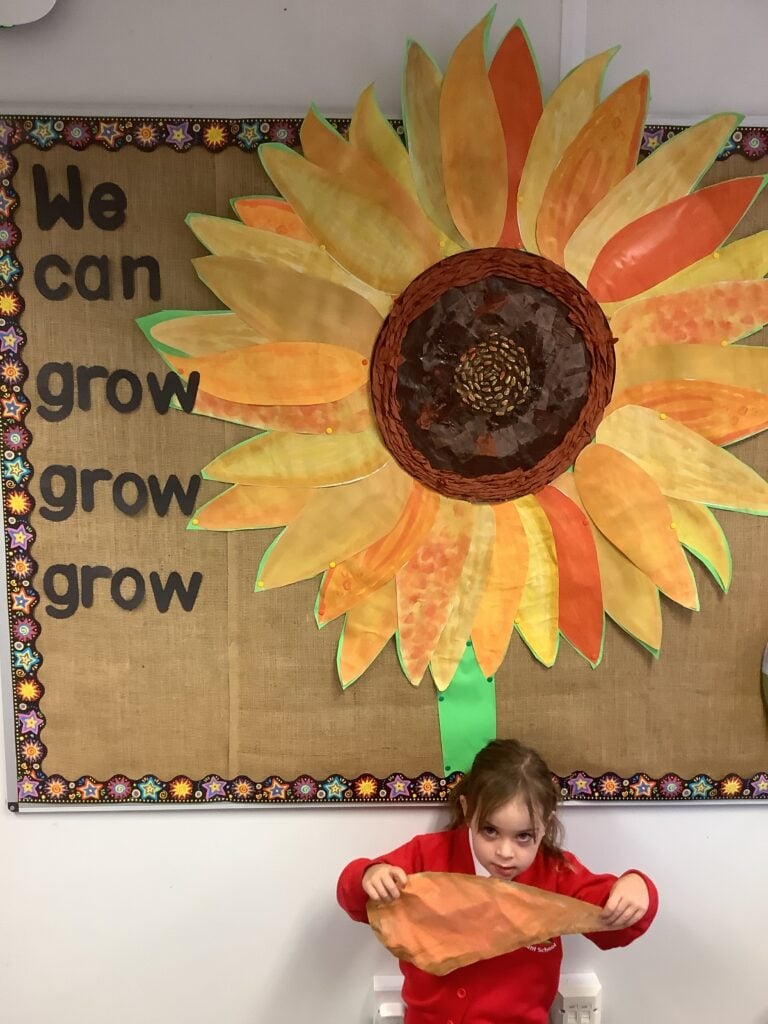
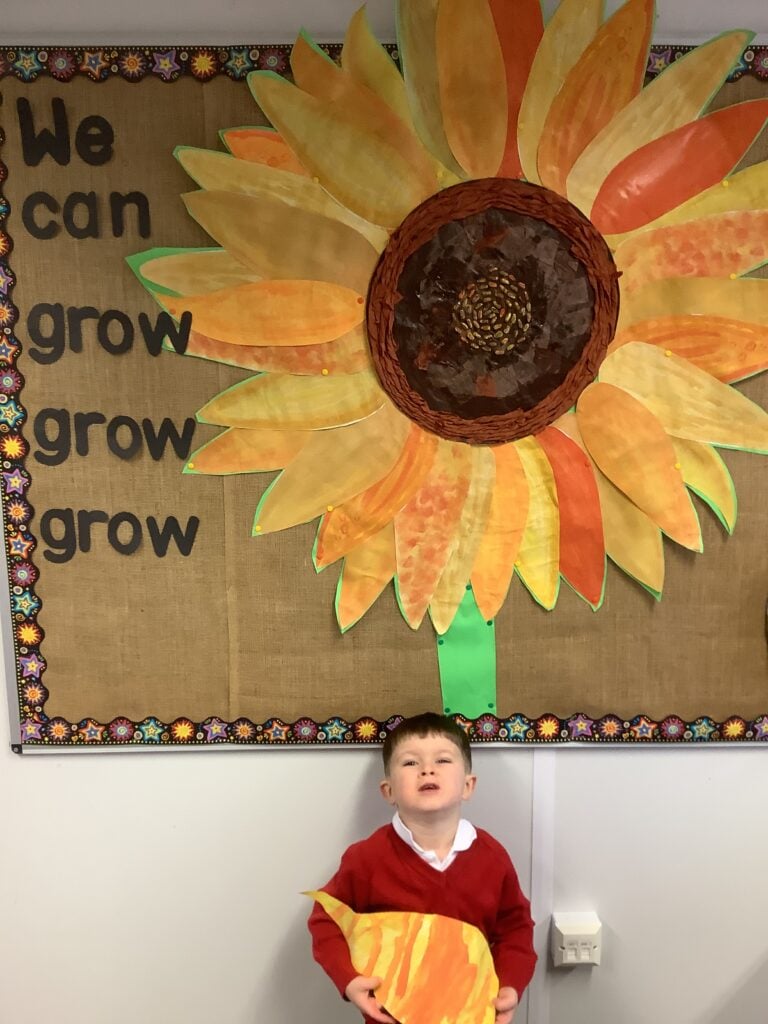
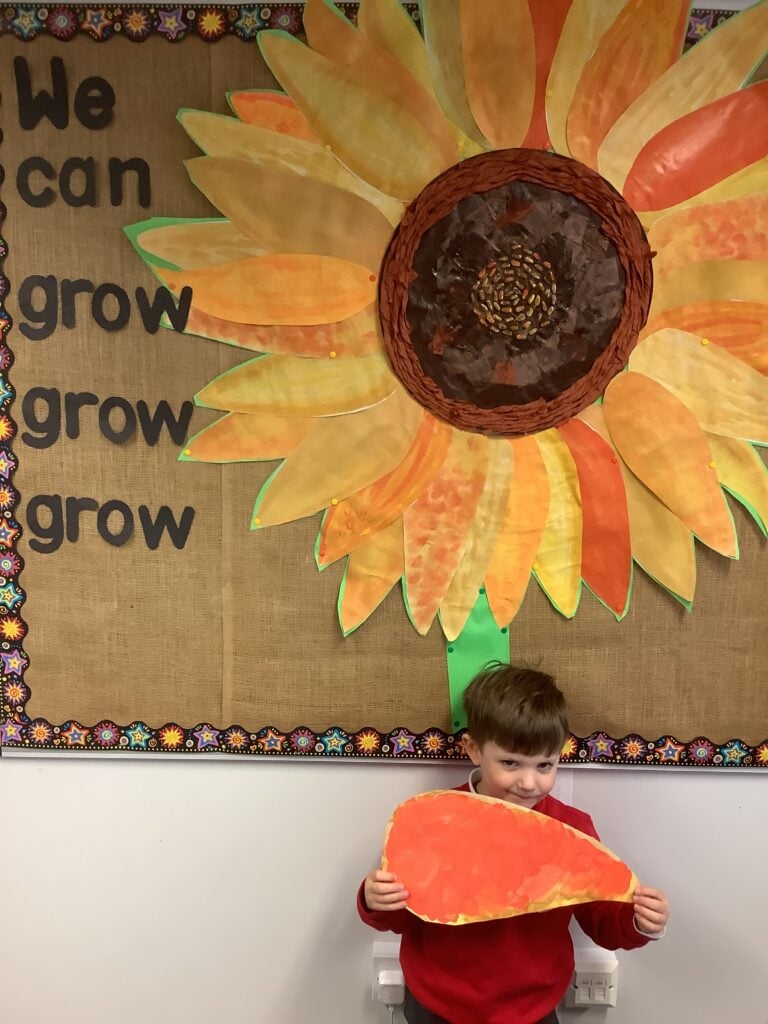
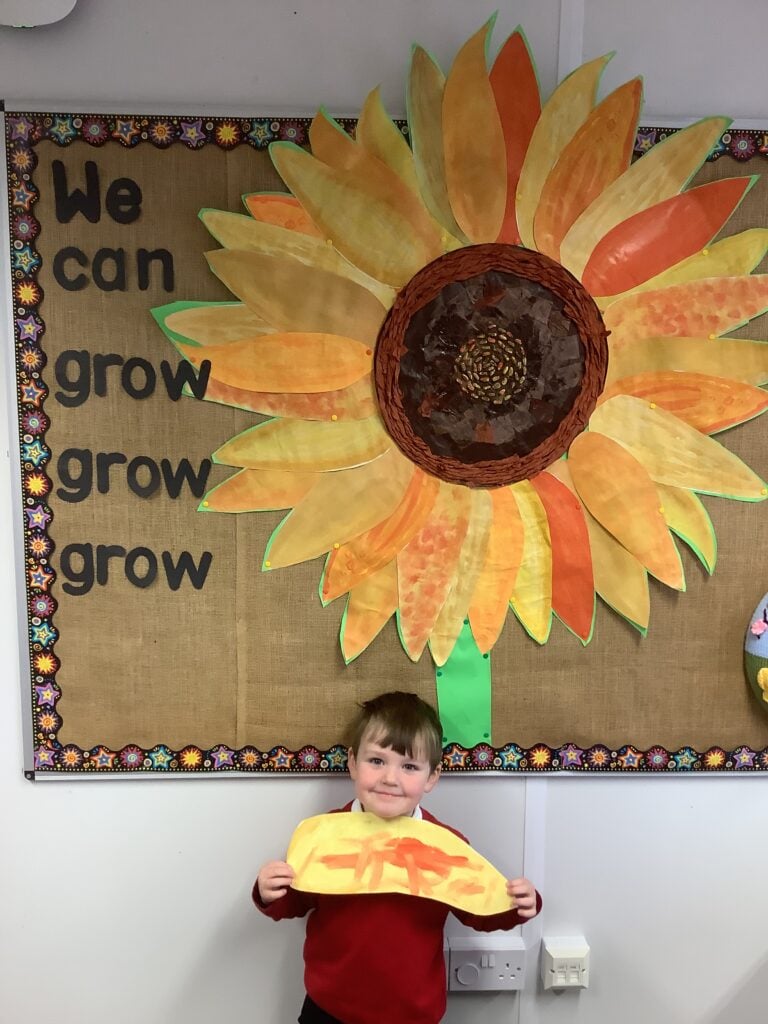

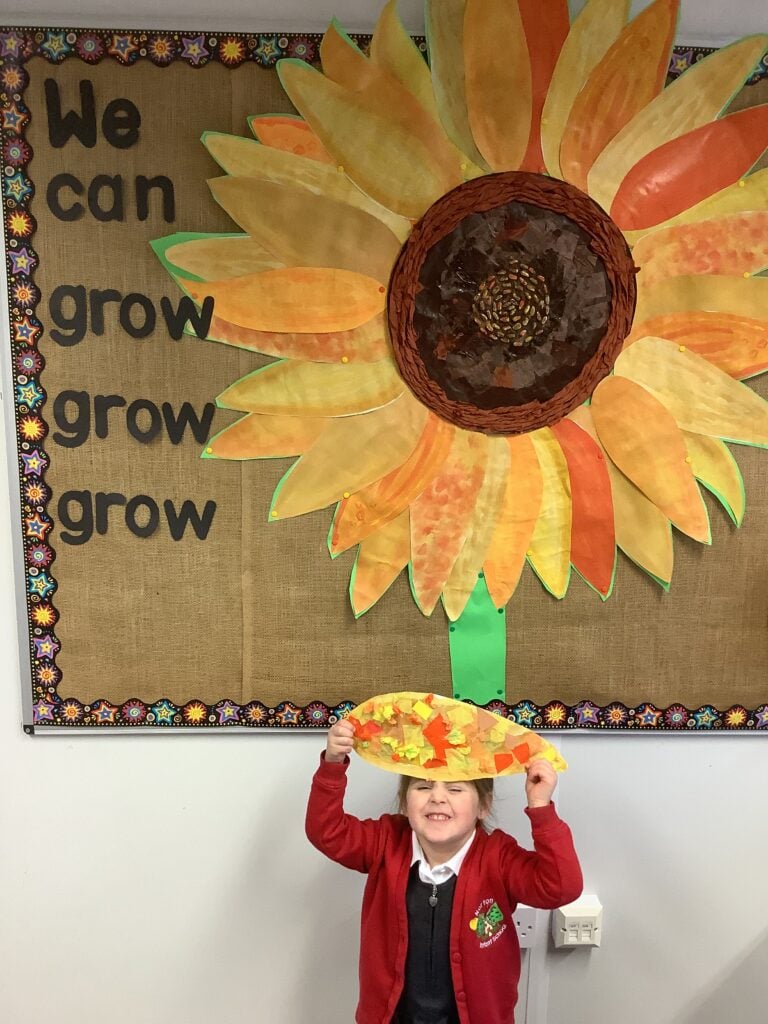
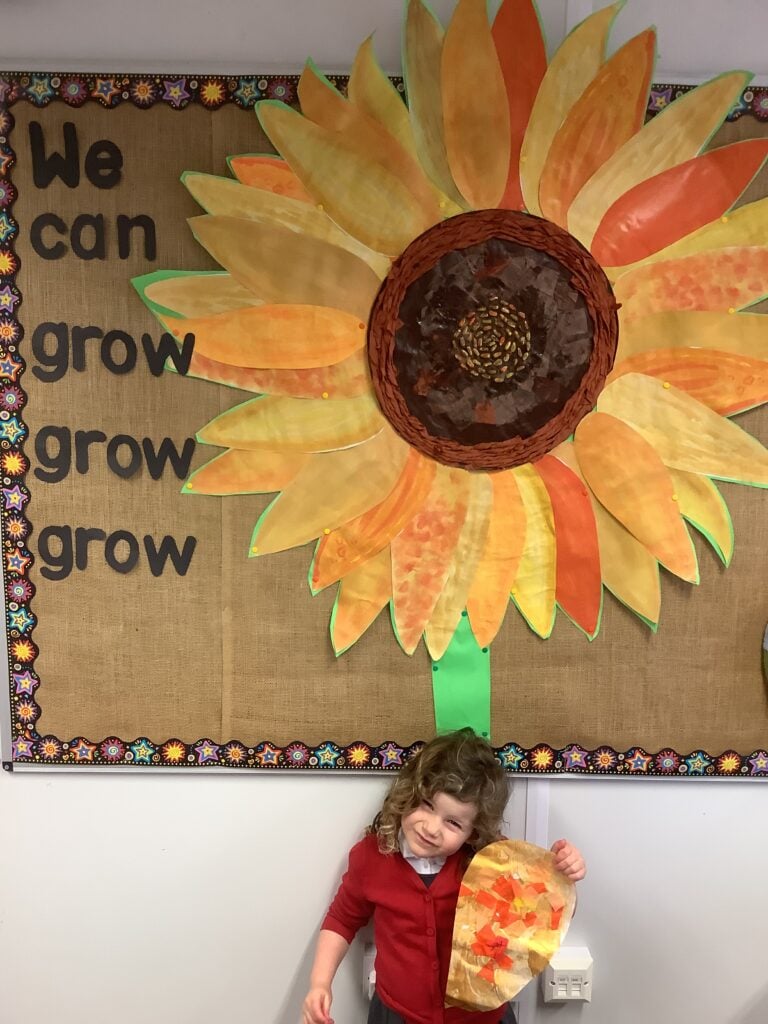
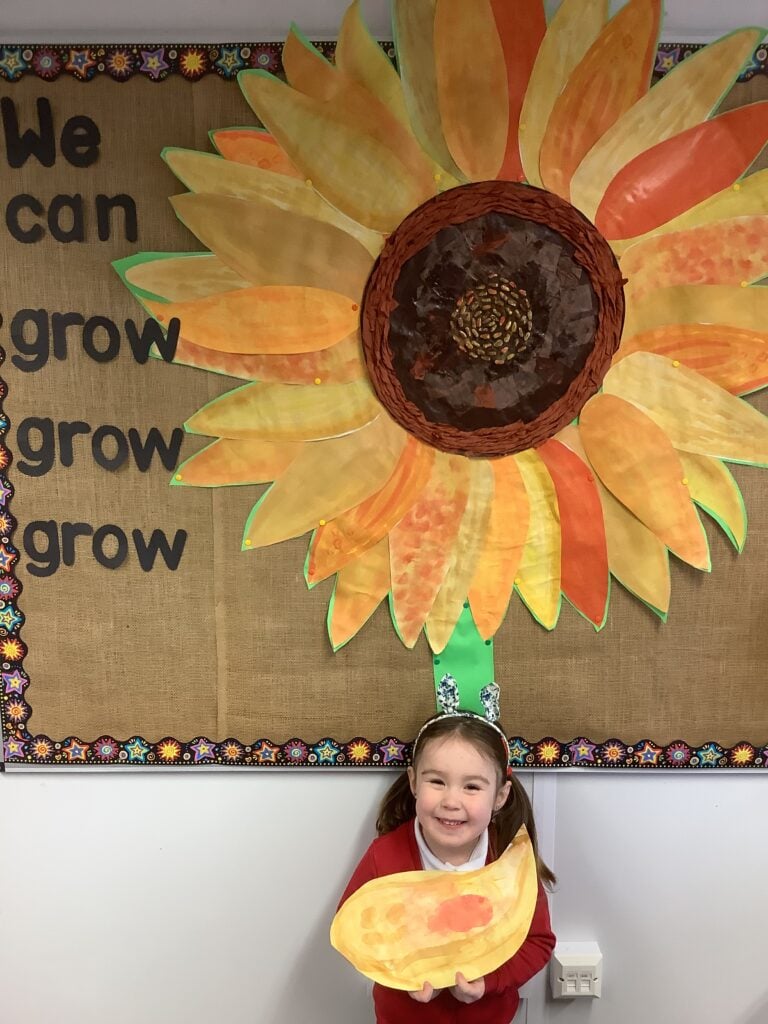
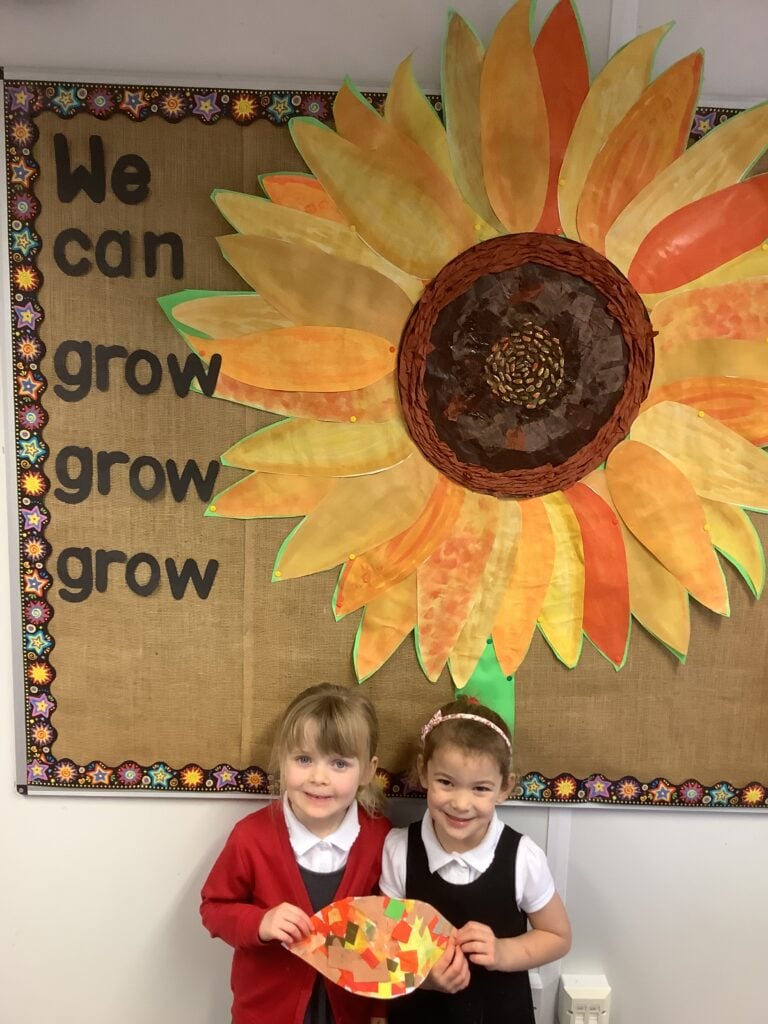
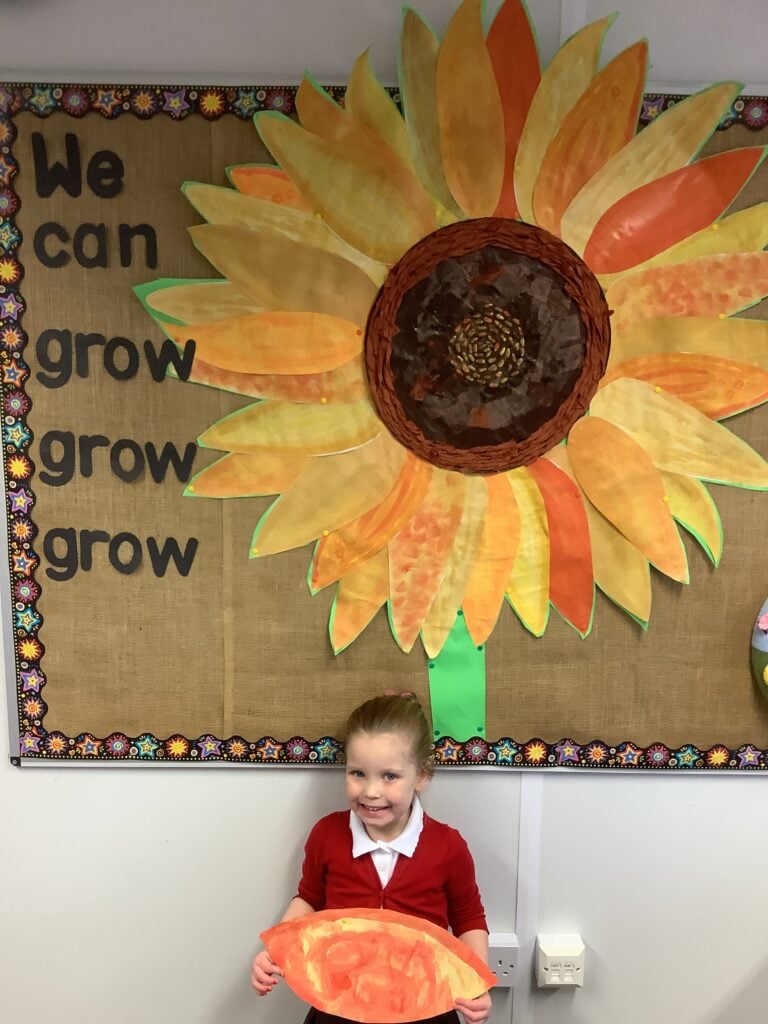

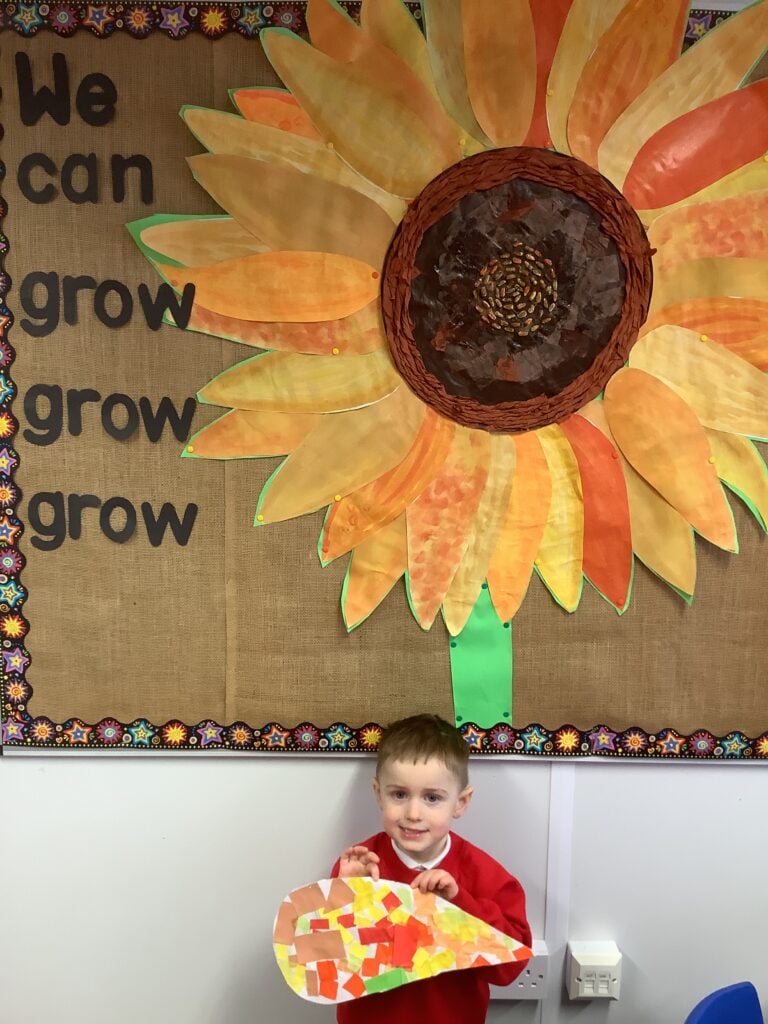
Upon completion of this beautiful artwork, the children worked collaboratively to first build their own sunflower for each nursery group, and then as a collective of Nursery as a whole merging both groups petals (later to be revealed on their final product at our celebrations of learning). Just look at the children’s beautiful work!
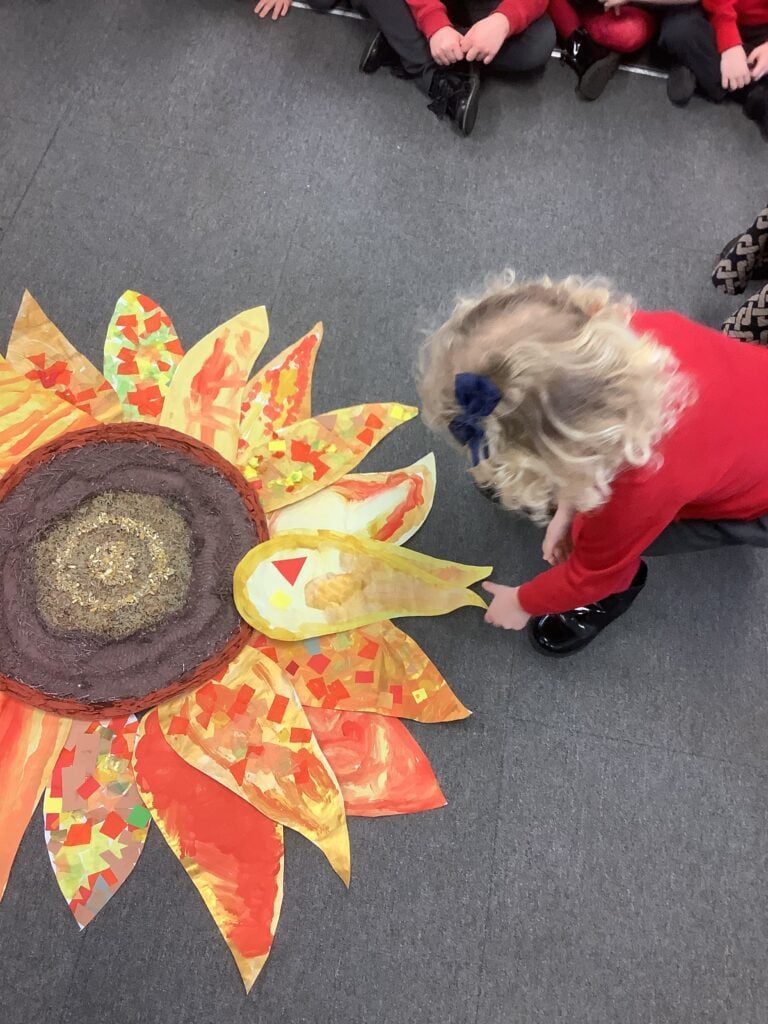
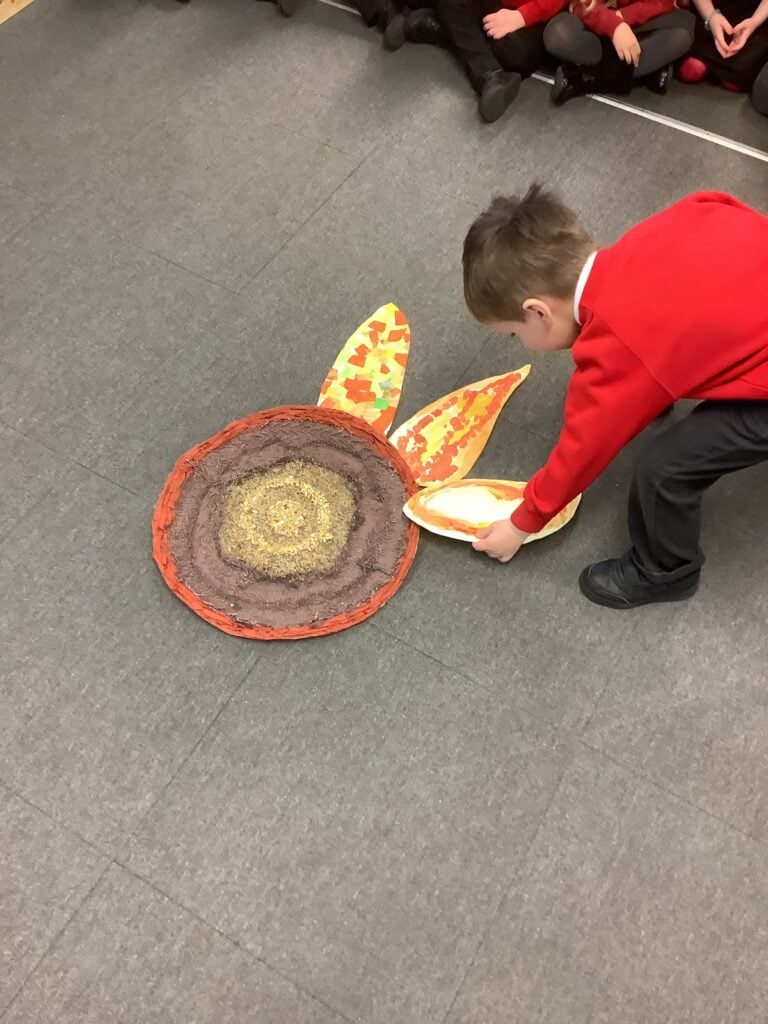
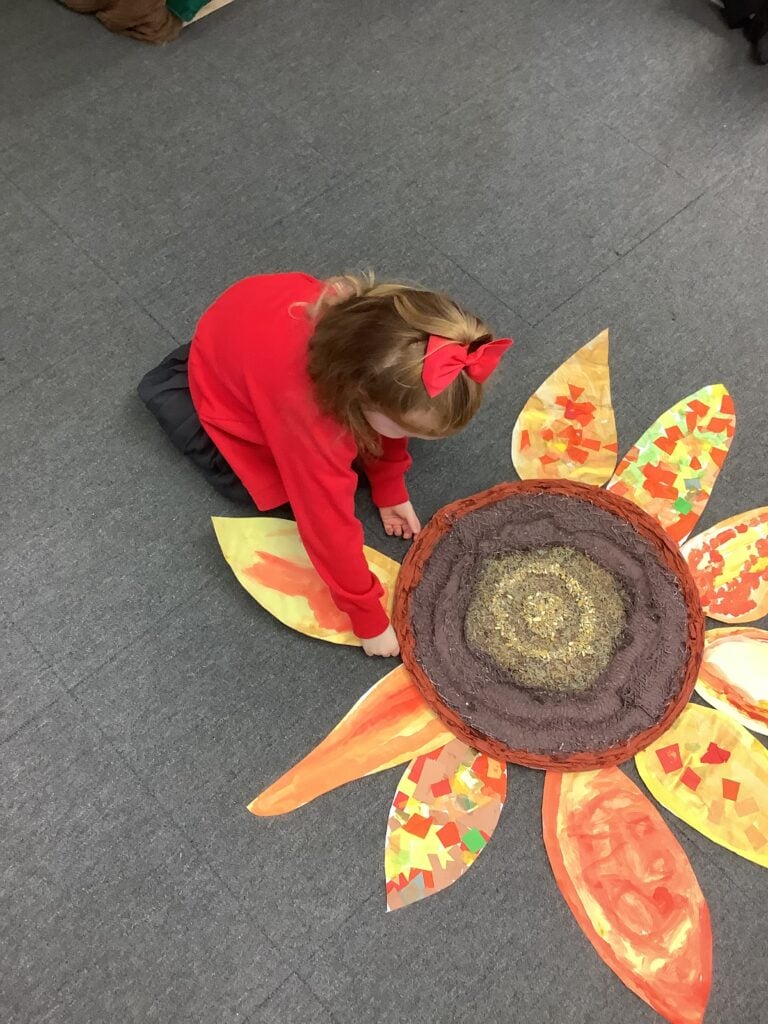

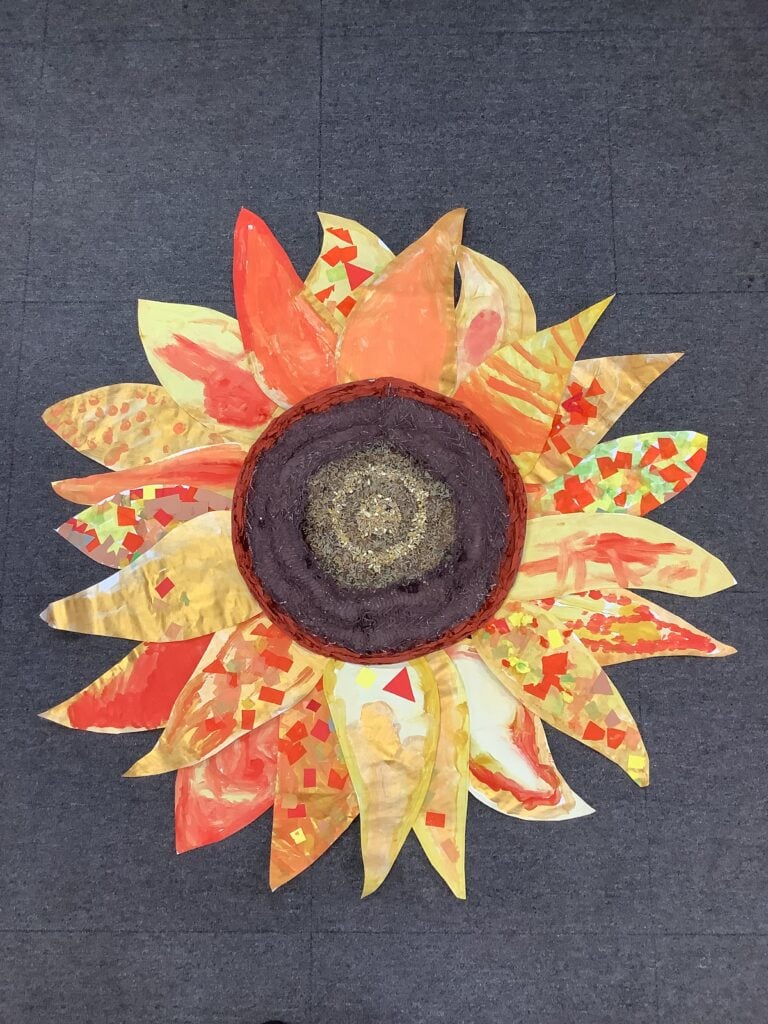
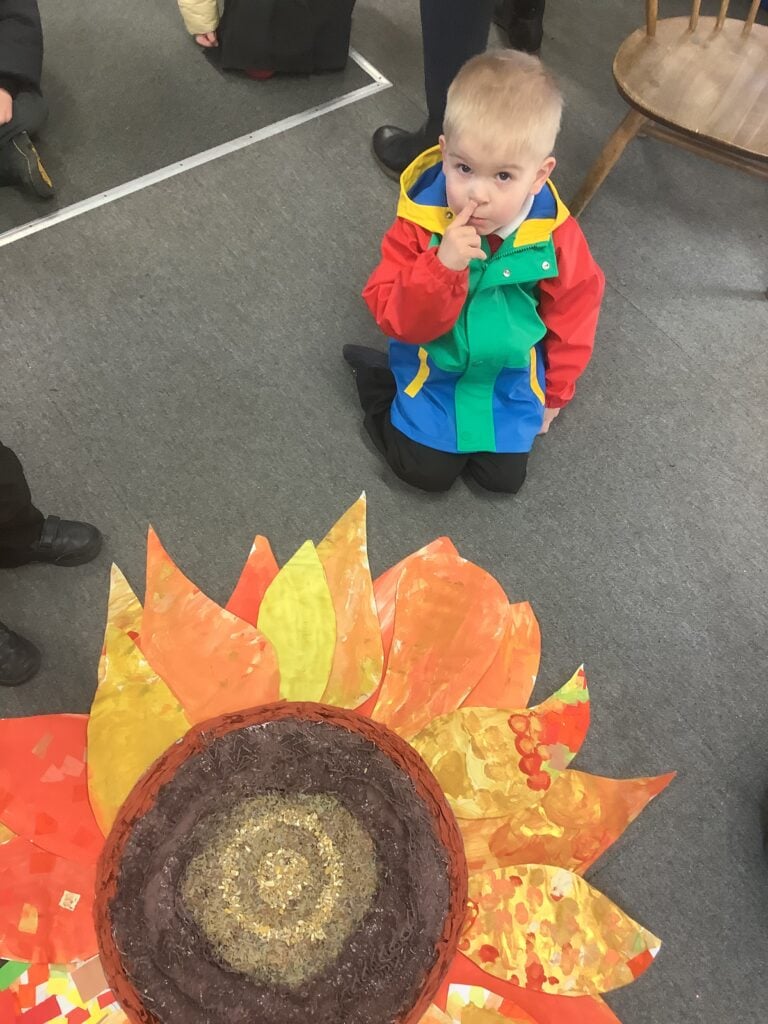
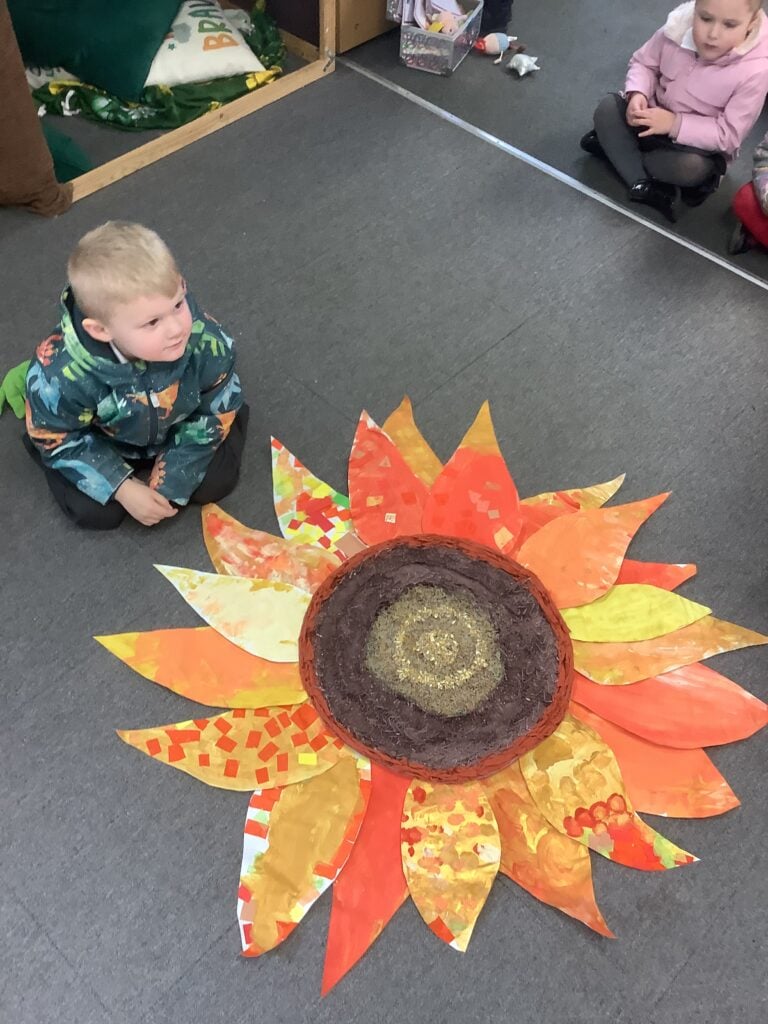
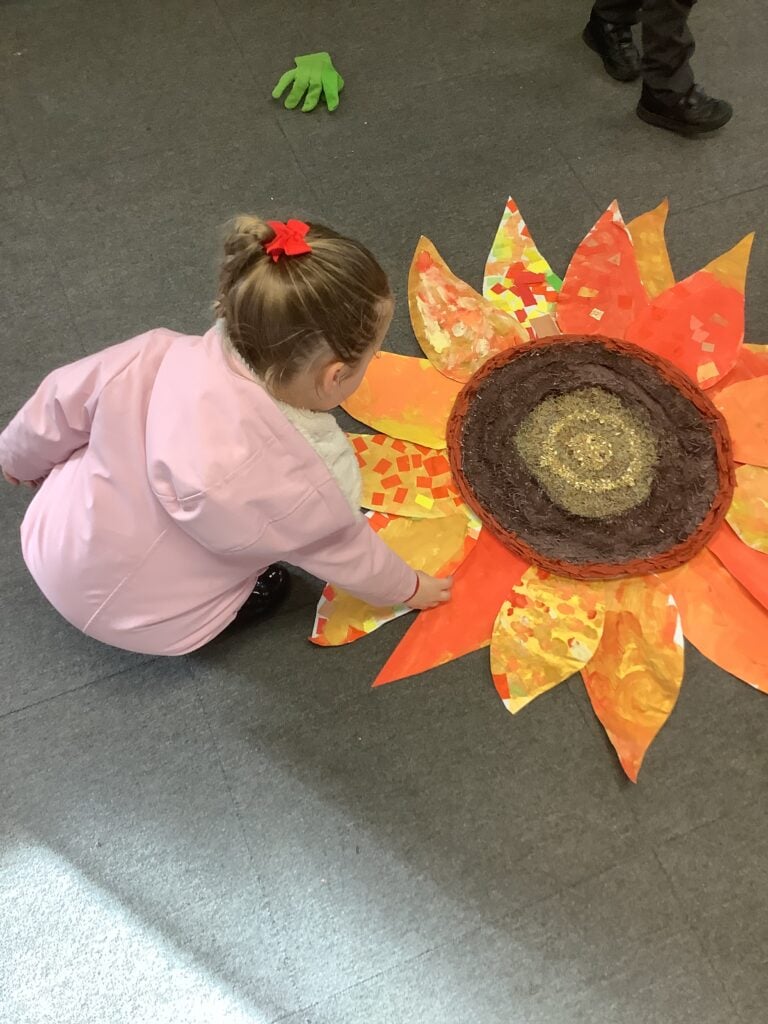
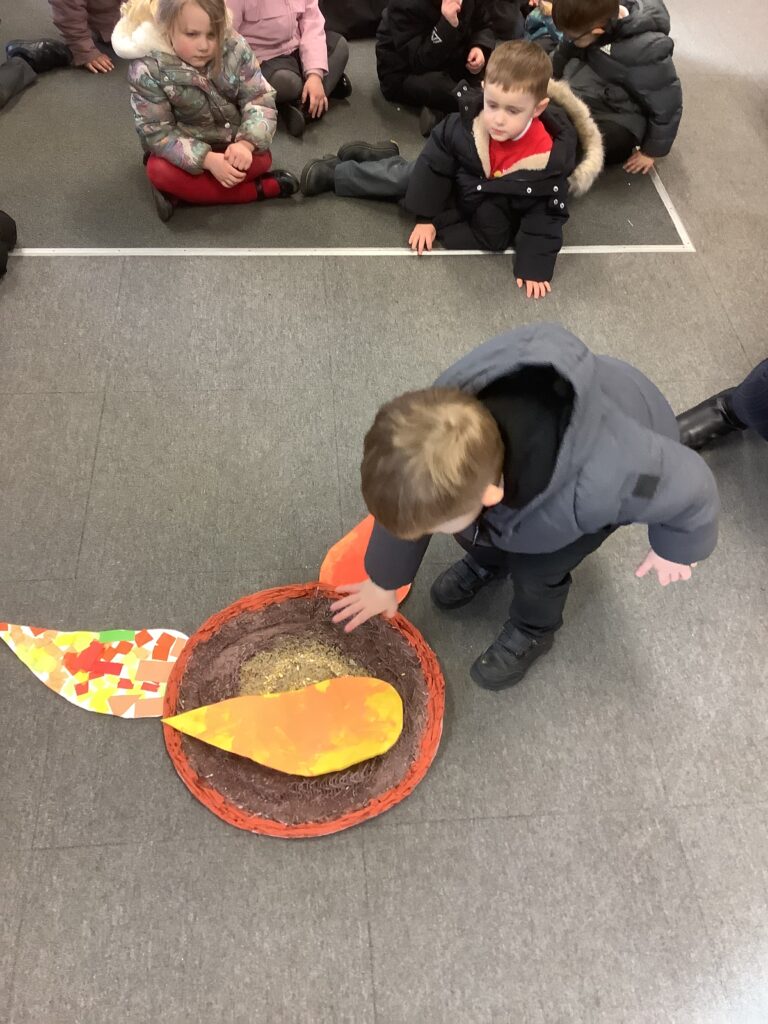
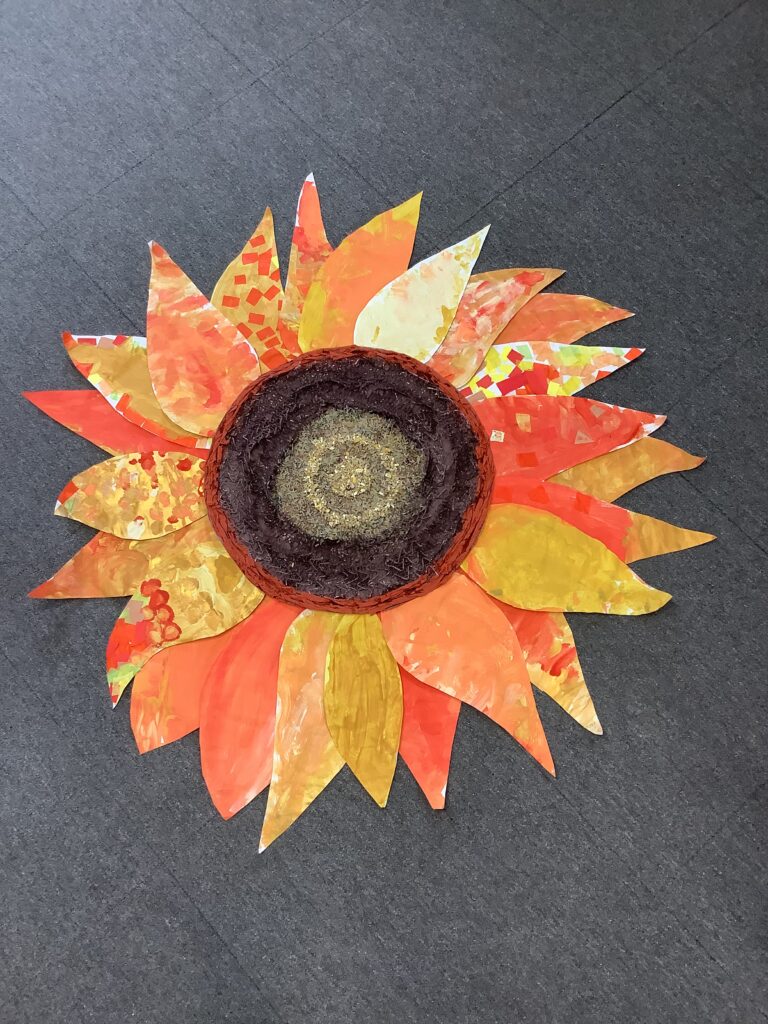
We have really been activating our maths courage this morning with our first lesson on division. We used counters and collaboration to help us.
Super resilience Class Five!
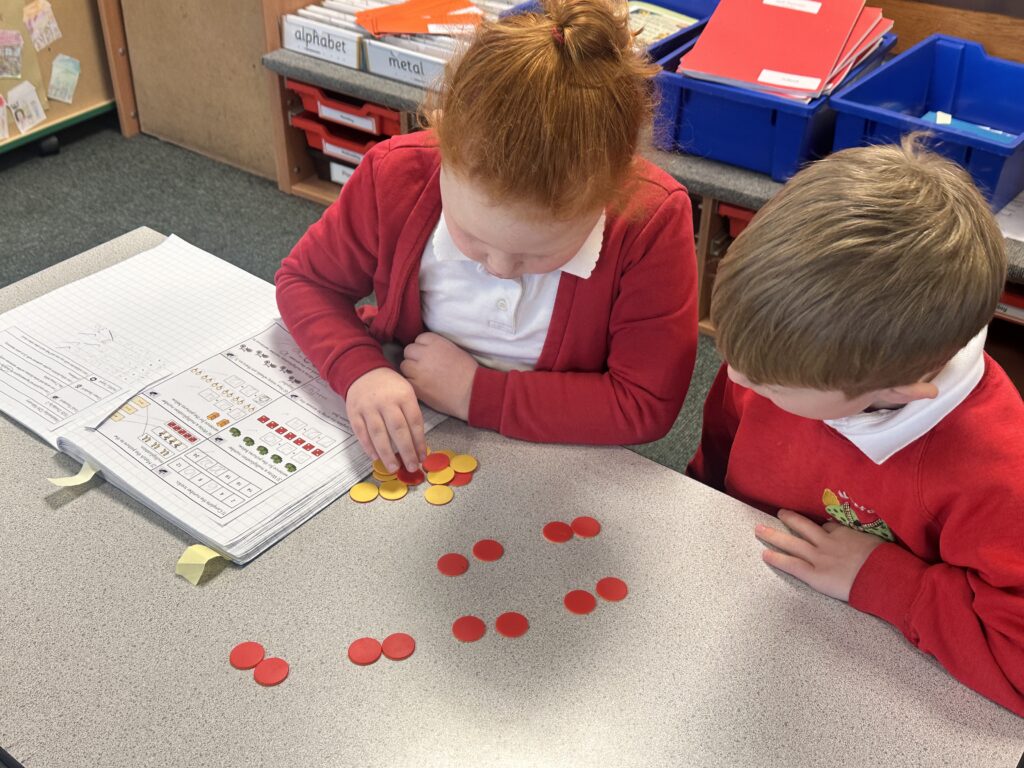
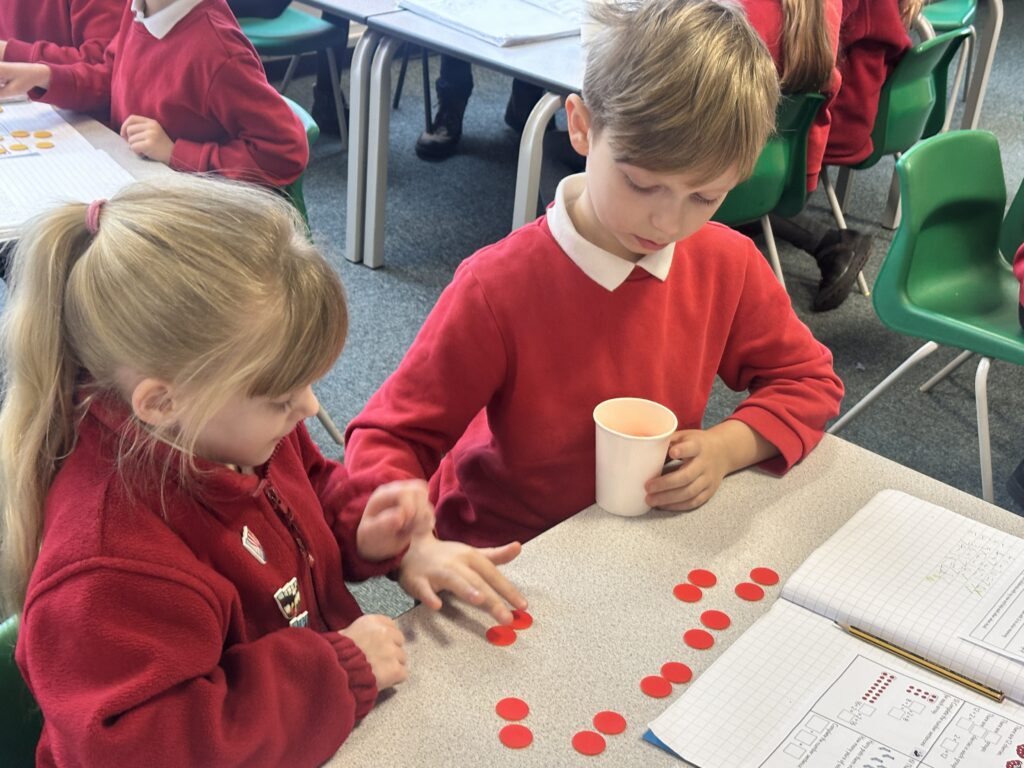
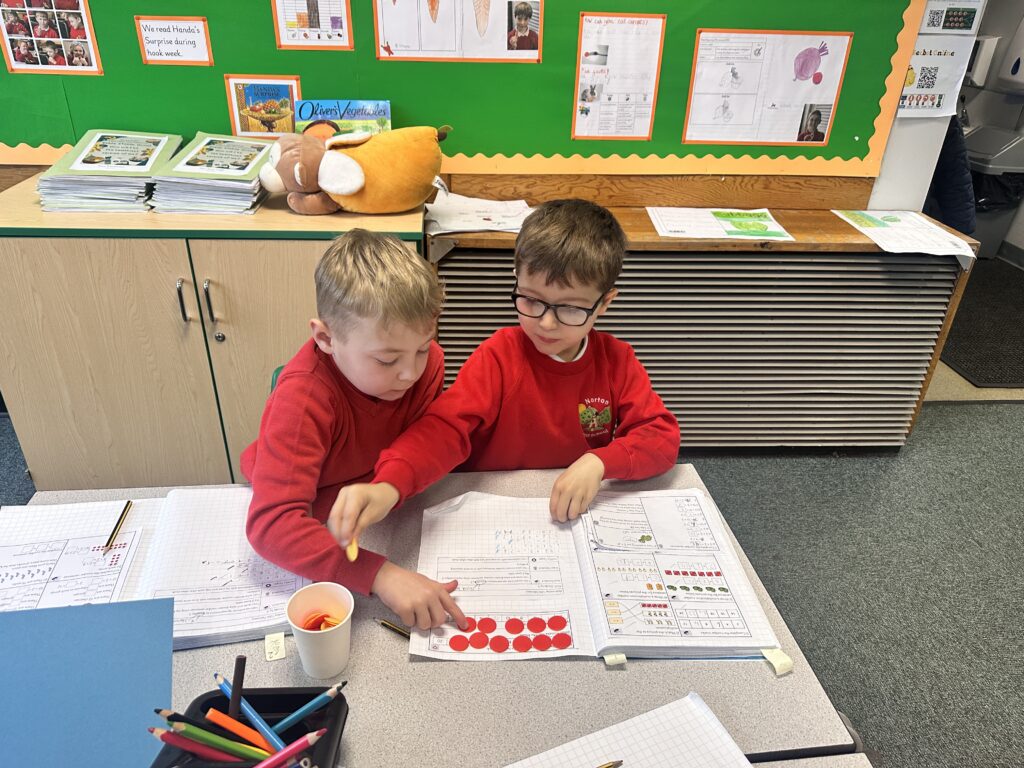
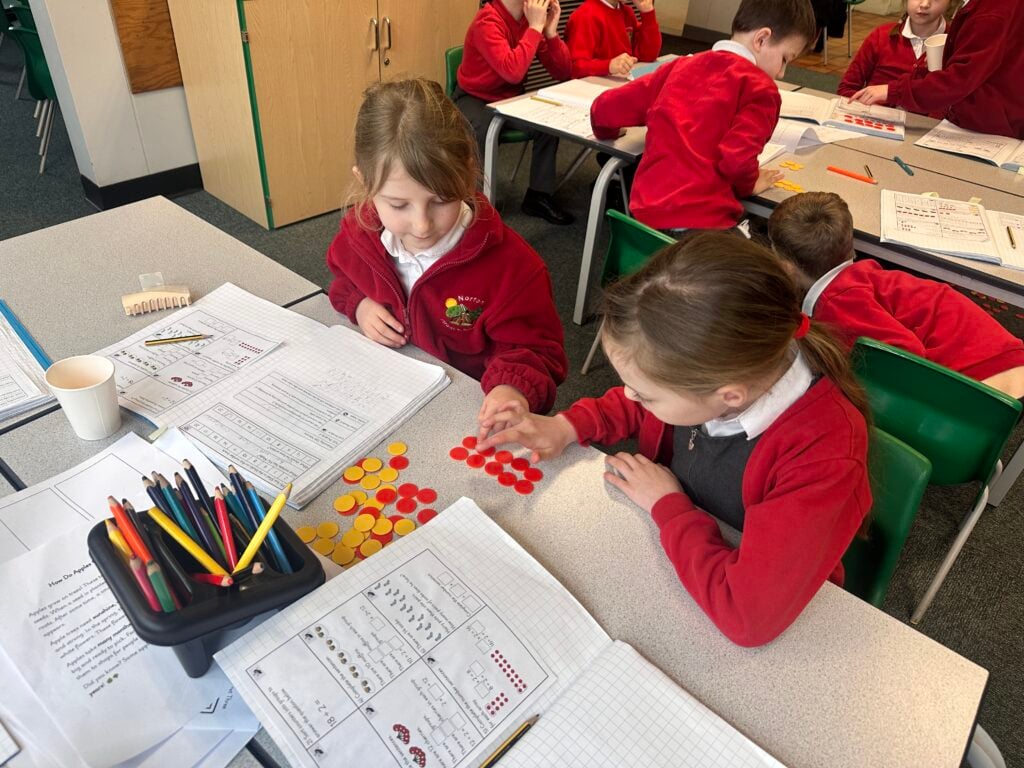
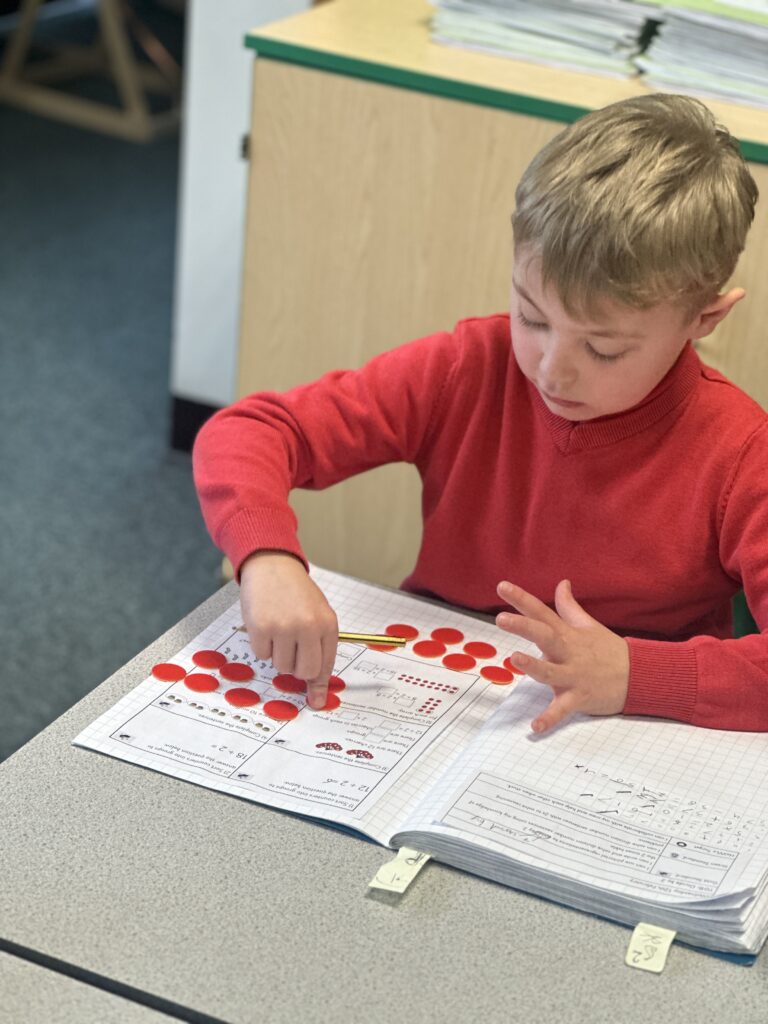
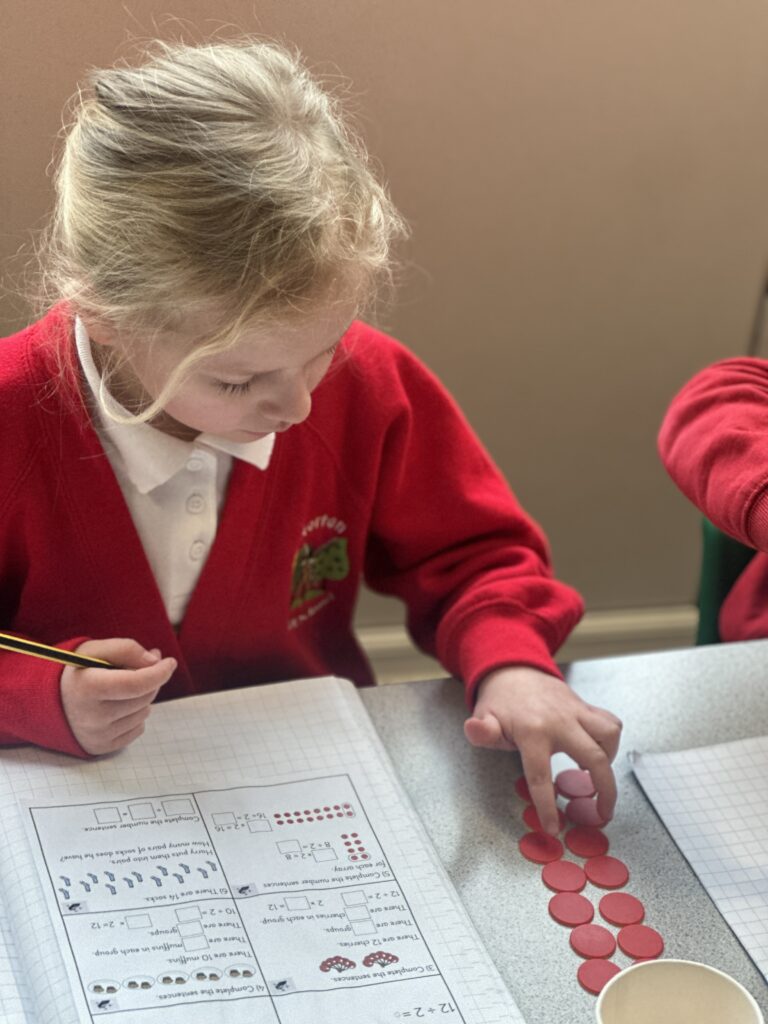
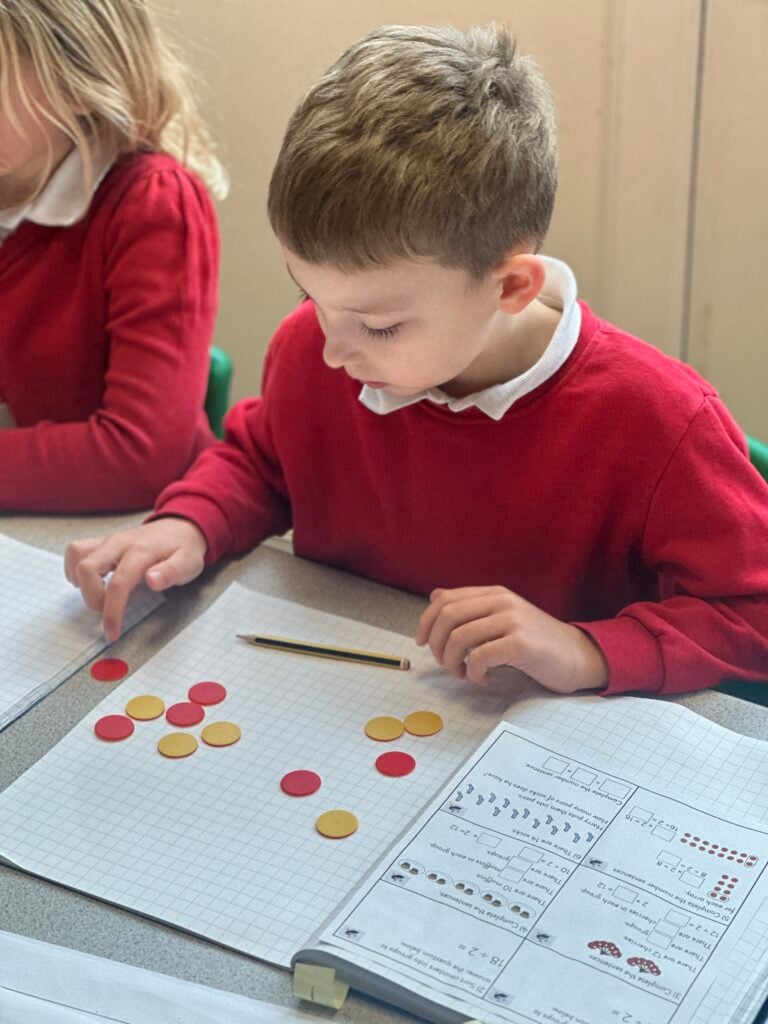
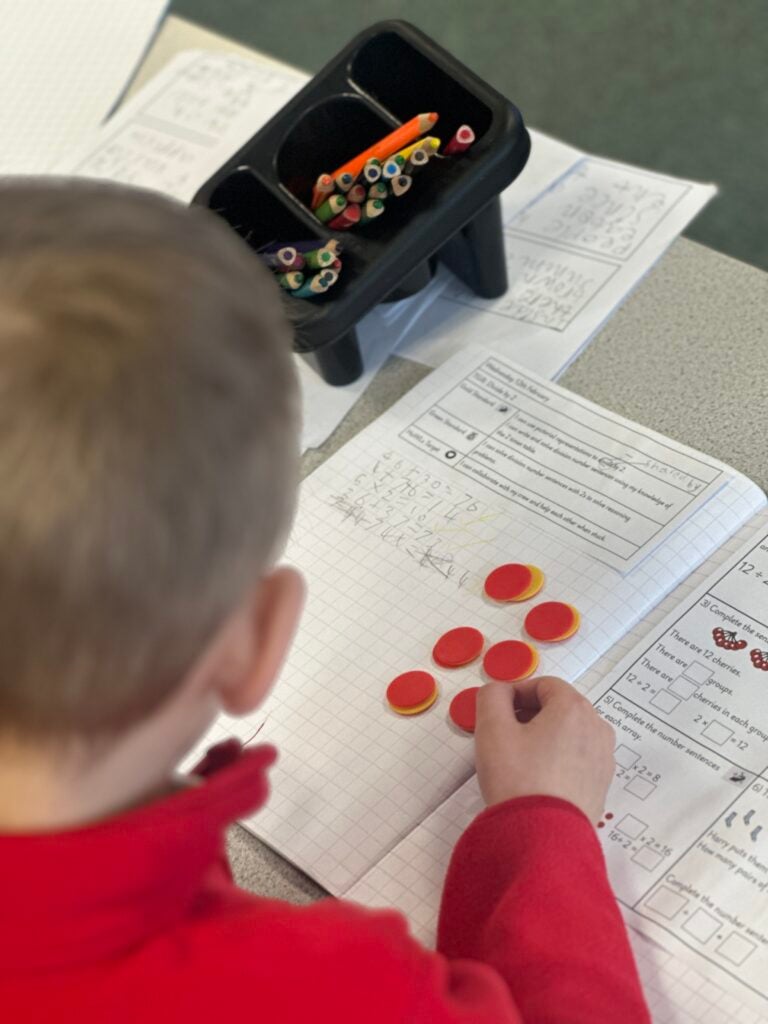
This week Nursery have been enjoying their outdoor learning/play at the same time as one or both of the Reception classes in EYFS. For younger children this can be daunting, having to share their space and equipment with older children and finding the courage and confidence to ask others for turns with toys. With support and modelling the children have began working collaboratively, beginning to resolve minor conflicts and starting to work co-operatively with each other ready for the summer term. The reception children were welcoming and kind, showing compassion to our youngest children. Thank you, beautiful work guys.
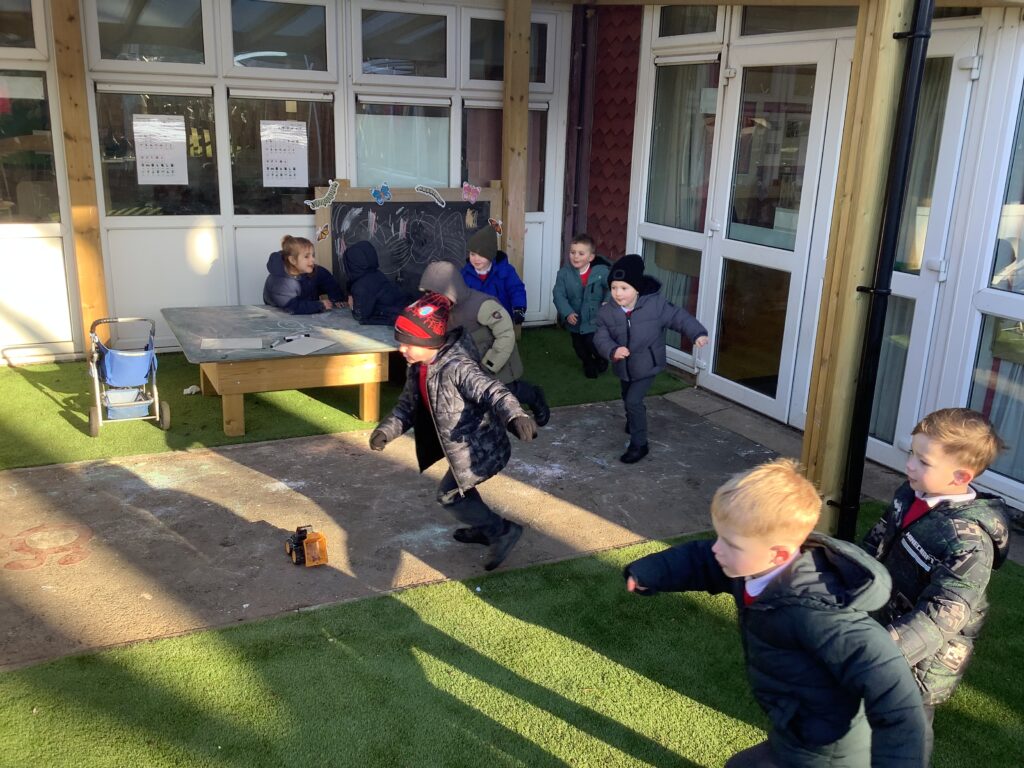
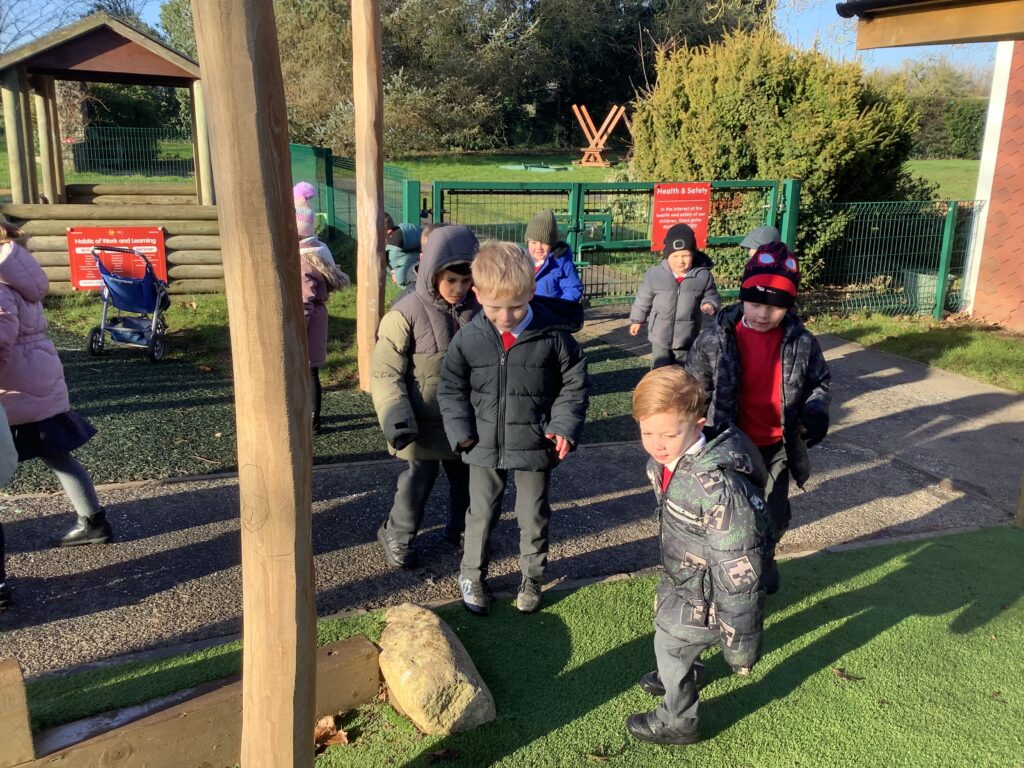
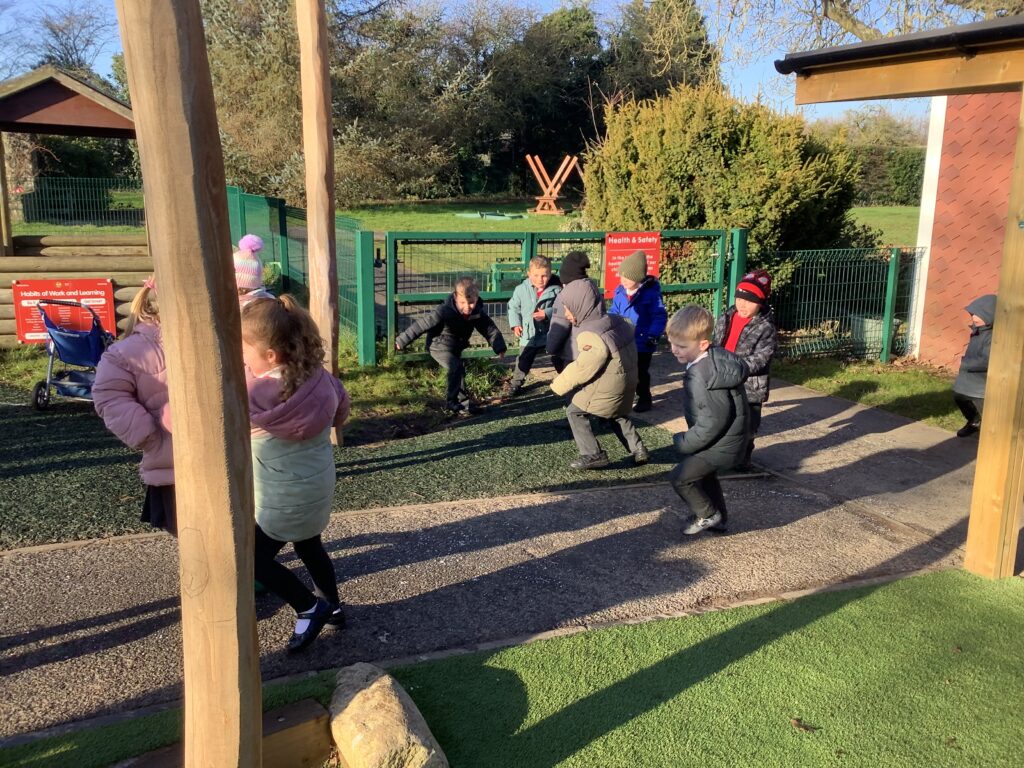
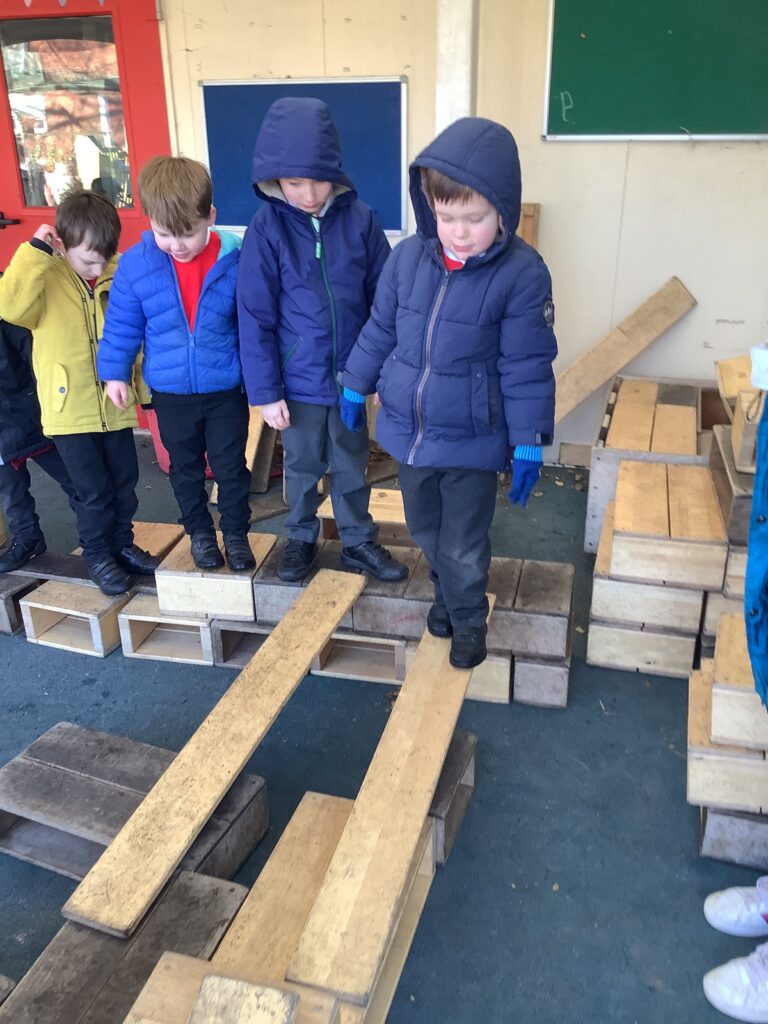
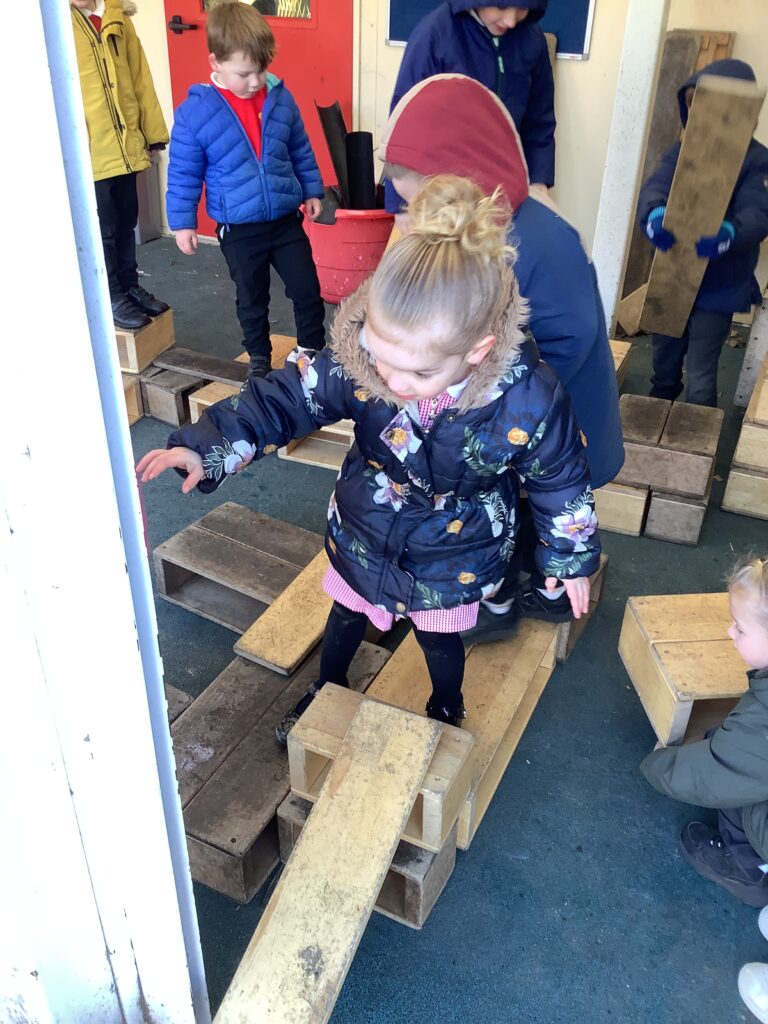
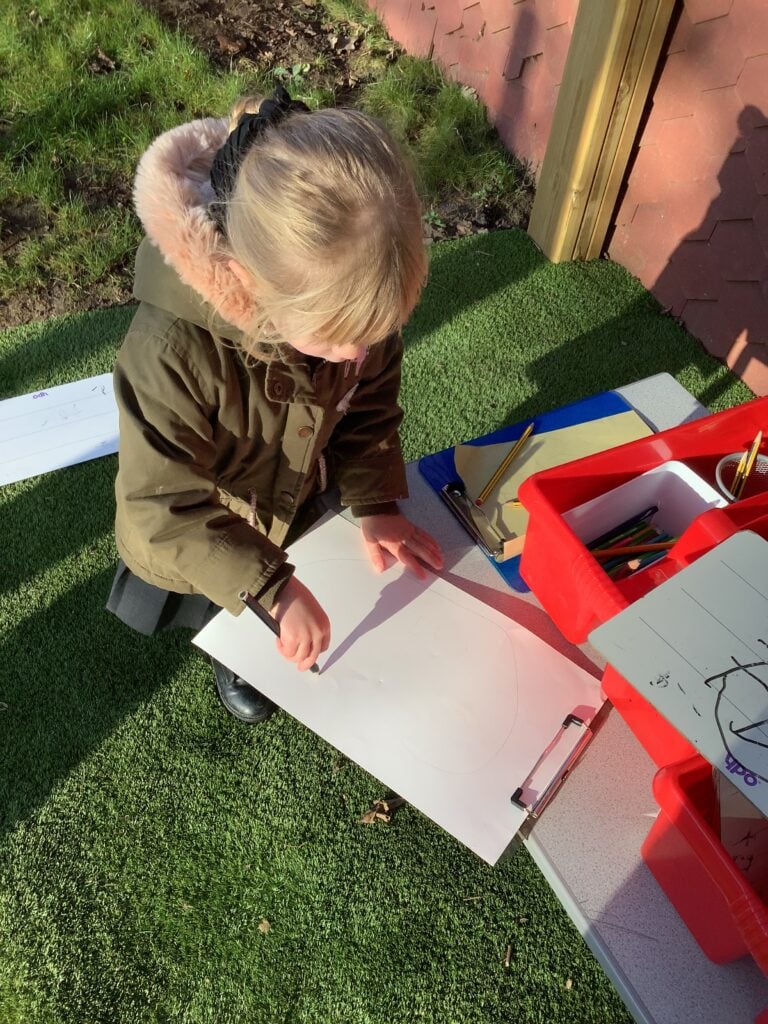
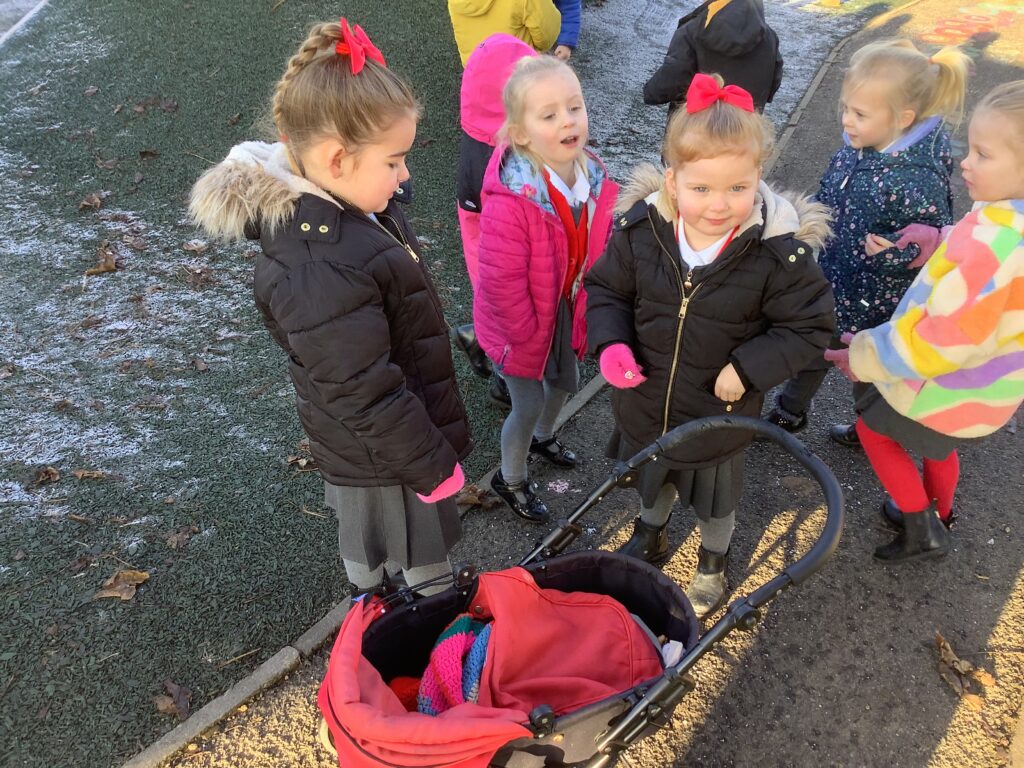
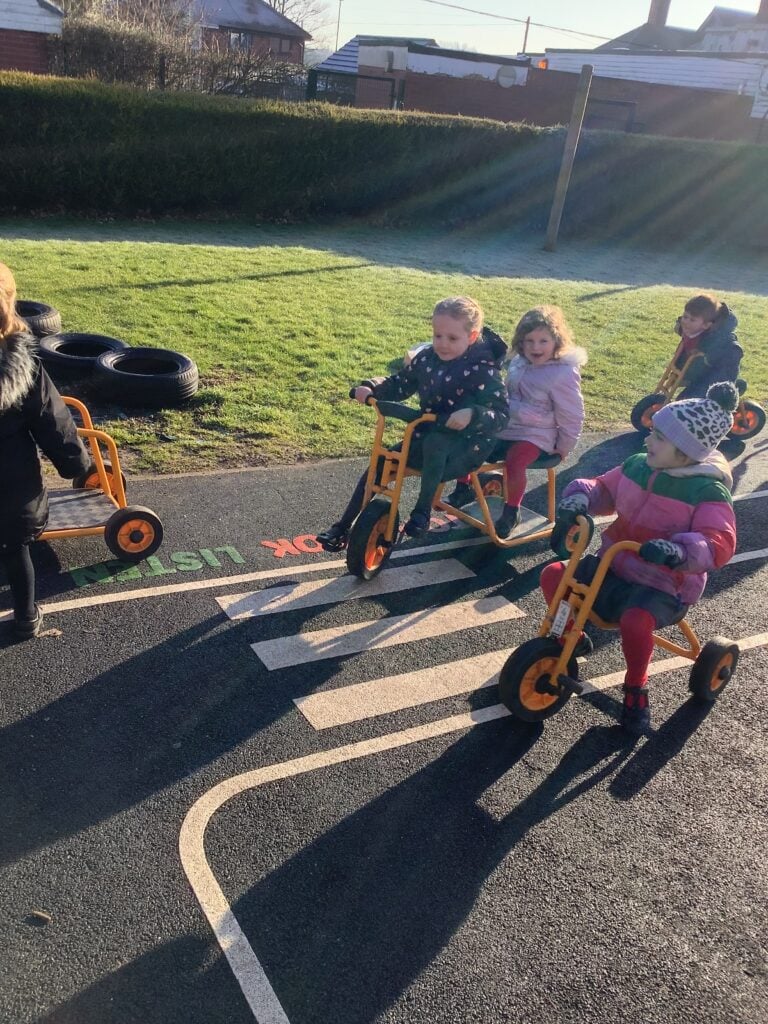
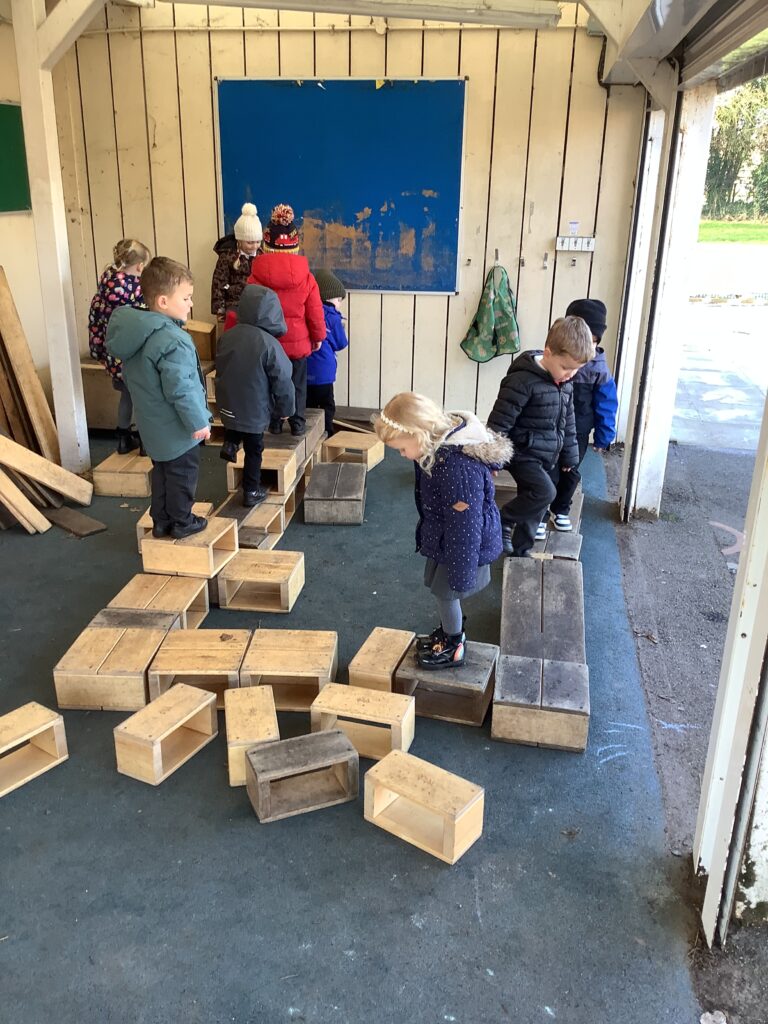
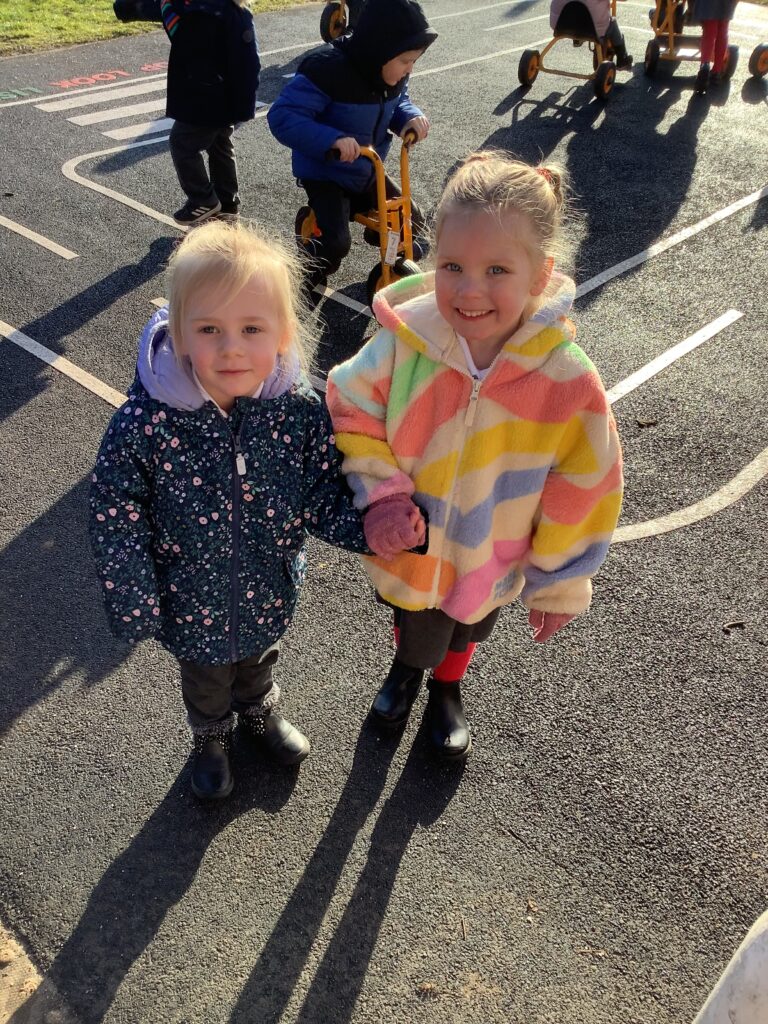

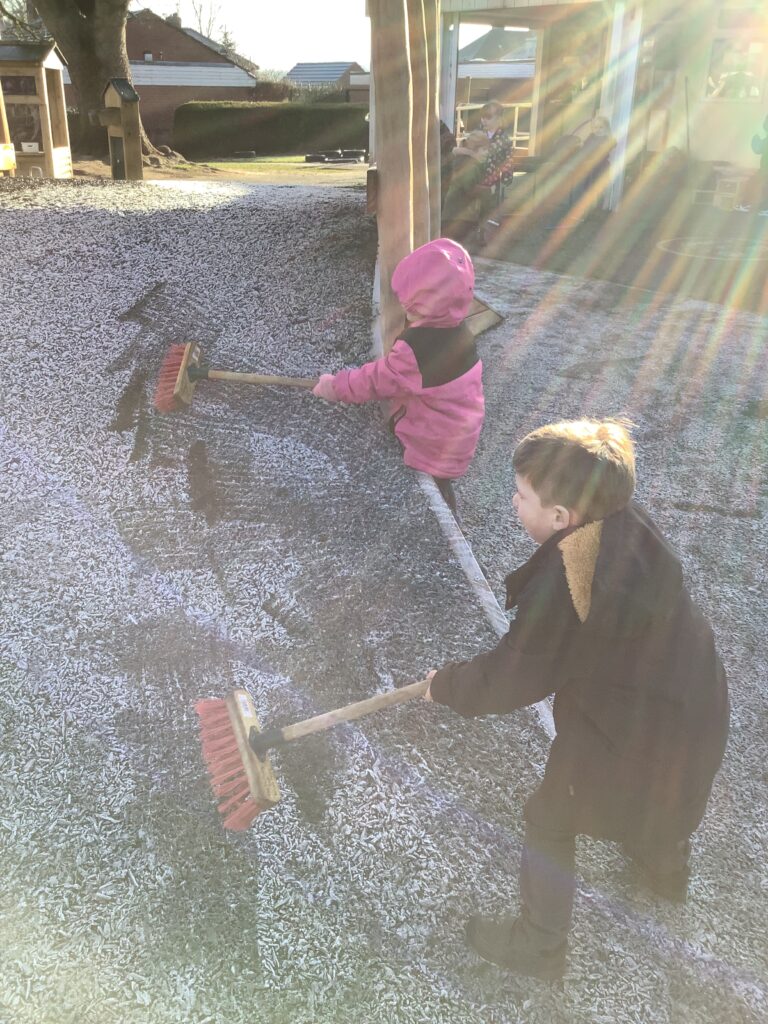
Nursery have been very “hoppy” this week as they moved on to exploring the life cycle of a frog, continuing our “We are scientists” agenda of our expedition. We began our investigations with a very engaging and funny rhyming text by Kes Gray titled “Oi Frog!” The children immediately fell in love with the comedic main character Frog, who explored what a host of animals sit on, as he didn’t want to sit on a log, as Cat demanded he should. Nursery enjoyed matching animals to their rhyming seated objects and have practised independently over the week, even sharing their rhyming with their parents in our family stay and play session on Friday.
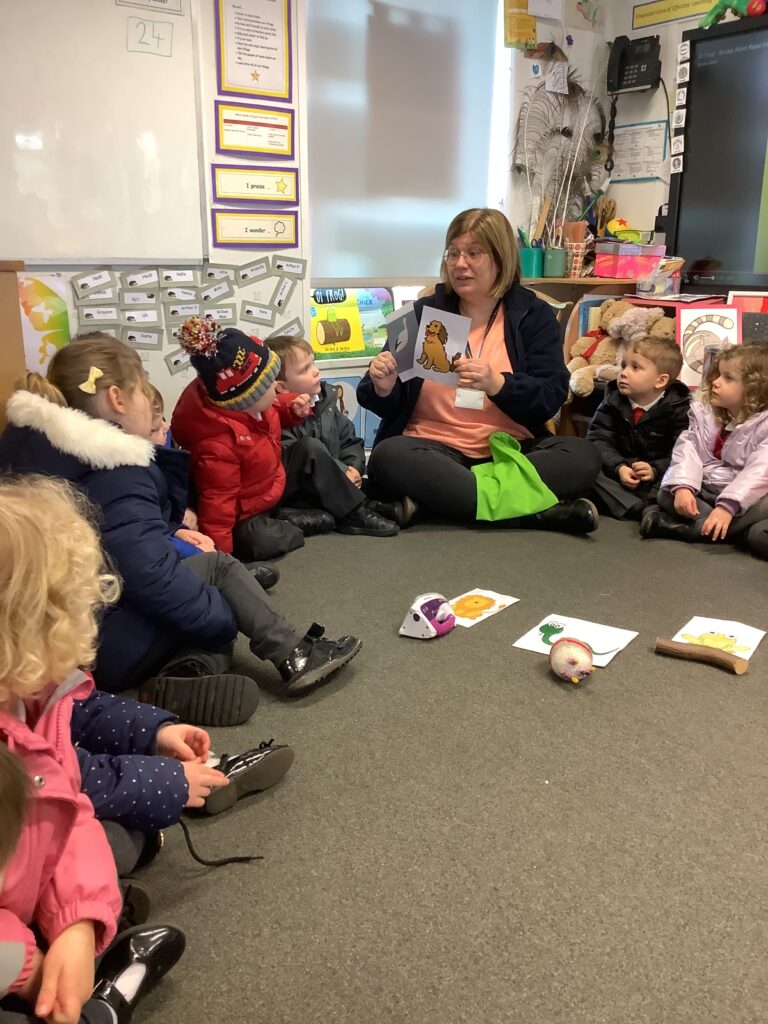
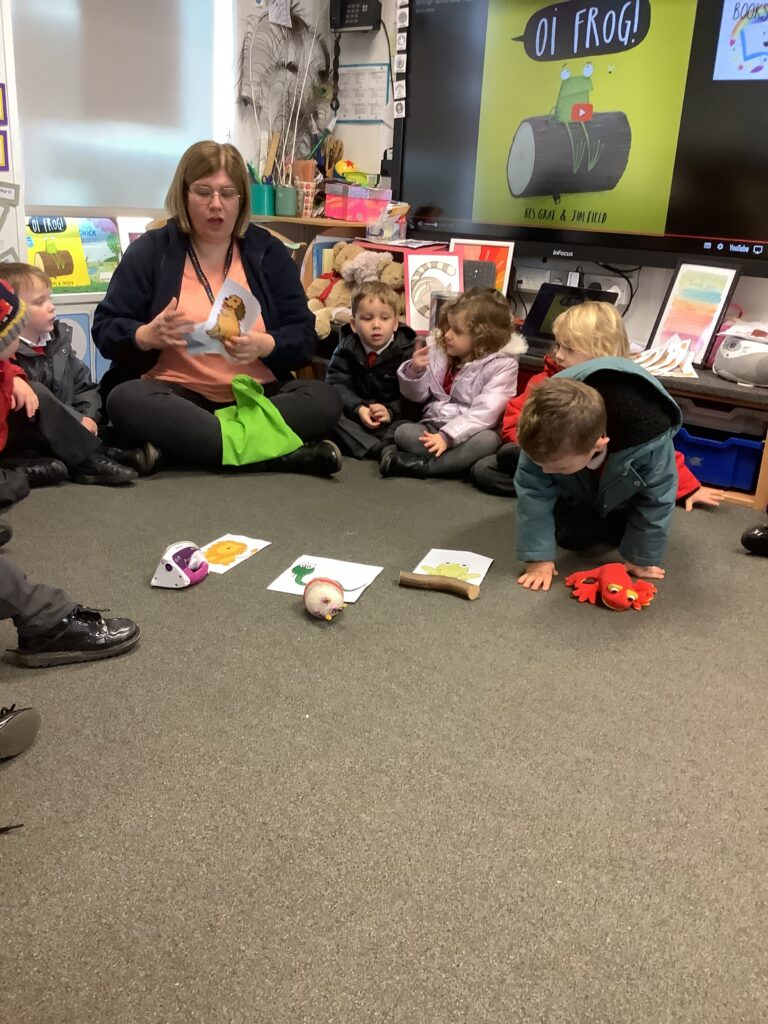
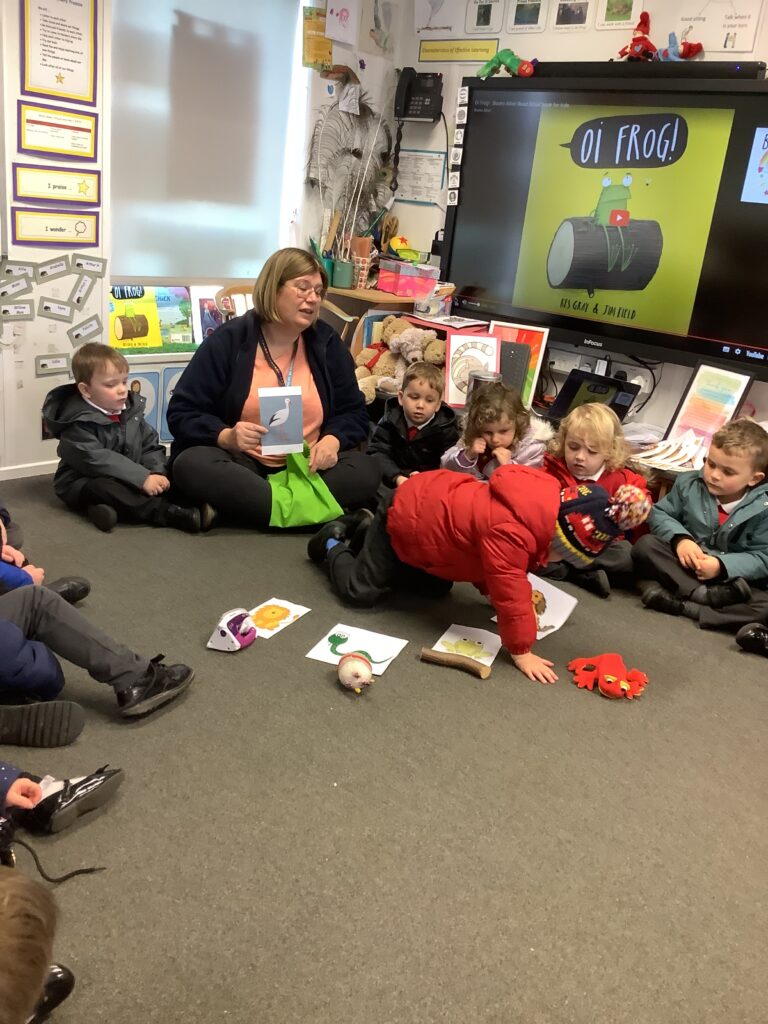
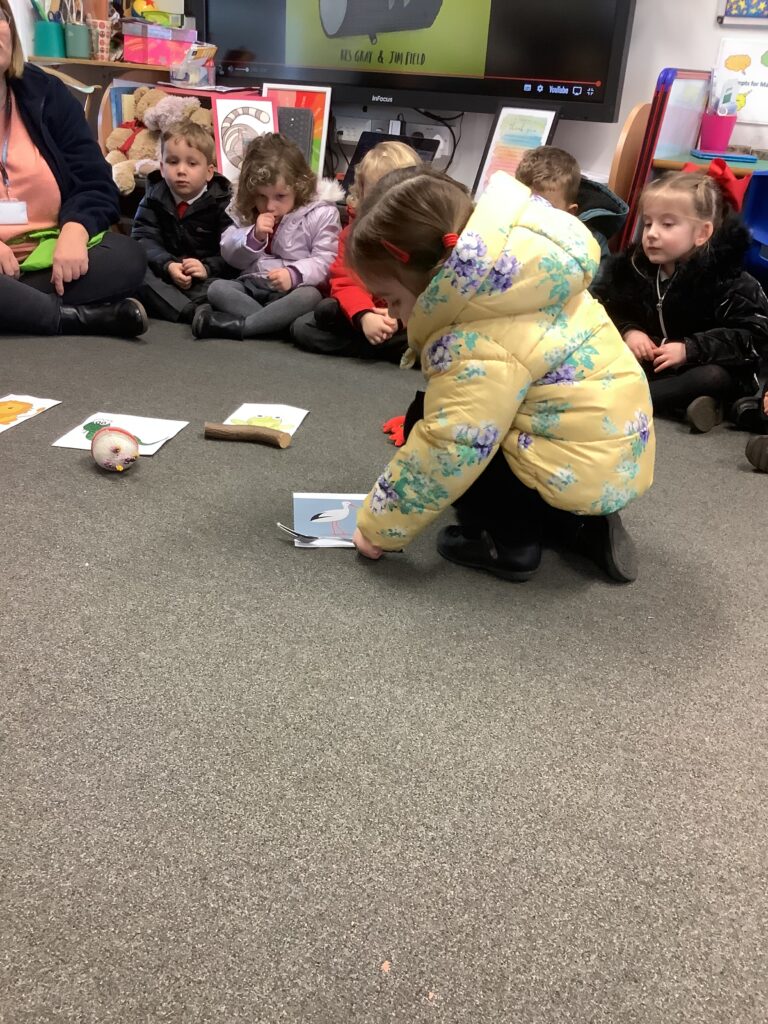
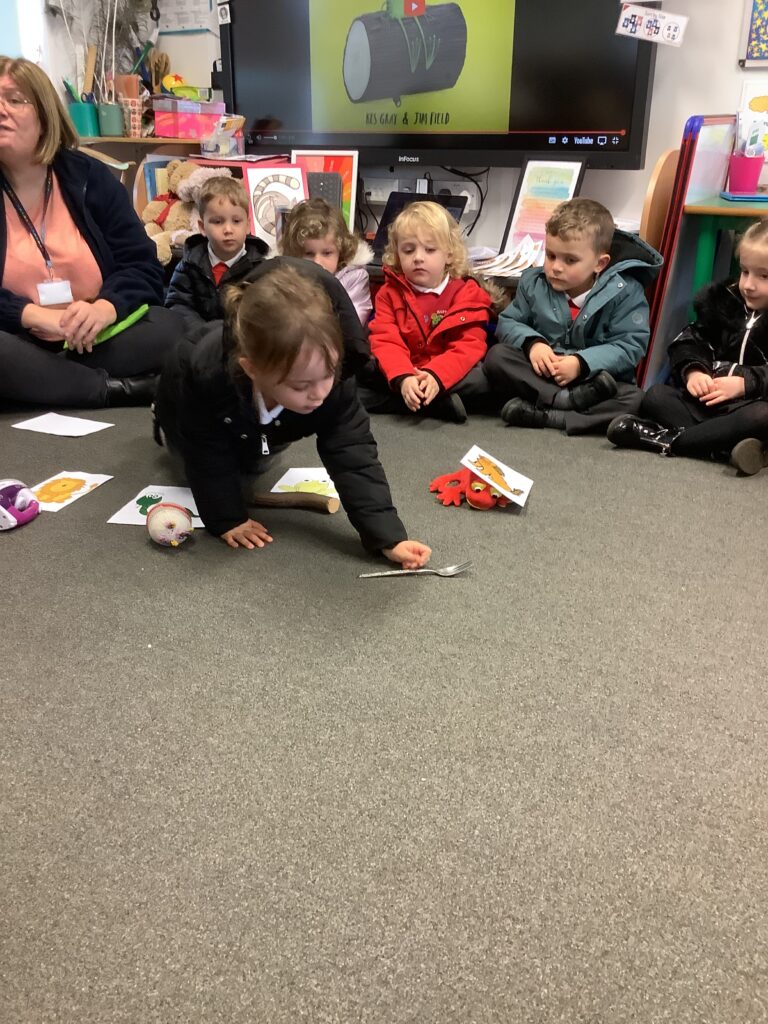
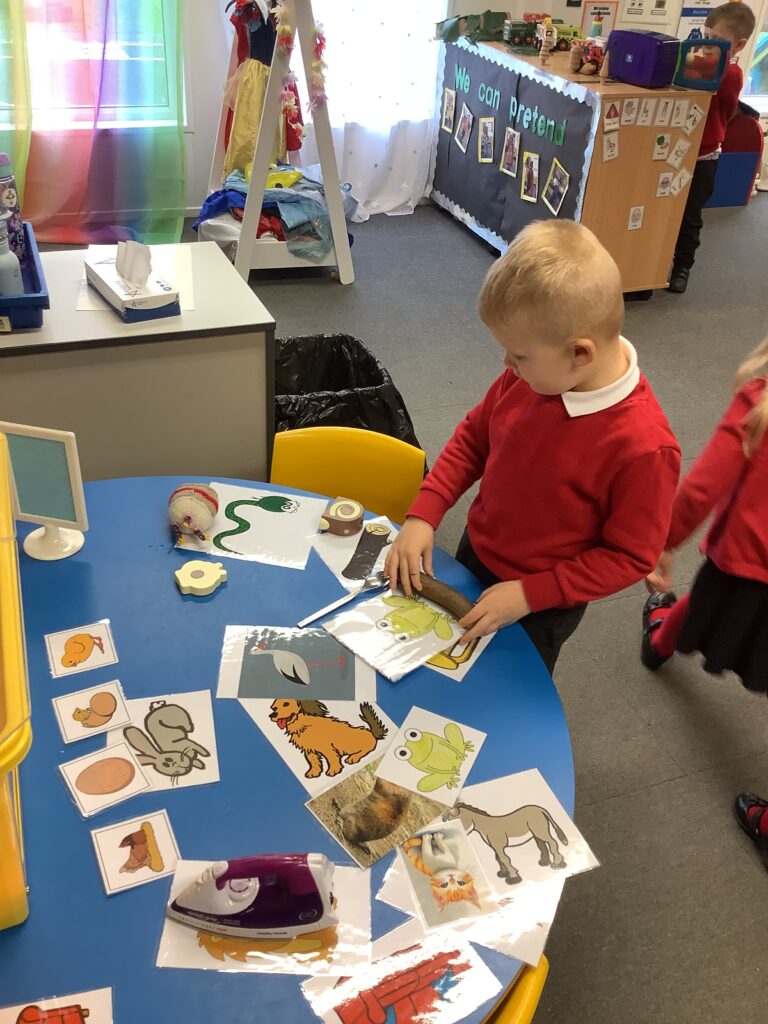
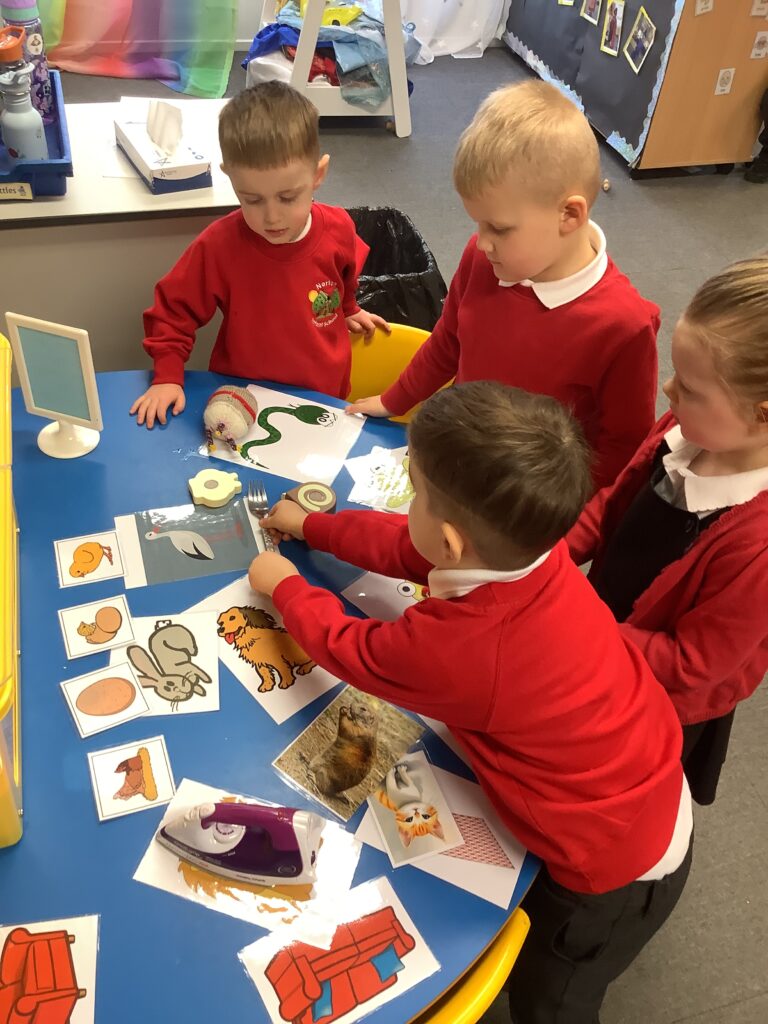
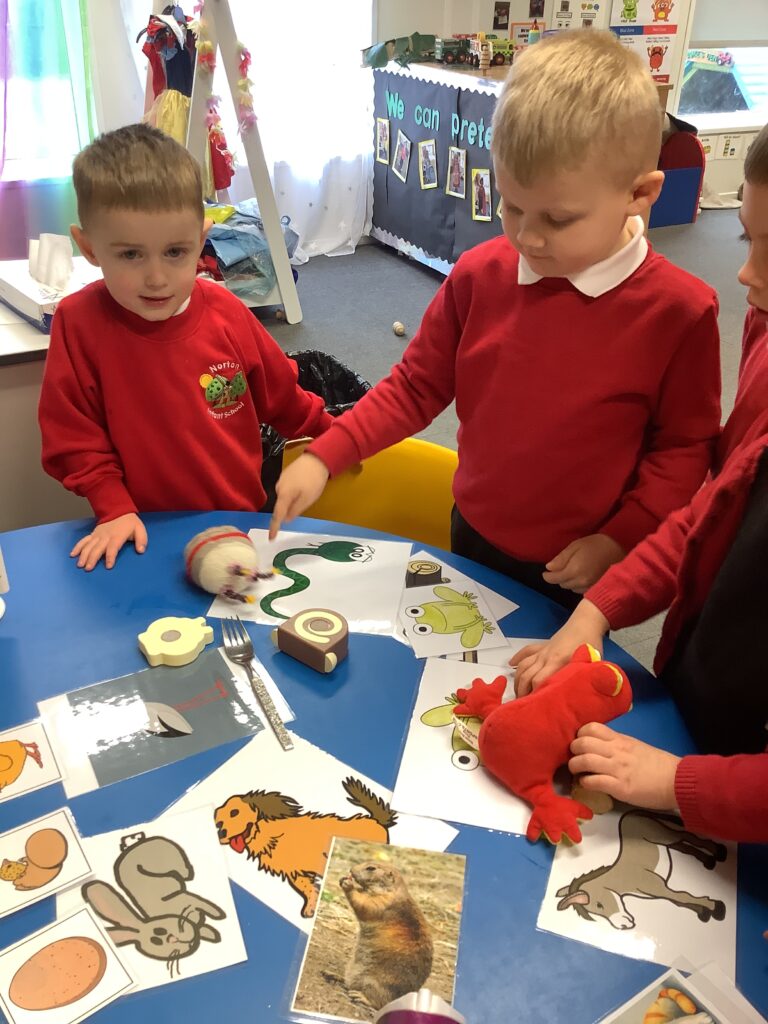
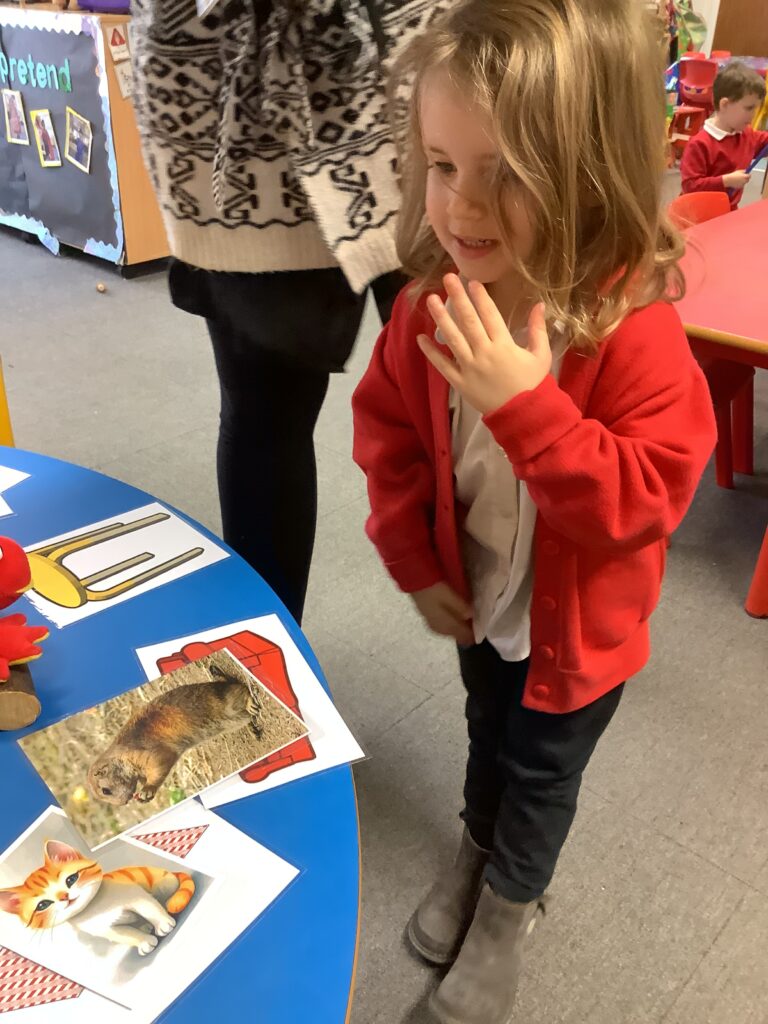
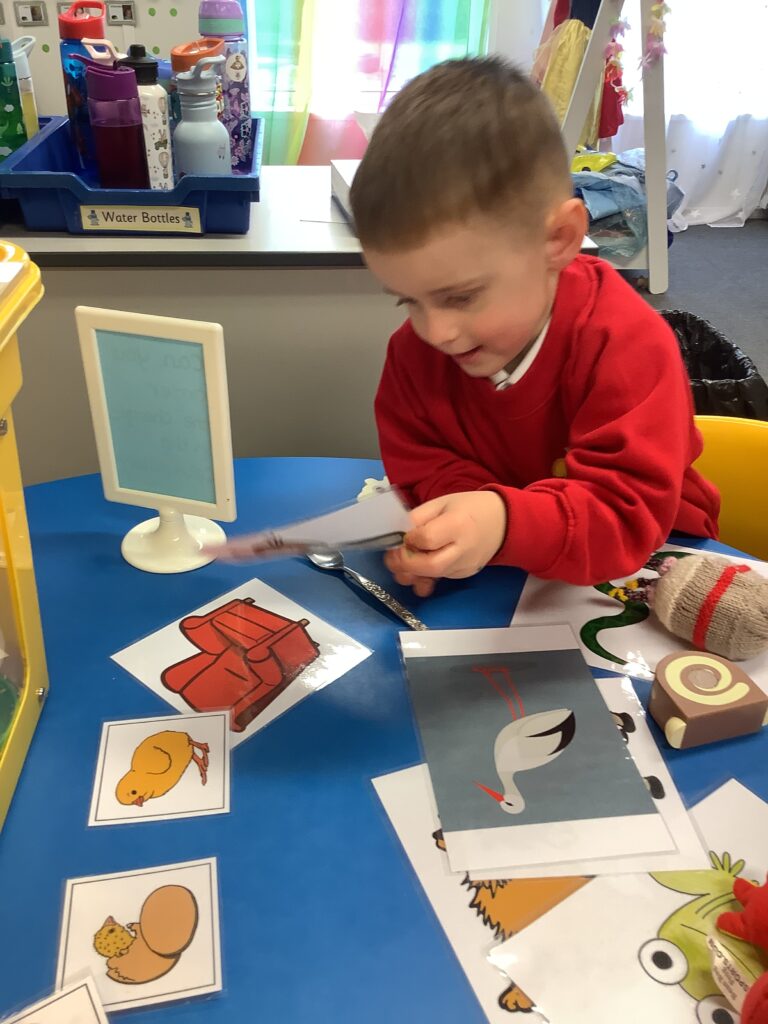
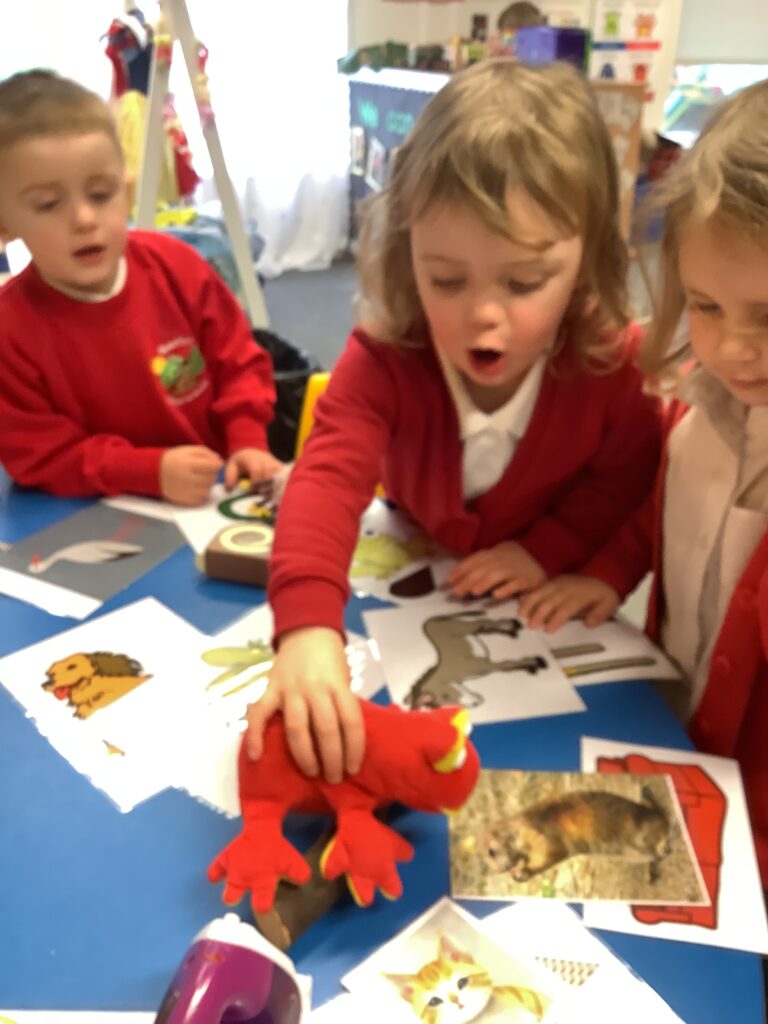
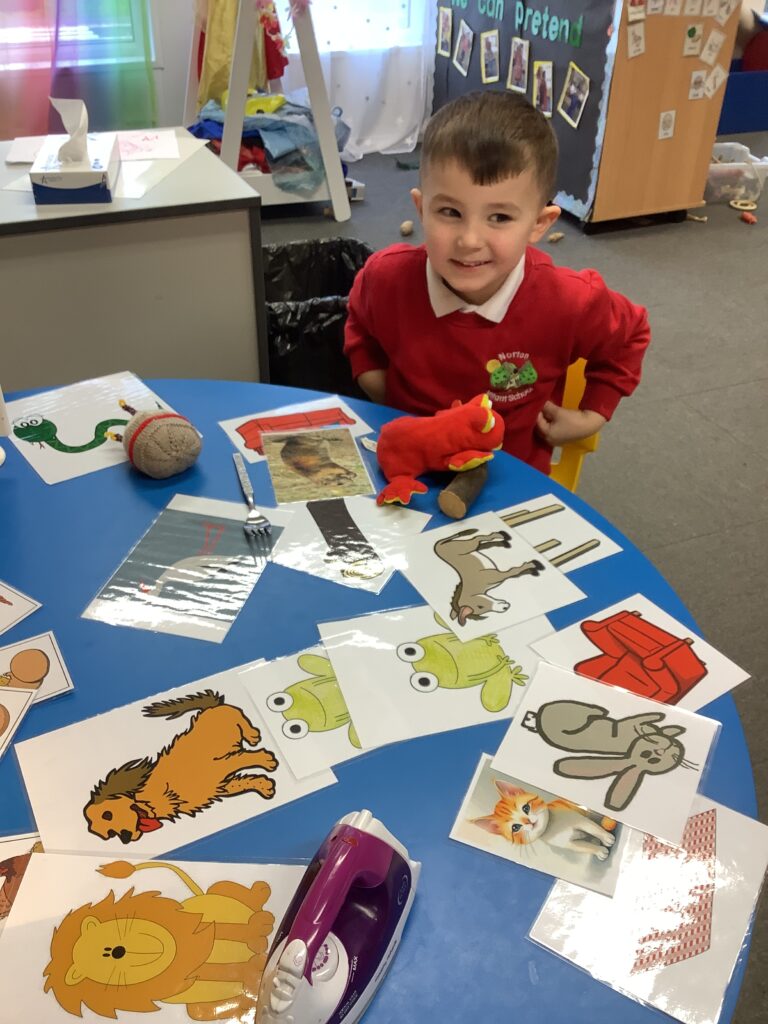

On Tuesday after the children were hooked into frogs, we investigated how a frog begins its life revisiting some of our prior learning from both caterpillar and chick life cycles. We placed toy models of the varying stages of frog into our cycle. The children connected that the caterpillars eggs and frogs were similar in more of a bubble kind of egg, rather than a shell. As we moved through the stages, the children suggested their own movements of how we could represent the cycle. We then played a game of “Froggy says…” called out the stages and the children demonstrated their moves to embed their learning.
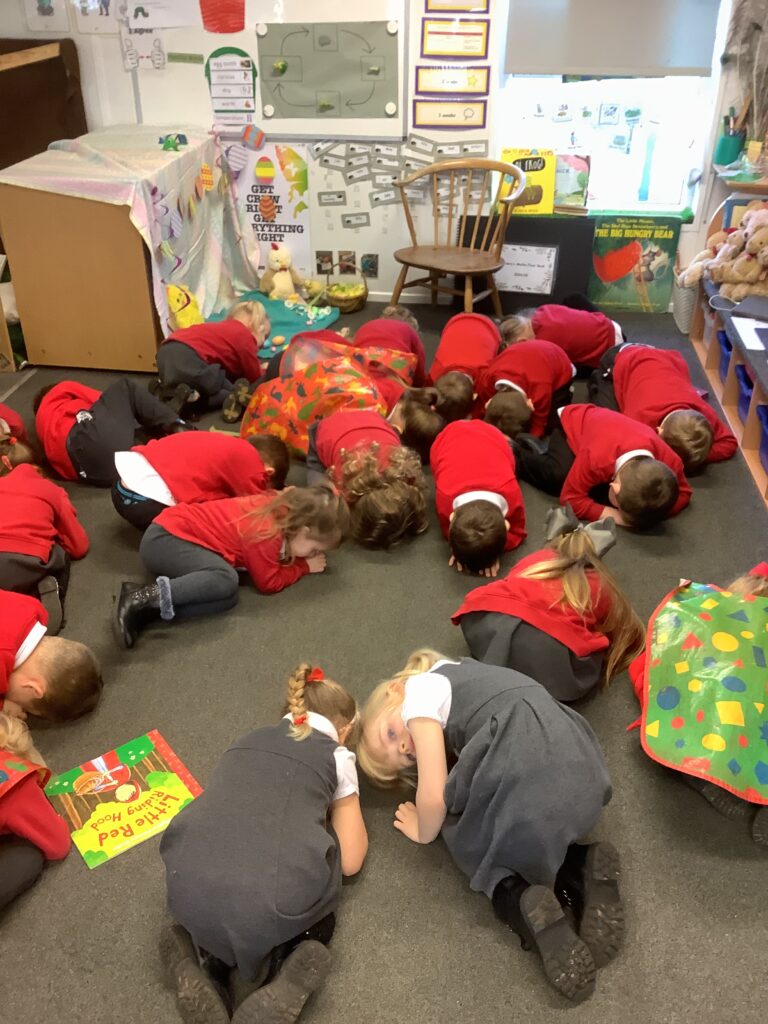
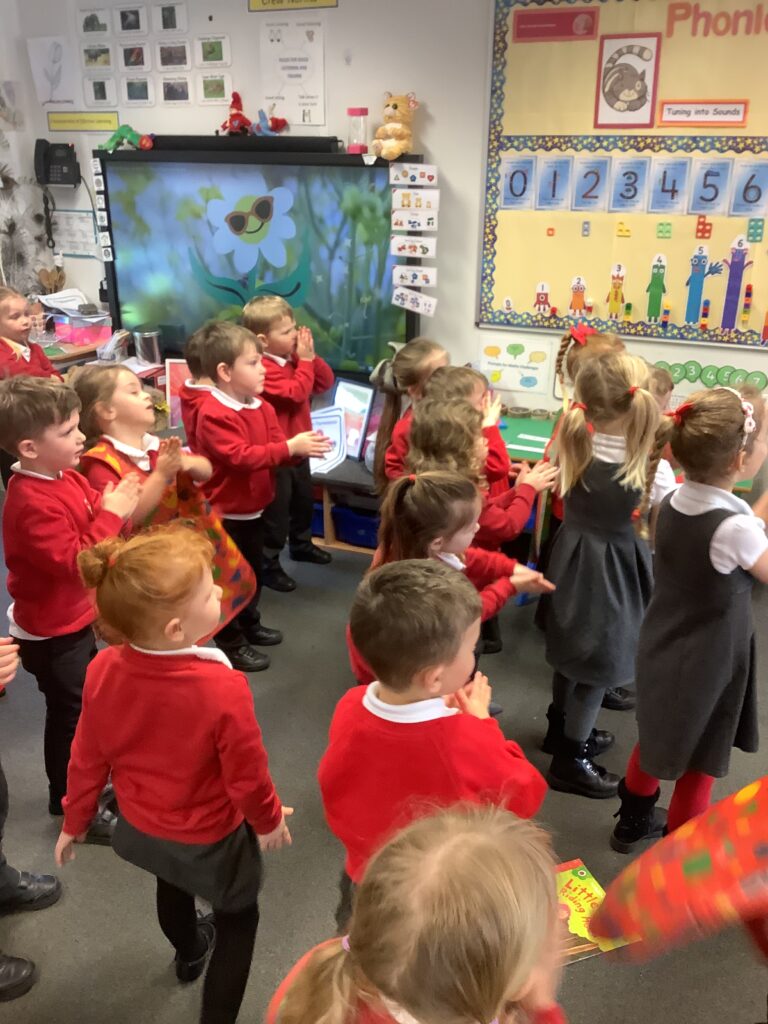
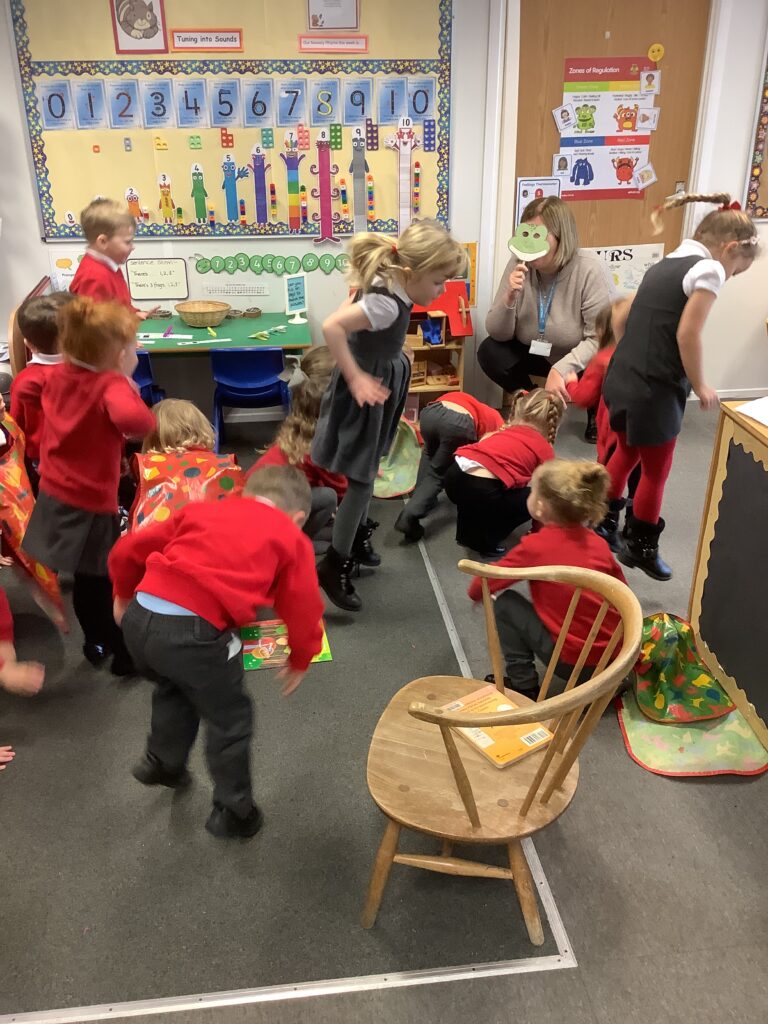
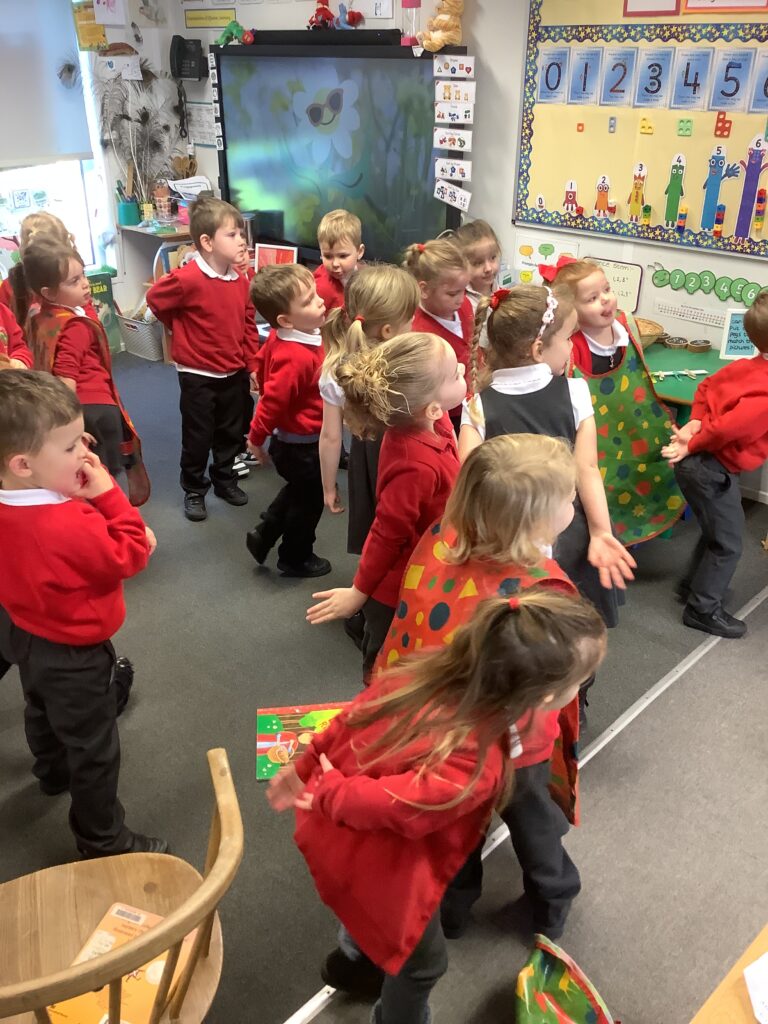
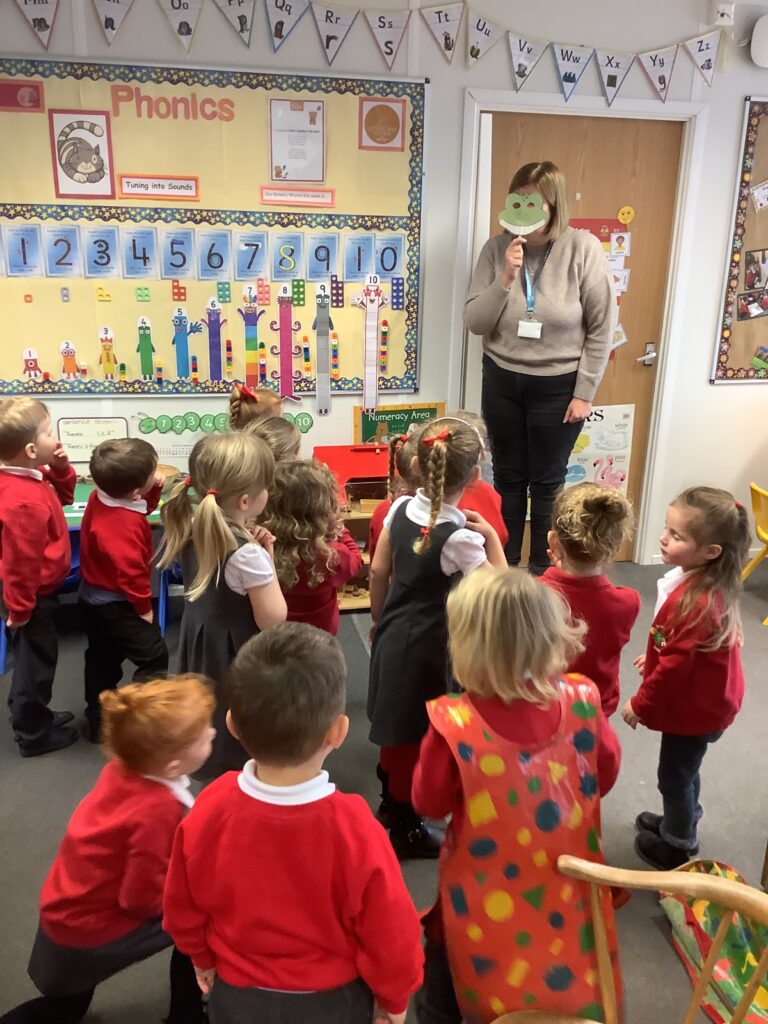
During Tranquil Tuesday and Thoughtful Thursday crew the children followed models of how to draw a tadpole and a frog. They independently had a go with fantastic results! Such beautiful work.
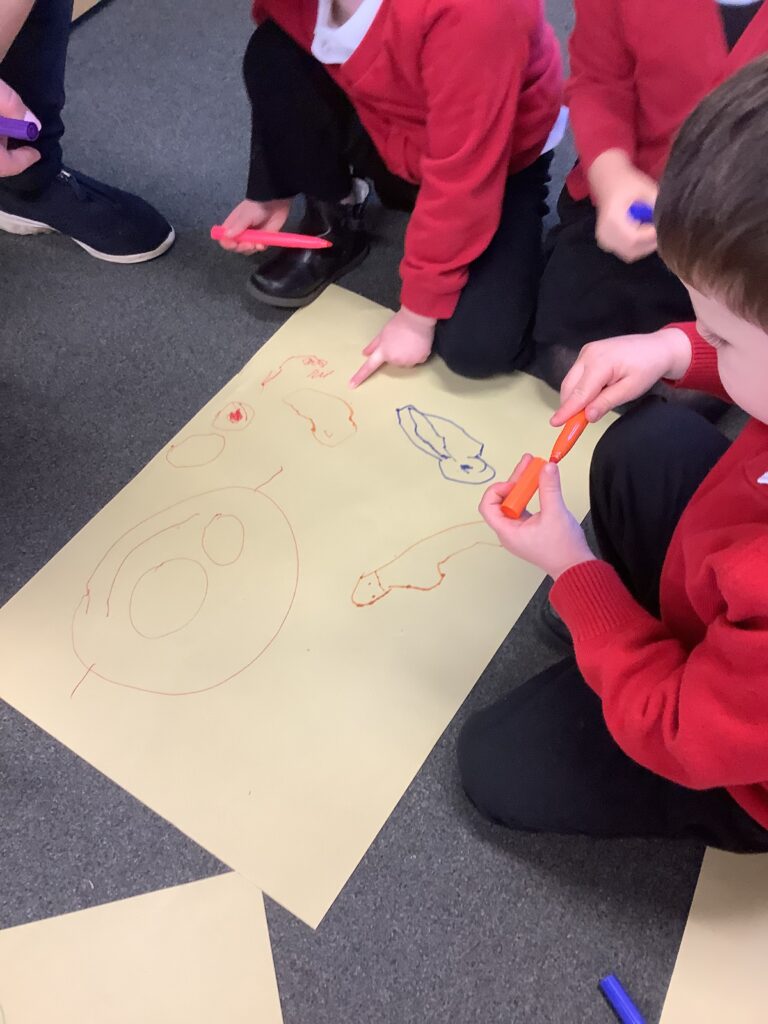
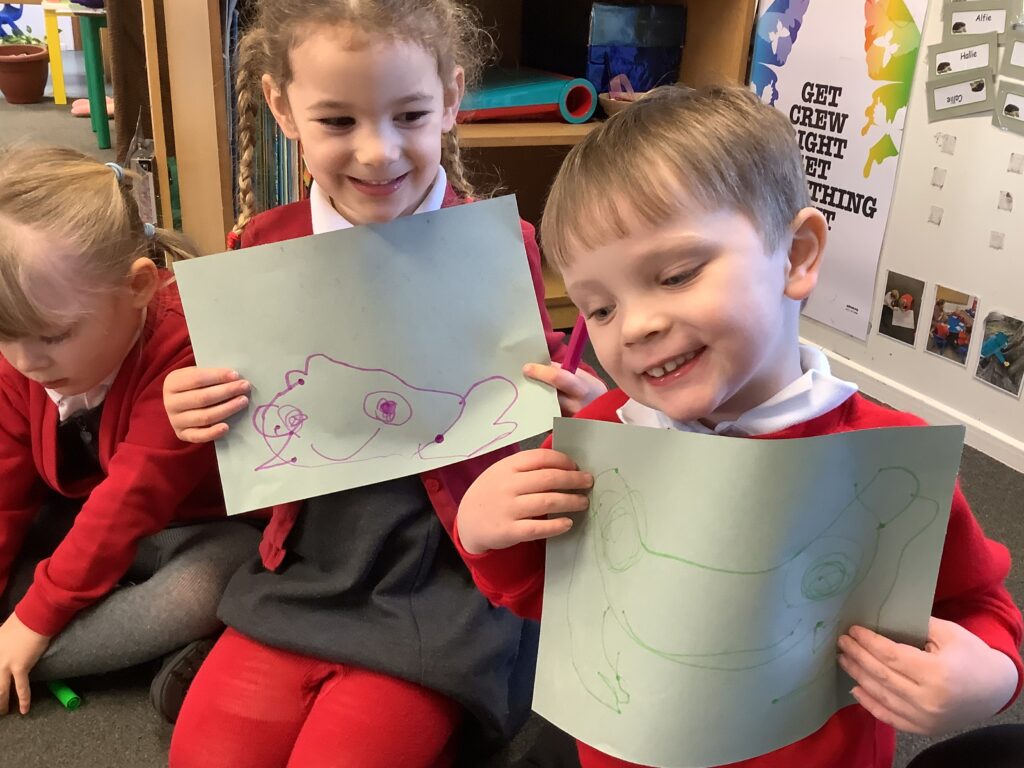
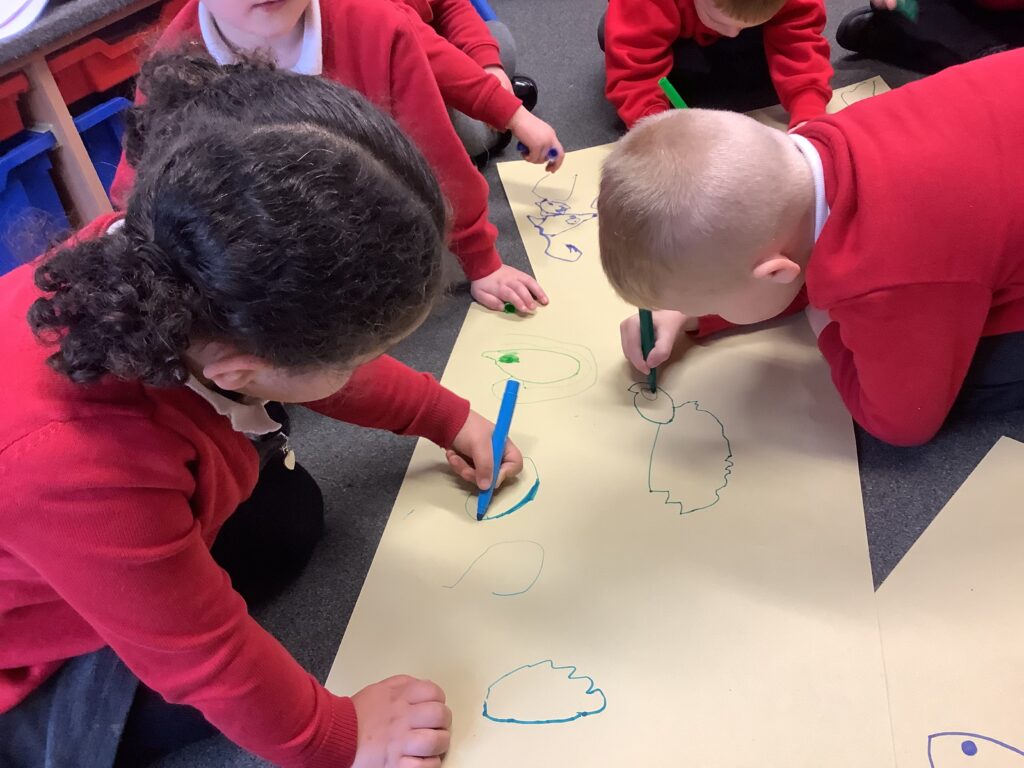
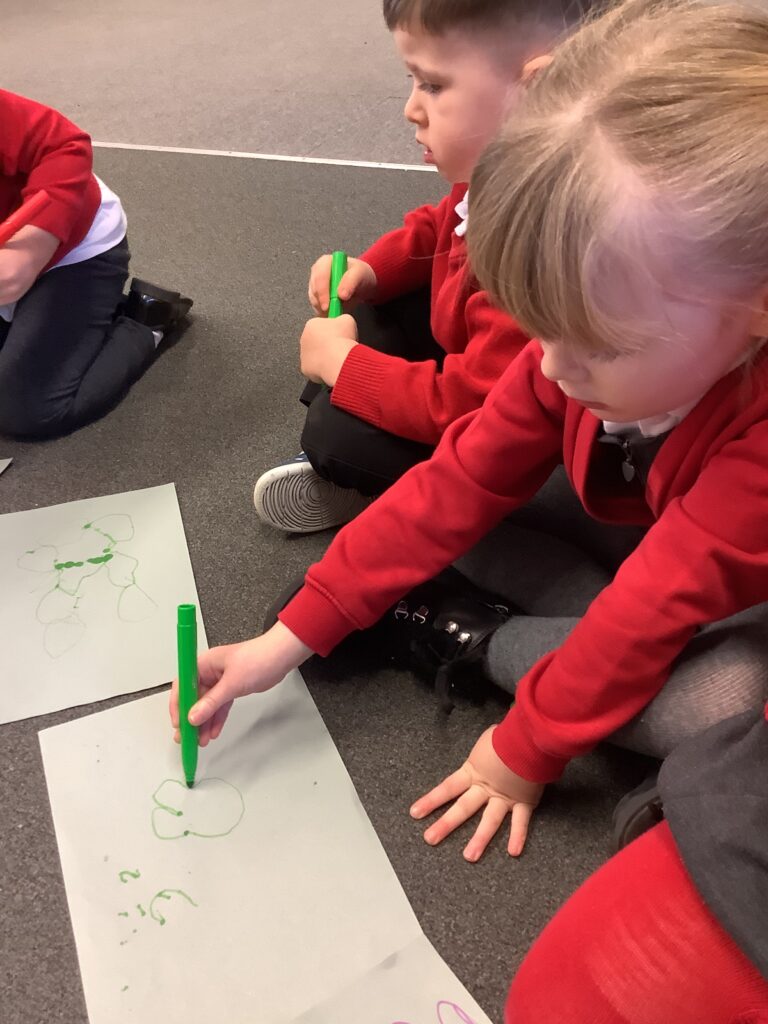

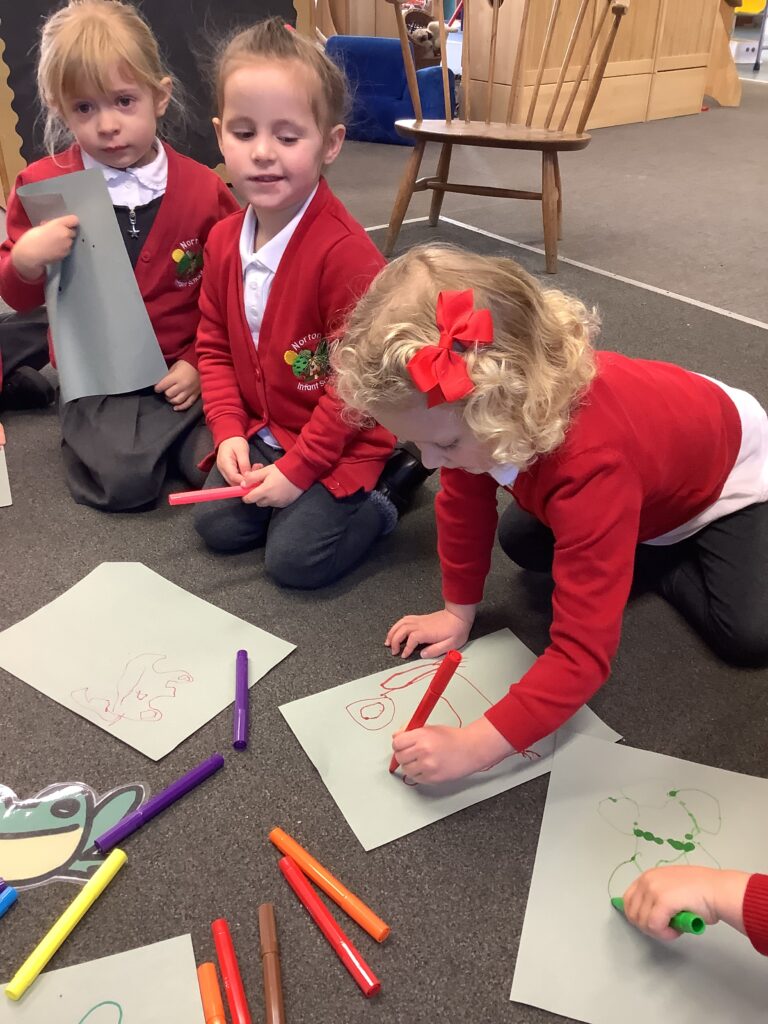
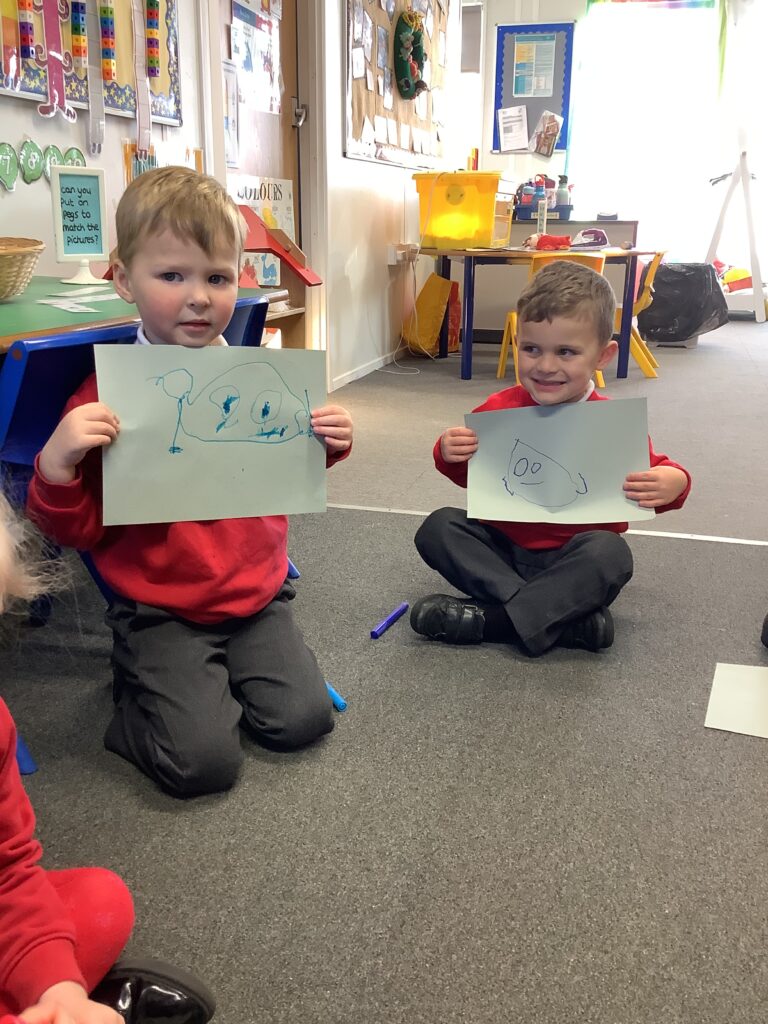
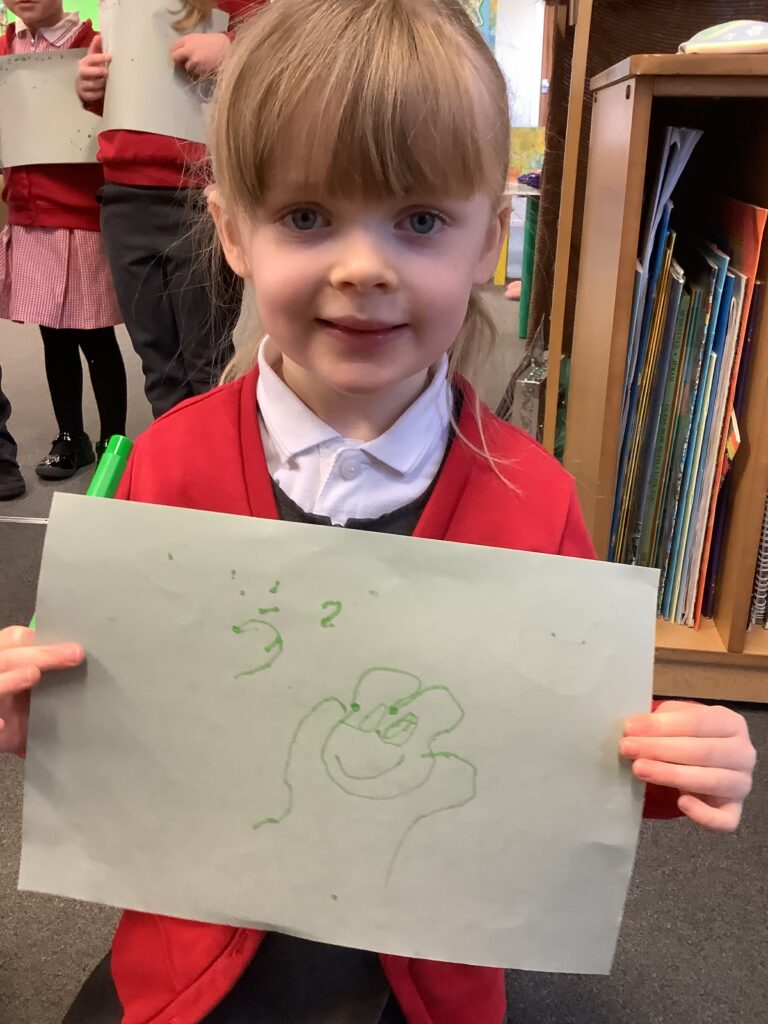
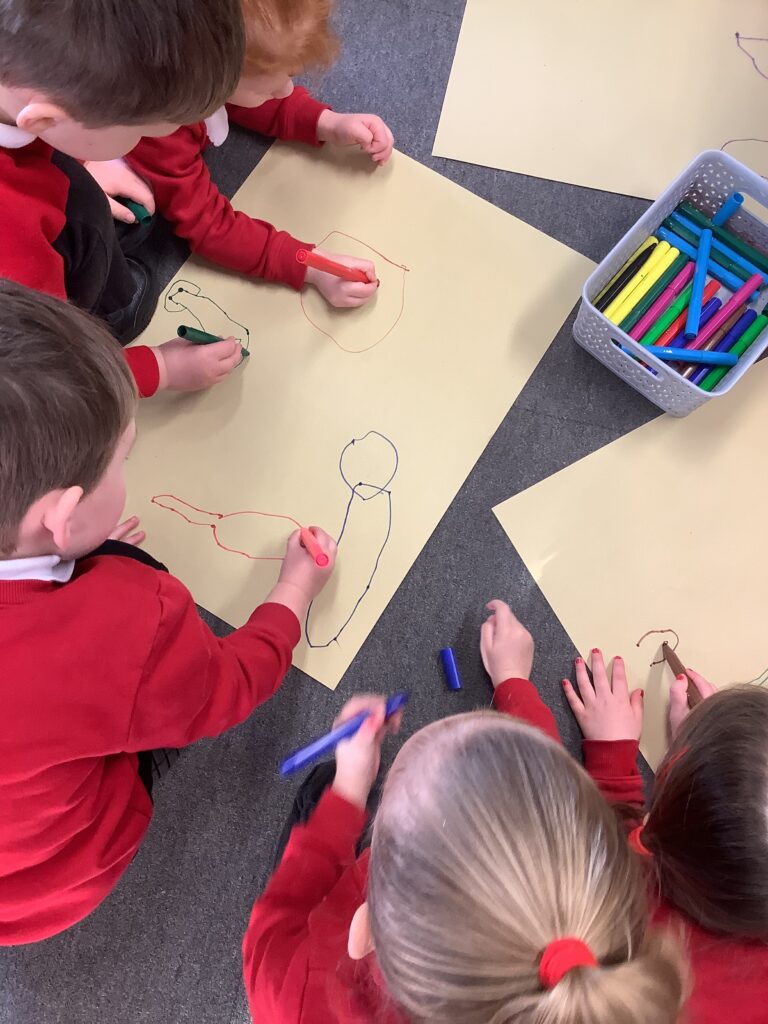
The children used their scientific knowledge, construction and creative skills to create an egg box tadpole or frog, as a choice in provision. They copied examples and produced some amazing models!
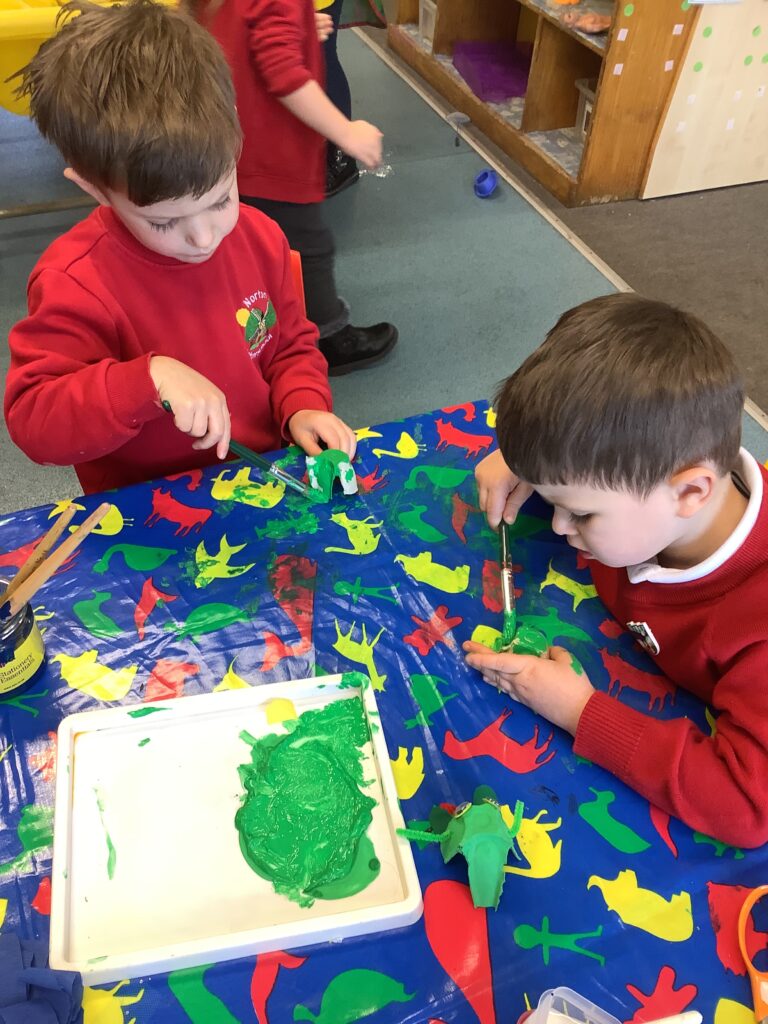

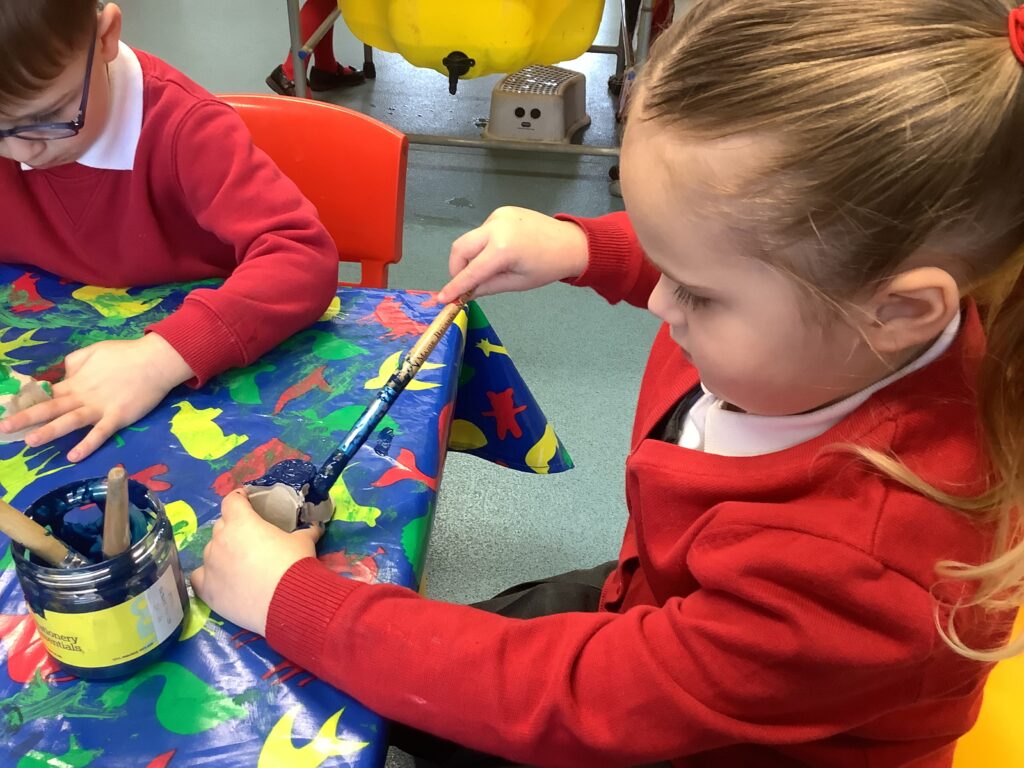
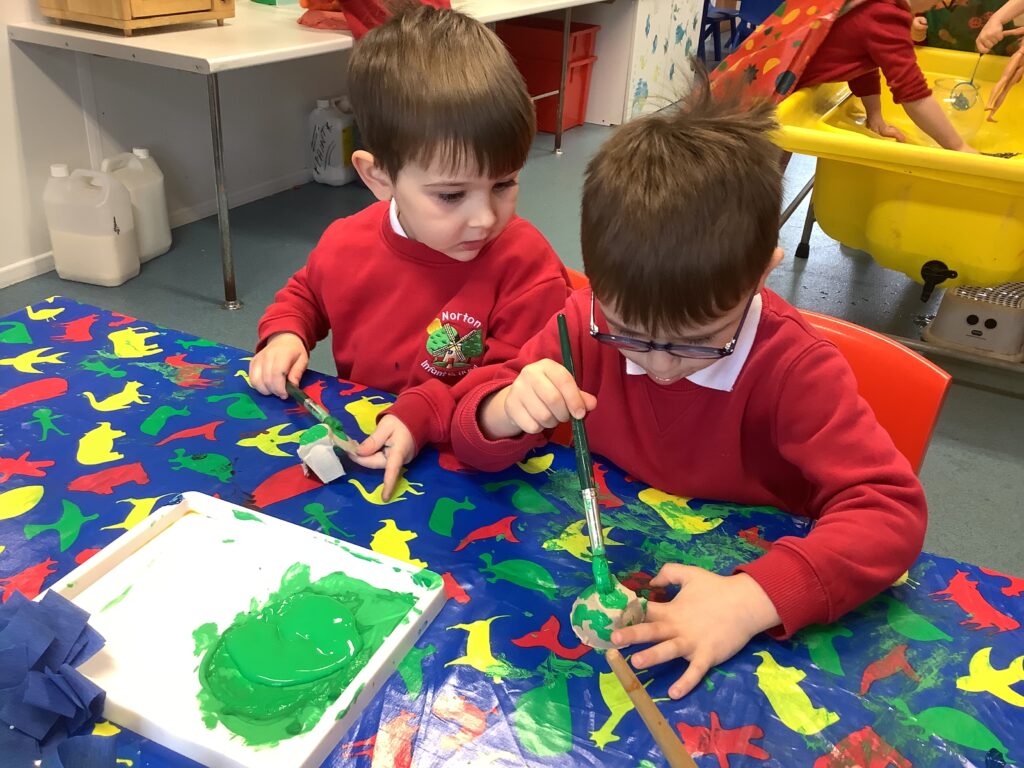
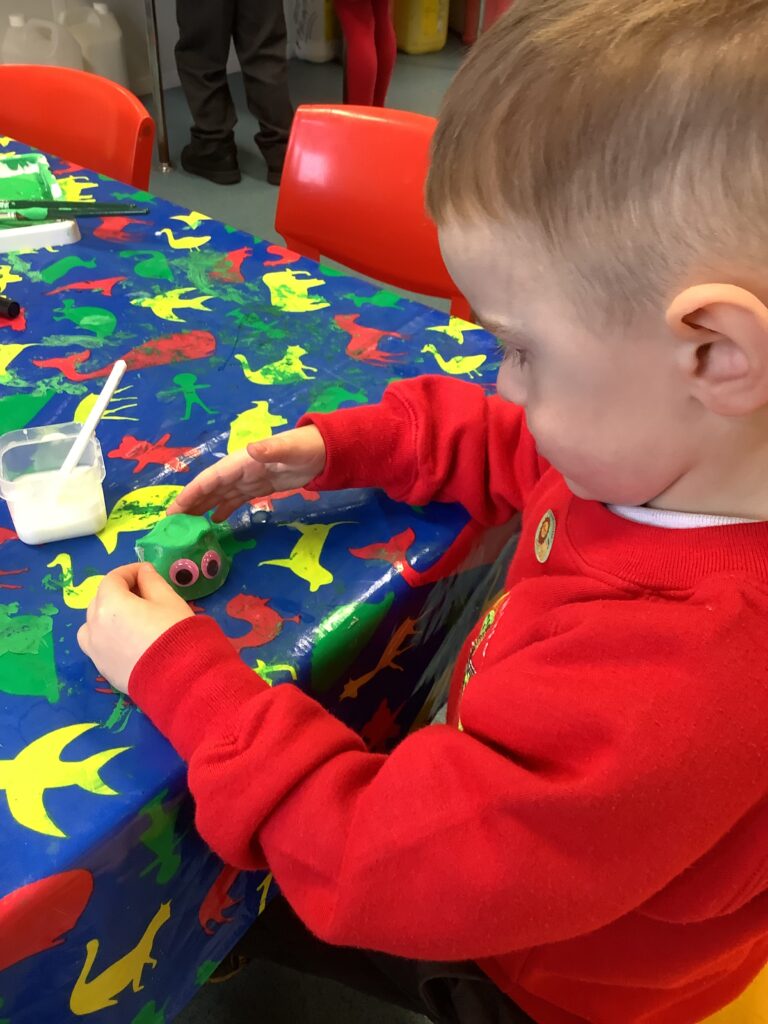
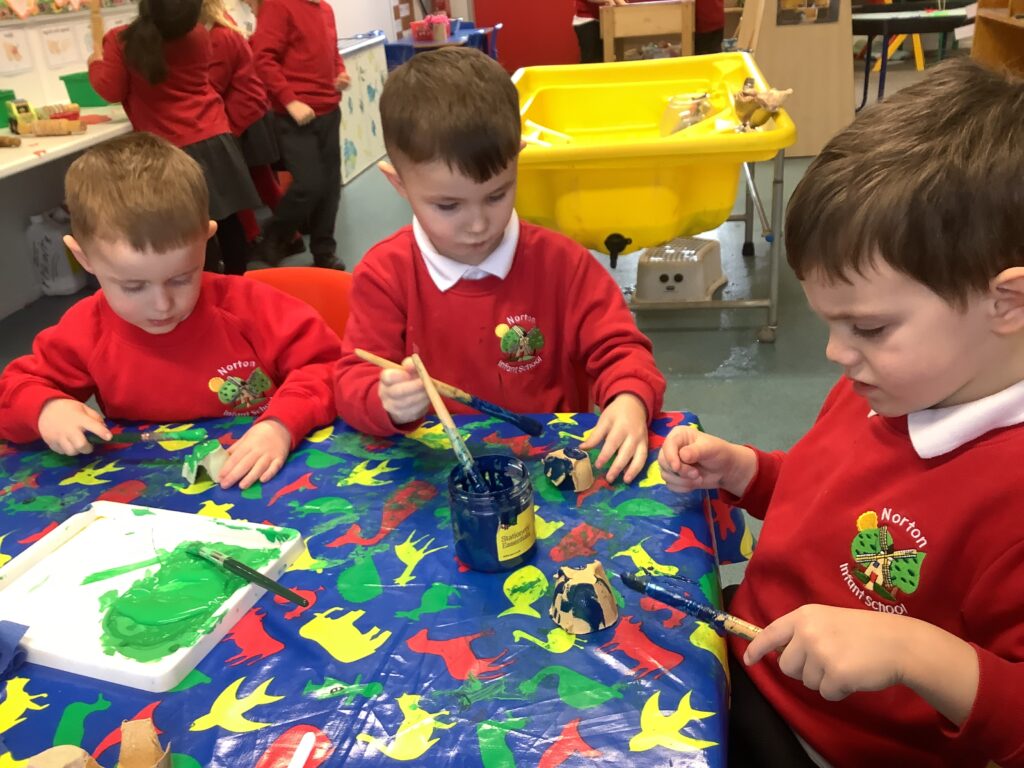
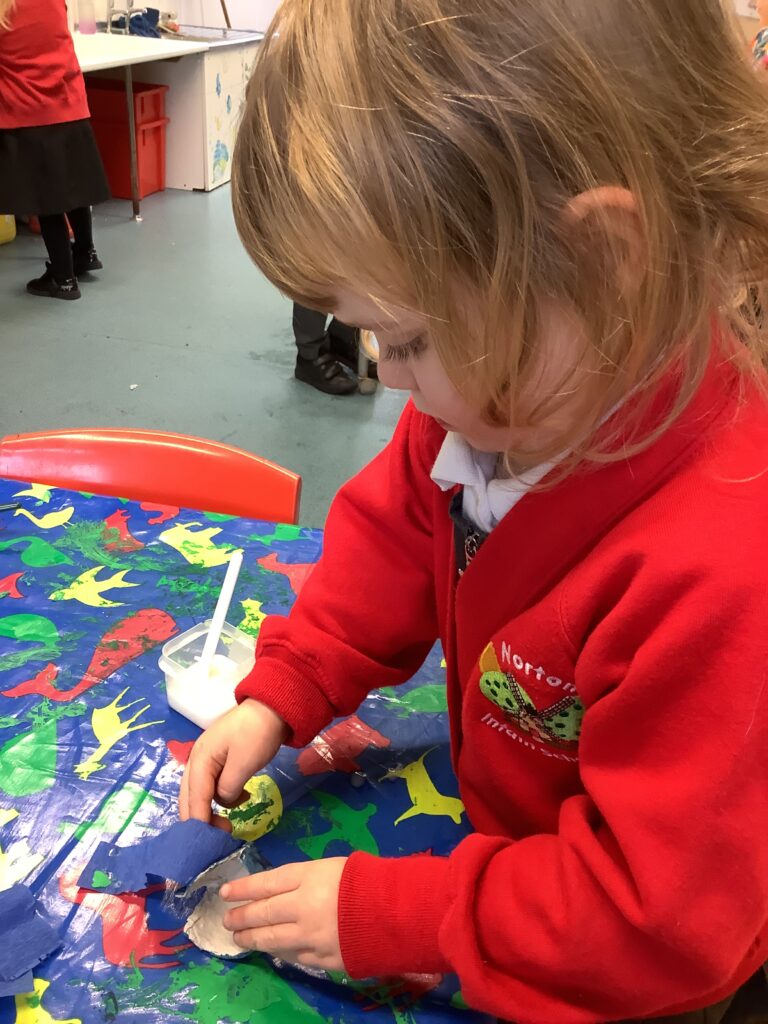

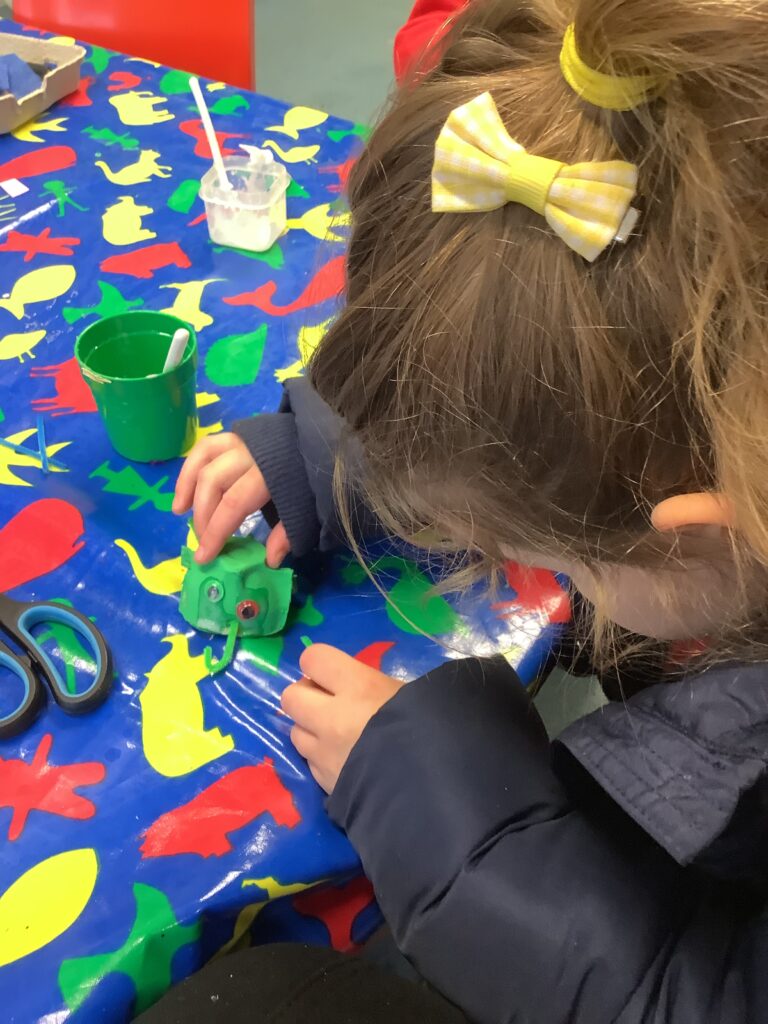

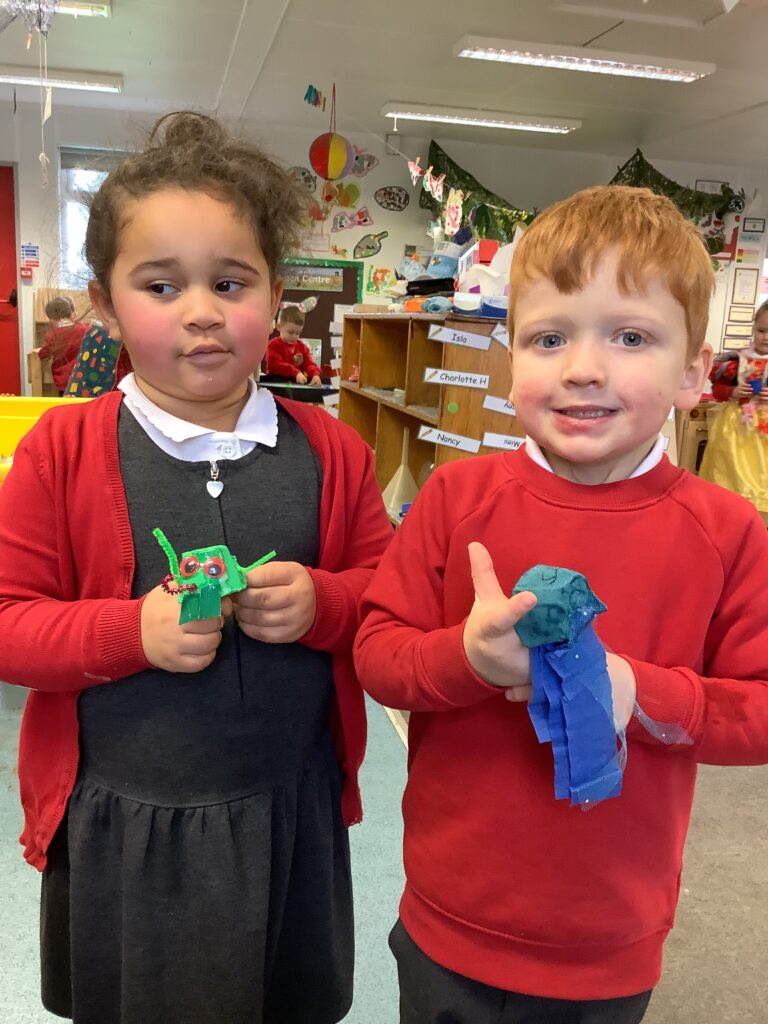
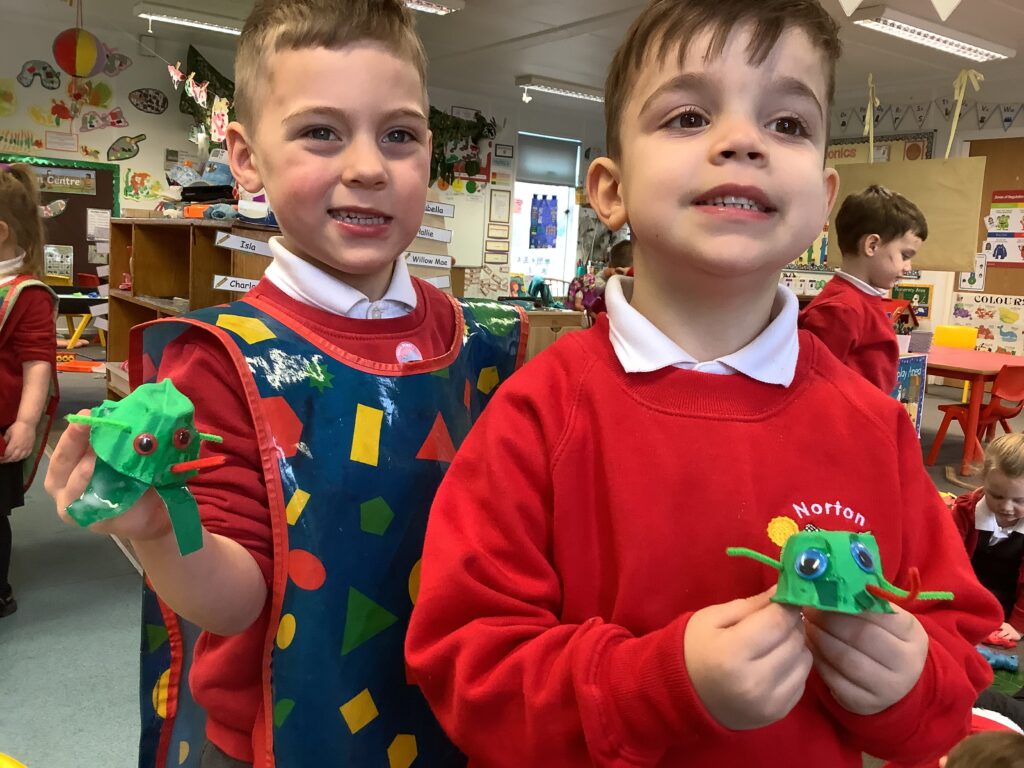


Even our Maths work was frog themed, as we have been getting better at counting to three, using careful counting (touch counting to check our thoughts). We sang three little speckled frogs and acted out the song, supporting each other to count in sequence. Next we considered if we had three frogs, how many lily pads would they need to have one each? How many tadpoles if each had one baby? And how many flies they would need to feed the mummy frog? Of course I threw a few too many tadpoles and flies in the mix to check the children’s understanding, but there were “no flies on them” – the children could “toad-ally” see through my trickery.
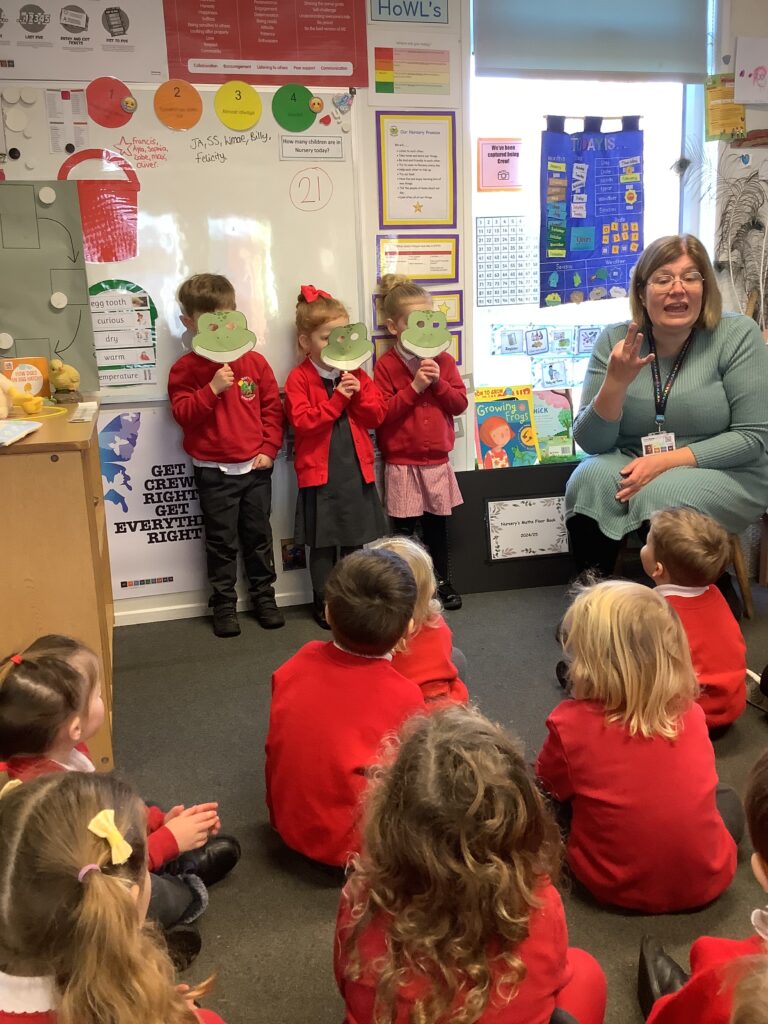
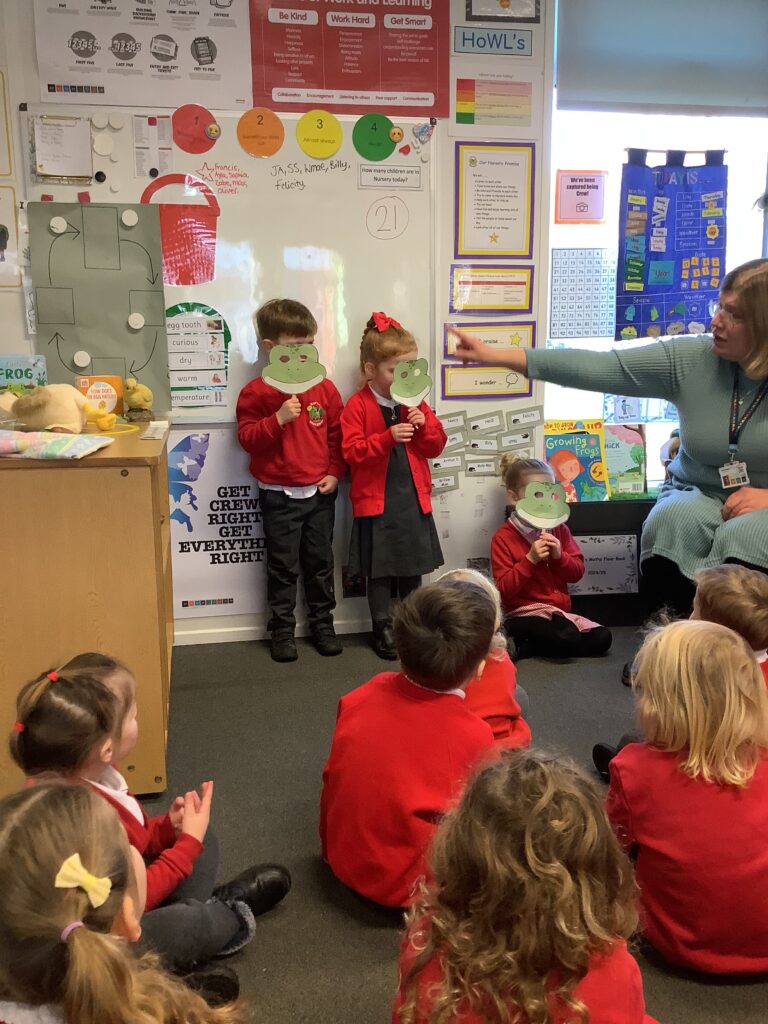
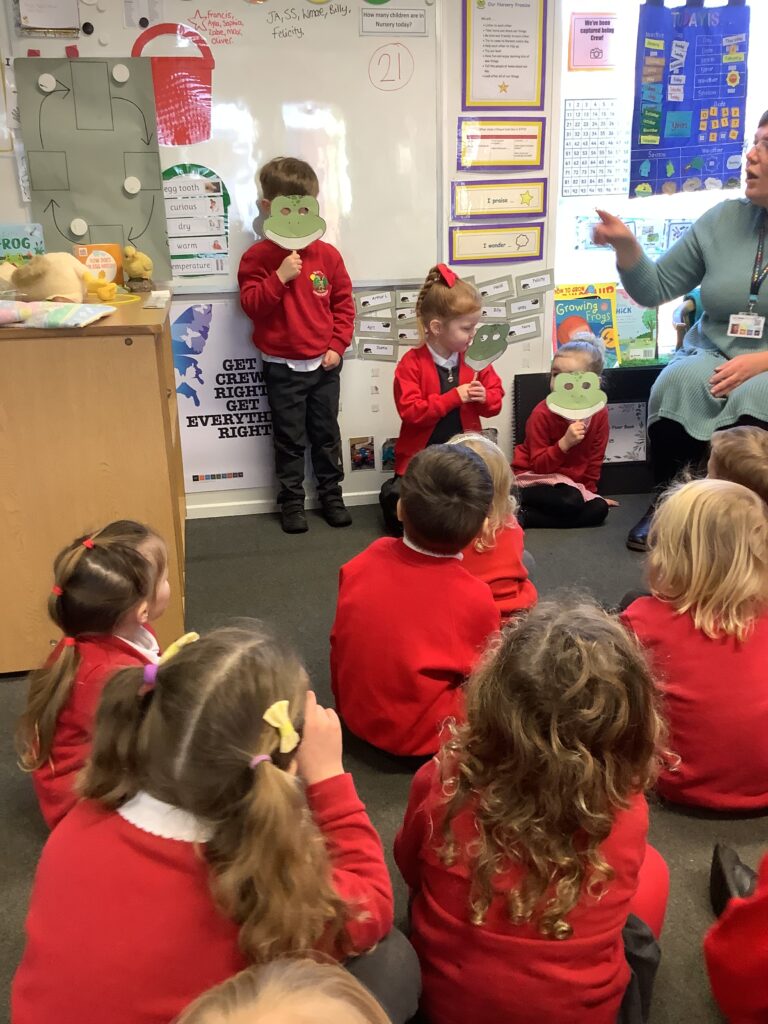
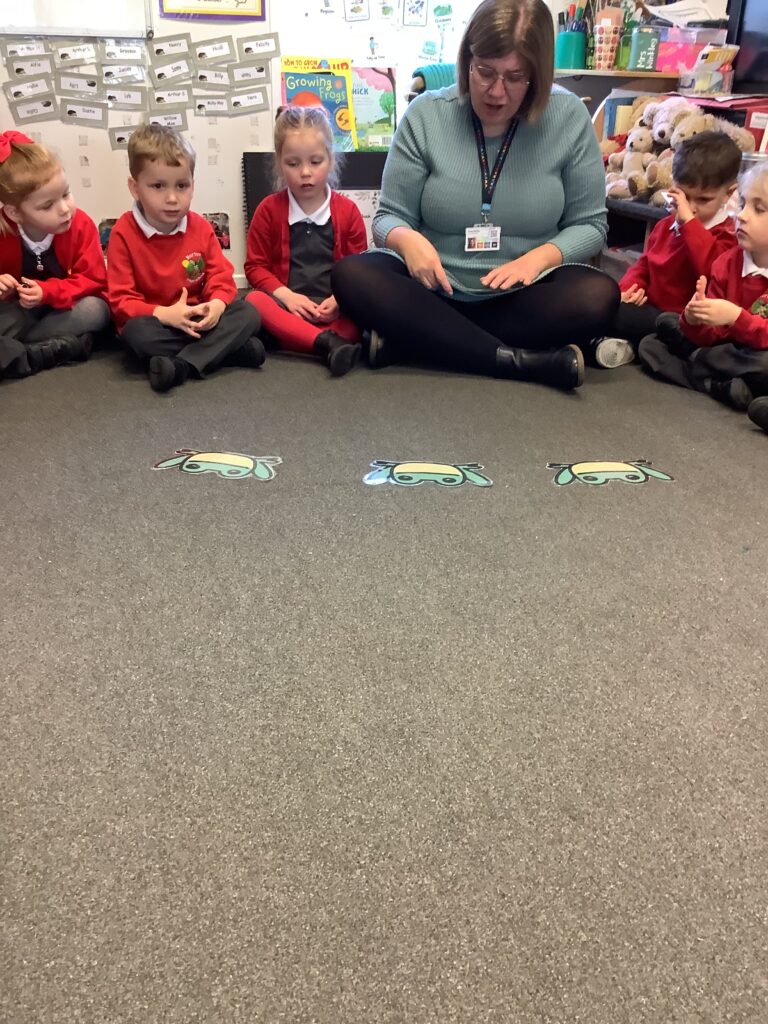
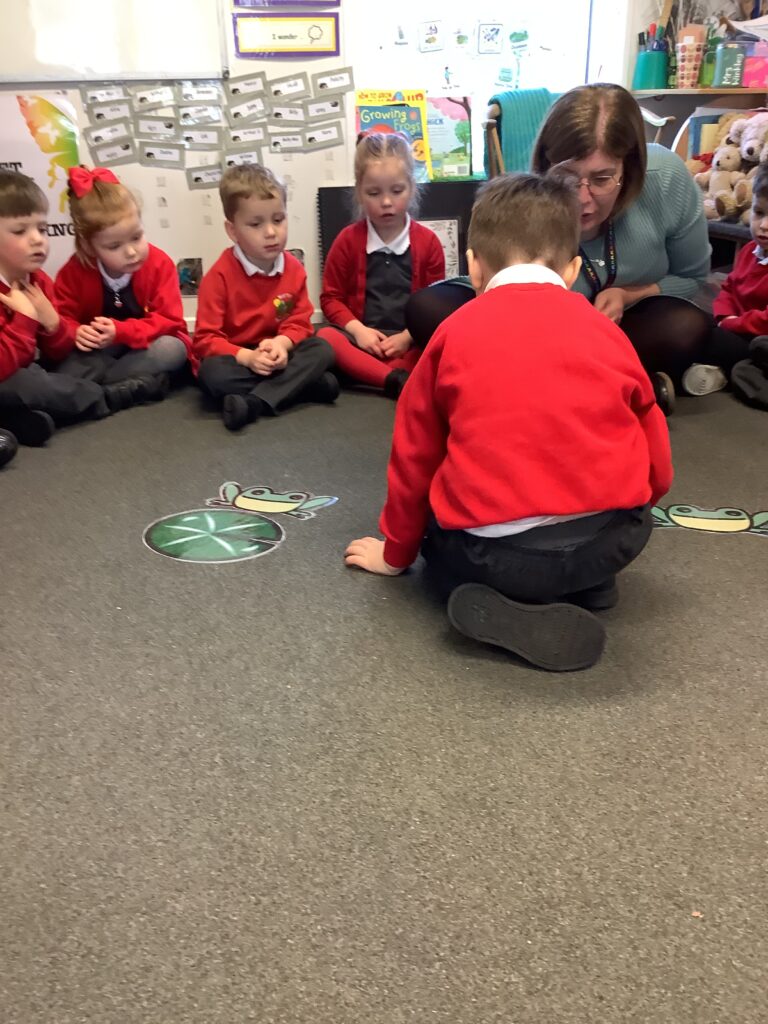
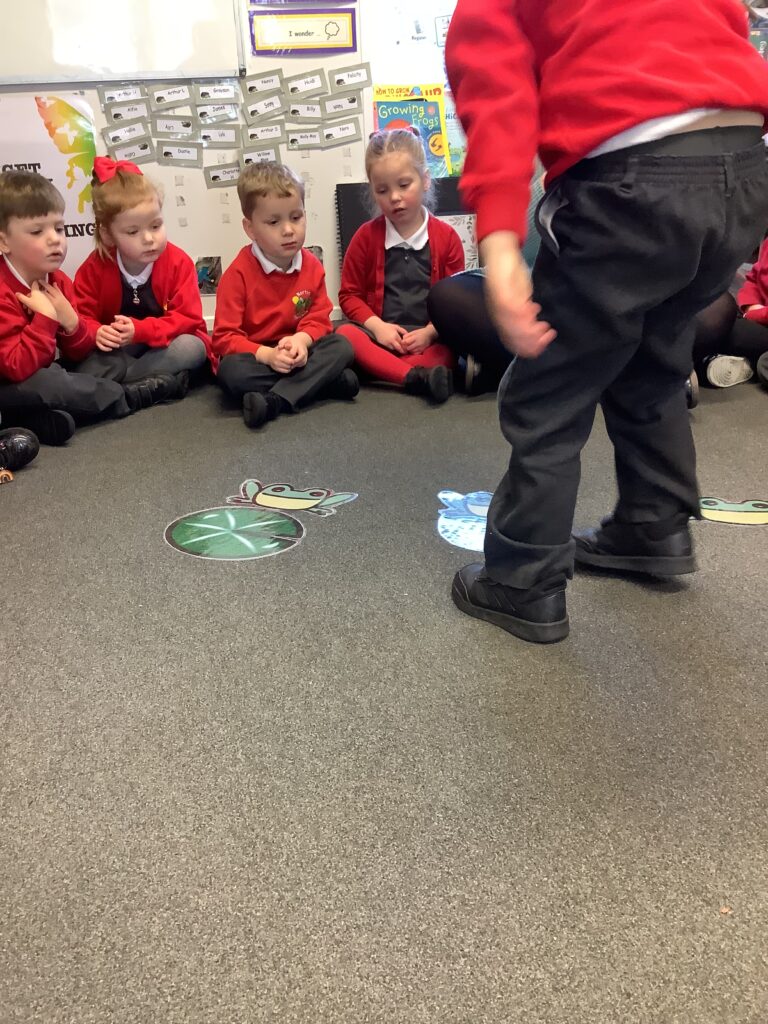
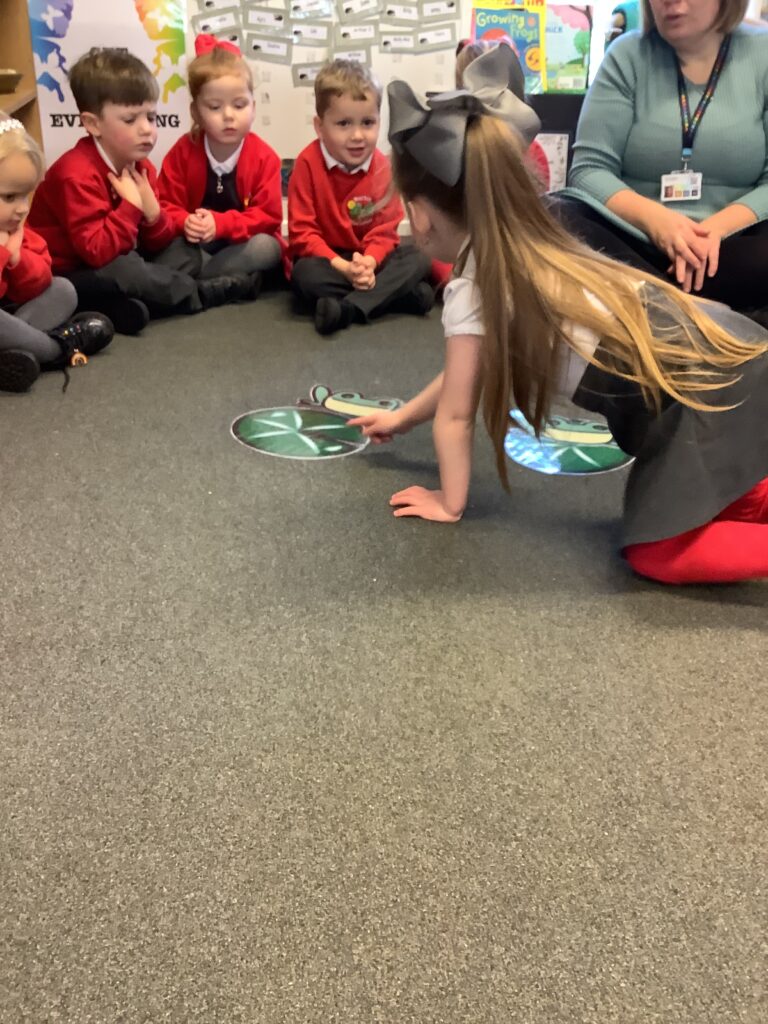
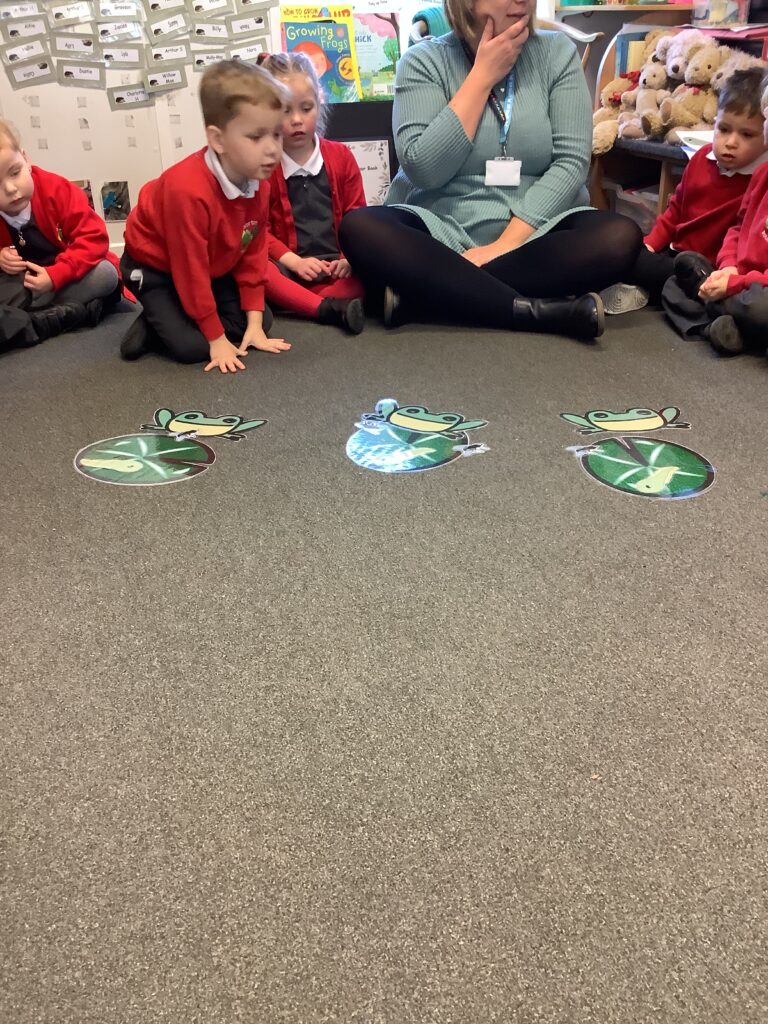
Nursery then demonstrated and consolidated their understanding by counting out three frogs from a pond to a lily pad.
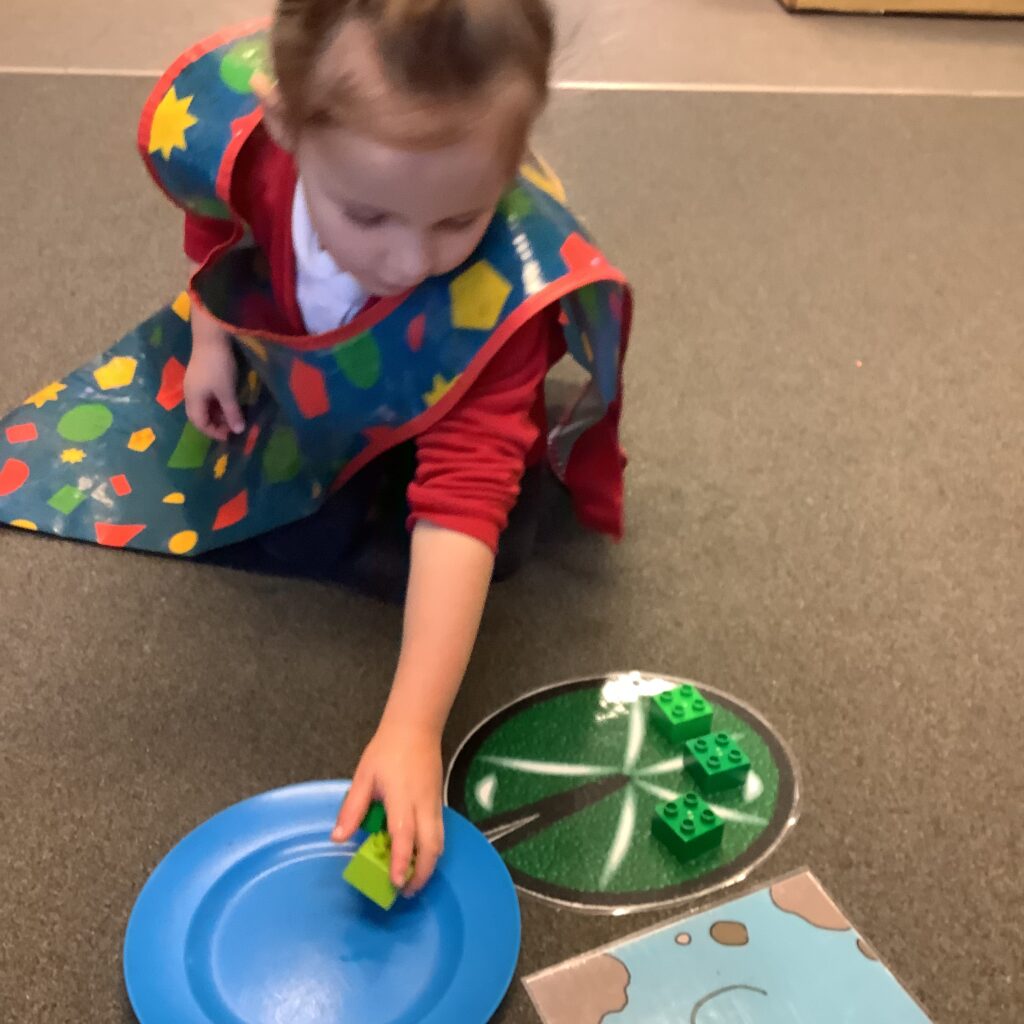
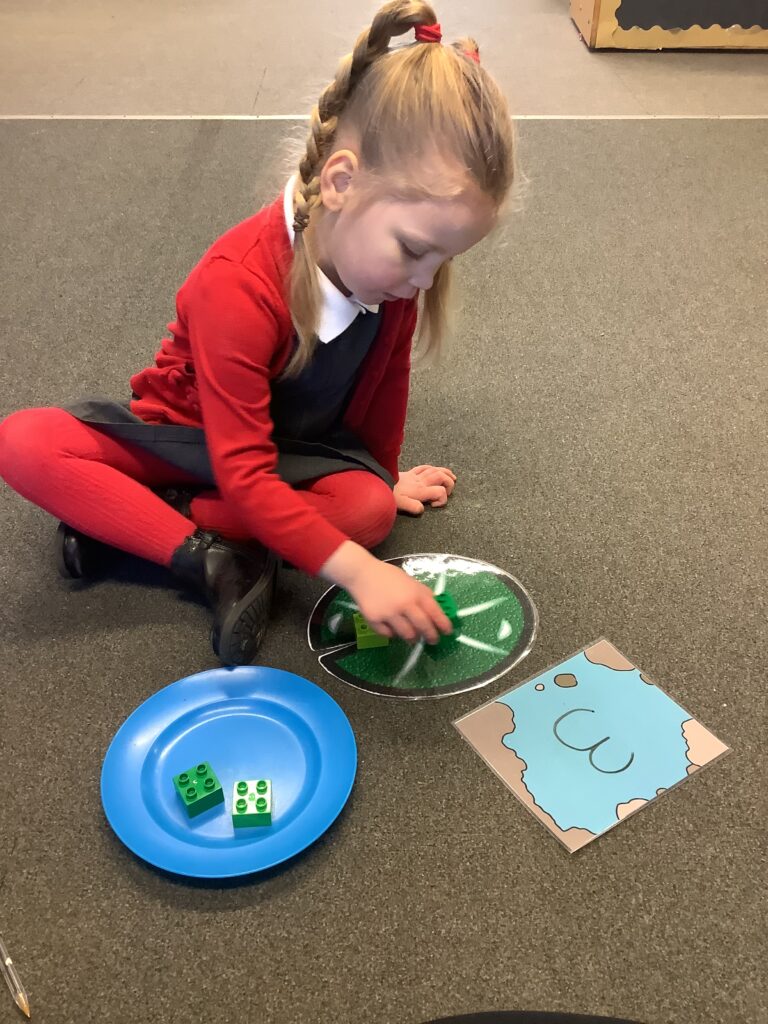
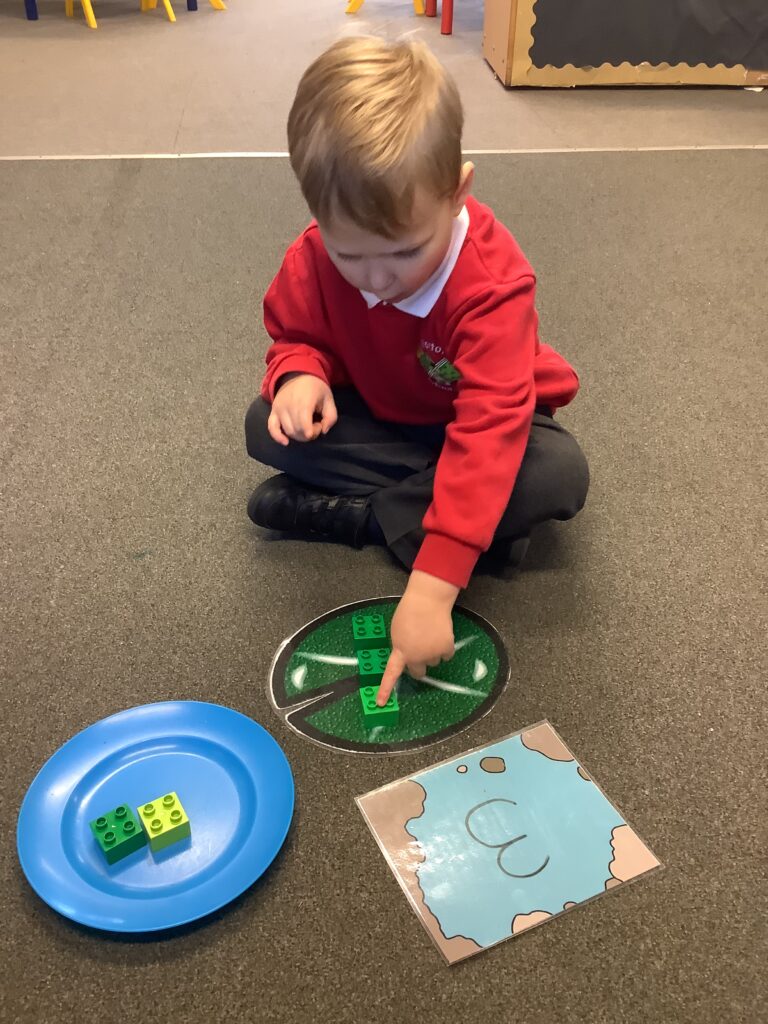
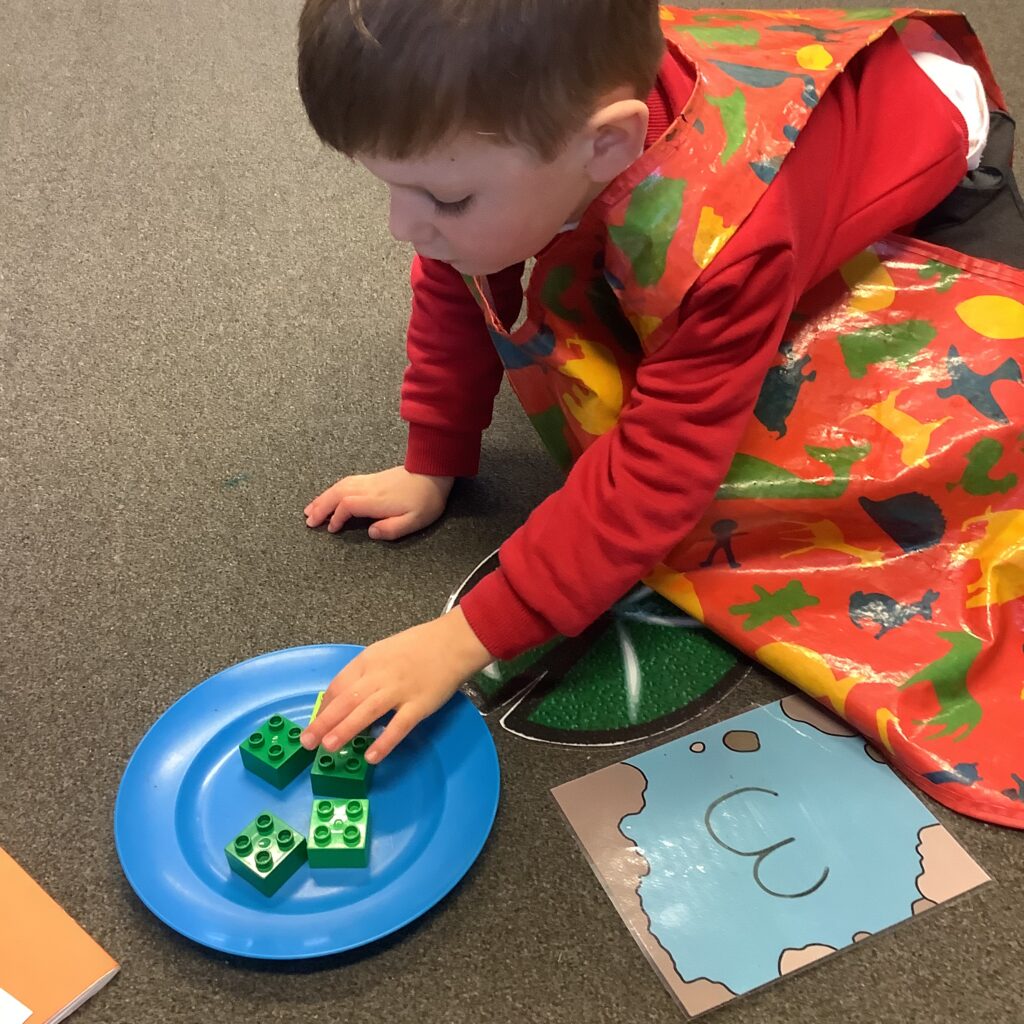
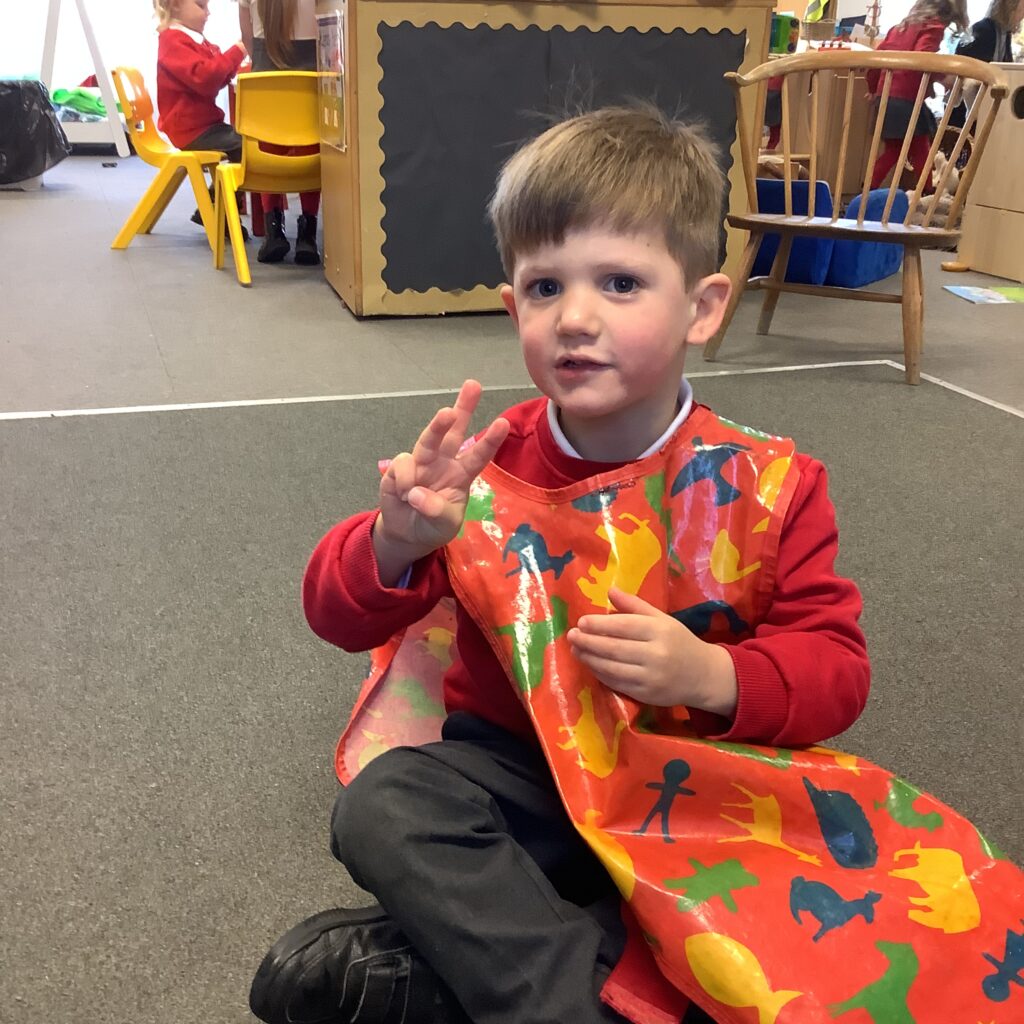
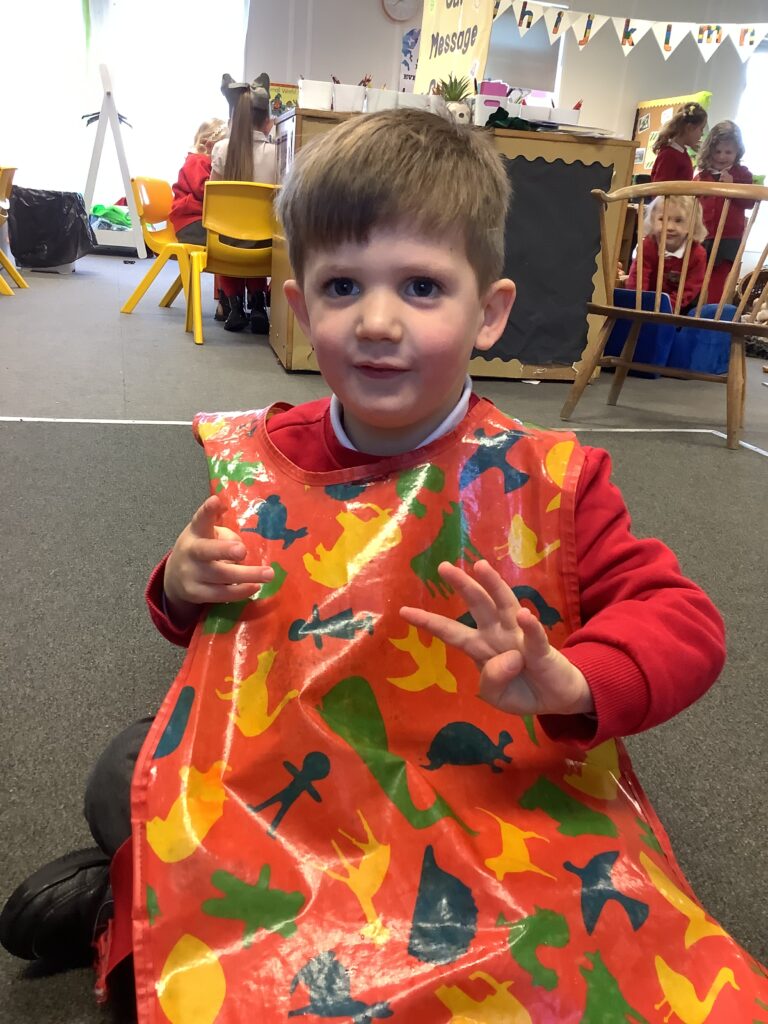
As a lovely end to our week we shared our learning with our families, playing in the provision during a family play and stay session. Mums, Dads, brothers and sisters, Grandmas, Grandads and Uncles all had lots of fun spending time and playing with their special little people. Thank you to all who attended and for all of your support, they were two beautiful sessions and we even squeezed in a demonstration of our daily Nursery Rhyme singing as part of our phonics!
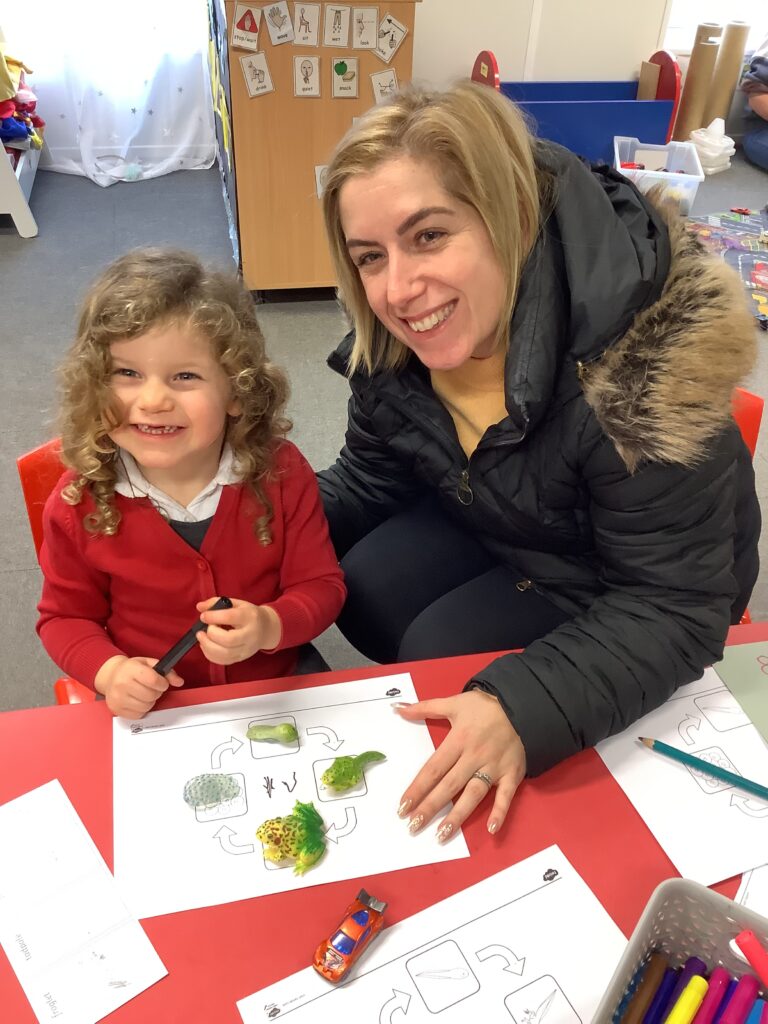
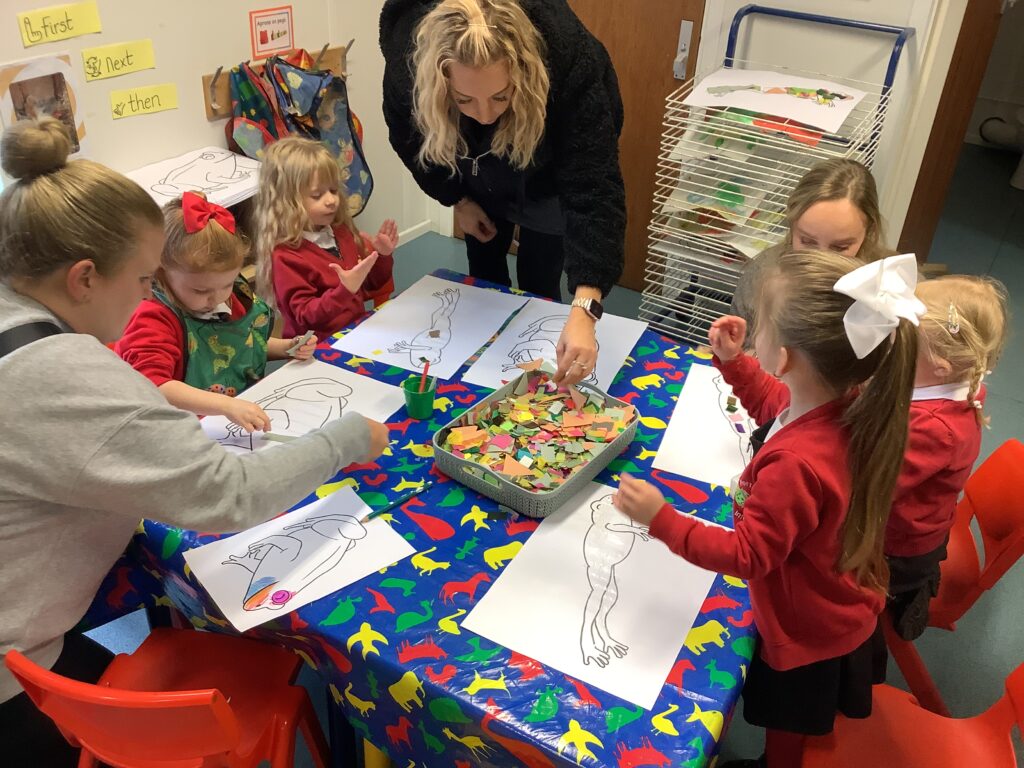
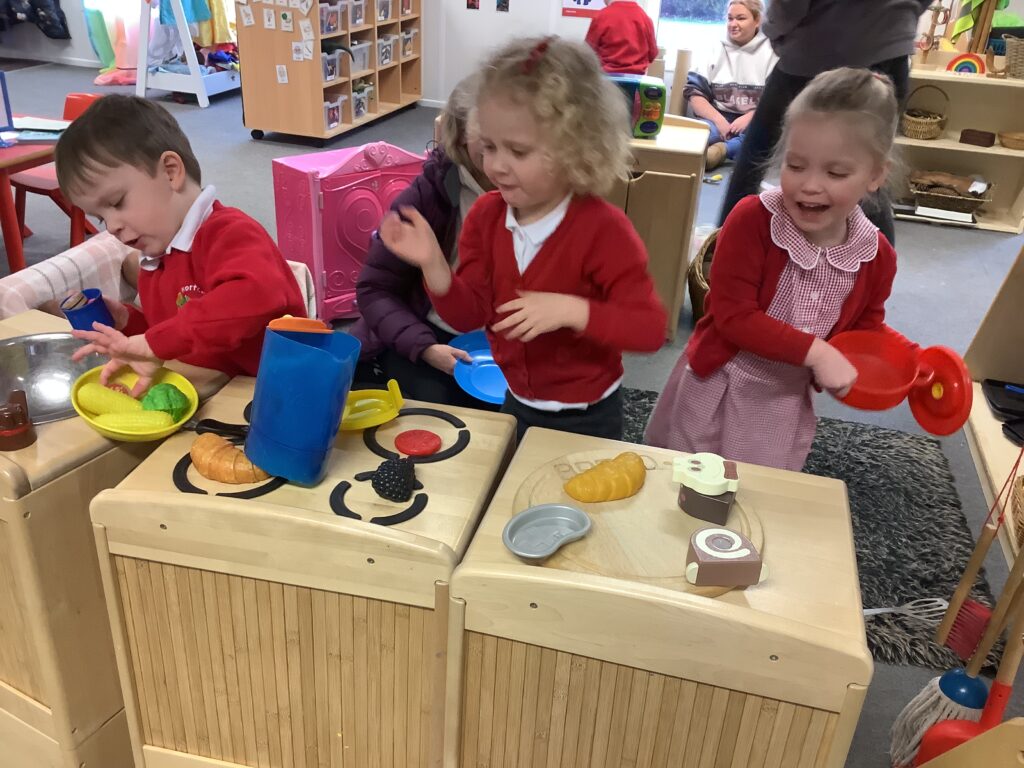
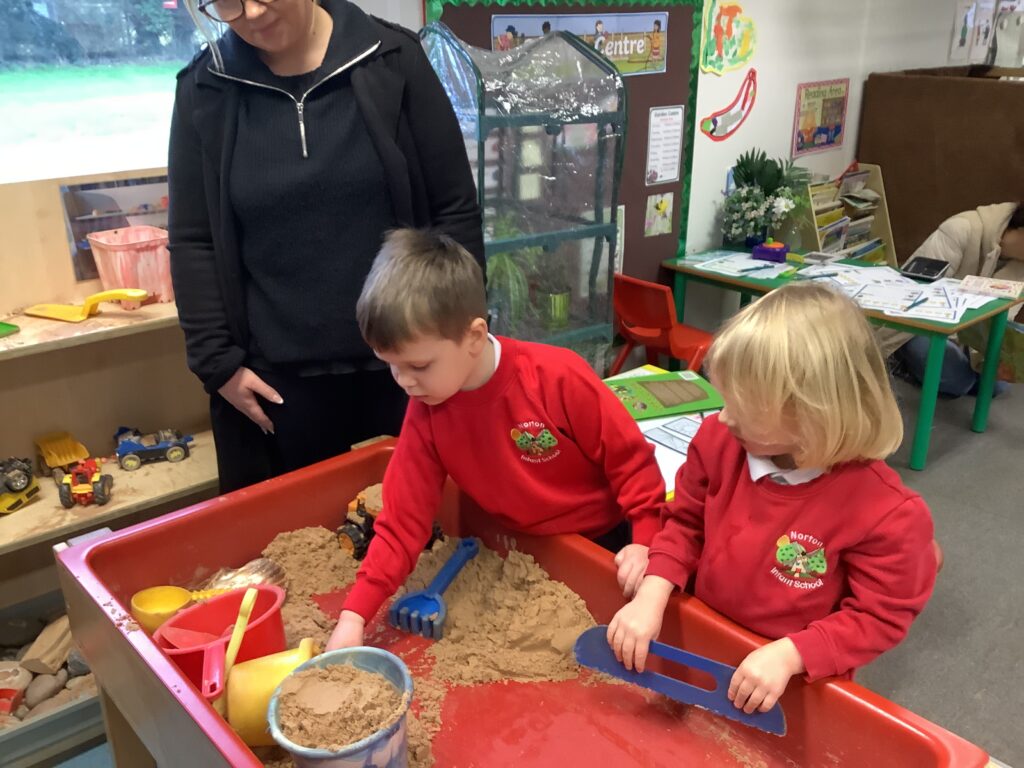
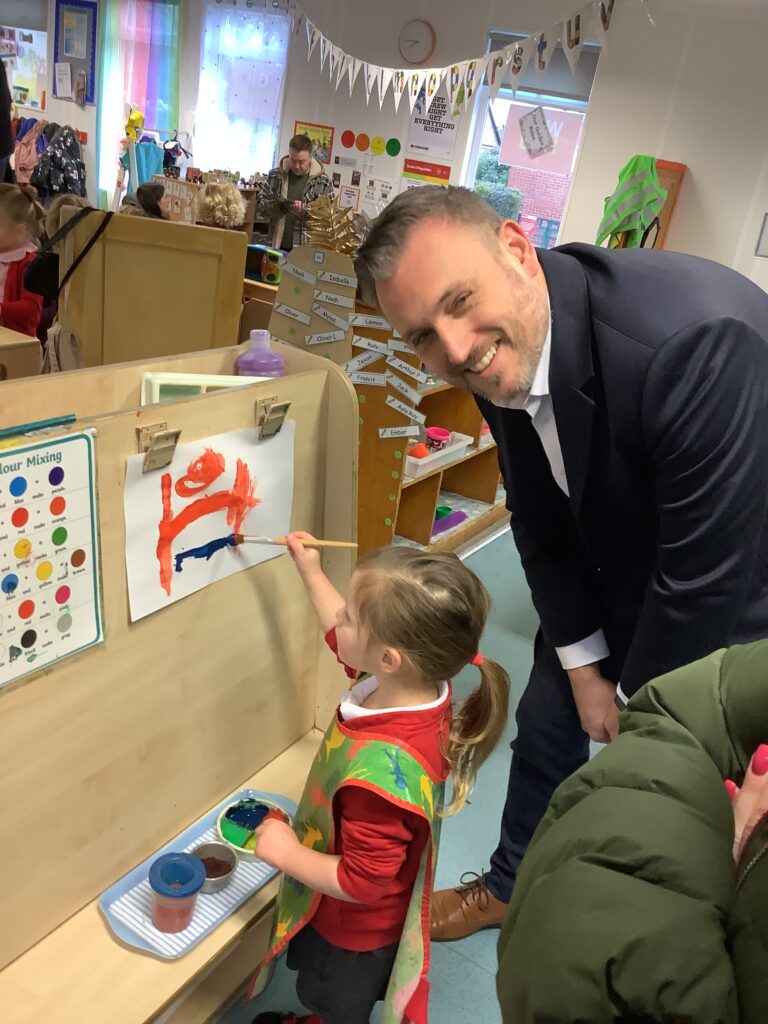
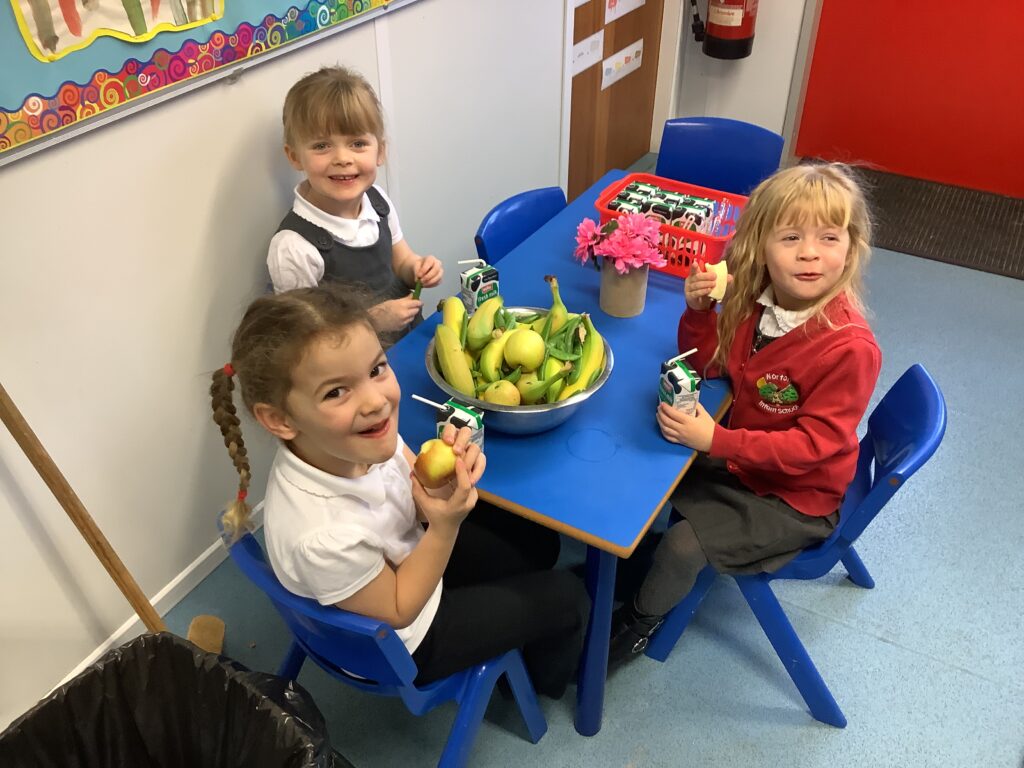
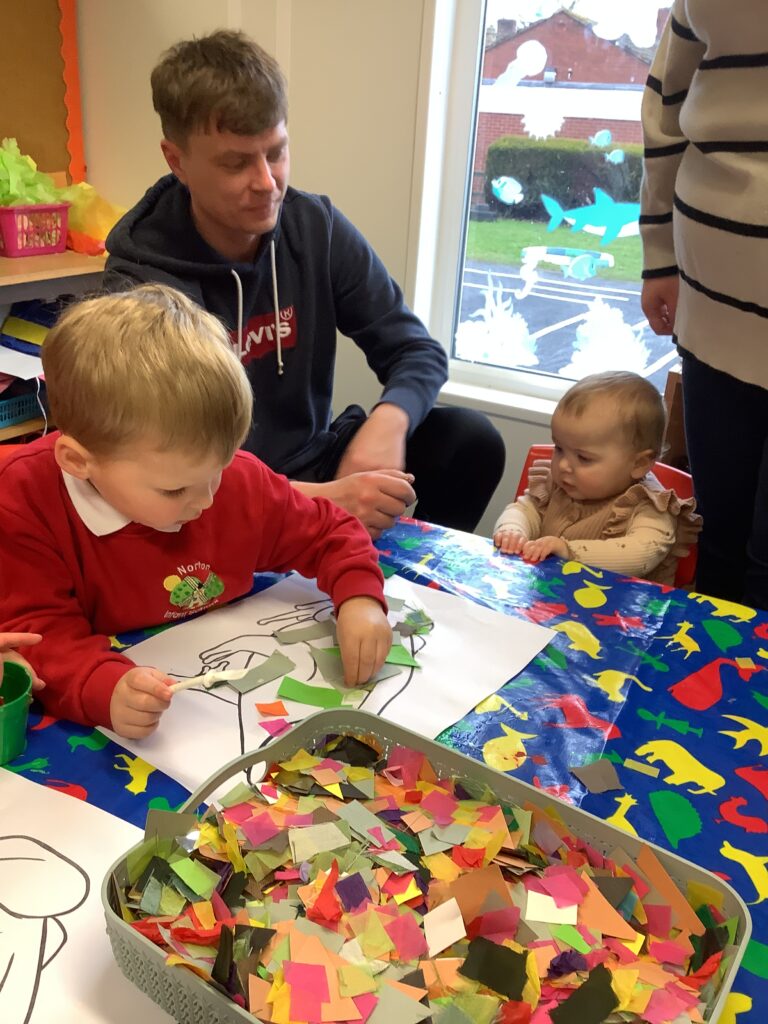
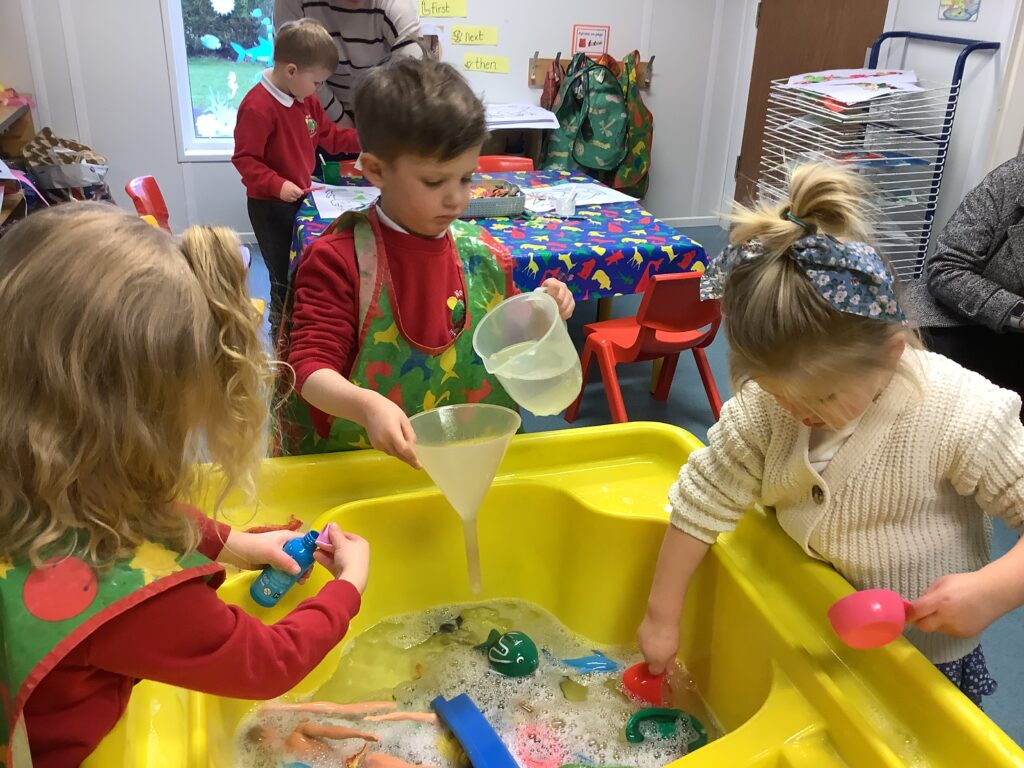
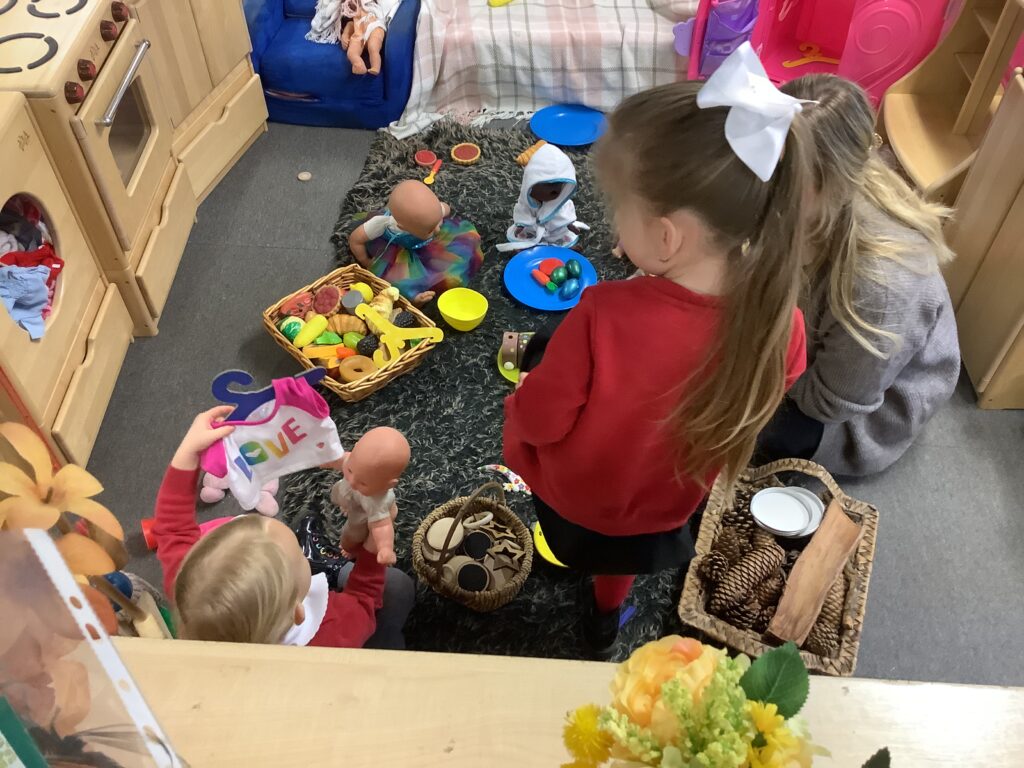
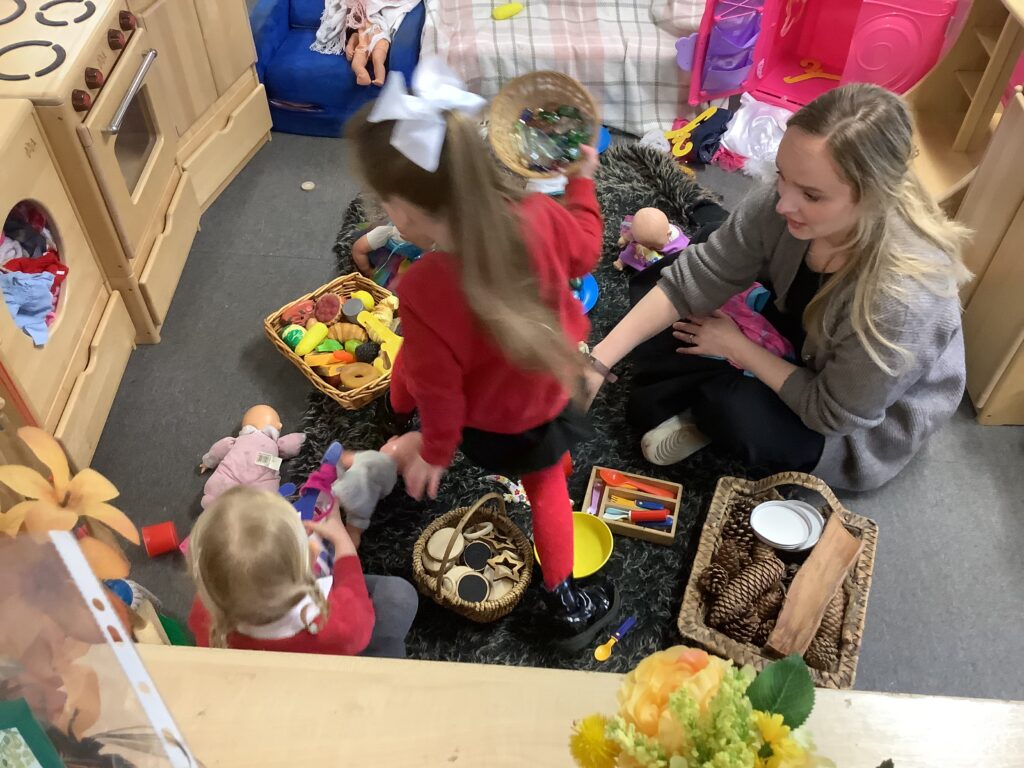
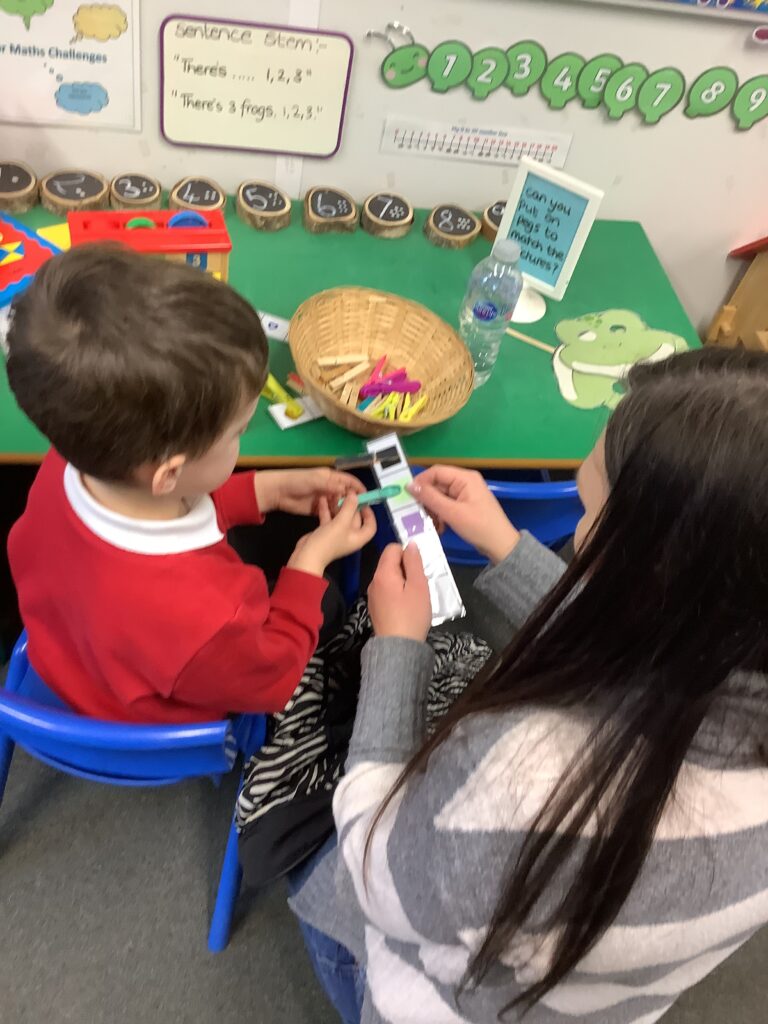
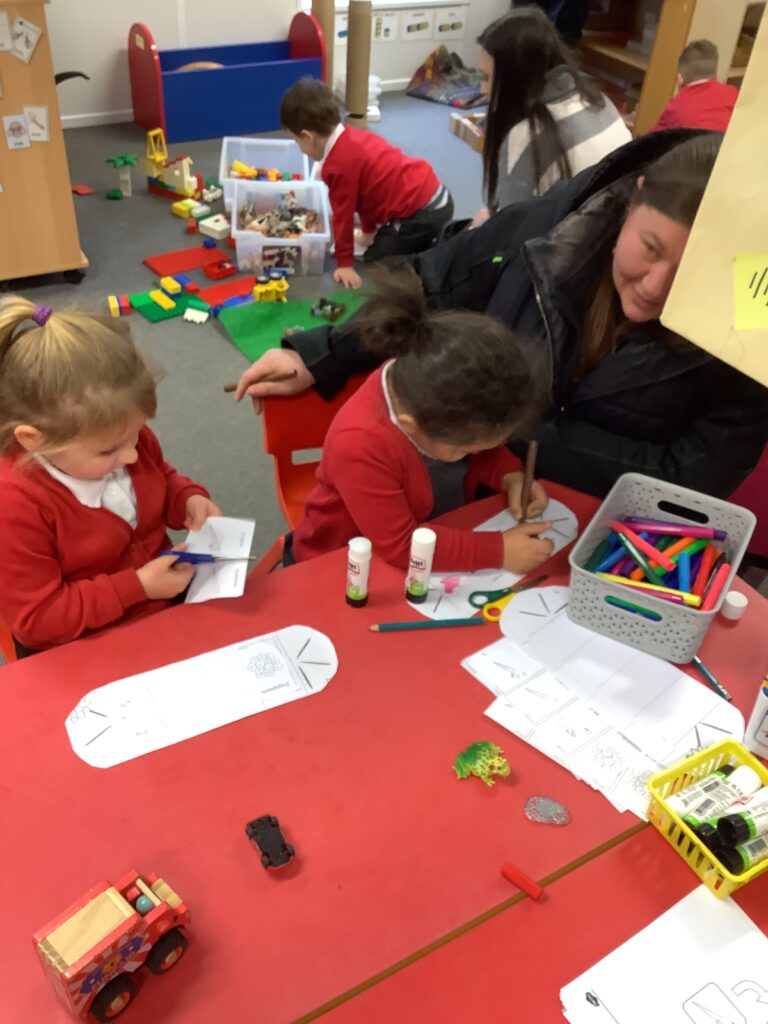
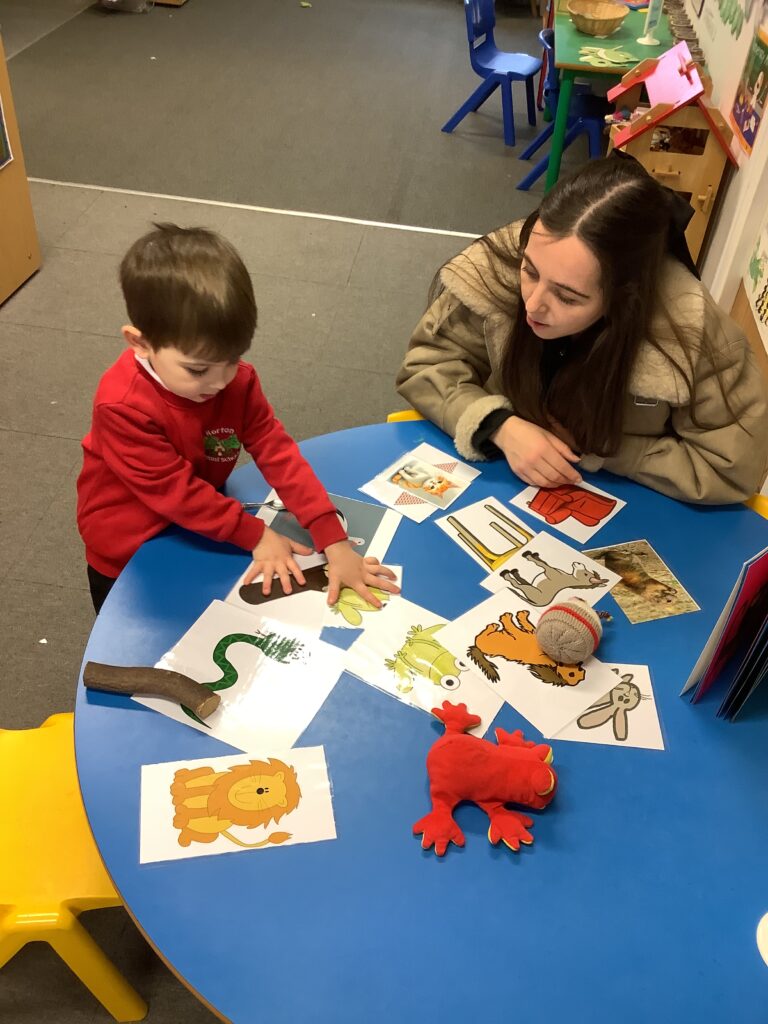
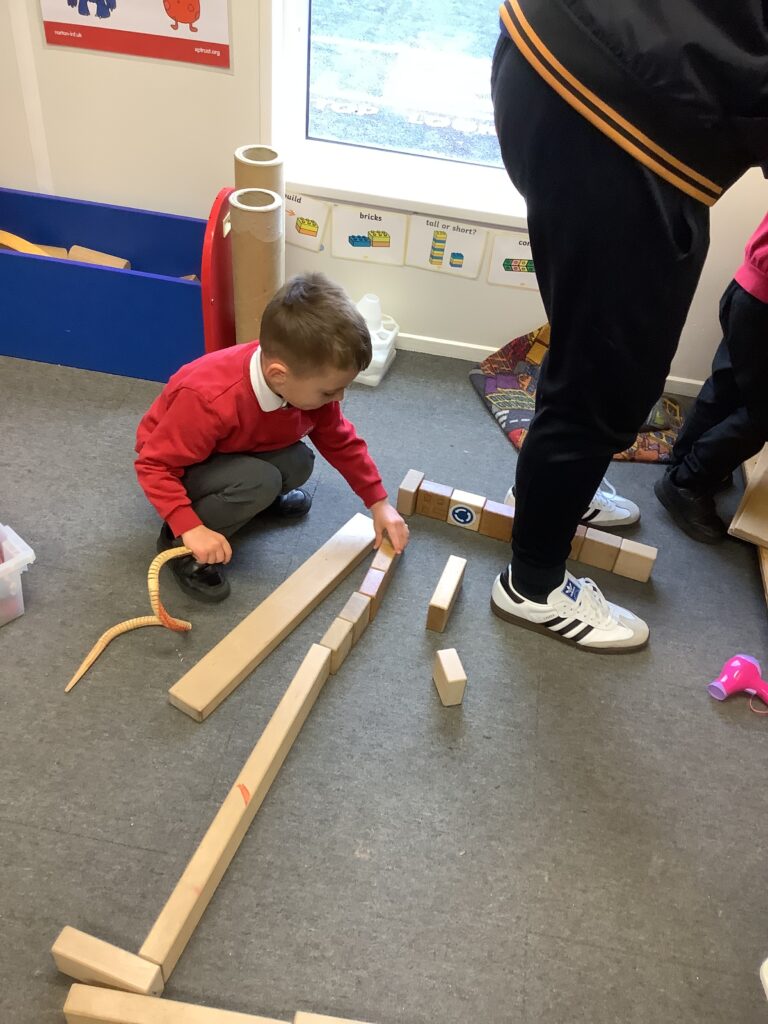
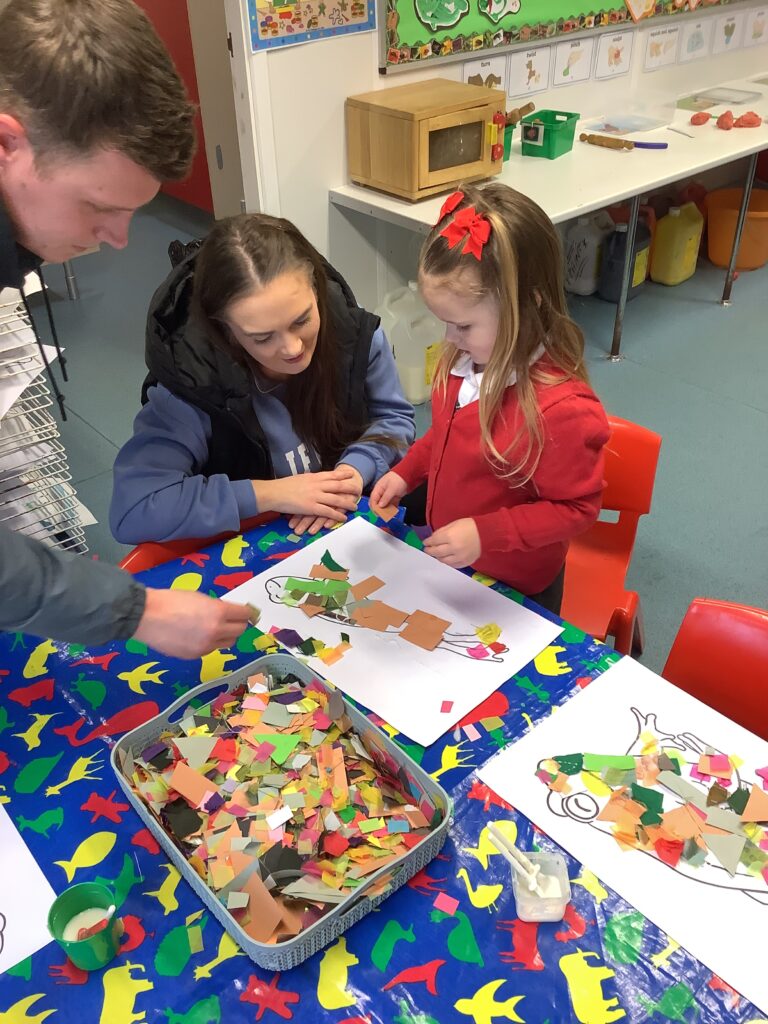
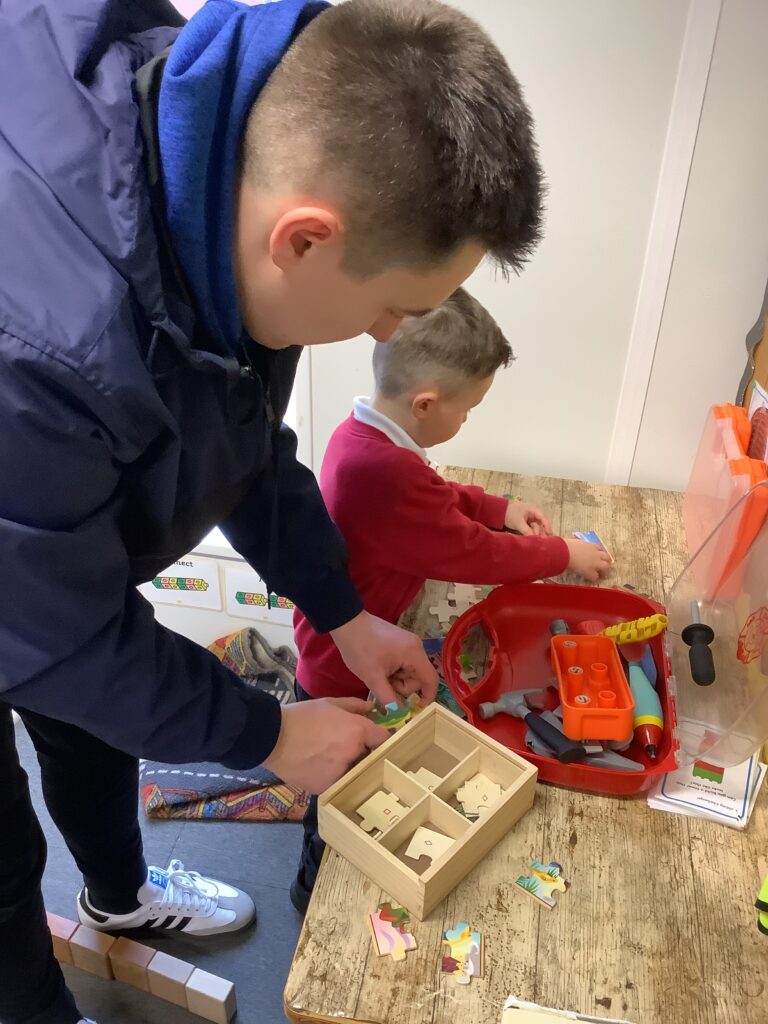
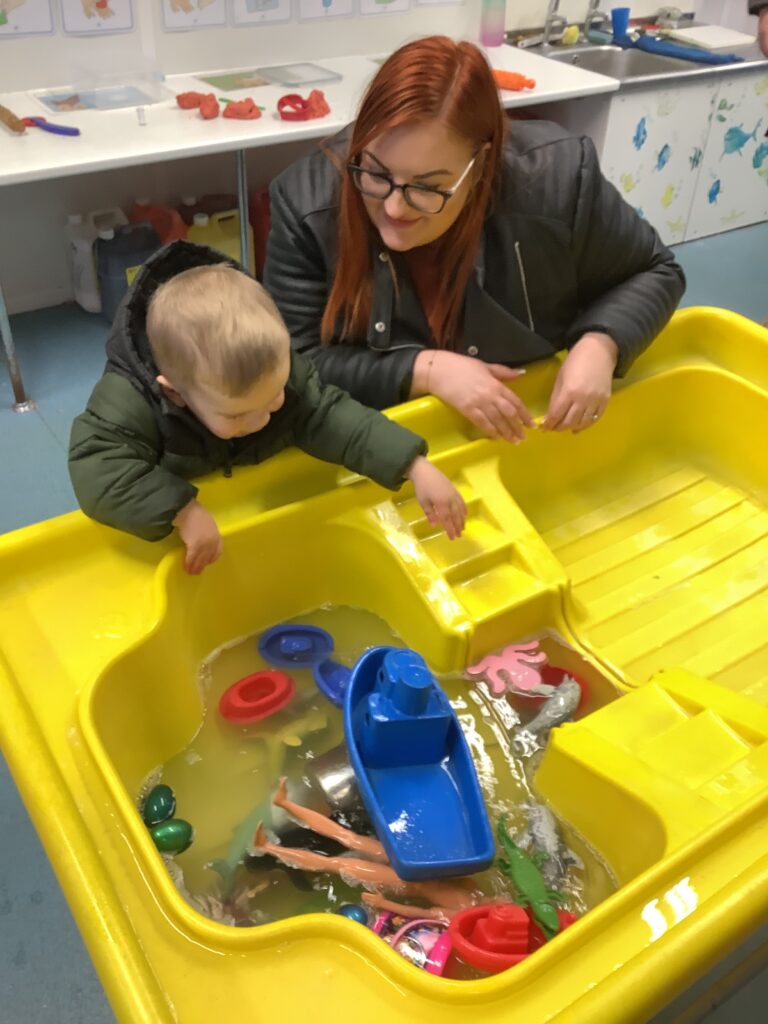
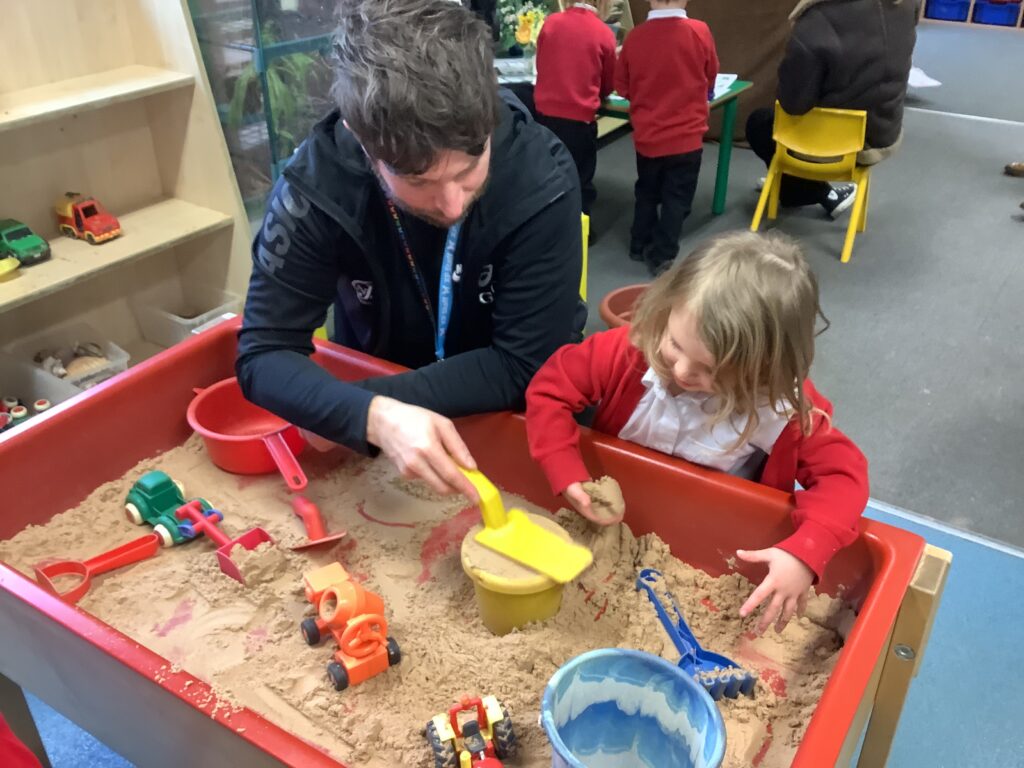
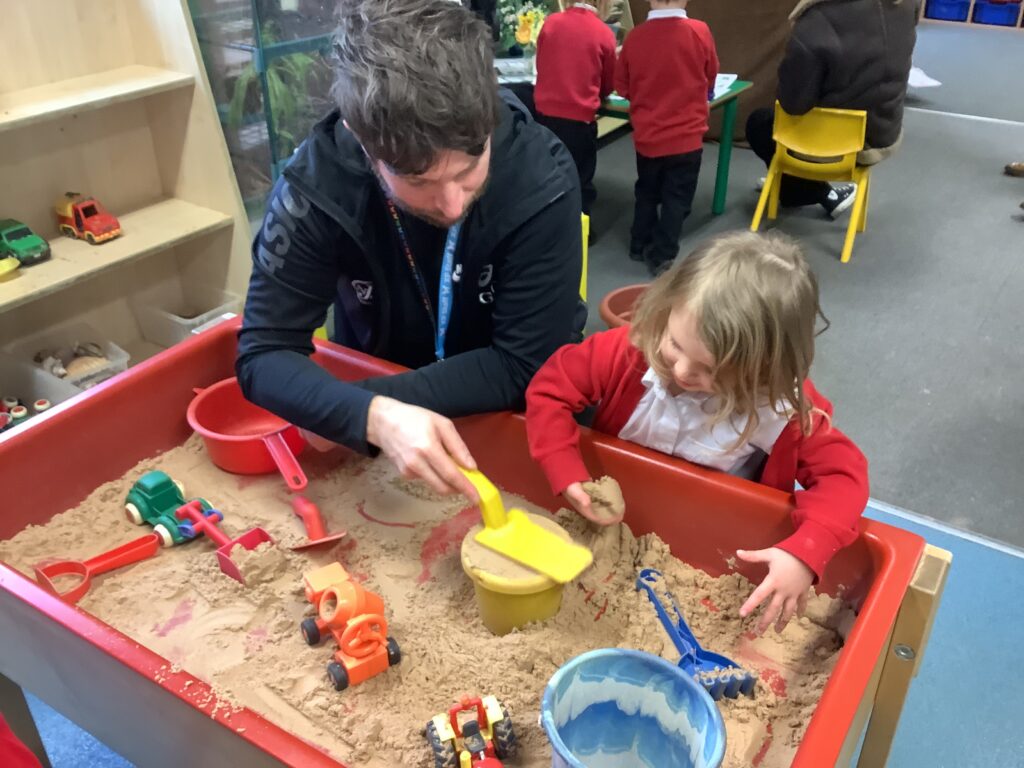

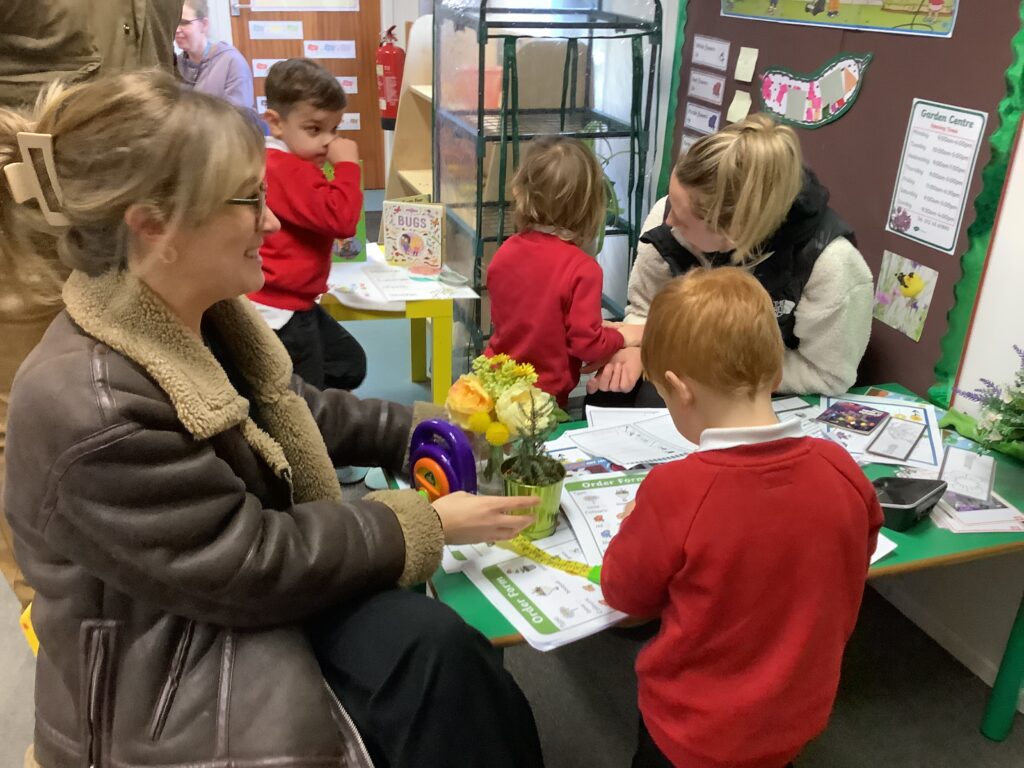
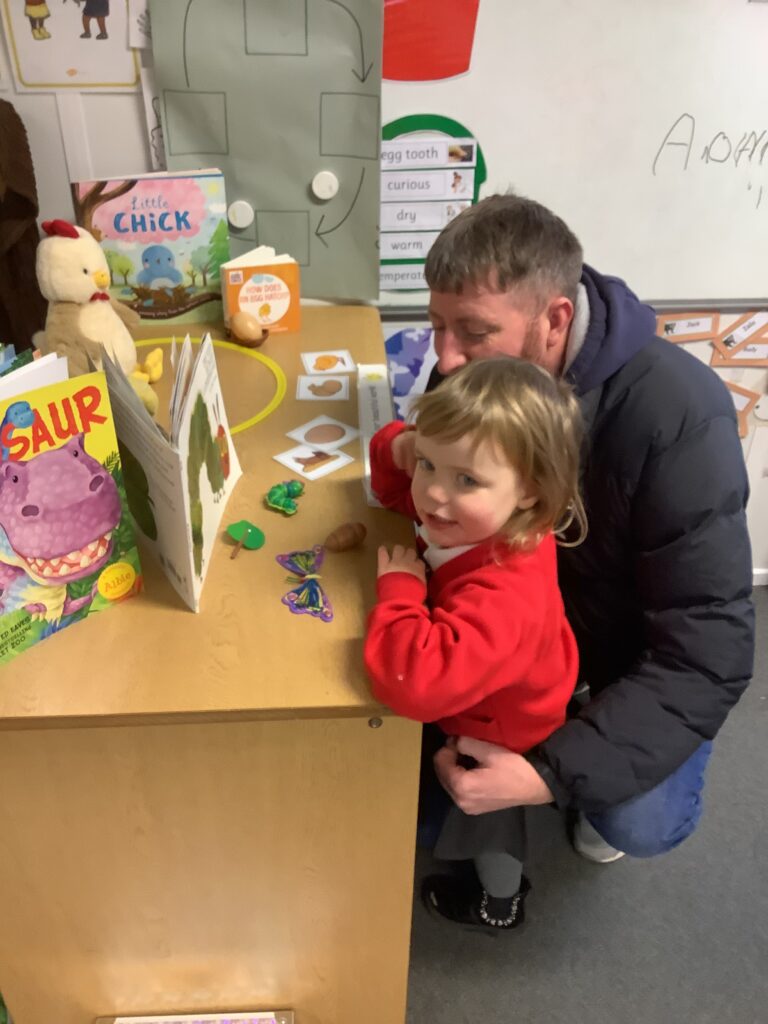
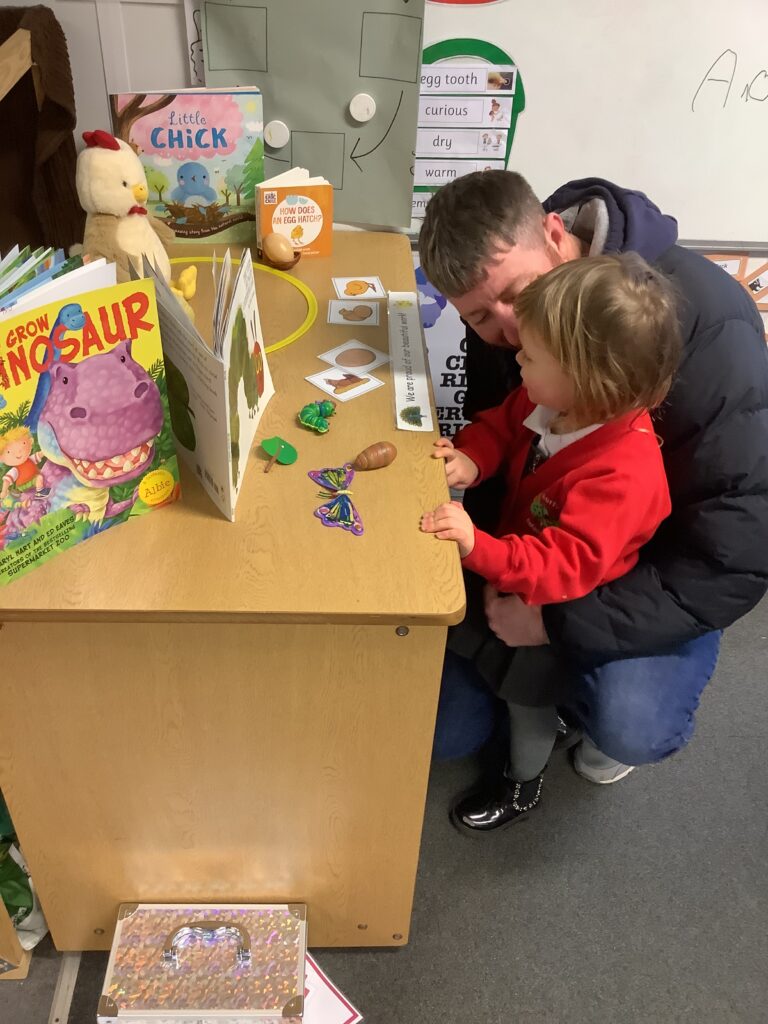
Yesterday KS1 celebrated Bob Manley’s 80th birthday by joining a worldwide singalong. We have been working really hard to learn the Marley Magic medley.
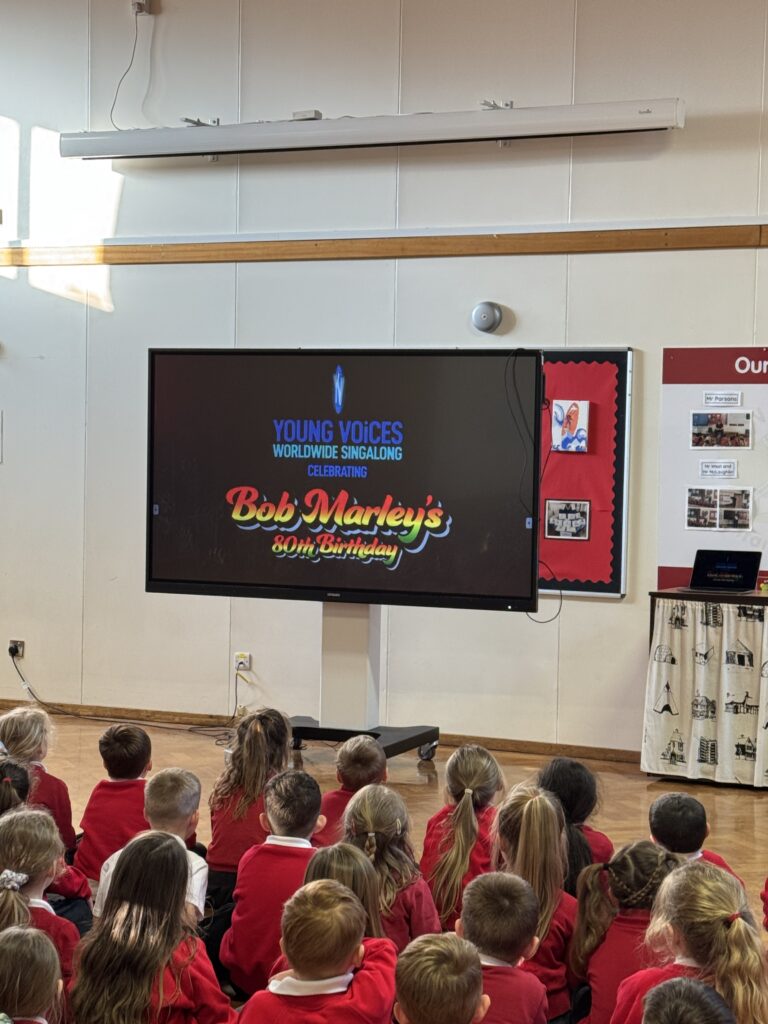
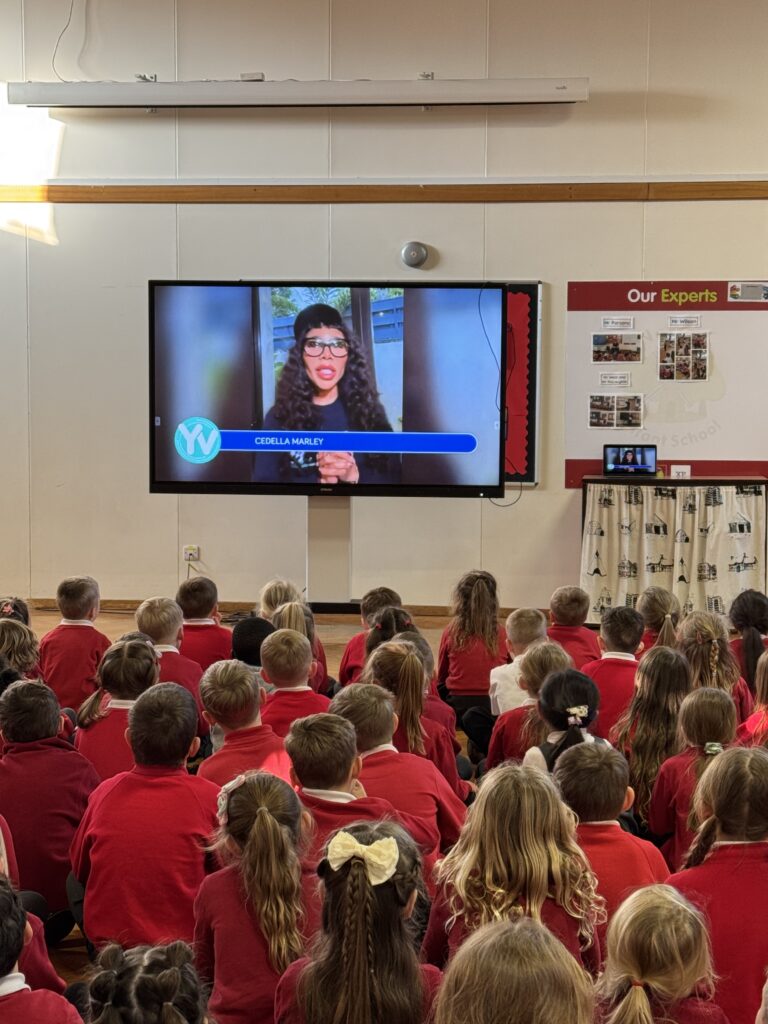
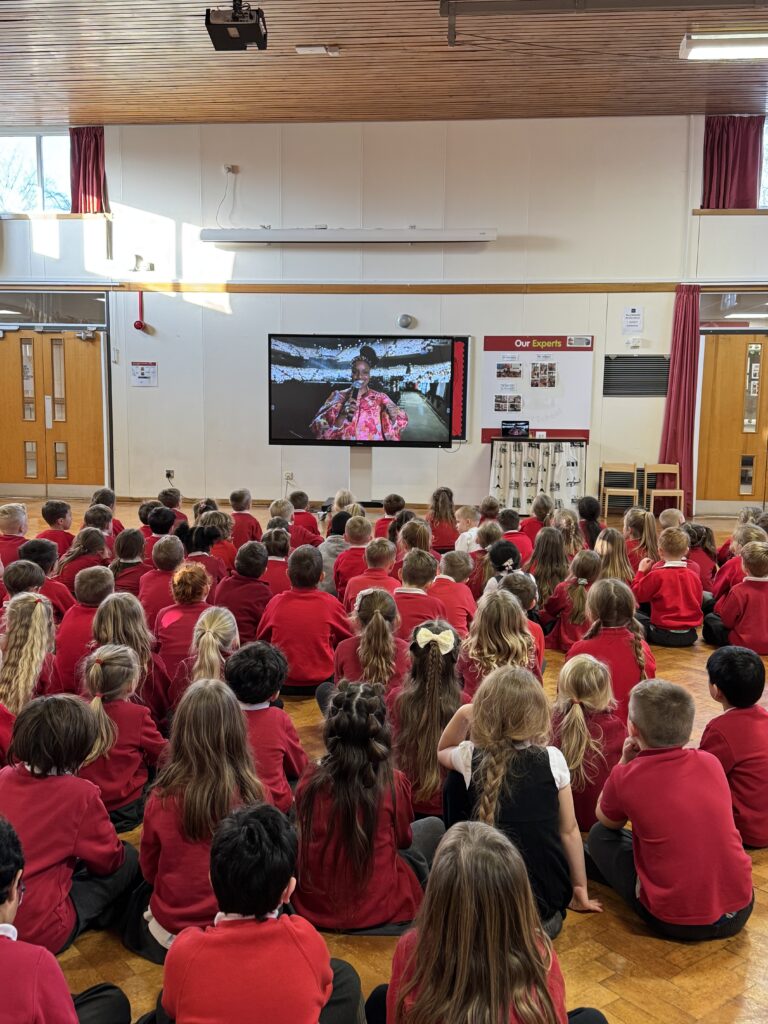
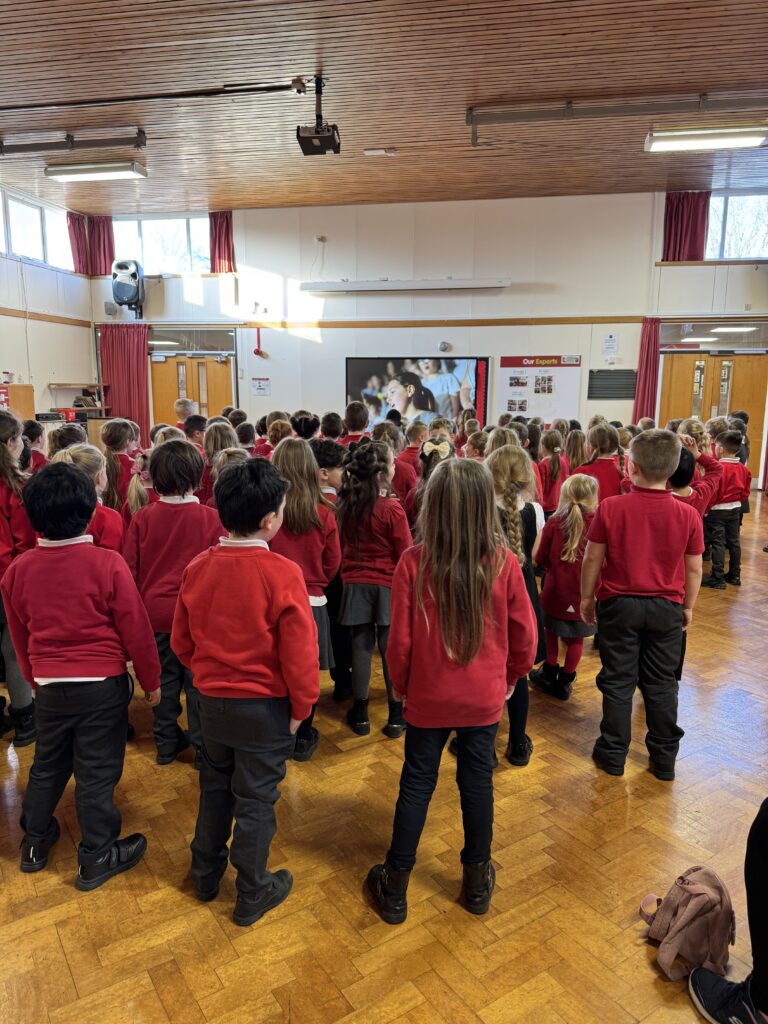
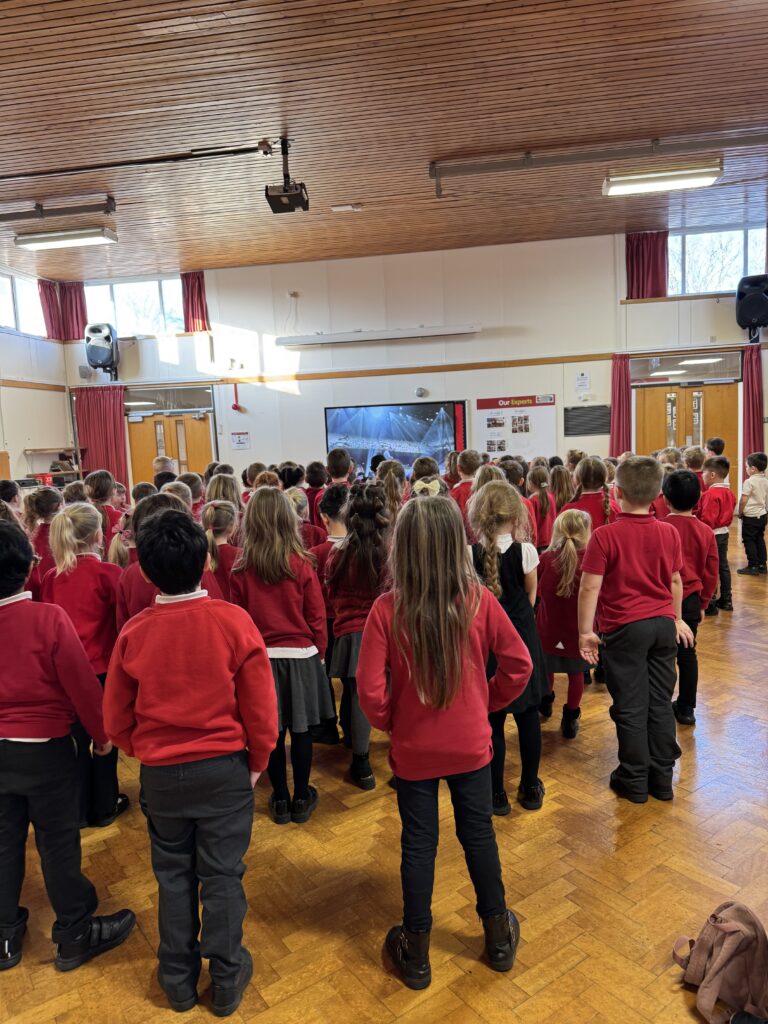
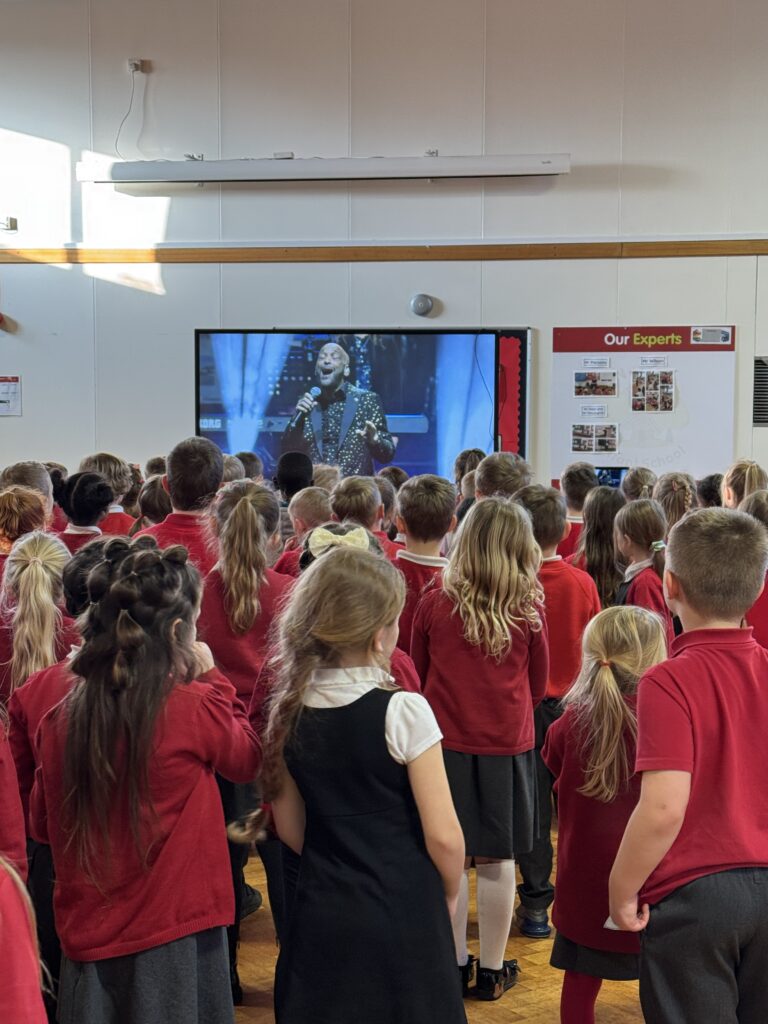
This week is Children’s Mental Health Week, so to advocate for this Nursery have been taking part in some mindful and relaxing activities to help them understand how it feels to feel calm and relaxed but more importantly how they can achieve this in times of upset, sadness or anger.
In our Mindful Monday Crew the children took part in animal yoga. They worked hard and had lots of fun recreating the modelled poses and practising yogi breathing.
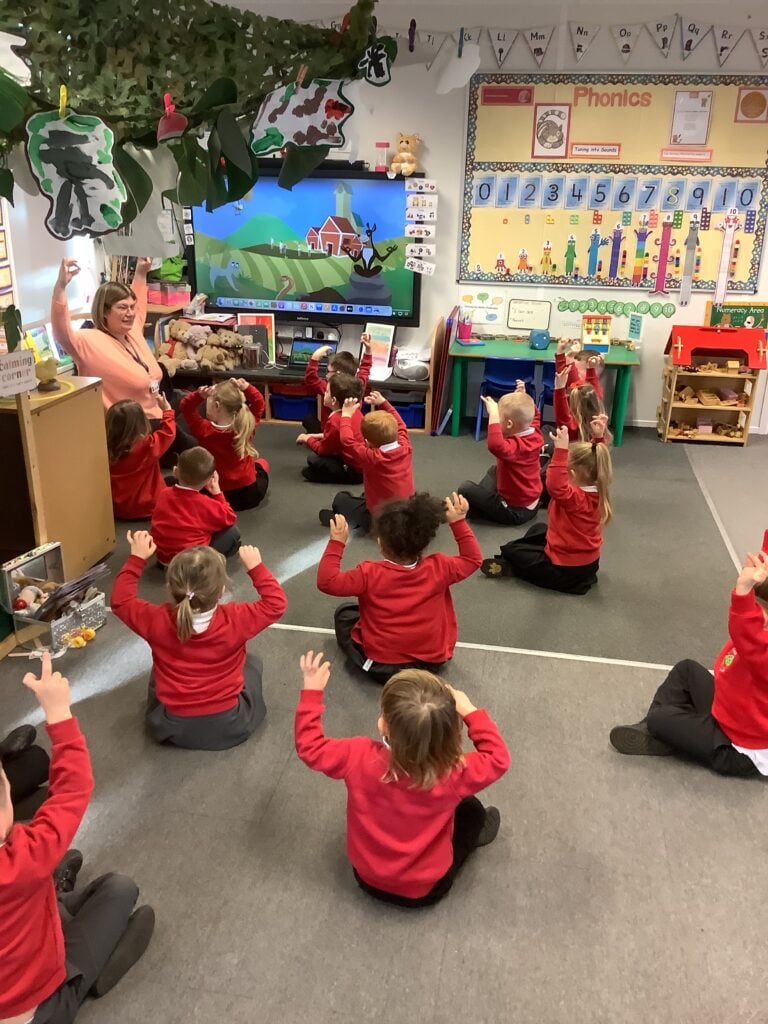
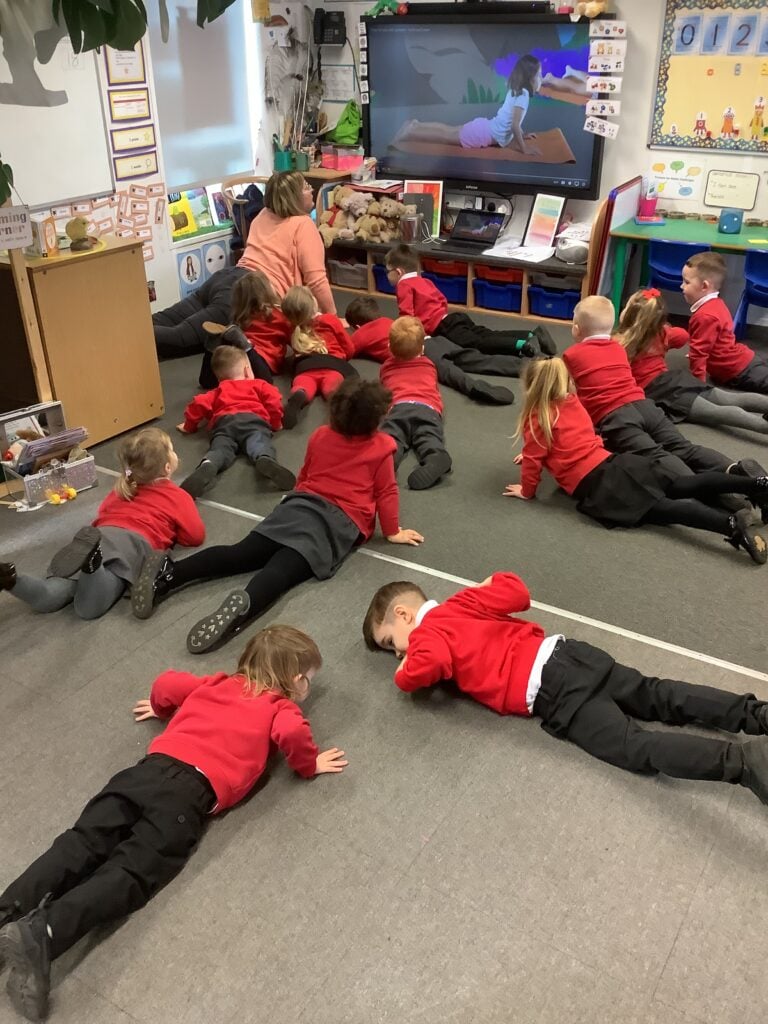

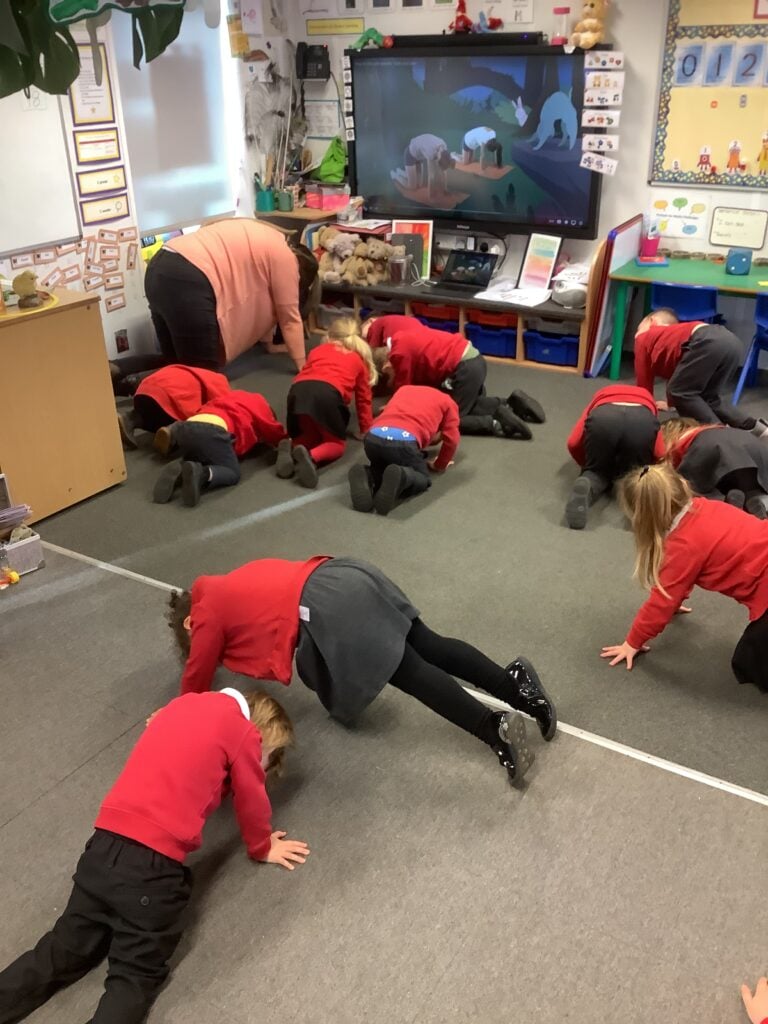
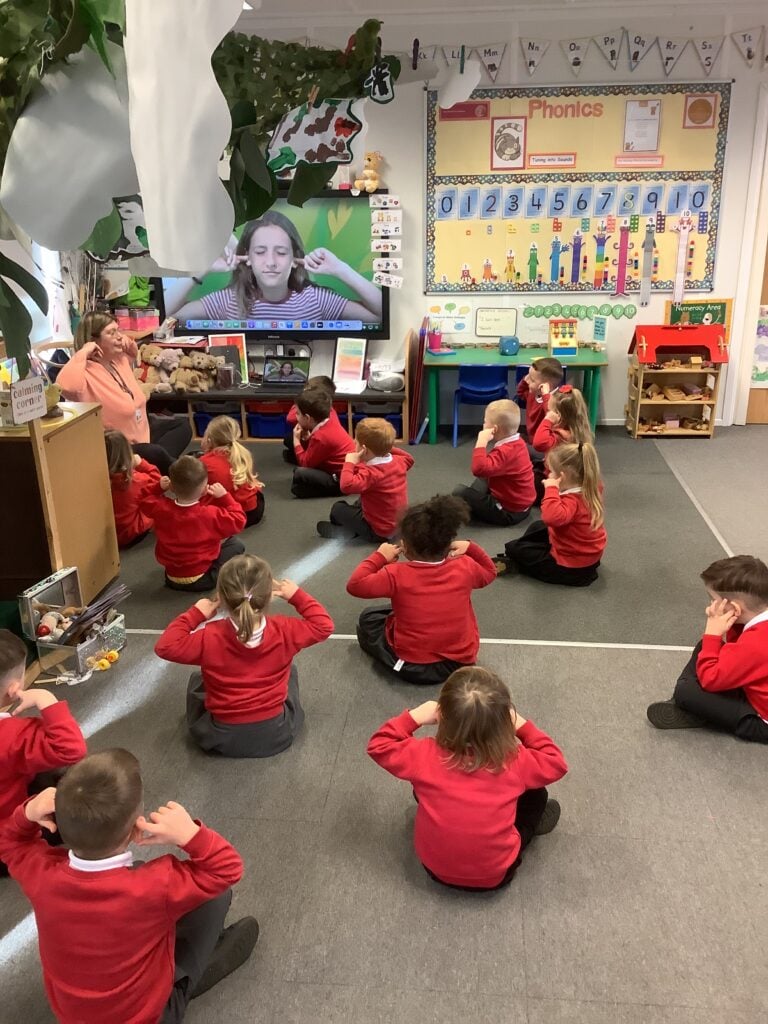
During our Wise Wednesday Crew the children talked around what they noticed about the faces of some characters on a feeling thermometer as we checked in. Some children said that the characters from 3-5 on the scale looked; “Sad”, “Scared”, “Frightened”, “Worried” or were “Crying”. The children then pop corned, what they could do to cheer themselves up? Some of our ideas were fantastic, the children said “Go for a scooter ride”, “Get a hug”, “Play with toys”, “Bounce on my trampoline”, “Stroke my doggy”, “Read a book”, “Bake”, “Watch Bluey” and “Sing”.
Nursery then took part in a carousel of four different activities, each lasting 3/4 minutes which taught them strategies of what they can also do in school and at home to help them calm, relax and self regulate. These activities were;
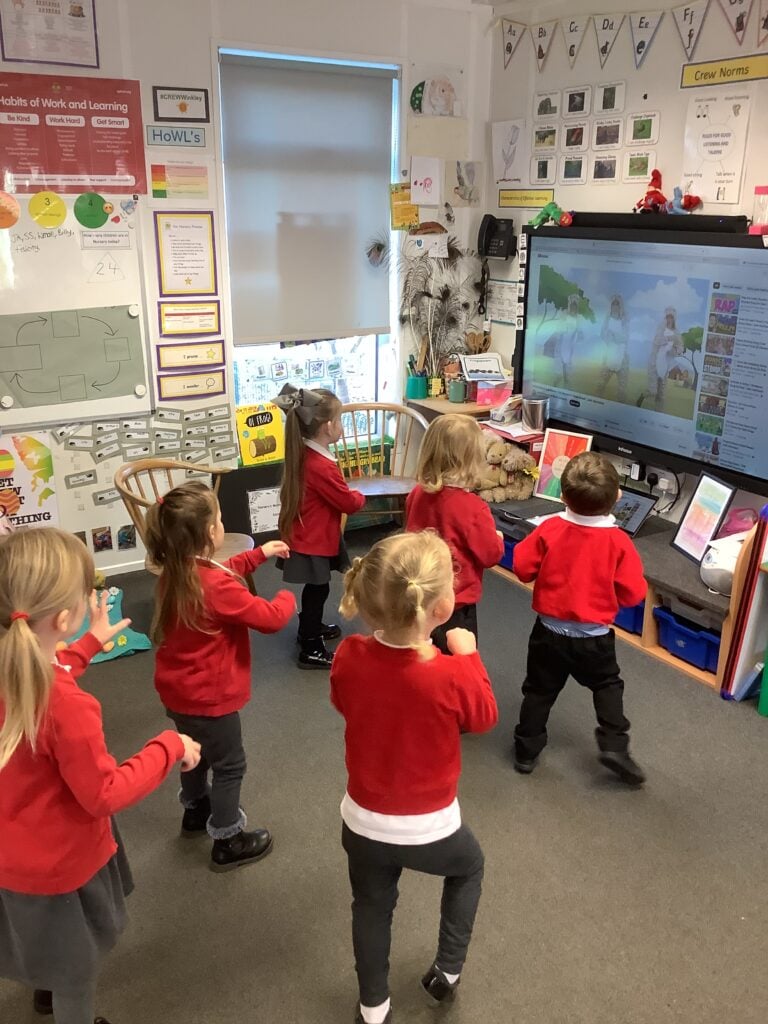
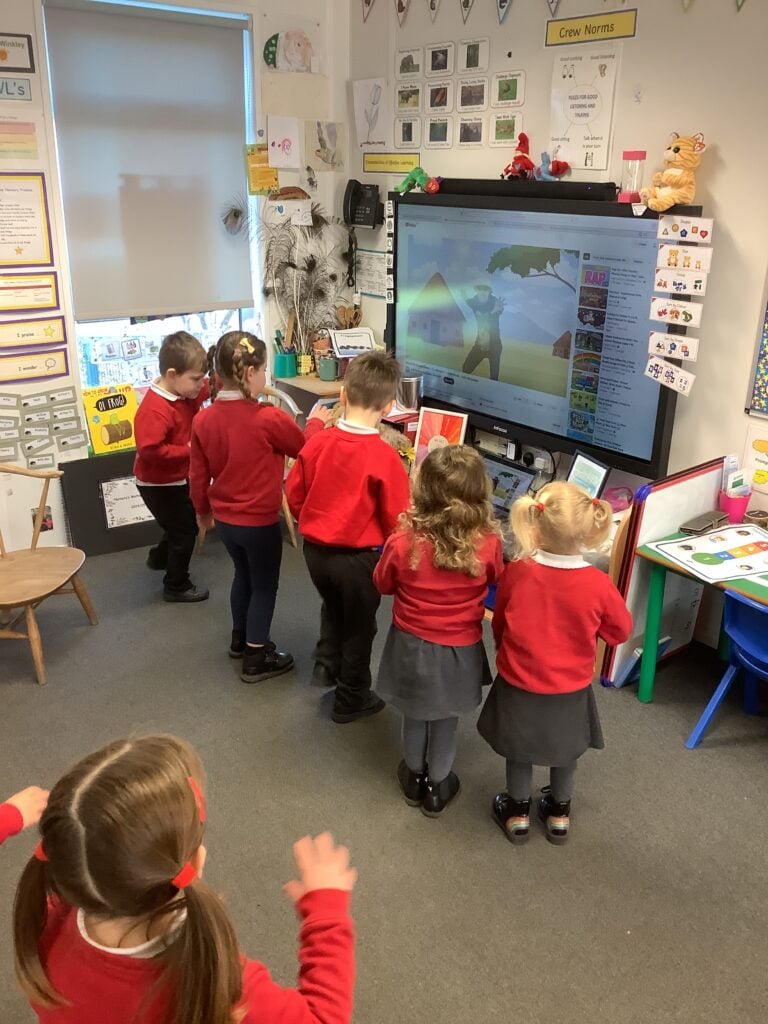
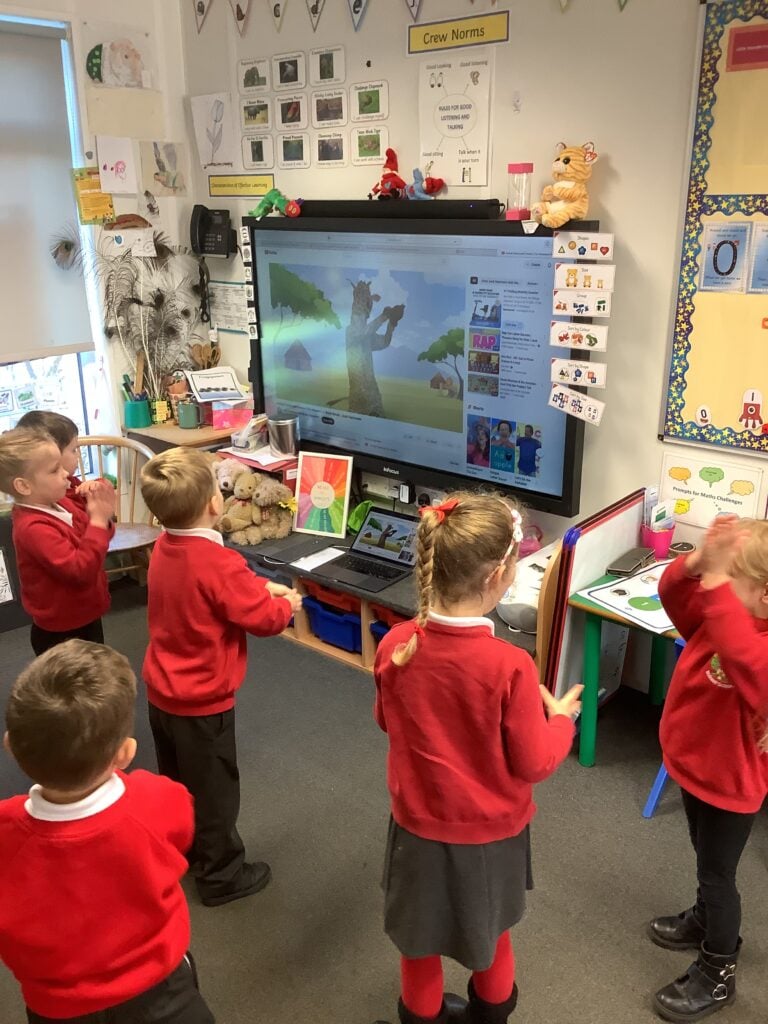
Dancing to guided movement songs.
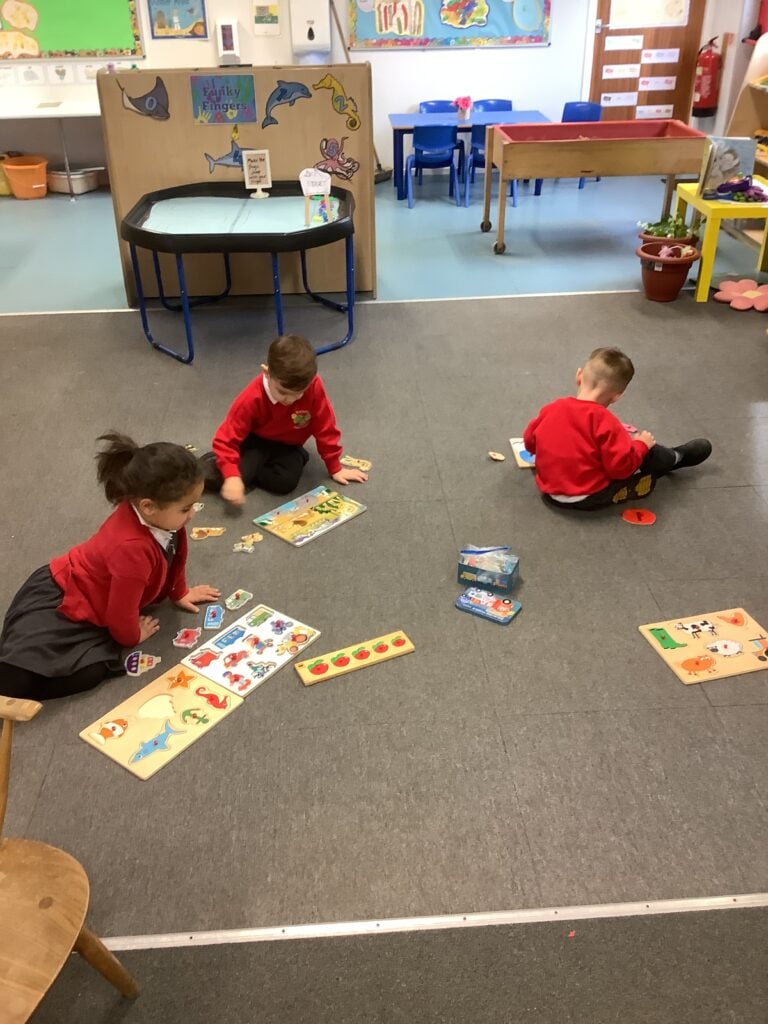
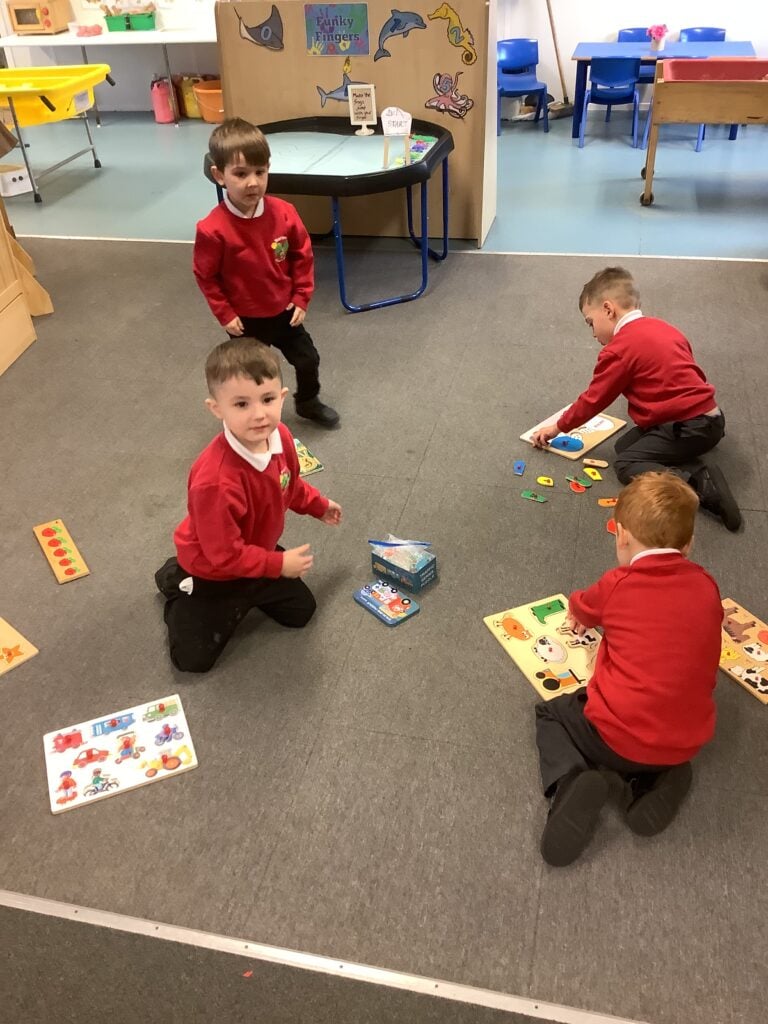
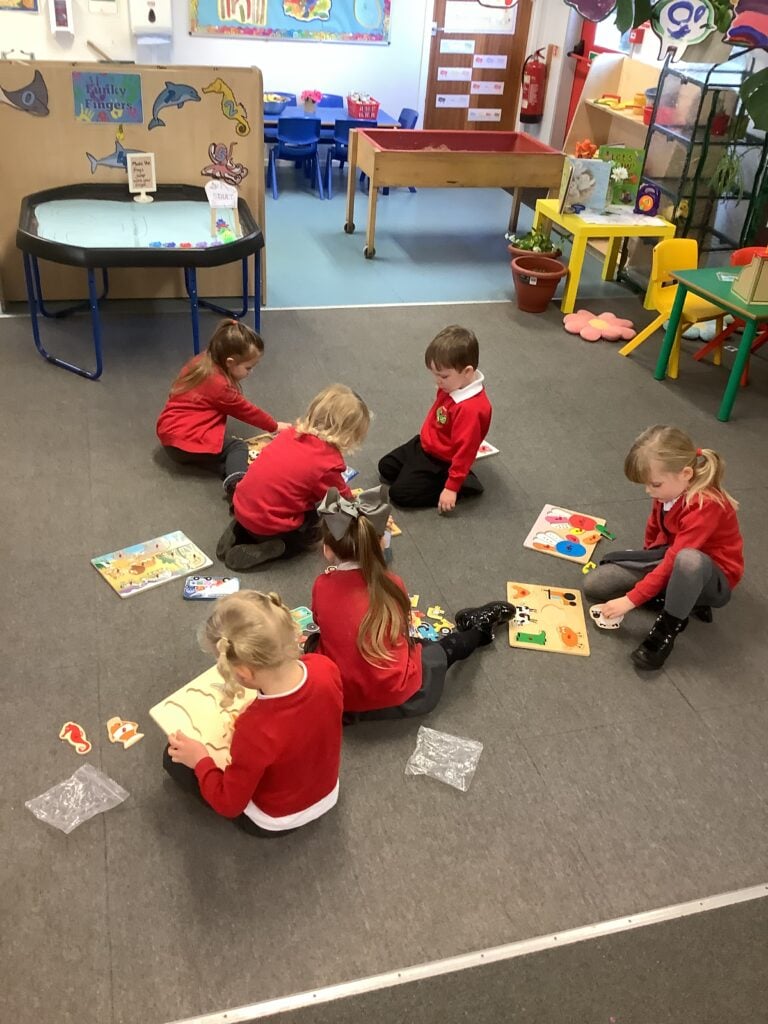
Completing a jigsaw.
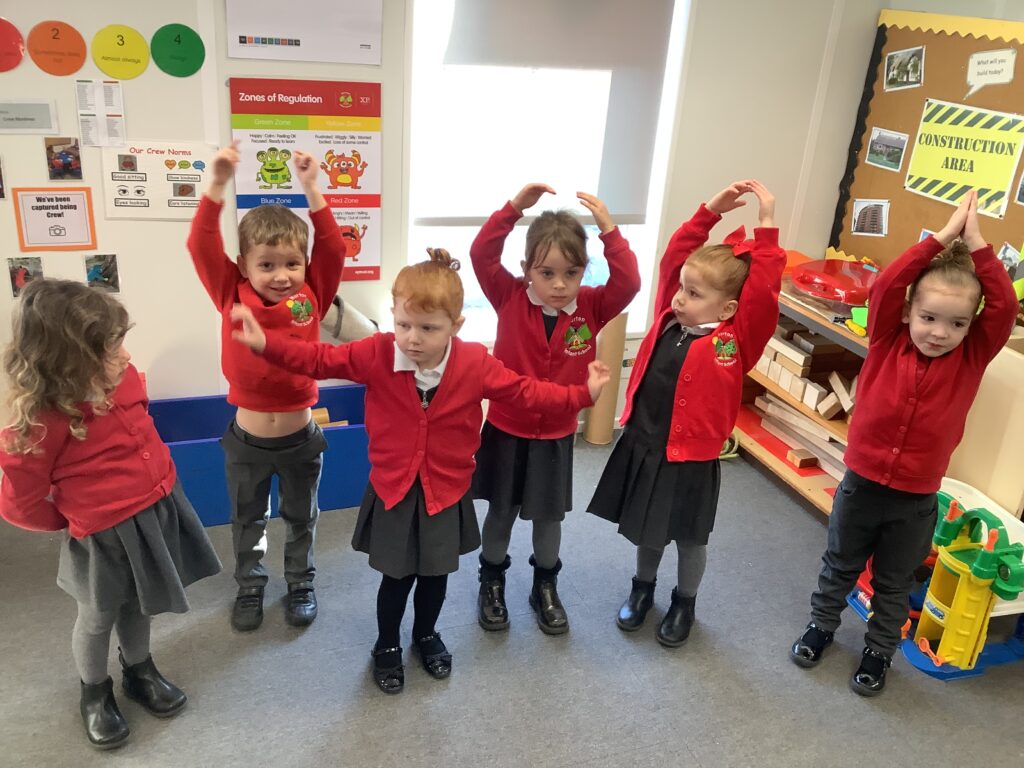
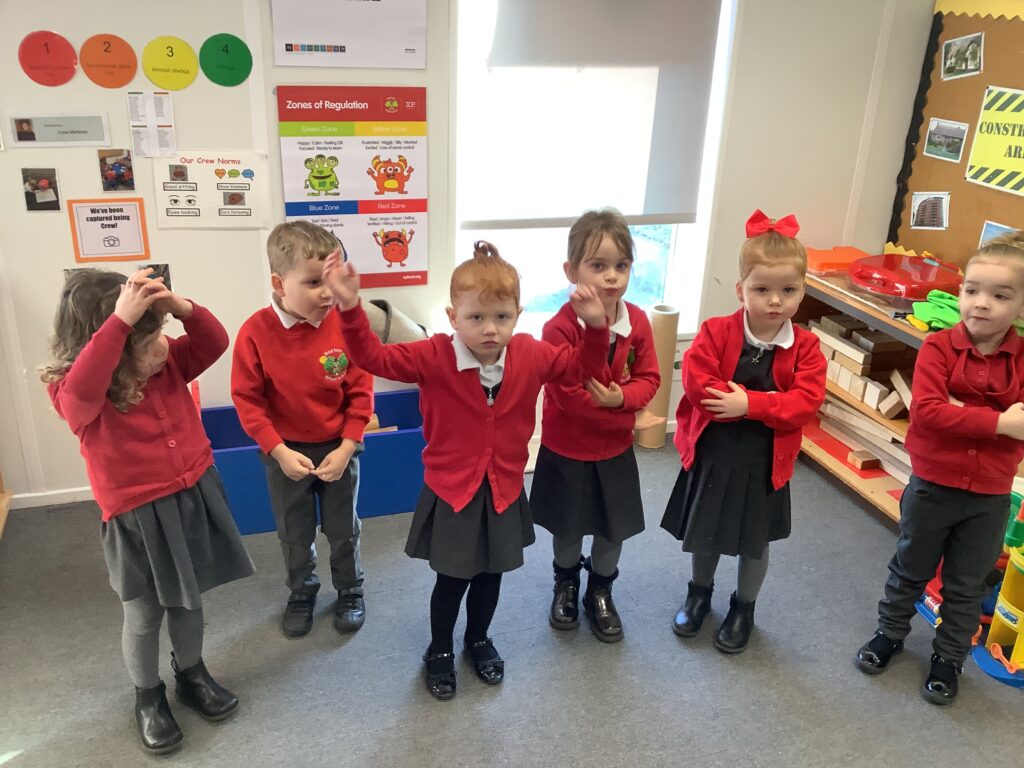

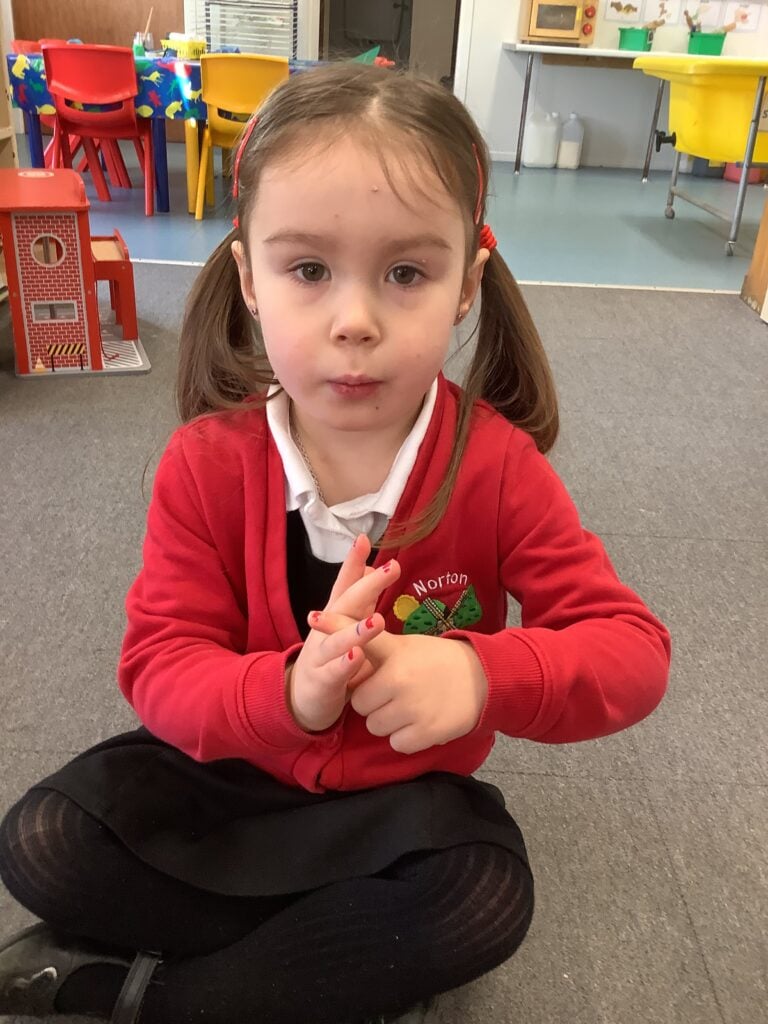
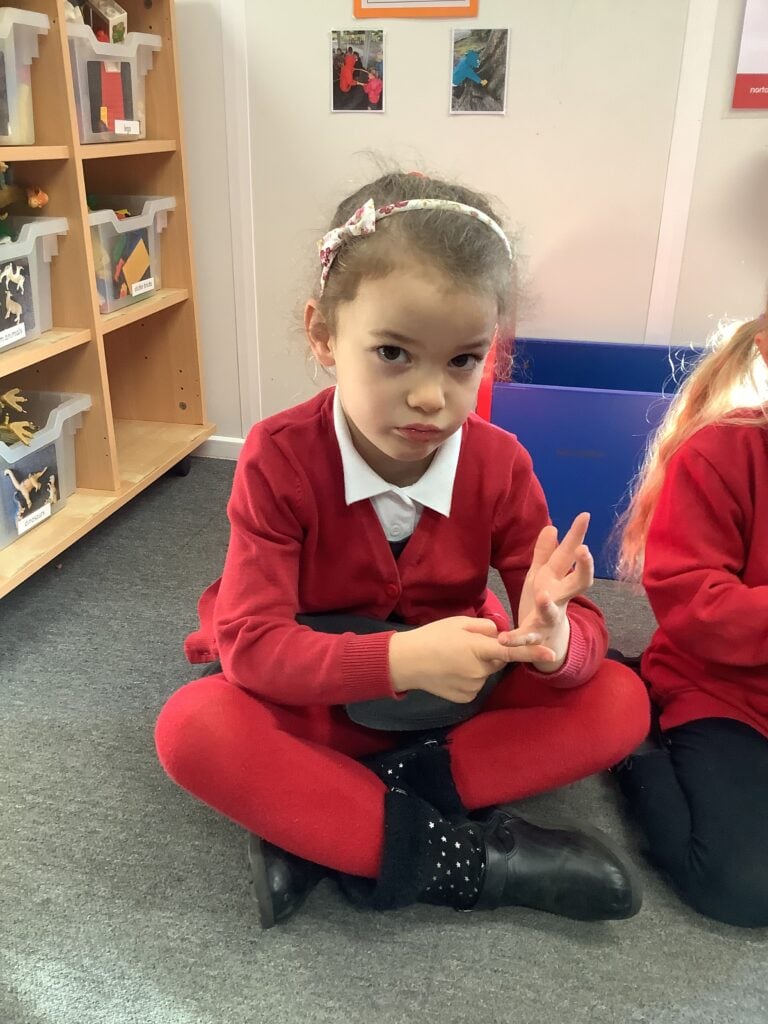
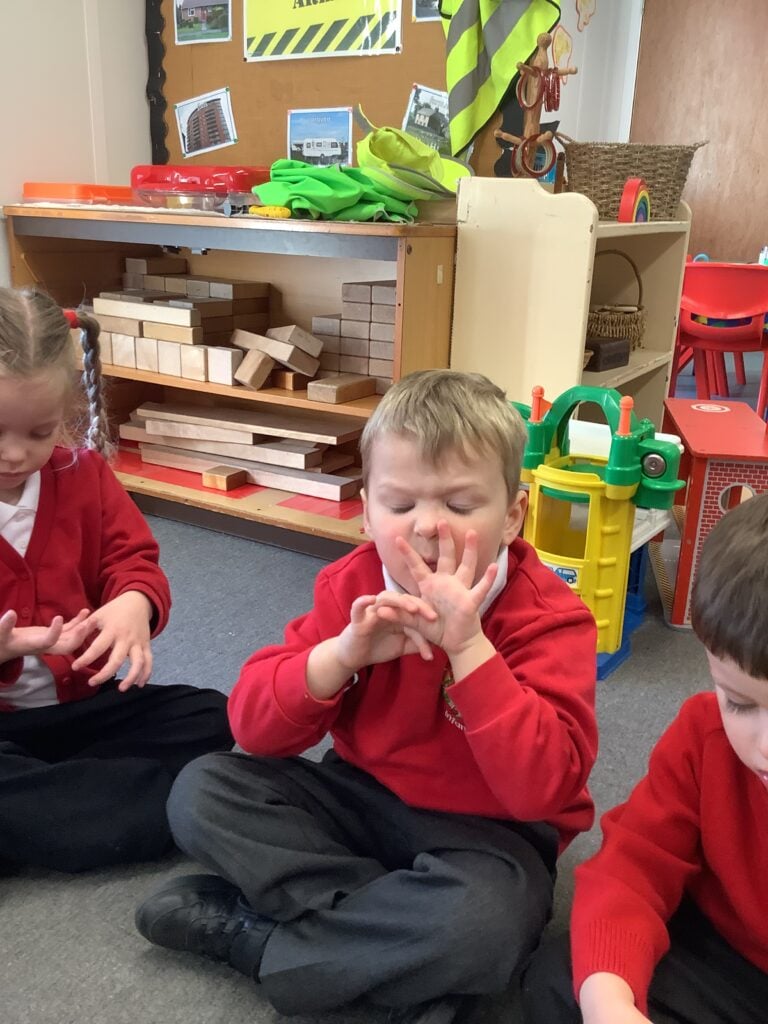
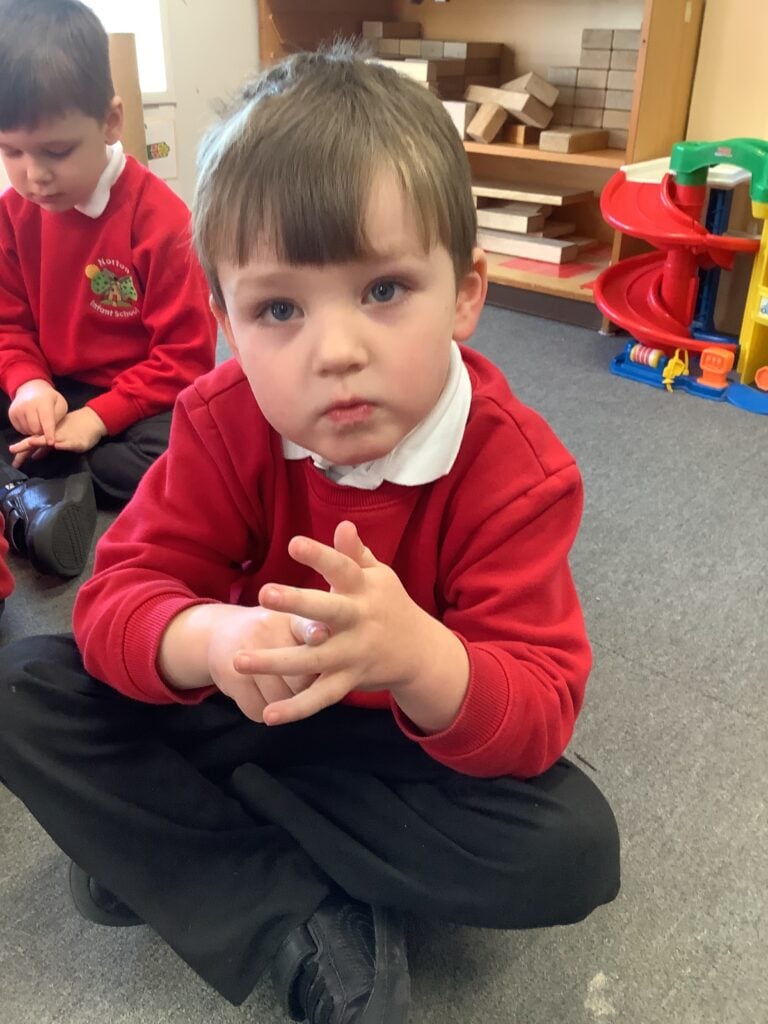
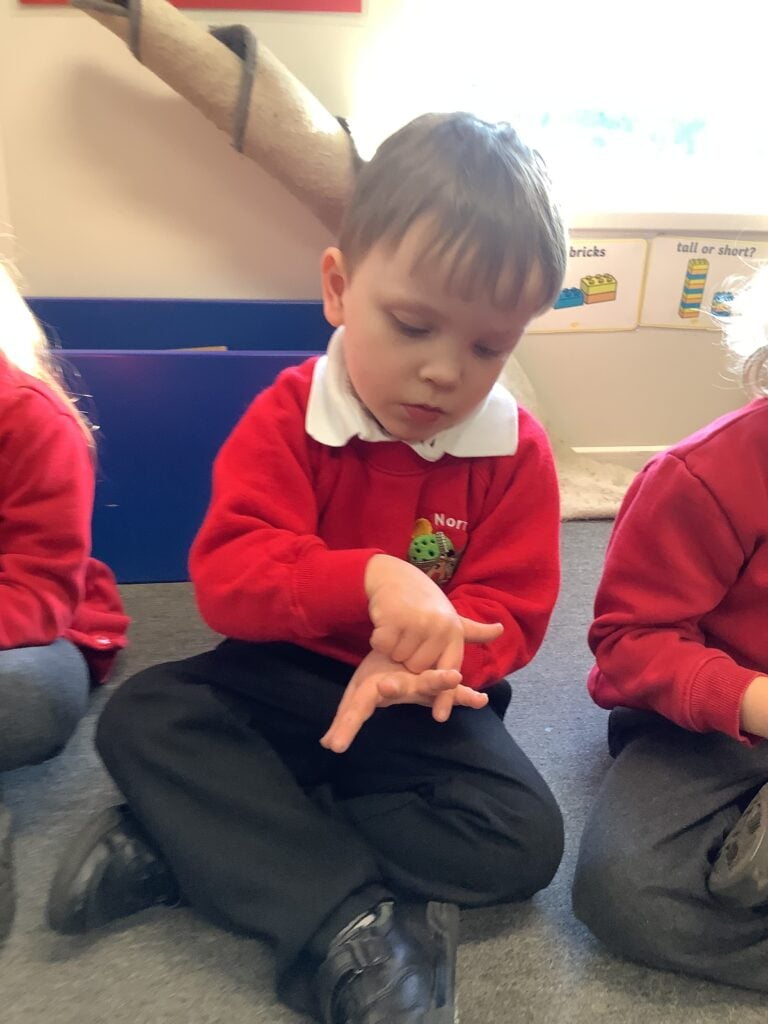
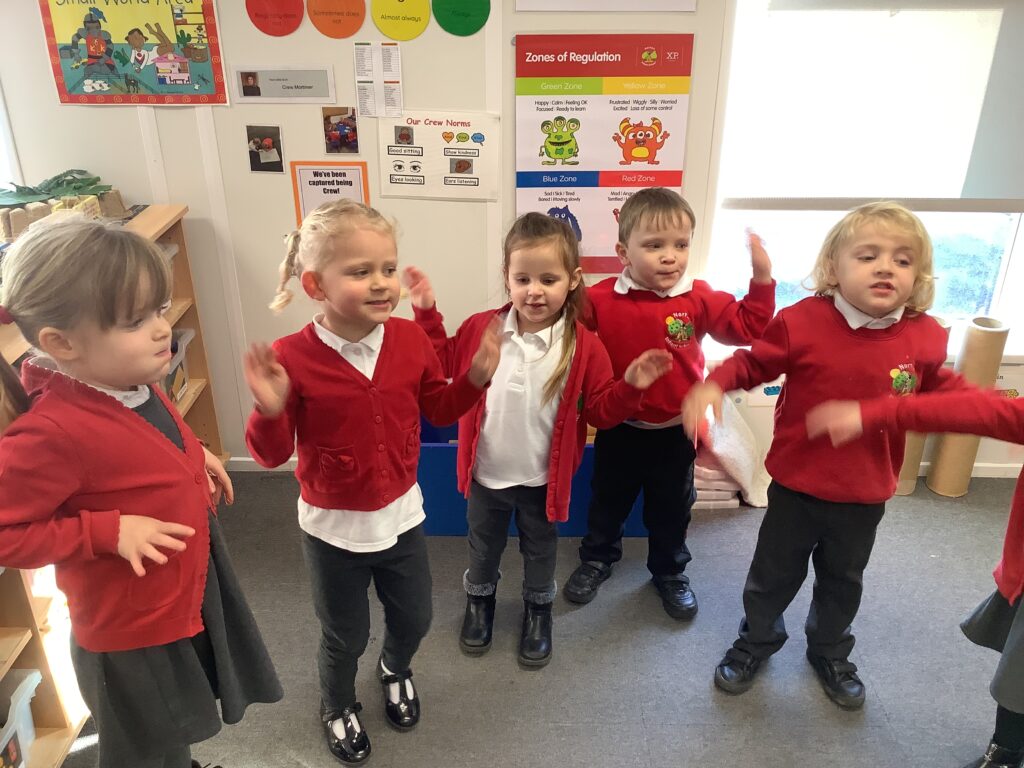
Guided breathing patterns including; Balloon breath, Bumblebee Breath, Snake breath and Finger breathing.
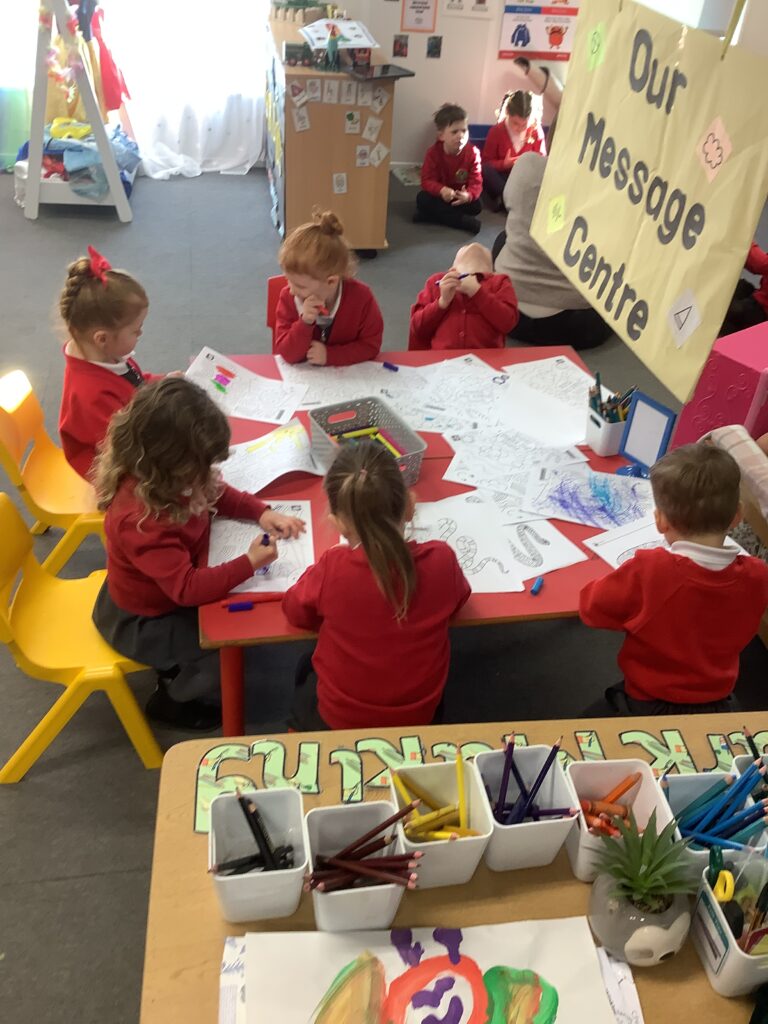
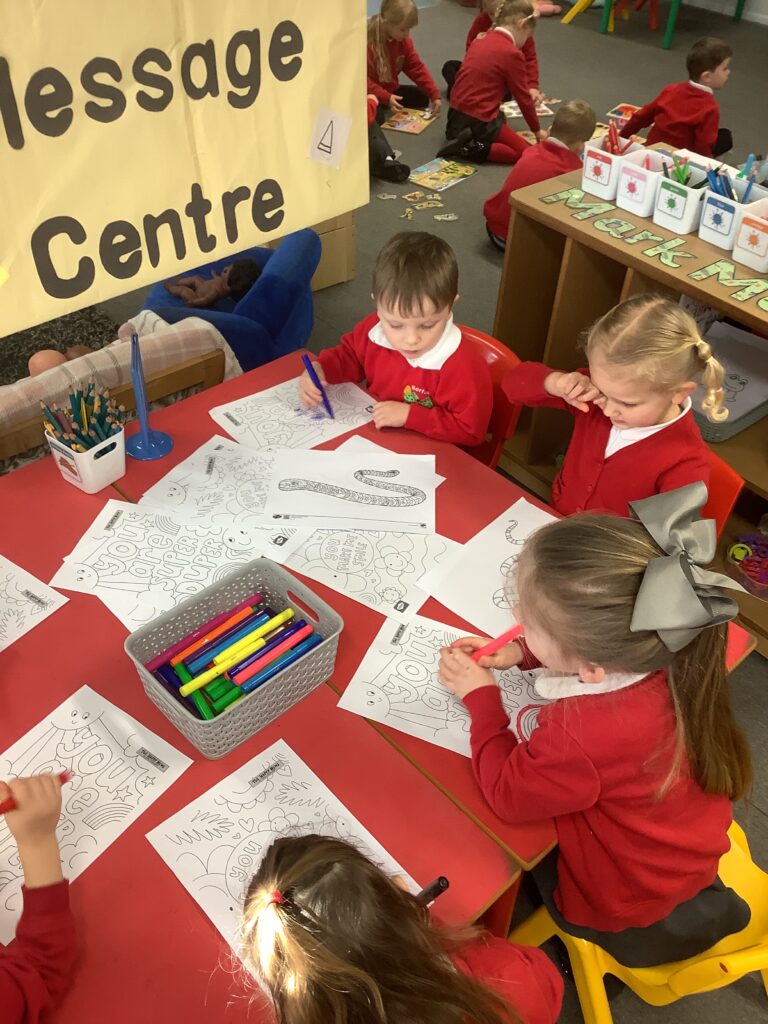
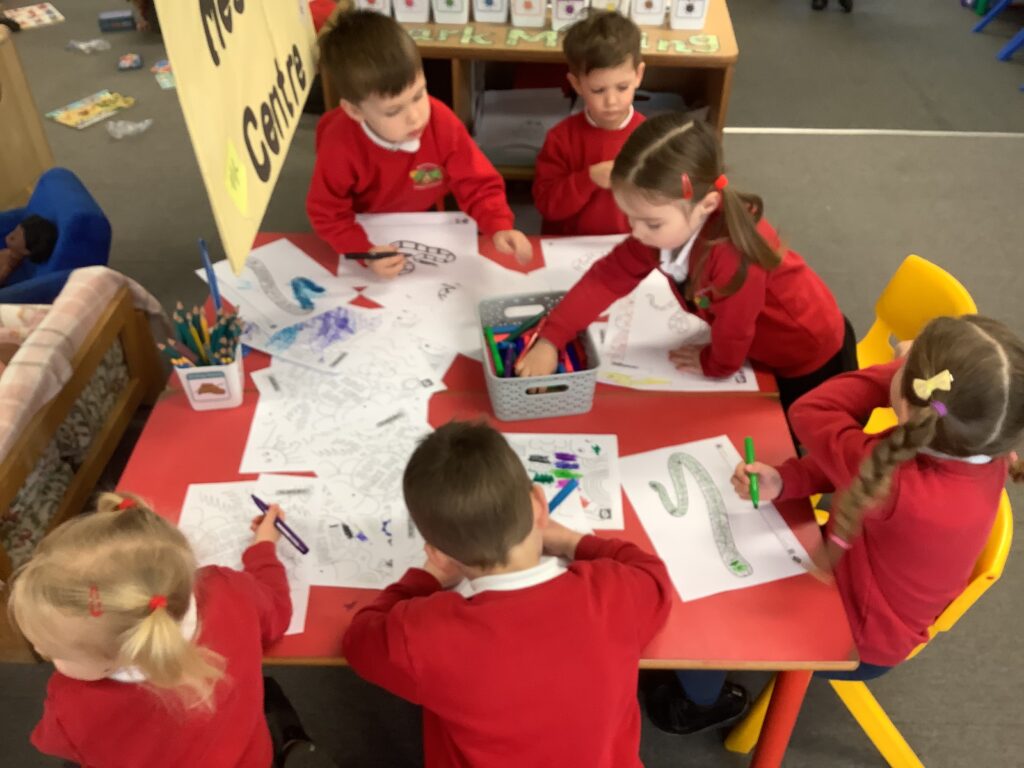
And mindful colouring.
At the end of the session we all checked back in to share how the children thought the characters on the feeling thermometer would feel now, if they had taken part in the activities we had? The children said “happy and calm”, “excited” or “relaxed”. The children then suggested which was their favourite activity – lots of fun and relaxing had by all. Great, powerful work Nursery!
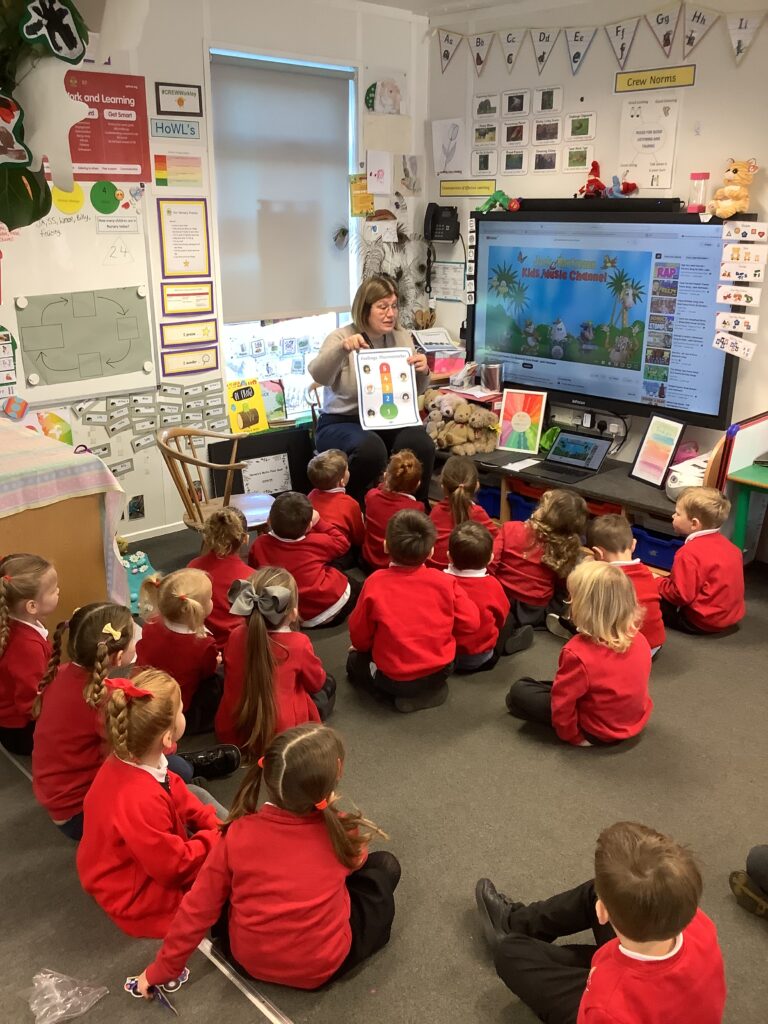
We have been learning about imperative verbs and time conjunctions this week to help us with our writing. We really have been leading our own learning by using the iPads to check our work before moving own.
Very impressive work class five – well done.
Mrs Parsons x
